

'Our



'Our

With over 280 dedicated staff throughout PNG, Solomon Islands, Fiji and Vanuatu, Daltron's staff are passionate about delivering customers the best technology and services. Our team leads the region with world-class certification for all leading ICT vendors. OtJr iDirect VSAT platform fs the world's leading IP-based satellite solution. We have the best in-country C-Band VSAT Hub (DESS - Daltron Earth Satellite Station) providing "91 single-hop communications, centralized hosting • and disaster recovery facilities.
We pride ourselves on being PNG based with a professional services team that can design, implement and support all your IT needs. We invest heavily in the development and accreditation of our engineers and technicians and with a robust ICT infrastructure, you can be assured that your business is in capable hands with Daltron.
ANZ is in 28 marketsacrossAsia Pacificand we're growing. That meanswe've now got more financial specialistswho shareyour regional interests and who take the time to fully understand your needs.They have the experience and the network to put you in touch with the right products, the right opportunities and the right people to help you reachyour goals. Because,in Asia Pacific,connections count.
For more information, pleasecontact
ANZ PapuaNew Guinea PO Box 1152,Port Moresby Harbor City, PoreporenaFreeway
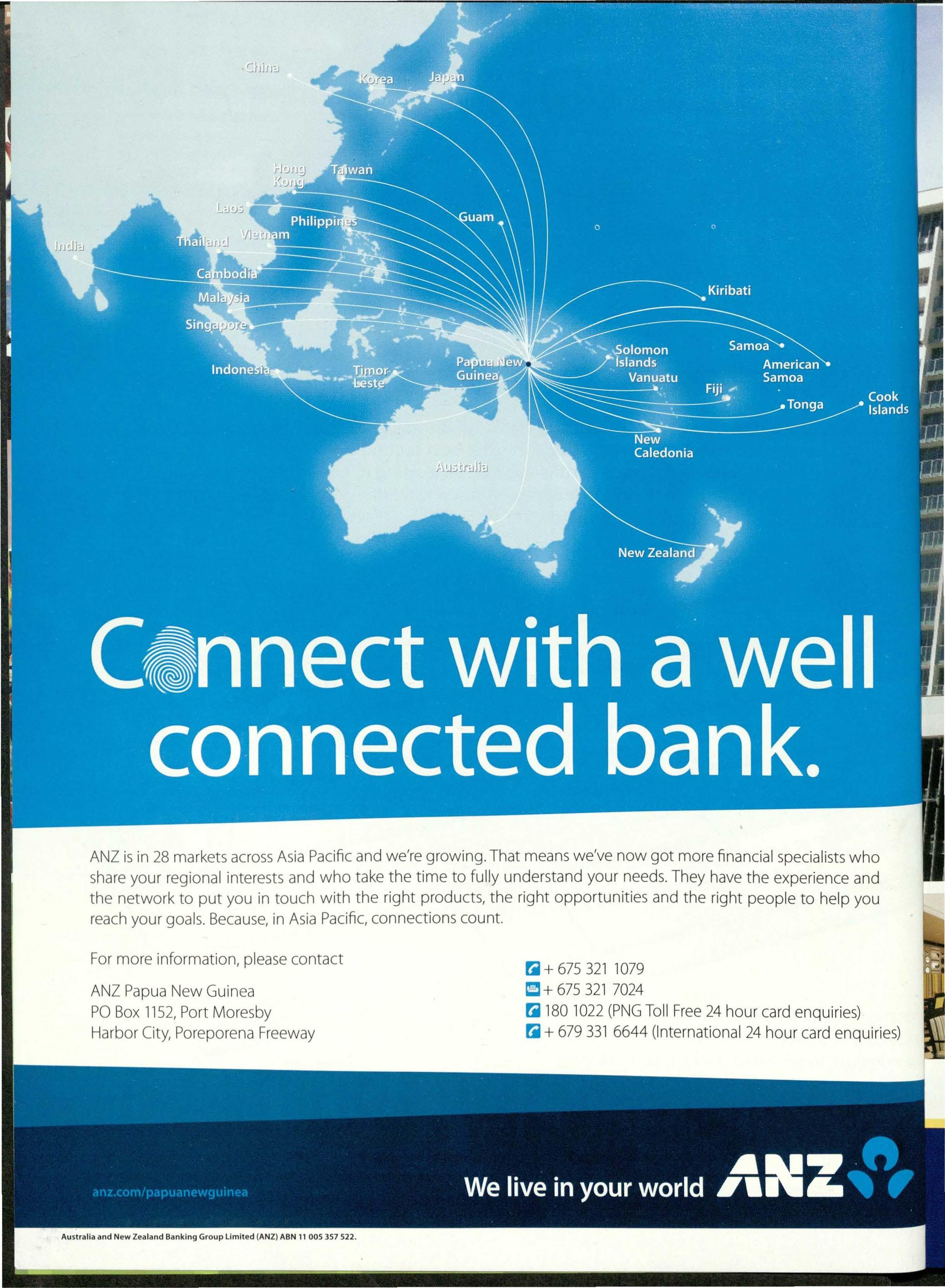
r.l + 675 321 1079
15?1 + 675 321 7024
r.l 180 1022(PNGToll Free24 hour card enquiries)
r.l + 679 3316644 (International24 hour card enquiries)
SteamshipsTrading Companyhas been conducting businessoperations acrossPapuaNew Guineafor almosta century.It is one ofthe nation'smajor employers,and is a significantcontributorto the nationaleconomy.
Steamshipshas long been aware of the need to protect the environment, and this principle underliesall of its activities. It is company policy that its businessesmeet or exceed all legal and regulatory requirementsfor environmentalbest practice.To ensurethis, Steamshipshas put in place formalsystemsto monitorimpactsonthe environment,andovertime as data is accumulatedthefindingswill be usedto designandimplementnew policies to help manageand reduceadverseeffectsand encouragesustainability.
TheCompanyis deeplyinvolvedin climatechangeandenvironmentalimpact monitoringprojectsin PNG,and in particularon the effects of deforestation on the absorptionof greenhousegases.Steamshipsis workingwith various NGO'sto further our understandingof long-termsustainability,and its effects on climateand land use.
In the longterm,such initiativesnot only makegoodbusinesssense,but will alsohelpto preserveand protectthe future ofthe greatnationof PapuaNew Guinea,on which we all depend.
The Company'snew GrandPapuaHotel in Port Moresby is a reflection of Steamships'part in the historyof the country,as the new hotelis built on the site of the famousold PapuaHotel,of gloriousmemory.
The Grand Papua sets a new industry benchmarkfor sustainable and efficientconstructionand operationin a luxuryenvironment.Its lightings,airconditioningand elevatorsare designedand sensorcontrolledto minimize energyuse,and reducethe carbonfootprintof the hotel.
Steamshipsis indeed proud to make this commitmentto the future of PapuaNew Guinea. ,
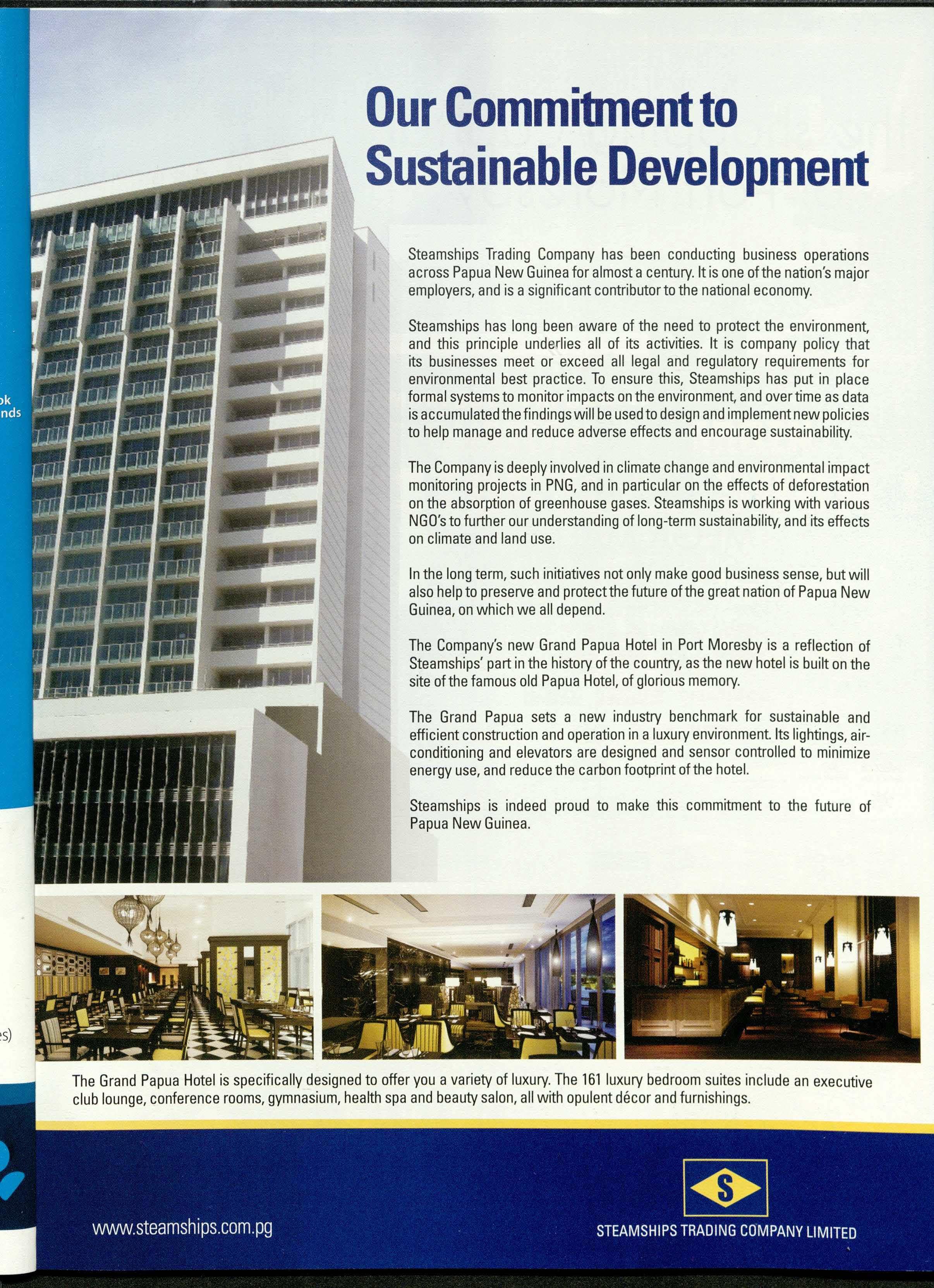
The GrandPapuaHotelis specificallydesignedto offer you a variety of luxury.The 161luxurybedroomsuitesincludean executive club lounge,conferencerooms,gymnasium,healthspa and beautysalon,all with opulentdecor andfurnishings.

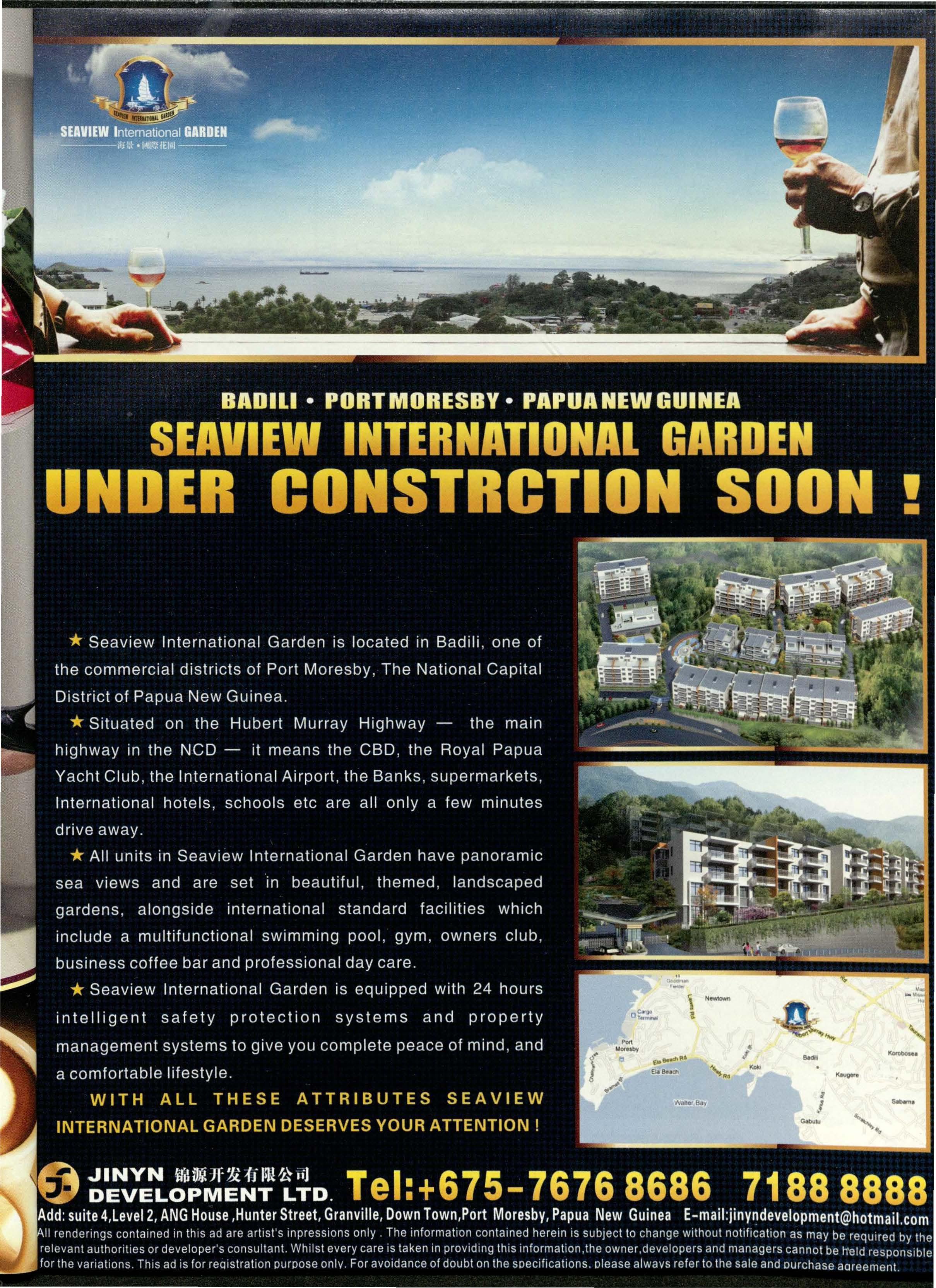
The milestone achievement for Air Niugini during July was the presentationof the dividend cheque of K6.45million to the Shareholderthrough the IPBC(Independent Public BusinessCorporation).This dividend is the largest paid by the airline in its 39 yearsof operation.
At the recent 2012 IATAAnnual GeneralMeeting, the Director Generalinformed the participants that in 2011the aviation industry earned only 0.5%net profit on sales.So it is very pleasingto saythat as a result of Air Niugini performing well above this global performance,the airline was able to return a dividend to the Shareholder.
Also during July,we had the arrival of our first B737-700aircraft,followed with the inaugural serviceto Cebu in the Philippines,and the opening of the Air Niugini SalesOffice located at the Airport Plaza.
Forthose who have travelled on the B737-700since its arrival,you would have noticed the aircraft'sfuselageis painted with the map of the famous KokodaTrack.With the approval of the KokodaLocal LevelGovernment,Air Niugini took this initiative to commemorate the 70th anniversaryof the KokodaCampaign as a significant event in the country's history.
I am surethis aircraft will create a tremendous awarenessand promotion of the KokodaTrackand PapuaNew Guineawhen it flies to Sydney,Brisbane,as well asto our other international destinations.
The inaugural flight to Cebu was well receivedby national and provincial government officials,industry partners and corporate companies that conduct businessin PapuaNew Guinea.With the Manila flights reaching full capacity,the introduction of the serviceto Cebu will provide Filipinosliving in Southern Philippinesa direct flight from Cebu to Port Moresby.The Cebu schedule is also timed to provide connecting B737-700afternoon flights to Brisbaneon Wednesdays and Fridays,departing at 1.30pm and also to Sydneyat 2.00pm on Fridays.
Other schedulesthat have been revisedinclude the direct Sydney-PortMoresbyserviceon Sunday,a direct return flight on Monday and the Port Moresby-BrisbaneFl 00 serviceon Monday afternoon has been replacedwith a B767operation which departs at 1.30pm returning the same day at 8.45pm.Forour valued customers looking for a brief R& R in Brisbane,flying out on our Fridayafternoon serviceand returning Monday evening, will give you a nice break in Brisbane.
As the country celebratesits 37 yearsof independence on September 16,there will be many events taking place throughout our cities and towns. The Hiri Moale Festivalin Port Moresbywill be staged simultaneouslywith the Independence celebrationsso visitorsto our shoresat the time can enjoy the colourful cultural displaysof the Motuan people.
During your flight with us today, browse through our PARADISE World Boutique and find a specialgift for yourself or loved one from the wide range of inflight duty free products. PARADISE magazinewill provide good reading on our many domestic and international destinations.
For online bookings and information on Air Niugini, pleasevisit www.airniugini.com.pg
Enjoyyour flight.
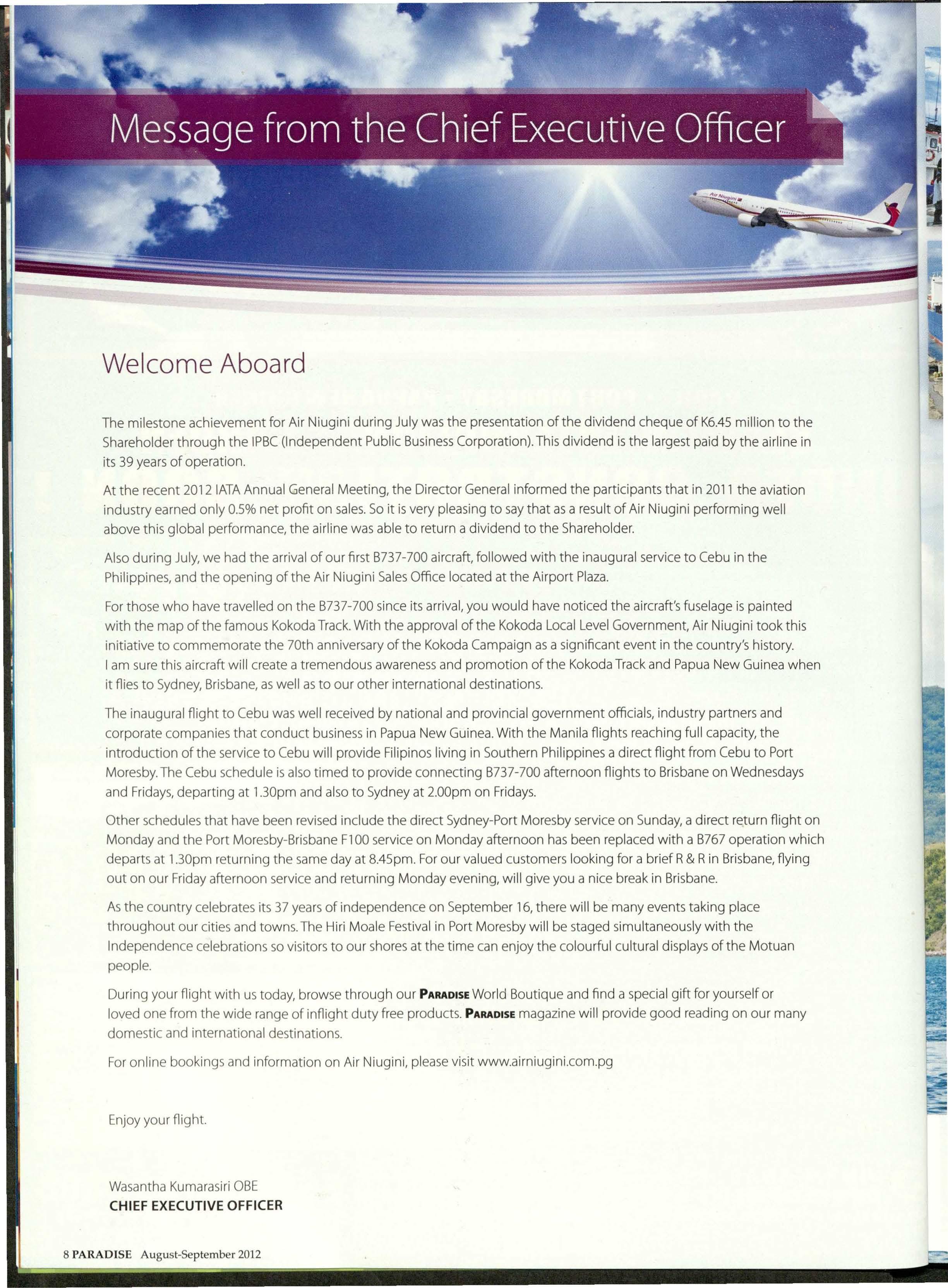
WasanthaKumarasiriQBE CHIEF EXECUTIVE OFFICER
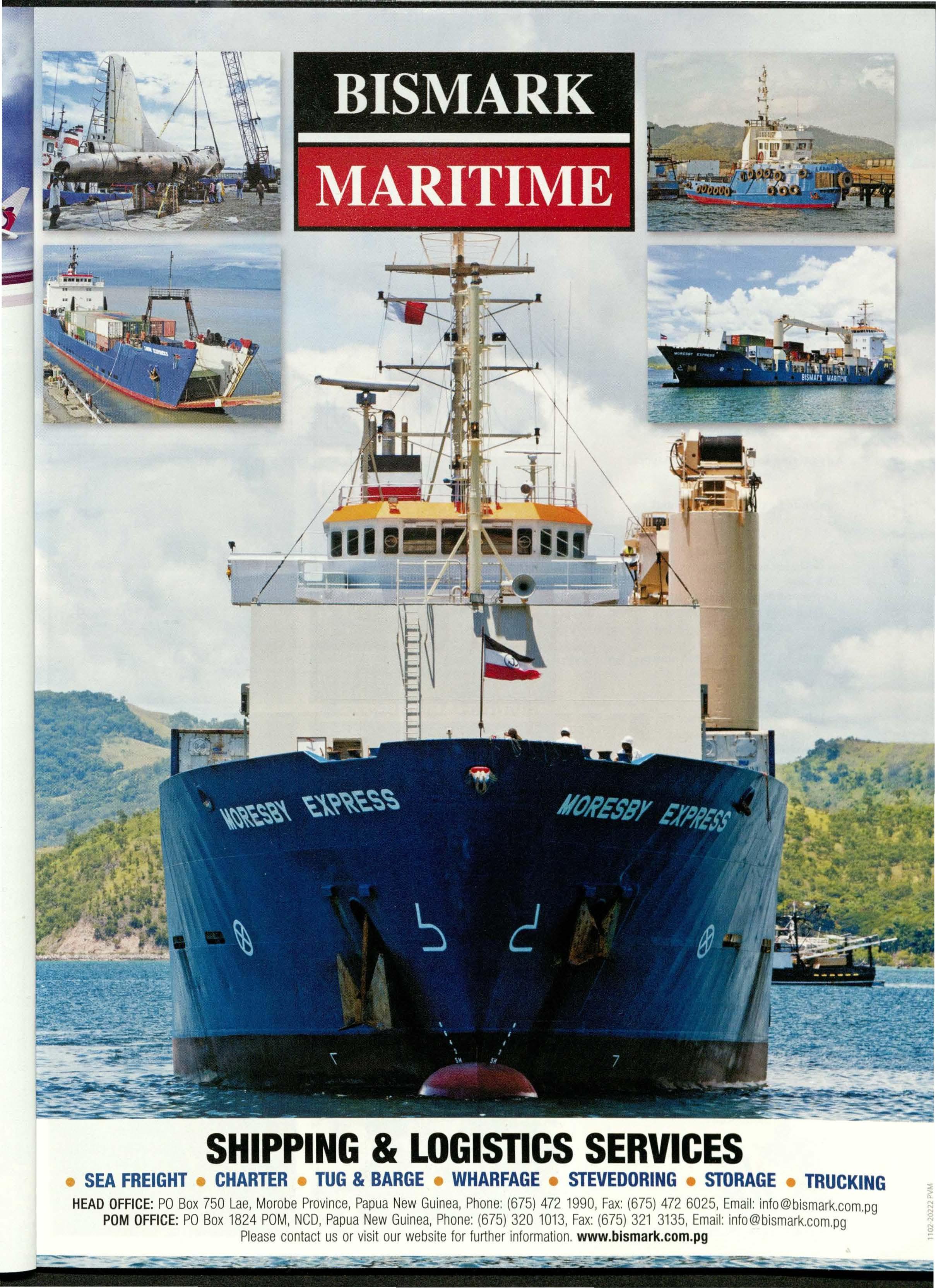
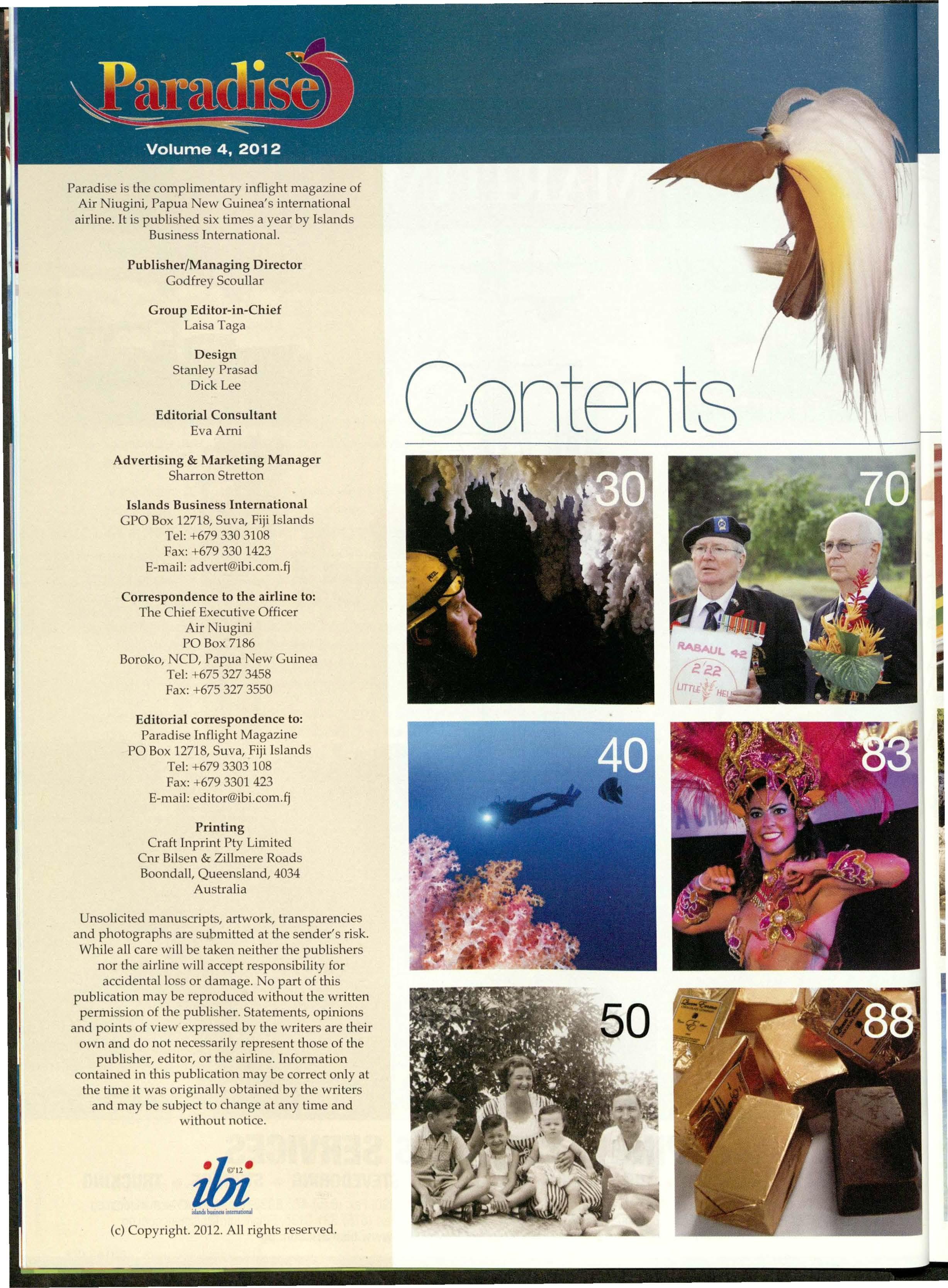
Paradise is the complimentary inflight magazine of Air Niugini, Papua New Guinea's international airline. It is published six times a year by Islands Business International.
Publisher/Managing Director
Godfrey Scoullar
Group Editor-in-Chief Laisa Taga
Design Stanley Prasad Dick Lee
Editorial Consultant Eva Arni
Advertising & Marketing Manager
Sharron Stretton
Islands Business International
GPO Box 12718, Suva, Fiji Islands
Tel: +679 330 3108
Fax: +679 330 1423
E-mail: advert@ibi.com.fj
Correspondence to the airline to:
The Chief Executive Officer
AirNiugini PO Box 7186
Boroko, NCD, Papua New Guinea
Tel: +675 327 3458
Fax: +675 327 3550
Editorial correspondence to:
Paradise Inflight Magazine
PO Box 12718, Suva, Fiji Islands
Tel: +679 3303 108
Fax: +679 3301 423
E-mail: editor@ibi.com.fj
Printing
Craft Inprint Pty Limited
Cru Bilsen & Zill mere Roads Boondall, Queensland, 4034 Australia
Unsolicited manuscripts, artwork, transparencies and photographs are submitted at the sender's risk. While all care will be taken neither the publishers nor the airline will accept responsibility for accidental loss or damage. No part of this publication may be reproduced without the written permission of the publisher. Statements, opinions and points of view expressed by the writers are their own and do not necessarily represent those of the publisher, editor, or the airline. Information contained in this publication may be correct only at the time it was originally obtained by the writers and may be subject to change at any time and without notice.
The Caves of the Kosua Mapping unexplored caves
Corals Against all Odds
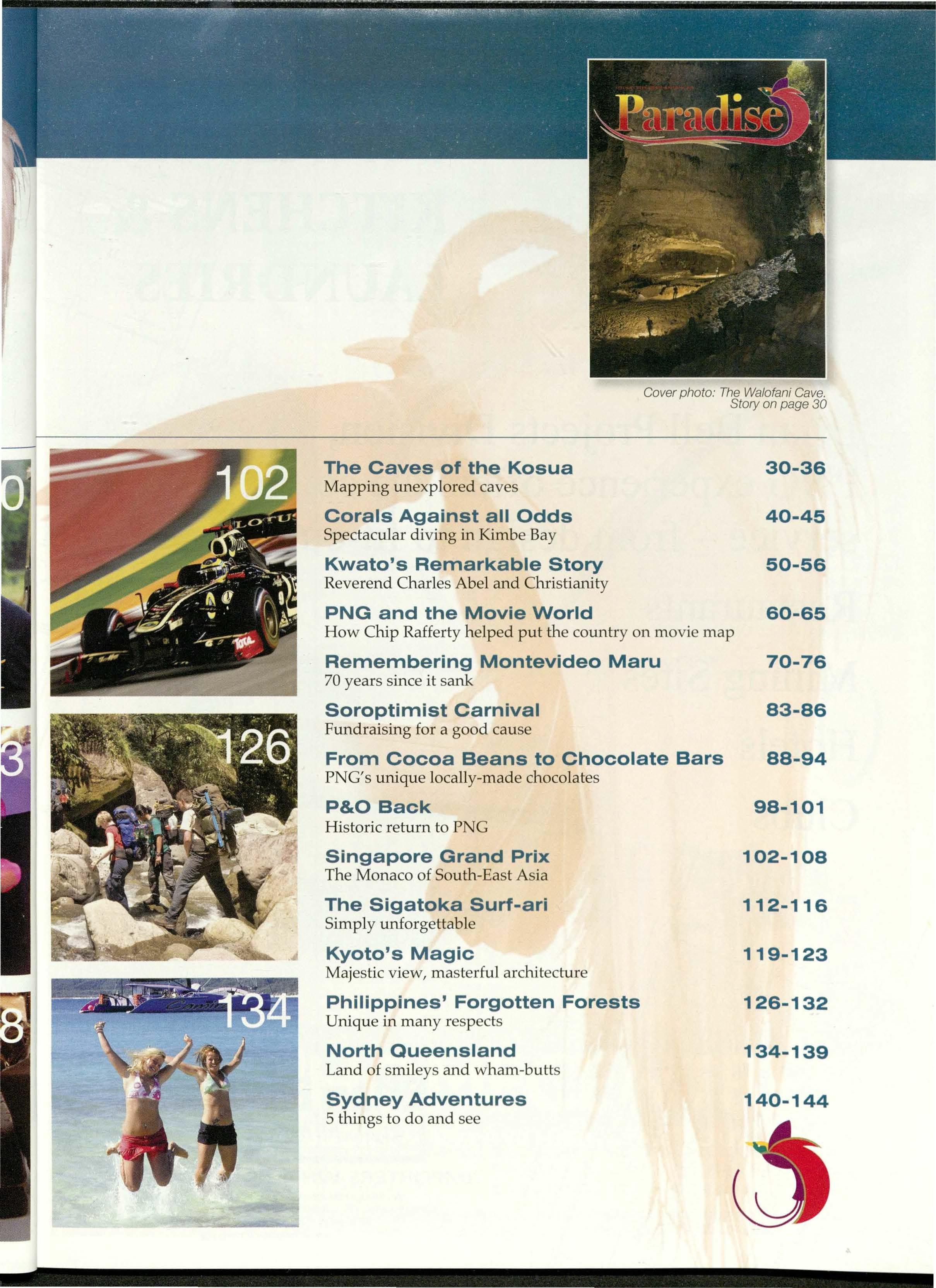
Remembering
Singapore Grand Prix
The Monaco of South-East Asia
The Sigatoka Surf-ari
Simply unforgettable
Kyoto's Magic Majestic view, masterful architecture
Philippines' Forgotten Forests
Unique in many respects
North Queensland
Land of smileys and wham-butts
Sydney Adventures 5 things to do and see

Brian Bell Projects Division, 50 year
PNG experience offers the complete service - from design to fit-out for Restaurants
Mining Sites
Hotels
Clubs

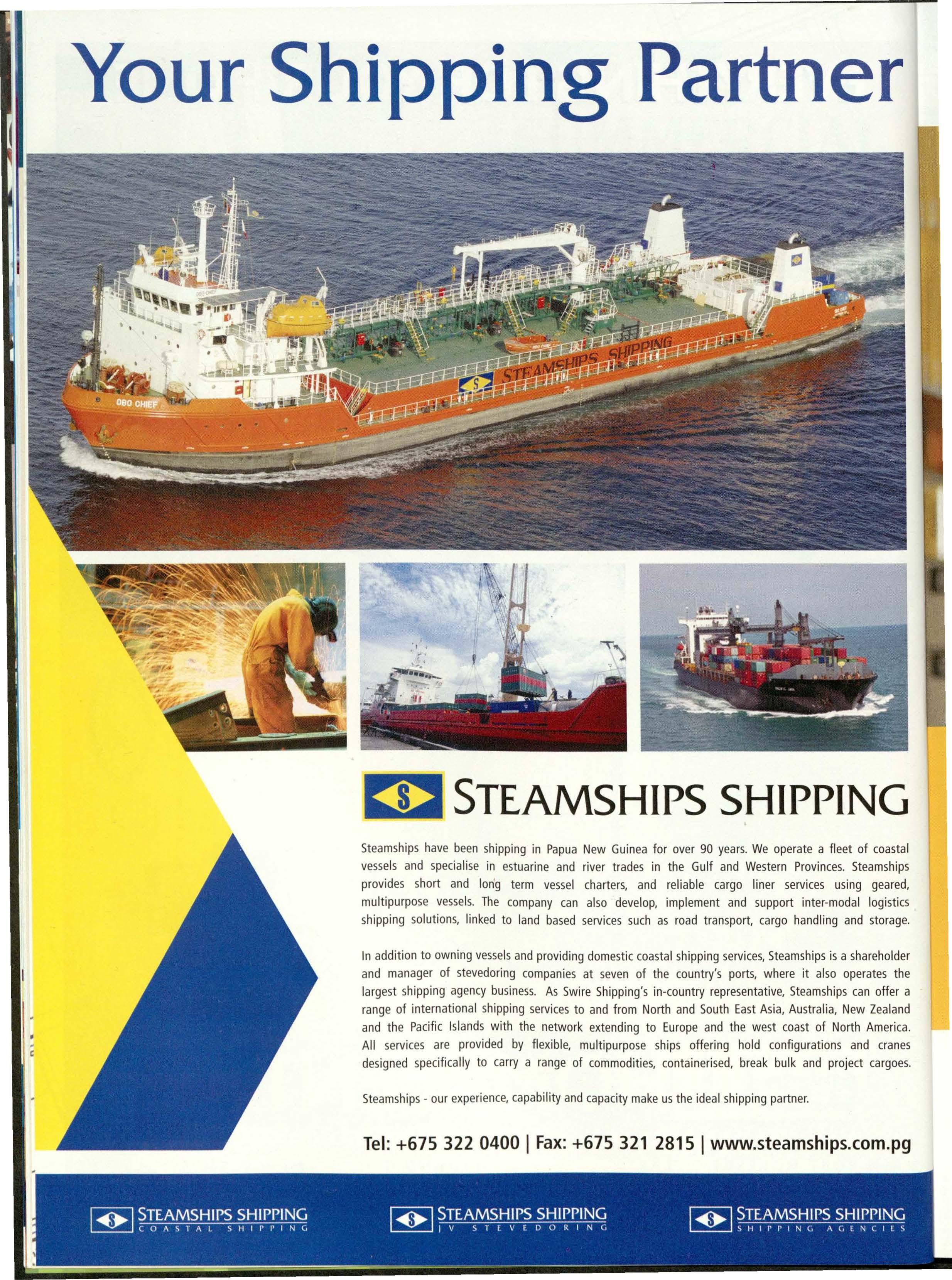
Steamshipshave been shipping in PapuaNew Guinea for over 90 years.We operate a fleet of coastal vessels and specialise in estuarine and river trades in the Gulf and Western Provinces.Steamships provides short and lon'g term vessel charters, and reliable cargo liner services using geared, multipurpose vessels.The company can also develop, implement and support inter-modal logistics shipping solutions, linked to land based servicessuch as road transport, cargo handling and storage.
In addition to owning vesselsand providing domesticcoastalshippingservices,Steamshipsis a shareholder and manager of stevedoring companiesat seven of the country's ports, where it also operates the largest shipping agency business. As Swire Shipping'sin-country representative,Steamshipscan offer a range of international shipping servicesto and from North and South EastAsia, Australia, New Zealand and the Pacific Islands with the network extending to Europe and the west coast of North America. All services are provided by flexible, multipurpose ships offering hold configurations and cranes designed specifically to carry a range of commodities,containerised,break bulk and project cargoes.
Steamships - our experience,capabilityand capacitymakeus the ideal shipping partner.
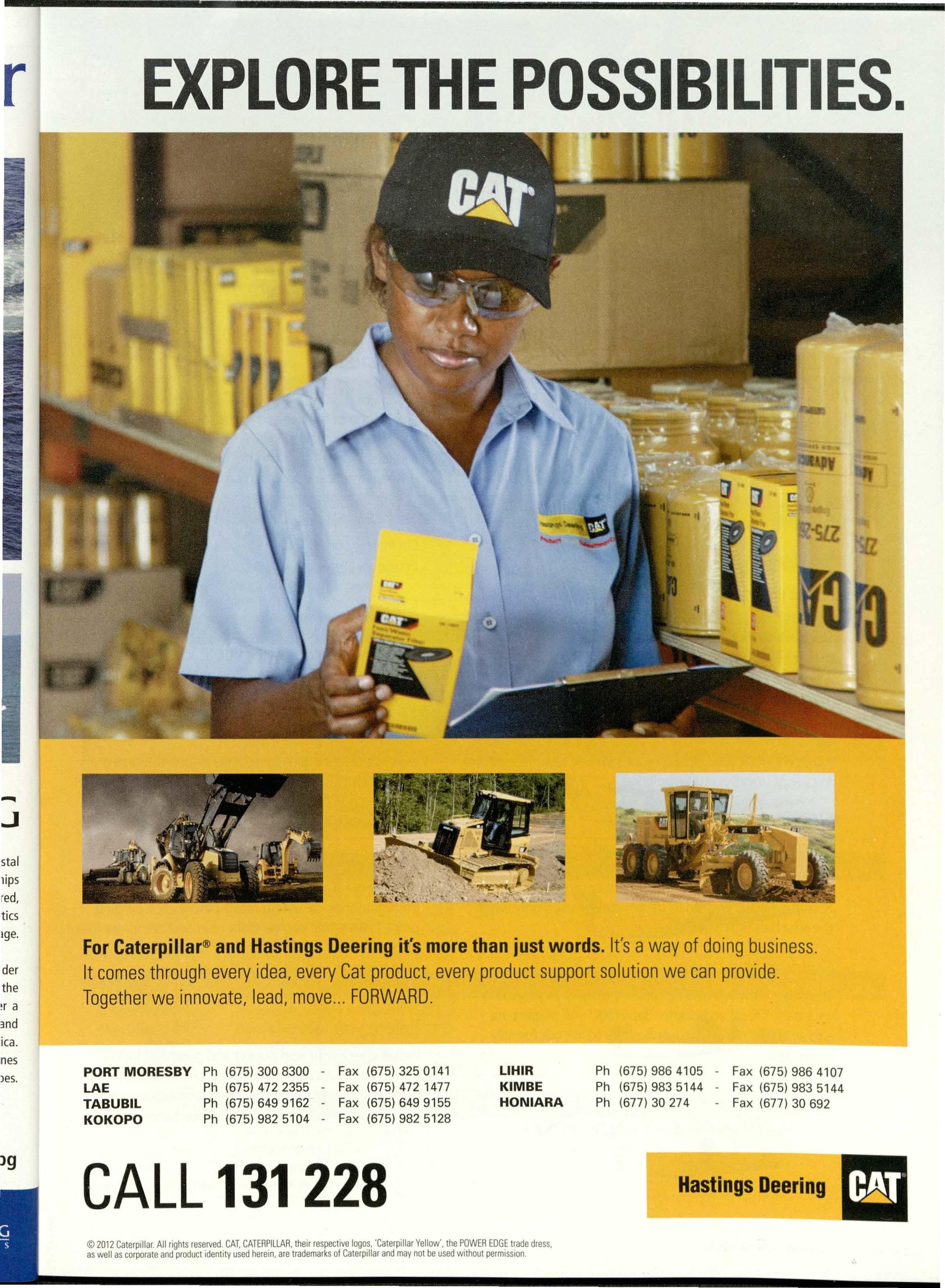
If there is anything our cabin crew can assist you with during your flight, please do not hesitate to ask them.
Pleaseensure that your carry on luggage is placed in the overhead locker or under the seat in front of you.
Ensure that your seat is in the upright position during takeoff and landing. Folding tables must be returned to their original position in the seat back or the armrest
Your seat belt must be securely fastened during take off and landing or whenever the seat belt sign is on. When the seat belt sign is off you may move about the cabin as necessary. However while seated, keep your seat belt fastened securely in case of unexpected turbulence.
Cellular telephones, TV receivers or radio controlled devices are not to be used at any time on board an aircraft Electronic devices such as portable computers, compact discs or ' cassette players and video games can be used only when the seat belt sign is switched off
The cabin crew will also be pleased to assist in preparing your baby's food and bottle. Baby food and diapers are also available. Pleasedo not hesitate to ask our friendly cabin crew.
Smoking is not permitted on any Air Niugini flight
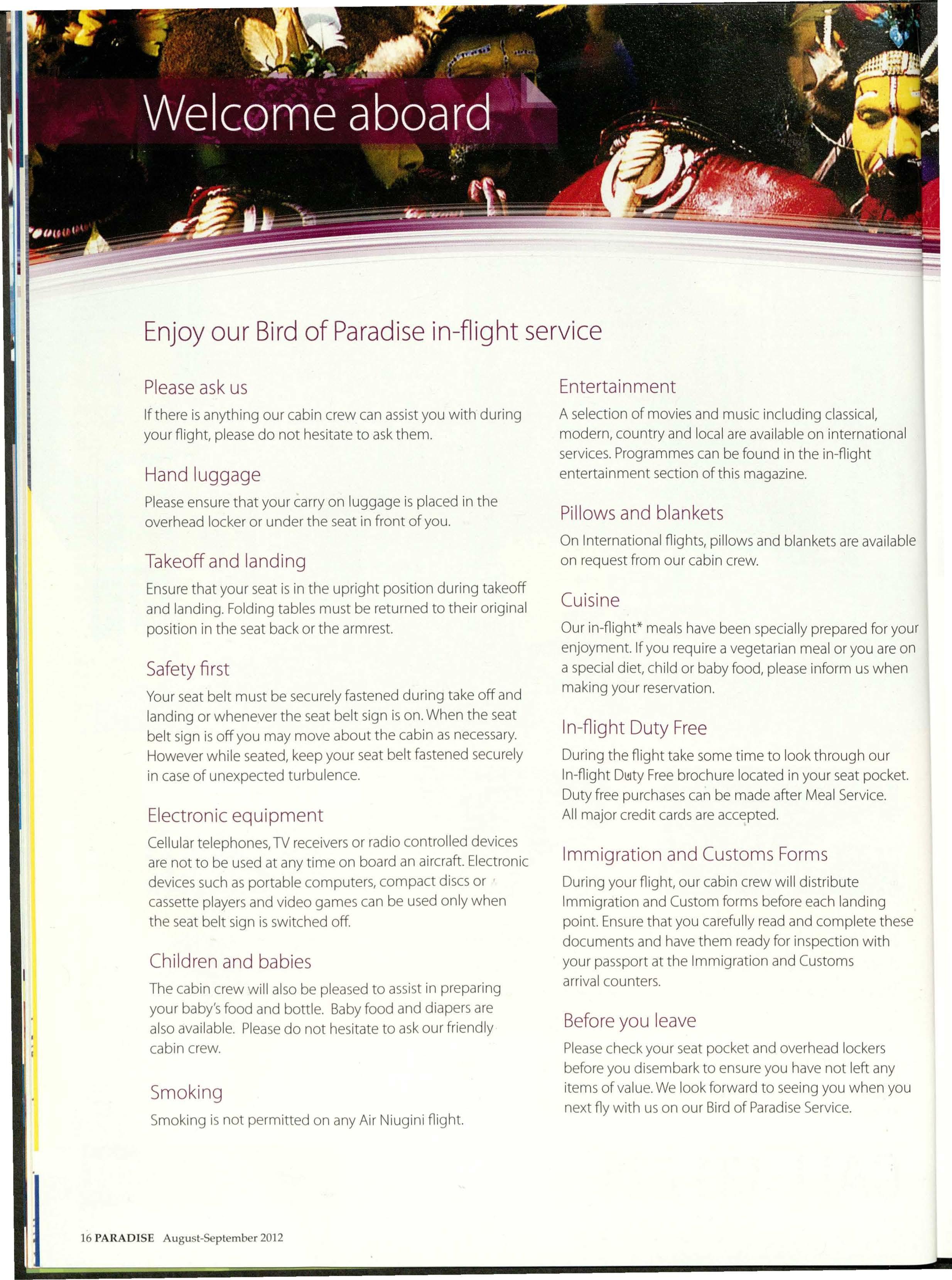
A selection of movies and music including classical, modern, country and local are available on international services. Programmes can be found in the in-flight entertainment section of this magazine.
On International flights, pillows and blankets are available on request from our cabin crew.
Our in-flight* meals have been specially prepared for your enjoyment If you require a vegetarian meal or you are on a special diet, child or baby food, please inform us when making your reservation.
During the flight take some time to look through our In-flight Dwty Free brochure located in your seat pocket Duty free purchases can be made after Meal Service. All major credit cards are accepted.
During your flight, our cabin crew will distribute Immigration and Custom forms before each landing point Ensure that you carefully read and complete these documents and have them ready for inspection with your passport at the Immigration and Customs arrival counters.
Pleasecheck your seat pocket and overhead lockers before you disembark to ensure you have not left any items of value. We look forward to seeing you when you next fly with us on our Bird of Paradise Service.
Lengtt,. 59.94m
Wing span: 47.57m
Range: 8100km
Cruising speed: 857kph

Power plant: 2 x PW4000
Normal altitude: I 1000-12000m
Standard seating capacity: 214
Number of aircraft in fleet: 3
Length: 33.6m
Wing span: 34.3m
Range: 6370km
Cruising speed: 830kph
Power plant: 2 xCFM56-7822
Normal altitude: 11300m
Standard seating capacity: 122
Number of aircraft in fleet: I
Length: 35.528m
Wing span: 28.076m
Range: 3000km
Cruising speed: 780kph
Power plant: 2 x RollsRoyceTay650
Normal altitude: I 1000m
Standard seating capacity: 98
Number of aircraft in fleet: 6
Length: 32.Bm
Wing span: 28.4m
Range: 3000km
Cruising speed: 670kph
Bombardier
Power plant: 2 x Pratt& WhitneyPW/S0A
Normal altitude: 7500m
Standard seating capacity: 74
Number of aircraft in fleet: 3
Length: 25.7m
Wing span: 24.4m
Range: 1700km
Cruising speed: 510kph
Length: 22.25m
Wing span: 25.89m
Range: 1800km
Cruising speed: 550kph
Power plant: 2 x Pratt& WhitneyPW123E
Normal altitude: 7500m
Standard seating capacity: 50
Number of aircraft in fleet: 3
Power plant: 2 x Pratt& WhitneyPWI230
Normal altitude: 7600m
Standard seating capacity: 36
Number of aircraft in fleet: 4
DHC-8-100 Bombardier
Length: 22.25m Power plant 2 x Pratt& WhitneyPW/21
Wing span: 25.89m Normal altitude: 7600m
Range: 1800km Standard seating capacity: 36
Cruising speed: 500kph Number of aircraft in fleet: 2
Theseexercisesare designed to encourage a safe way to enjoy movement and stretch certain muscle groups that can become stiff as a result of long periods of sitting.They may be effective in increasingthe body's circulation and massagingthe muscles. We recommend you do these exercisesfor three or
four minutes every hour and occasionallyget out of your seatand walk down the aislesif conditions allow. Eachexerciseshould be done with minimal disturbanceto other passengers.None of the following should be performed if they cause pain or cannot be done with ease.

Lift feet off the floor: Drawa circlewith toes, simultaneouslymoving one foot clockwise and the other foot counterclockwise.
Reversecircles. Do eachdirection for 15seconds. Repeatif desired.
Lift leg with knee Hunchshoulders bent while contracting forward,then upward, your thigh muscle. then backward, Alternatelegs. then downward Repeat20-30times usinga gentle for eachleg. circularmotion.
Startwith armsheld Bendforwardslightly. With both feet on high at 90"angle- Clasphandsaround the floor and stomach elbows down, hands left kneeand hug ,t held in slowly,bend out in front. Raise to your chest.Hold forwardto walkyour handsup to chest stretchfor 15seconds. handsdown the front and backdown Keepinghandsaround of your legstowards alternatingarms. knee,slowlylet it your ankles.Hold Do theseexercisesin down. Alternatelegs. stretchfor 15seconds 30 secondintervals. Repeatl 0 times. and slowlysit backup.
Raiseboth arms straightup and over your head. With one hand grasp the wrist of the opposite hand and gently pull to one side. Hold stretch for 15seconds. Repeatother side.
Reachright hand With shoulders over left shoulder. relaxed,drop ear to Placeleft hand behind shoulderand gently right elbow and gently roll neckforwardand presselbow towards to the other side, shoulder.Hold stretch holding eachposition for 15seconds. about 5 seconds. Repeatother side. Repeat5 times.
Footmotion is in 2. Putboth feet flat 3. Lift heelshigh, threestages. on the floor. keepingballsof feet 1. Startwith both heels on floor.Continue on the floor and point thesethree stageswith feet upwardsashigh as continuousmotion in you can. 30 secondintervals.
www.airniugini.corn.pg

Air Niugini has invested in state of the art information technology to enhance customer relationships through its innovative Destinations Loyalty Program.
Air Niugini's Destinations Loyalty Program is powered by Mercator, the IT solutions arm of the highly successful Emirates Airlines. While new to Papua New Guinea, the Loyalty Program is in fact built on an engine that has 40 person years of investment and over 10 years of loyalty program experience.
There is an additional 150 person years of investment over an 8 year period of development.
The system has been implemented by airlines all over the world and is available at more than 90 global offices with over 2,000 on-line users, and a support team of 50 highly skilled loyalty systems business and technical professionals.
Now Destinations members can earn more points when they make valid transactions with Destinations Loyalty Program partners.
At Air Niuginiwe careabout your comfortand safety. We haveincludedthe followinginformationaboutyour health in-flightthat we hope you will find helpfuland useful.
When you are f1ying you can be seated and be inactive for long periods of time. The environment can be low in humidity and pressurised up to an altitude of 2240 metres above sea level. Unlike other forms of transportation, air travel allows for rapid movement across many time zones, causing a disruption to the body's "biological clock''.
Although these unique factors do not pose a health or safety threat to most passengers, there are guidelines you can follow that will improve your comfort level, during and after a f1ight. We hope the following recommendations will help you have a more pleasant f1ight today and in the future.
Increasing age above 40 years
Pregnancy
Recent major surgery or injury, especially to lower limbs or abdomen
Oestrogen hormone therapy, including oral contraceptive
Dehydration
Heart failure
Trauma
Varicose veins
Obesity
Tobacco smoking
When you're sitting upright in a stationary position for a long period of time, several things can happen.
The central blood vessels in your legs can be compressed, making it more difficult for the blood to get back to your heart.
The long inactivity of your body muscles in this position can result in muscle tension, back aches or a feeling of , excessive fatigue during, or even after, your f1ight.
A stationary position inhibits the normal body mechanism for returning f1uid to your heart, and gravity can cause the f1uid to collect in your feet. This results in swollen feet after a long f1ight.
Studies have concluded that prolonged immobility may be a risk factor in the formation of clots in the legs (DVT - deep vein thrombosis). Particular medication and medical conditions may increase the risk of formation of clots if associated with prolonged immobility.
Medical research indicates that factors which may give you an increased risk of blood clots in the legs include:
Former or current malignant disease
Blood disorders leading to increased clotting tendency
Personal or family history of DVT
Immobilisation for a day or more
If you fall into any of these categories or you have any
concern about your health and f1ying,Air Niugini recommends you seek medical advice before travelling. Follow our in-f1ight exercises programme.
The main cause of jetlag is travelling to different time zones without giving the body a chance to adjust to new night-day I cycles. In general, the more time zones you cross during your f1ight, the more your biological clock is disturbed.
The common symptoms are sleeplessness,tiredness, loss of appetite or appetite at odd hours.
Get a good night's rest before your f1ight.
Arrive at your destination a day or two early, to give your body a chance to become more acclimatised to the new time zone.
Leave your watch on home time if you're staying at a destination less than 48 hours. Also try to eat and sleep according to your home time.
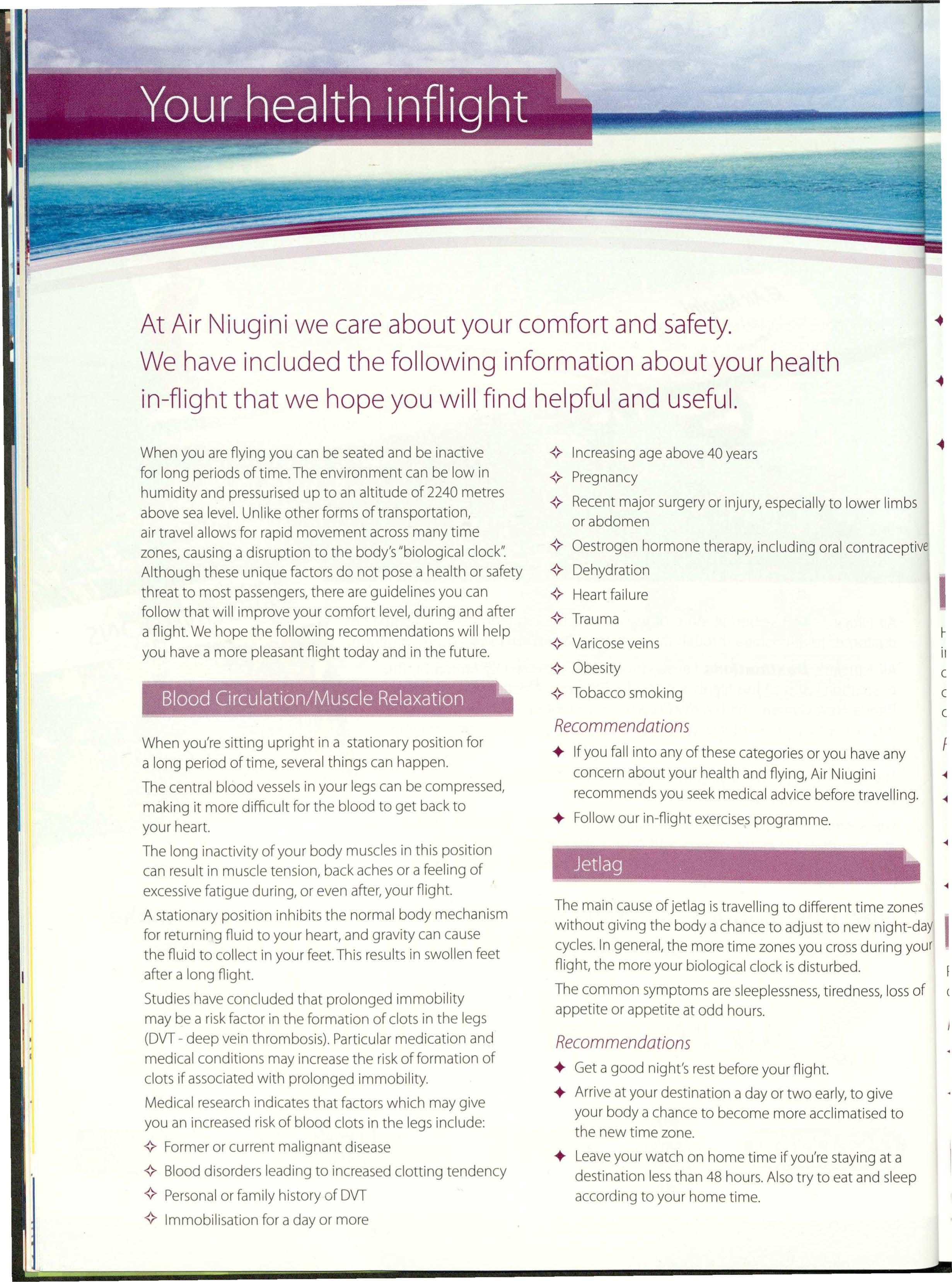
imbs :eptive

Change your watch to the local time if your stay is longer than 48 hours, and try to eat and sleep in accordance with the local time.
On longer stays,try to prepare in advance, adjust your meal and rest times to be closer to those of your destination.
Try some light exercise - go for a brisk walk, or do some reading if you can't sleep after arrival at your destination. It generally takes the body's biological clock approximately one day to adjust per time zone crossed.
Fly direct to minimise flight time. This allows you to relax more upon arrival.
Humidity levels of less than 25 percent are common in the cabin. This is due to the extremely low humidity levels of outside air supplied to the cabin. The low humidity can cause drying of the nose, throat, eyes and it can irritate contact lens wearers.
Recommendations
Drink water or juices frequently during the flight
Drink coffee, tea and alcohol in moderation. These drinks acts as diuretics, increasing the body's dehydration. Remove contact lenses and wear glasses if your eyes are irritated.
Use a skin moisturiser to refresh the skin.
Proper eating and drinking will enhance your comfort both during and after your flight
Recommendations
Avoid overeating just prior to and during the flight It is difficult to digest too much food when the body is inactive.
Drink coffee, tea and alcohol in moderation. These drinks act as diuretics, increasing the body's dehydration.
It is necessary to pressurise the outside air drawn into the cabin to a sufficient density for your comfort and health.
Cabins are pressurised to a maximum cabin altitude of 2440 metres. It is the same air pressure as if you were at an elevation of 2440 metres above sea level. The cabin pressure and normal rates of change in cabin pressure during climb and descent do not pose a problem for most passengers. However, if you suffer from upper respiratory or sinus infections, obstructive pulmonary diseases,anaemias or certain cardiovascular conditions, you could experience discomfort Children and infants might experience some discomfort because of pressure change during climb and descent
If you are suffering from nasal congestion or allergies, use nasal sprays, decongestants and antihistamines 30 minutes prior to descent to help open up your ear and sinus passages.If you have a cold or flu or hay fever your sinuses could be impaired. Swollen membranes in your nose could block your eustachian tubes-the tiny channels between your middle ear chamber. This can cause discomfort during changes in cabin pressure, particularly during descent
If you have a pre-existing medical condition that warrants supplemental oxygen, you can order from us. Please give at least seven days notice before travelling.
To "clear"your ears try swallowing and/or yawning. These actions help open your eustachian tubes, equalizing pressure between your ear chamber and your throat When flying with an infant, feed or give your baby a dummy during descent Sucking and swallowing will help infants equalize the pressure in their ears.
This ailment is caused by a conflict between the body's sense of vision and its sense of equilibrium. Air turbulence increases its likelihood because it can cause movement of the fluid in the vestibular apparatus of the inner ear. If you have good visual cues (keeping your eyes fixed on non-moving object), motion sickness is less likely to occur.
When weather is clear and you can see the ground, sea or horizon, you are less susceptible to motion sickness. You can buy over the counter medications but we recommend that you consult your doctor about the appropriate medications.
Port Moresby
POBox7186Boroko

Alotau
POBox3 Alotau GurneyAirport
SalesDomestic& International Tel:641 0158
Tel:327 3444 Fax:327 3308
Administration& Reservations
ReconfirmationDomestic& Tel:641 1031 Fax:641 1636
International Tel:327 3444
Buka
Arrival& DepartureInformation POBox 169
Tel:327 3300
CargoEnquiries
Tel:327 3245
CargoCharterEnquiries
Cargo:327 3226 Pass:327 3370
HeadOffice
Airport & Administration
JacksonsAirport Saraga
Tel:327 3200/3259000
BukaSales
Tel:973 9655 Fax:973 9656
Airport
Tel:973 9082
Goroka
POBox683 Goroka
Reservations
Tel:732 1444 Fax:732 1439
Kavieng Administration, Reservations& Cargo Tel:984 2135 Airport: Tel:984 2105 Fax:984 2337
Kimbe-Hoskins POBox 181Kimbe
Administration, Reservations& Cargo
Tel:983 5077 Fax:983 5669
Arrival& DepartureInformation Tel:985 0012
Kundiawa
POBox847 Kundiawa Tel:735 1273
Lae Administration,Domestic, Reservations& Cargo
Tel:472 3111 Fax:4724758
InternationalReservations Tel:472 4744
Lihir Reservations
Tel:986 5151 Fax:986 5134
Lorengau/Manus
POBox 170Lorengau
Administration, Reservations& Cargo Tel:470 9092 Fax:470 9382
Madang
POBox 140Madang
Administration& Reservations
Tel:852 2255 Fax:852 2079
Mendi
POBox210Mendi
Administration& Reservations
Tel:549 1233 Fax:549 1250
Airport Traffic
Tel:549 1320
Mt Hagen
POBox3 Mt Hagen
ReservationsDomestic
Tel:542 1183/5421122
ReservationsInternational
Tel:542 1039
Enquiries
Tel:545 1444 Fax:542 2361

Popondetta
POBox 145Popondetta
Reservations
Tel:329 7022 Fax:329 7227
Airport Tel:329 7191
Rabaul
POBox3120Rabaul
Reservations& Sales
Tel:983 9325 Fax:982 9034
TokuaAirport Arrival& Departure
Information Tel:983 9821
Tabubil
POBox545Tabubil
DomesticReservations
Tel:649 3244
InternationalReservations
Tel:649 3325 Fax:649 9189
Tari Agent
Tel:5408023
Vanimo POBox239Vanimo
Tel:857 1014 Fax:857 1473
Airport Tel:8577166
Wabag & Wapenamanda
POBox213Wabag
Administration Tel:547 1274
Arrival& DepartureInformation Tel:547 1286
Waigani
POBox7186Boroko
Tel:325 1055 Fax:3253683
Wewak POBox61 Wewak
Sales
Tel:856 2433
International& Domestic
Tel:856 2367 Fax:856 2203
Airport Tel:856 2367
AIRNIUGINIOFFICES
AustraliaWide
LocalCall:1300361 380
Sydney
SomareHouse
100ClarenceStreet
POBox5293 SydneyNSW2001
AustraliaTel (61 2) 9290 1544
Fax:(61 2) 9290 2026
Email:sales.sydney@airniugini.com.pg
Brisbane
Level3, 97 CreekStreet
GPOBox 2216 BrisbaneOLD4001
AustraliaTel (61 7) 3221 1544
Fax:(61 7) 3220 0040
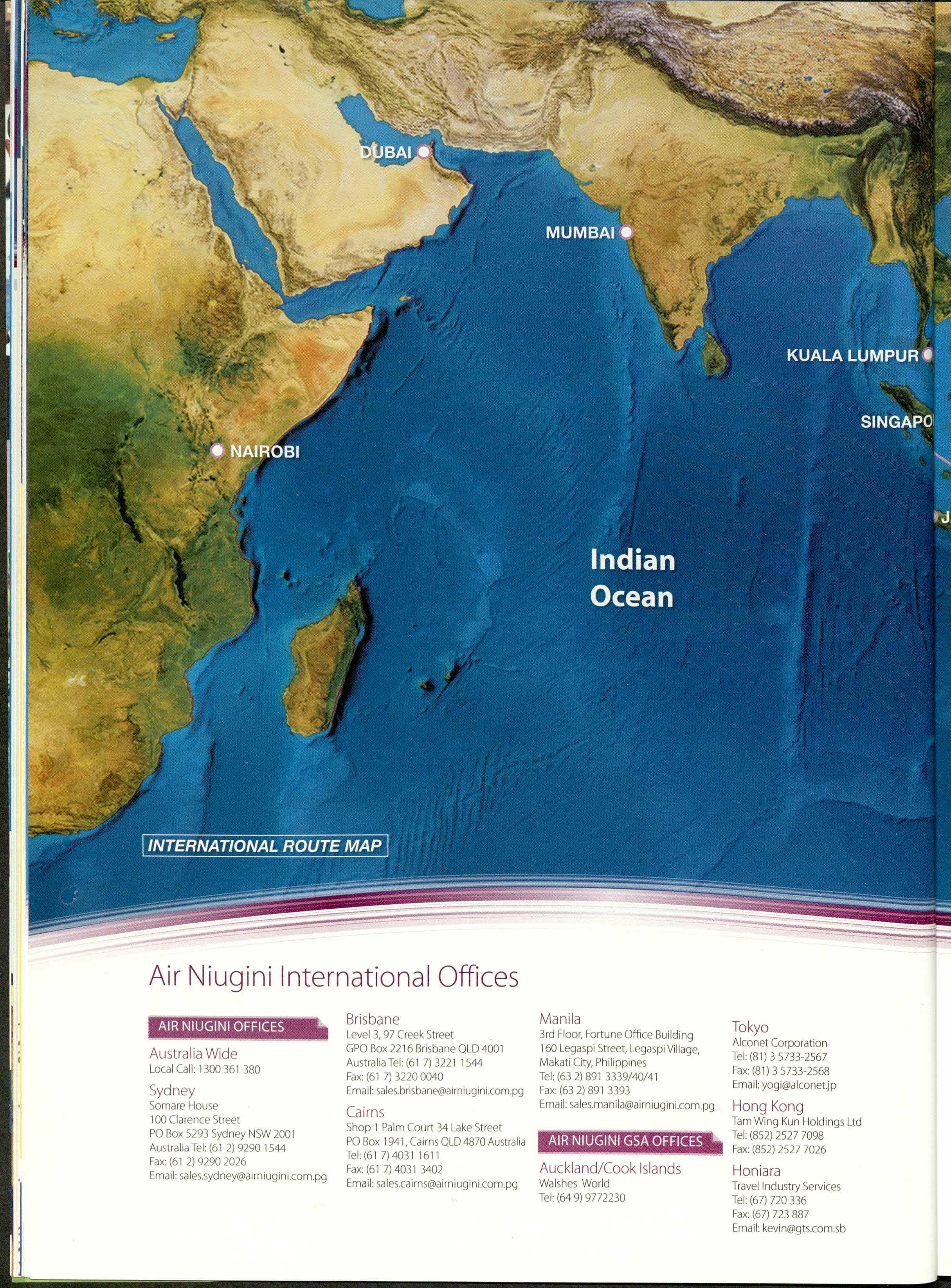
Manila
3rd Floor,FortuneOffice Building
160 LegaspiStreet,LegaspiVillage, Makati City,Philippines
Tel:(63 2) 891 3339/40/41
Email:sales.brisbane@airniugini.corn.pg
Cairns
Shop 1 PalmCourt 34 LakeStreet
POBox 1941,CairnsOLD4870Australia
Tel:(617)40311611
Fax:(61 7) 4031 3402
Email:sales.cairns@airniugini.com.pg
Fax:(63 2) 891 3393
Email:sales.manila@airniugini.com.pg
AIRNIUGINIGSAOFFICES - -
Auckland/CookIslands
WalshesWorld
Tel:(64 9) 9772230
Tokyo
Alconet Corporation
Tel:(81)3 5733-2567
Fax:(81)3 5733-2568
Email:yogi@alconet.jp
Hong Kong
TamWing Kun Holdings Ltd
Tel:(852)2527 7098
Fax:(852)2527 7026
Honiara
TravelIndustryServices
Tel:(67) 720 336
Fax:(67) 723 887
Email:kevin@gts.com.sb
Italy
SpazioSRL
Tel(39)064985621
Fax(39)064985201
Jakarta P.T.Ayuberga
Tel:(62)218356214-217
Fax:(62)21 835 3937
KualaLumpur
Abadi AviationServices
Tel:(603)21484313
Fax:(603)21412322
Email:pxkul@abadi.com.my
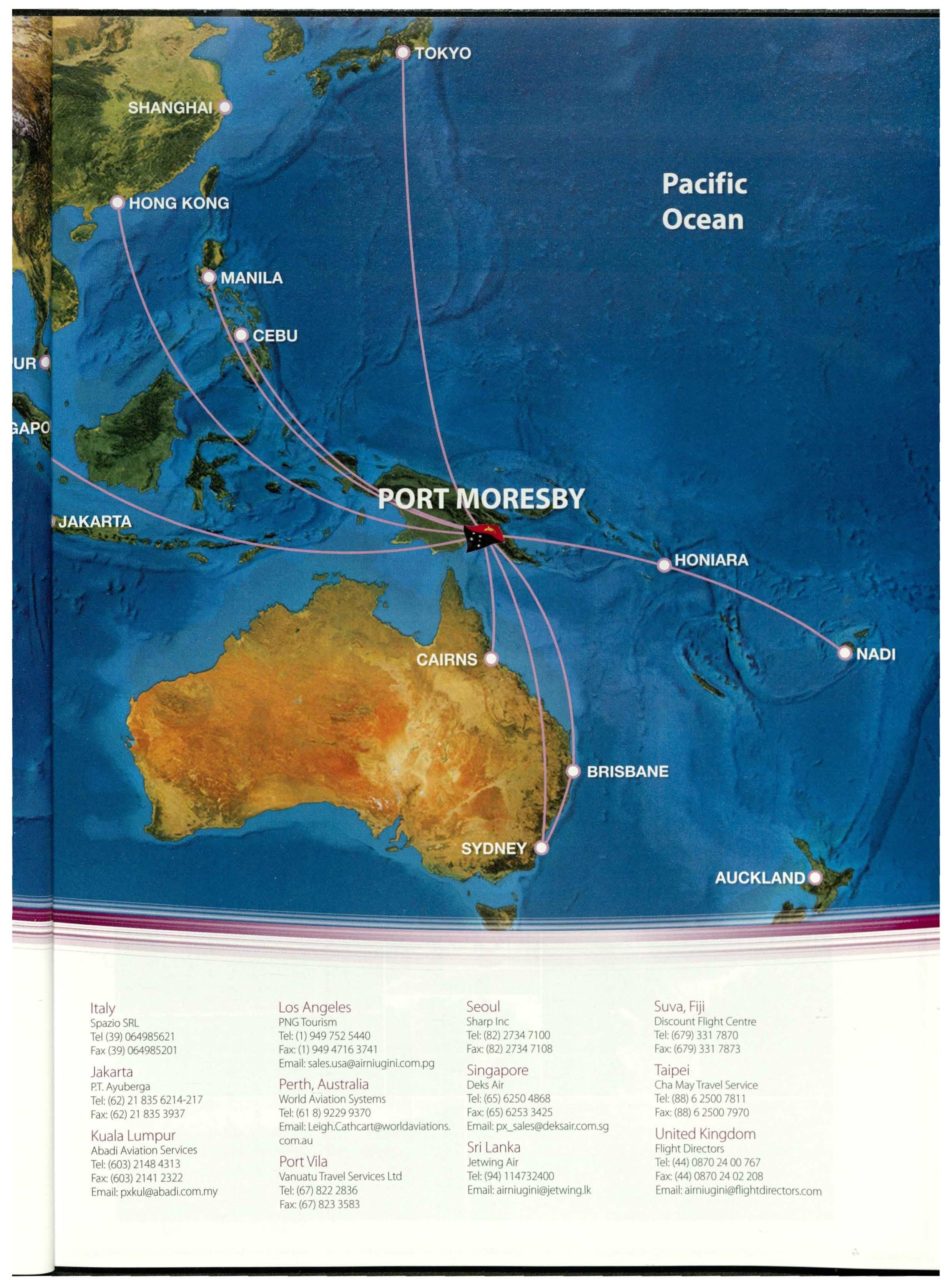
LosAngeles
PNGTourism
Tel:(1)949 7525440
Fax:(l) 94947163741
Email:sales.usa@airniugini.com.pg
Perth,Australia
WorldAviationSystems
Tel:(618) 92299370
Seoul SharpInc
Tel:(82)27347100
Fax:(82)27347108
Singapore DeksAir
Tel:(65)62504868
Fax:(65)62533425
Email:Leigh.Cathcart@Worldaviations. corn.au
PortVila
VanuatuTravelServicesLtd
Tel:(67)822 2836
Fax:(67)823 3583
Email:px_sales@deksair.com.sg
Sri Lanka
JetwingAir
Tel:(94)114732400
Email:airniugini@jetwing.lk
Suva,Fiji DiscountFlightCentre
Tel:(679)3317870
Fax:(679)3317873
Taipei ChaMayTravelService
Tel (88)6 25007811
Fax:(88)6 25007970
United Kingdom
FlightDirectors
Tel:(44)087024 00 767
Fax:(44)087024 02 208
Email:airniugini@flightdirectors.com
Port Moresby Kavieng Madang Tabubil
POBox7186Boroko
SalesDomestic& International
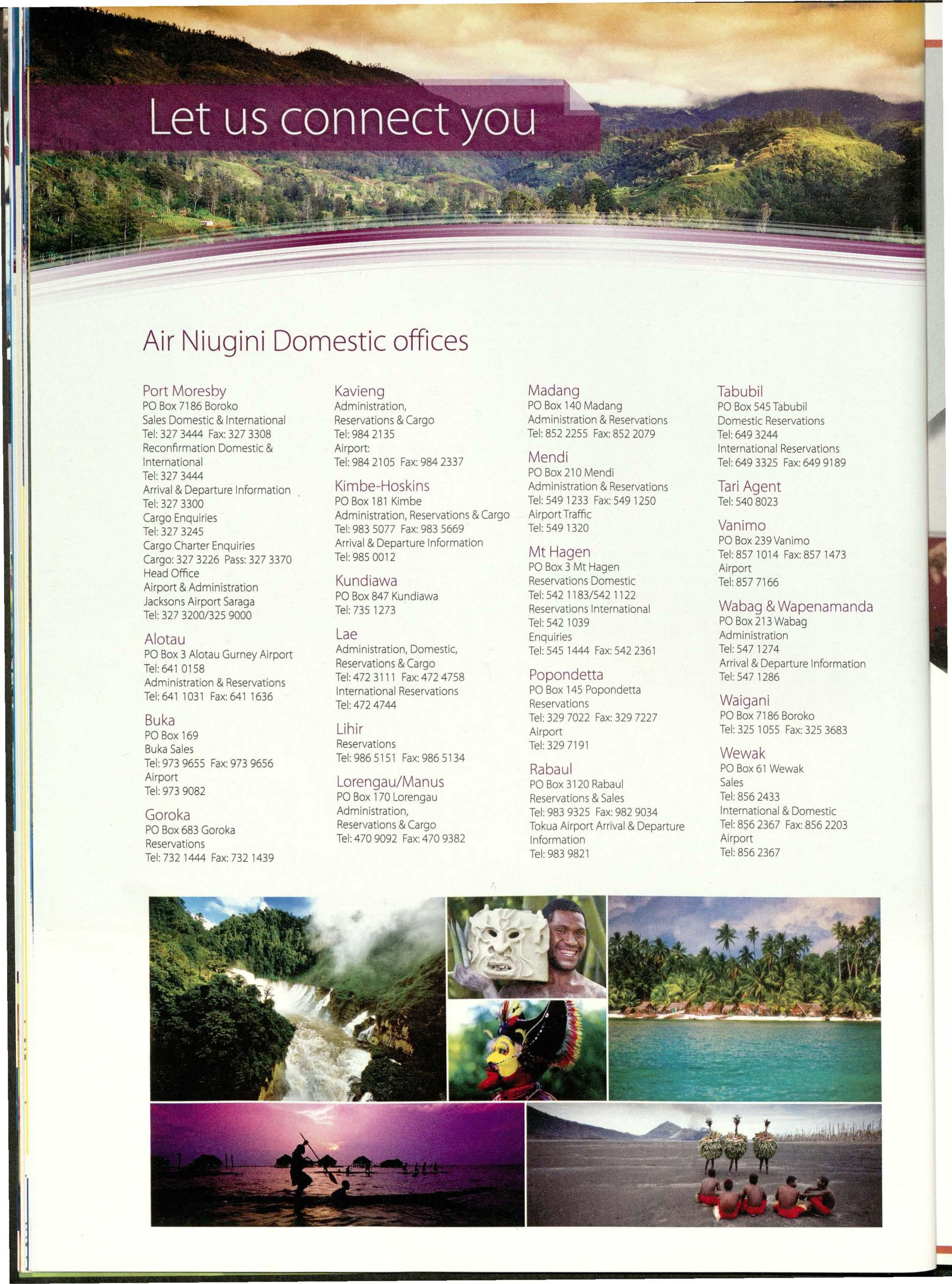
Administration, POBox 140Madang POBox545Tabubil
Reservations& Cargo Administration& Reservations DomesticReservations
Tel:327 3444 Fax:327 3308 Tel:984 2135
ReconfirmationDomestic& Airport:
Tel:852 2255 Fax:852 2079 Tel:649 3244
International Tel:984 2105 Fax:984 2337 Mendi
Tel:327 3444
InternationalReservations
Tel:649 3325 Fax:649 9189
POBox210 Mendi
Arrival& DepartureInformation Kimbe-Hoskins Administration& Reservations TariAgent
Tel:327 3300 POBox 181Kimbe
CargoEnquiries
Tel:327 3245 Tel:983 5077 Fax:983 5669
Tel:549 1233 Fax:549 1250
Tel:540 8023
Administration,Reservations& Cargo AirportTraffic Vanimo
Tel:549 1320
CargoCharterEnquiries Arrival& DepartureInformation Mt Hagen POBox239Vanimo
Tel:857 1014 Fax:857 1473
Cargo:327 3226 Pass:327 3370 Tel:985 0012
HeadOffice Kundiawa
Airport & Administration
JacksonsAirport Saraga POBox847 Kundiawa
Tel:327 3200/3259000 Tel:735 1273
POBox3 Mt Hagen Airport
ReservationsDomestic
Tel:542 1183/5421122
Tel:857 7166
ReservationsInternational Wabag& Wapenamanda Tel:542 1039 POBox213Wabag
Alotau Lae Enquiries Administration
POBox3 Alotau GurneyAirport
Administration,Domestic, Tel:545 1444 Fax:542 2361
Tel:547 1274
Tel:641 0158 Reservations& Cargo Popondetta Arrival& DepartureInformation
Administration& Reservations Tel:472 3111 Fax:472 4758
InternationalReservations
Tel:6411031 Fax:641 1636
Buka
Tel:547 1286
POBox 145Popondetta
Tel:472 4744 Reservations Waigani
Tel:329 7022 Fax:329 7227
POBox 169 Lihir Airport
BukaSales Reservations
POBox7186Boroko
Tel:325 1055 Fax:325 3683
Tel:329 7191
Tel:973 9655 Fax:973 9656 Tel:986 5151 Fax:986 5134 Wewak
Airport Rabaul
Lorengau/Manus
Tel:973 9082
POBox61 Wewak
POBox3120 Rabaul Sales
POBox 170Lorengau Reservations& Sales
Goroka Administration,
Tel:856 2433
Tel:983 9325 Fax:982 9034 International& Domestic
POBox683 Goroka Reservations& Cargo TokuaAirport Arrival& Departure
Reservations
Tel:732 1444 Fax:732 1439
Tel:856 2367 Fax:856 2203
Tel:470 9092 Fax:470 9382 Information Airport
Tel:983 9821
Tel:856 2367
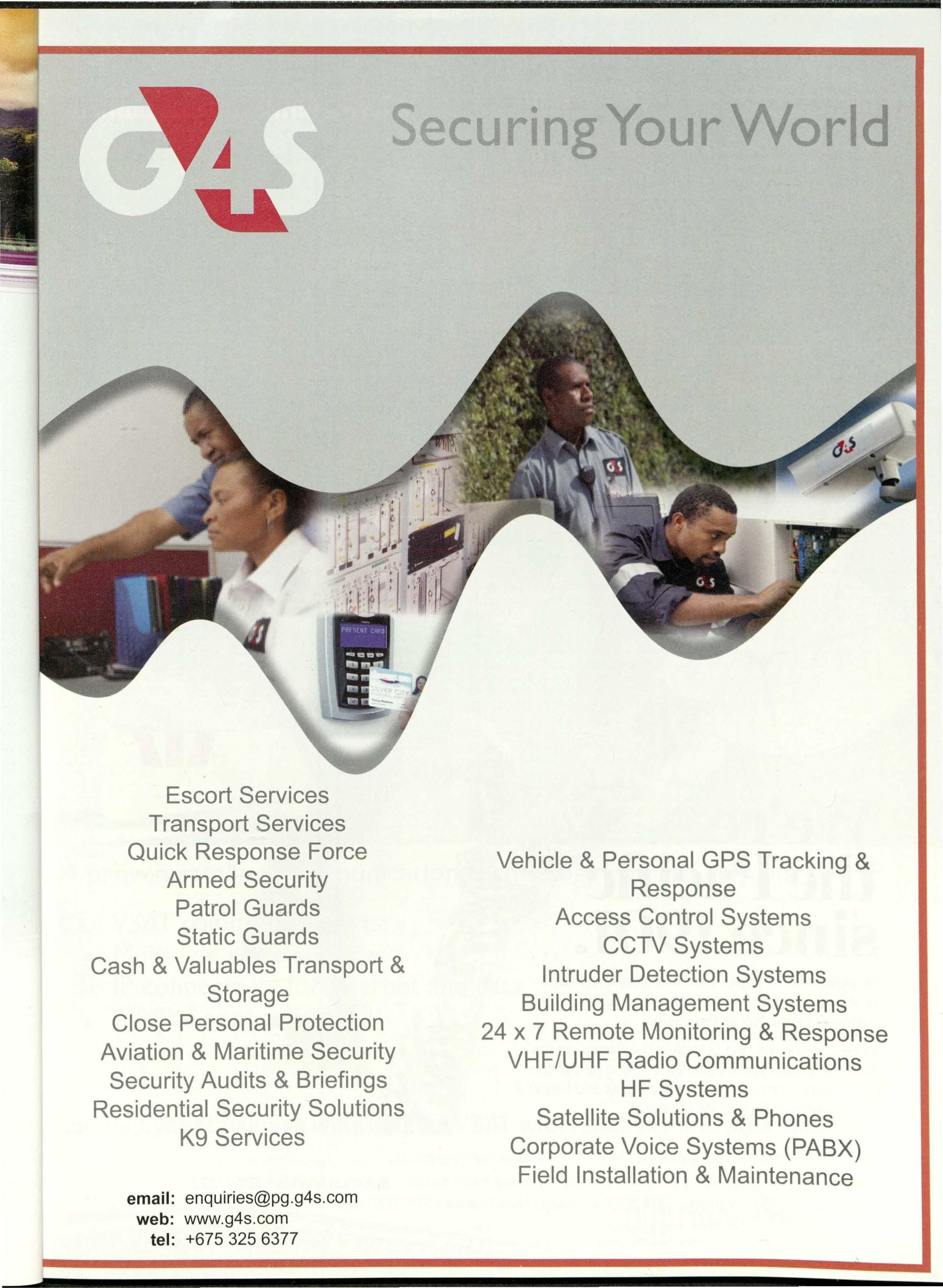
Escort Services
Transport Services
Quick Response Force
Armed Security
Patrol Guards
Static Guards
Cash & Valuables Transport & Storage
Close Personal Protection
Aviation & Maritime Security
Security Audits & Briefings
Residential Security Solutions
K9 Services
email: enquiries@pg.g4s.com
web: www.g4s.com
tel: +675 325 6377
Vehicle & Personal GPS Tracking & Response
Access Control Systems
CCTV Systems
Intruder Detection Systems
Building Management Systems
24 x 7
Remote Monitoring & Response
VHF/UHF Radio Communications
HF Systems
Satellite Solutions & Phones
Corporate Voice Systems (PABX)
Field Installation & Maintenance
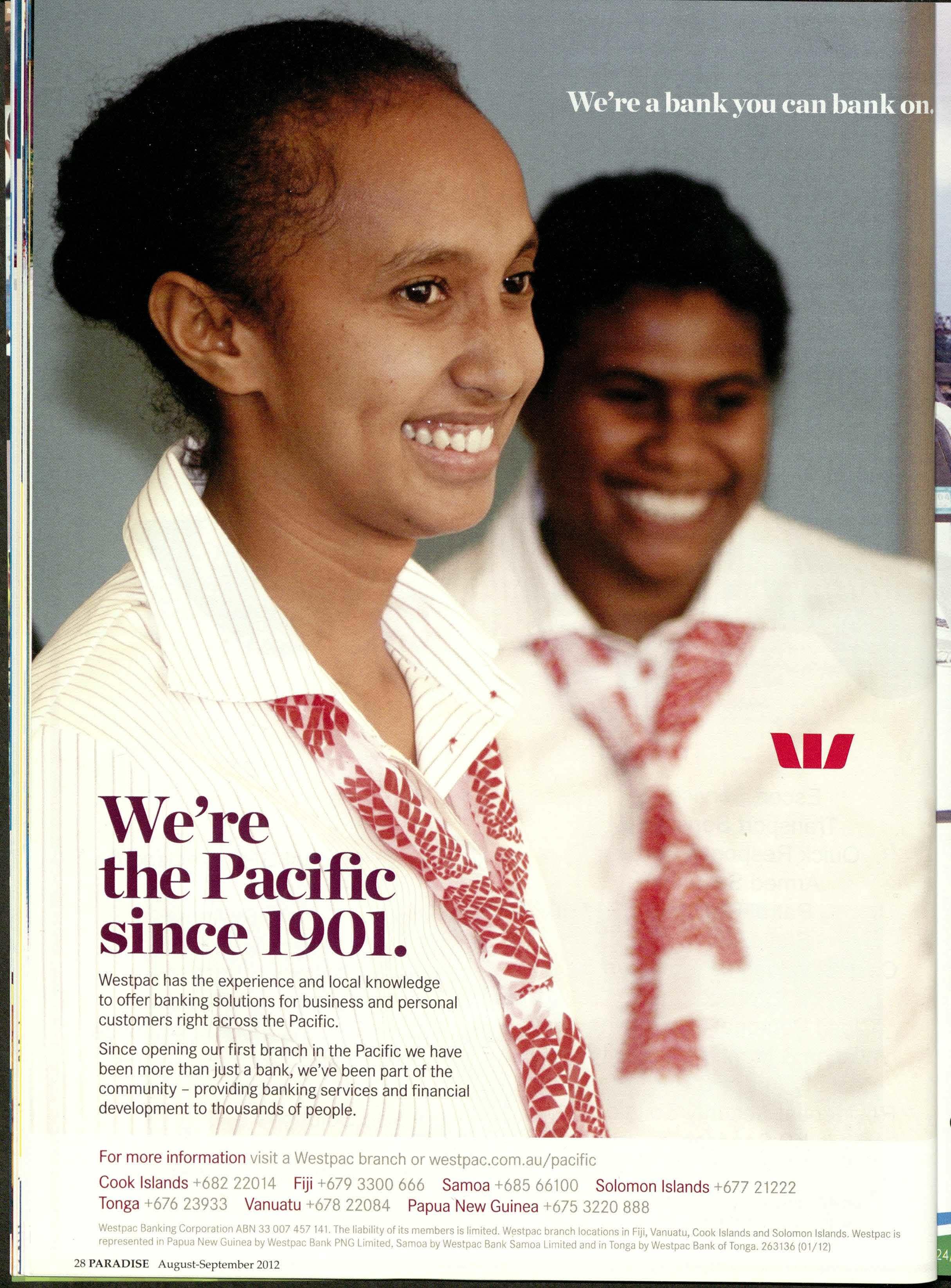
''Reliable communications in the remotest parts of PNG"

A proven satellite communication technology you can rely on.
Our VSATsolution supports:
• Multi-line voice services
• IP connectivity for internet and data
• IP/VPN connectivity
Connect your business with Telikom VSAT with reliability and affordability.
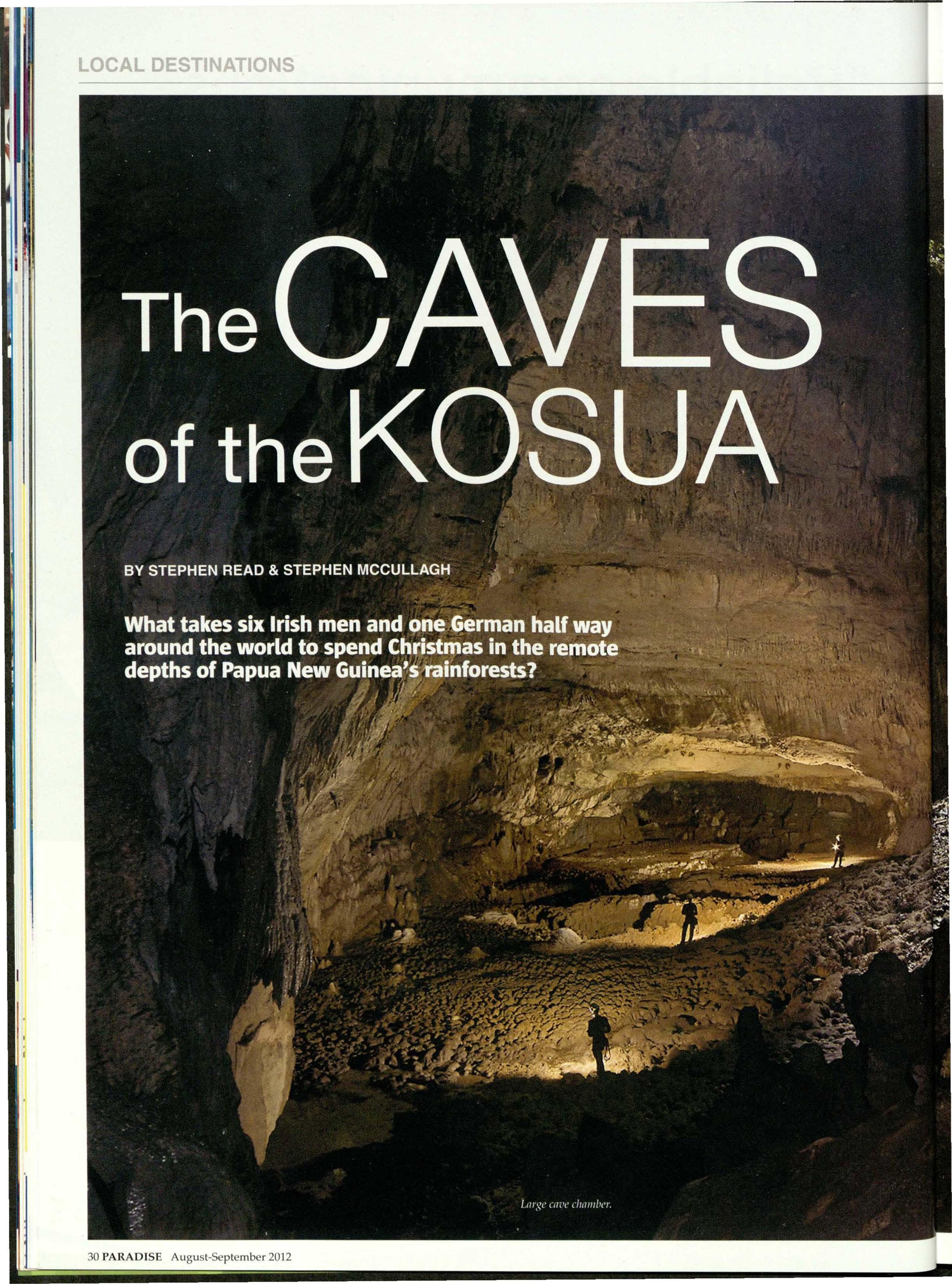
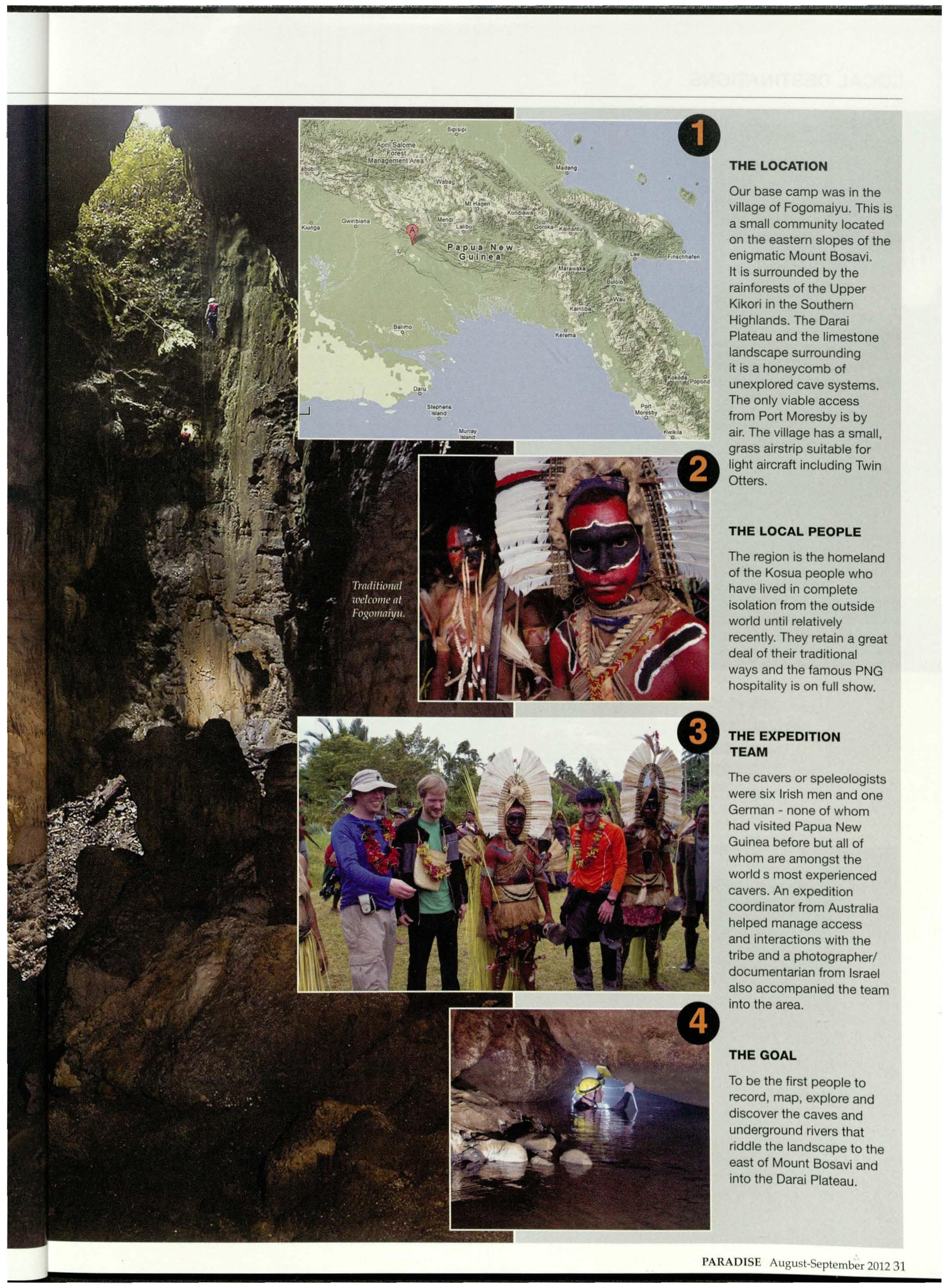
Our base camp was in the village of Fogomaiyu. This is a small community located on the eastern slopes of the enigmatic Mount Bosavi. It is surrounded by the rainforests of the Upper Kikori in the Southern Highlands. The Darai Plateau and the limestone landscape surrounding it is a honeycomb of unexplored cave systems. The only viable access from Port Moresby is by air. The village has a small, grass airstrip suitable for light aircraft including Twin Otters.
The region is the homeland of the Kosua people who have lived in complete isolation from the outside world until relatively recently. They retain a great deal of their traditional ways and the famous PNG hospitality is on full show.
The cavers or speleologists were six Irish men and one German - none of whom had visited Papua New Guinea before but all of whom are amongst the world s most experienced cavers. An expedition coordinator from Australia helped manage access and interactions with the tribe and a photographer/ documentarian from Israel also accompanied the team into the area.
To be the first people to record, map, explore and discover the caves and underground rivers that riddle the landscape to the east of Mount Bosavi and into the Darai Plateau.
reland is a country that is not particularly ~; renowned for warm weather, large forests H, or exotic wildlife, however it does have m caves. This is something it has in common K, with Papua New Guinea. Caves mainly form in to limestone rock and cavers are always on the of lookout for new areas to explore.
Fe
Papua New Guinea has a lot of limestone and sli to the best of our knowledge quite a lot of it sc is unexplored. This is enough to pique any Hi cavers interest and in 201 0 after a few drinks, we sketched out a plan. Tt
gL
Eighteen months of planning came to fruition th as the team boarded the first of many flights on a cold windswept December evening in Dublin.
Many hours and five flights later (including two Air Niugini transfers) and the team was assembled on our small Twin Otter aircraft, cruising over the foothills of the spectacular Mount Bosavi.
bL fir D1 in u~ 'J Cc th
Living in the bush for four weeks and exploring it~ for caves in pristine tropical jungle in the heart SL of Papua New Guinea could prove to be a th huge challenge for the group. A:
Just getting to the location had to be a th precision operation with the gear we were pi humping. So many connections, so much gear fo and so little time!
Air Niugini was very helpful in our preparations
m he
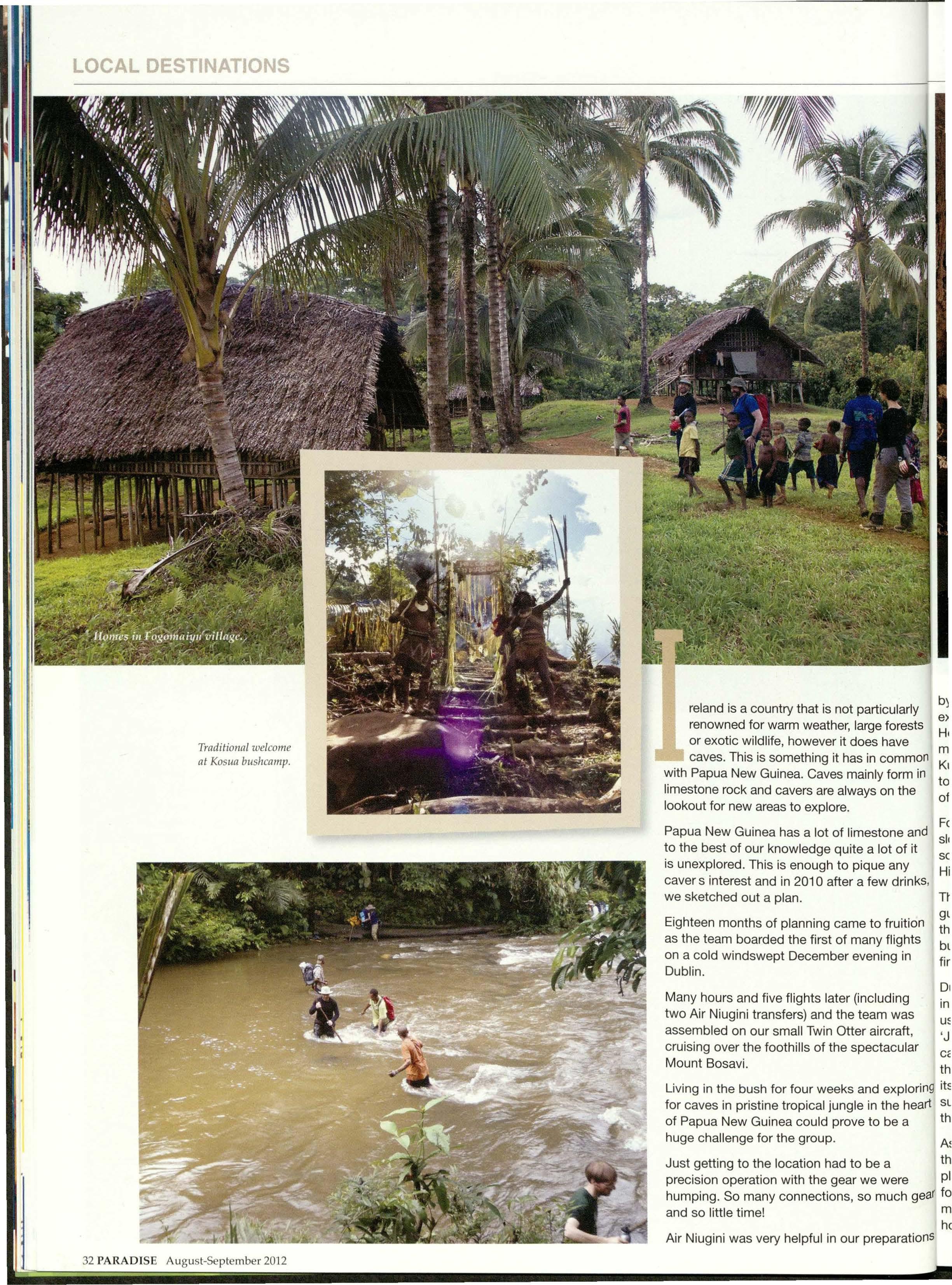
Jlarly )rests ive mmon :irm in tthe 1e and of it 1ny jrinks, uition ights Jin ng Nas
by accommodating the large amounts of expedition equipment that we had to carry. However, all the stress, nerves and anticipation melted into the smooth rhythmic beat of the Kundu drums as we clambered out of the plane to a spectacular warm welcome from the villagers of Fogomaiyu.
Fogomaiyu is a small village nestling on the lower slopes of Mt Bosavi, a few hundred metres from the southern bank of the Hegigio River in the Southern Highlands. It is the home of the Kosua tribe.
These proud, welcoming people became our guides, hosts and friends. And for the duration of the expedition, we relied heavily on their expert bush skills and local geographical knowledge to find our way through the dense jungle vegetation.
During the first week, we chose to visit caves in close proximity to our base camp. This gave us the opportunity to acclimatise and find our aft, 'Jungle' feet. During the first week, many fine :ular caves were explored and mapped, including the impressive and enigmatic Walofani with :ploring its mysterious stone art, and Semetesa which, heart surprisingly, was found within the boundaries of 1 a the village.
As we grew more accustomed to the humidity, the bug life and the often difficult terrain, ire plans were made for a number of challenging ~h gear forays into the bush in order to hunt for even more remote caves deeper into the jungle and hopefully, to the steppes of the Darai Plateau .rations
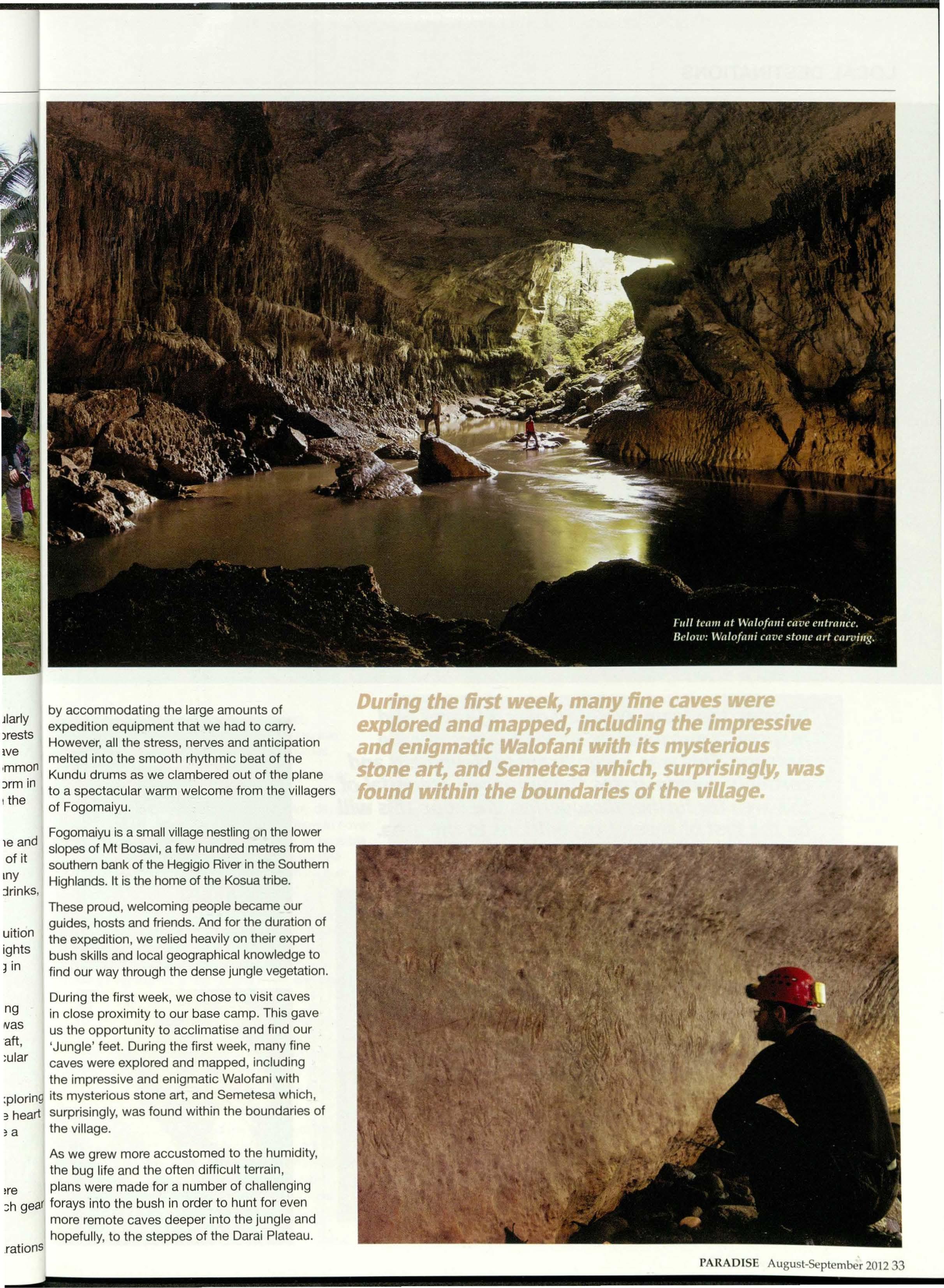
During the first week, many fine caves ere exploredand mapp d, includingthe impressive and enigmatic Walofaniwith its mysterious tone art, and Semetesawhich,surprisingly,was ound within the boundariesof the village.
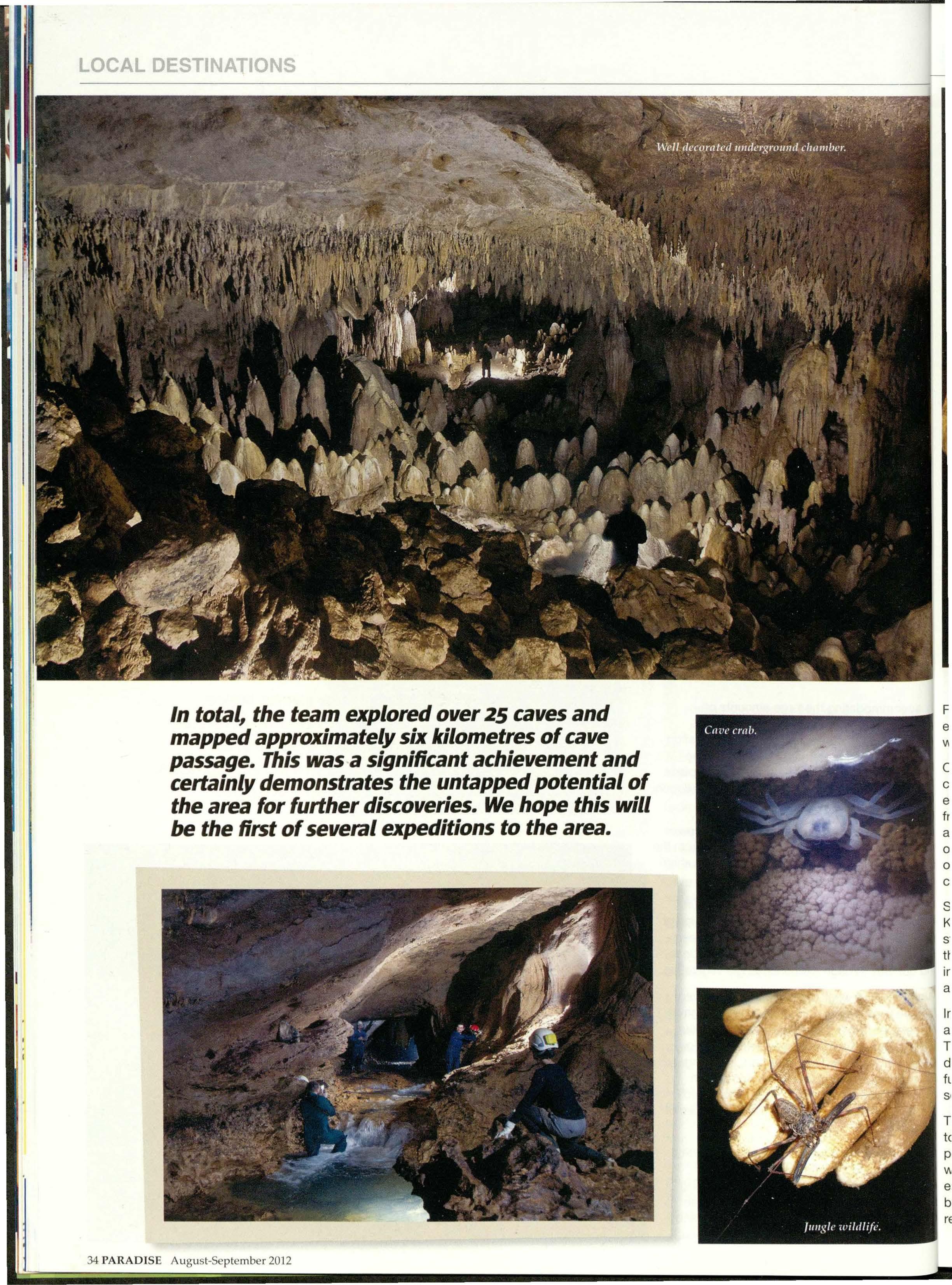
In total, the team exploredover 25 cavesand mapped approximatelysix kilometres of cave passage. Thiswas a significantachievementand certainlydemonstratesthe untappedpotential of the area for further discoveries.We hope this will be the first of several expeditionsto the area.
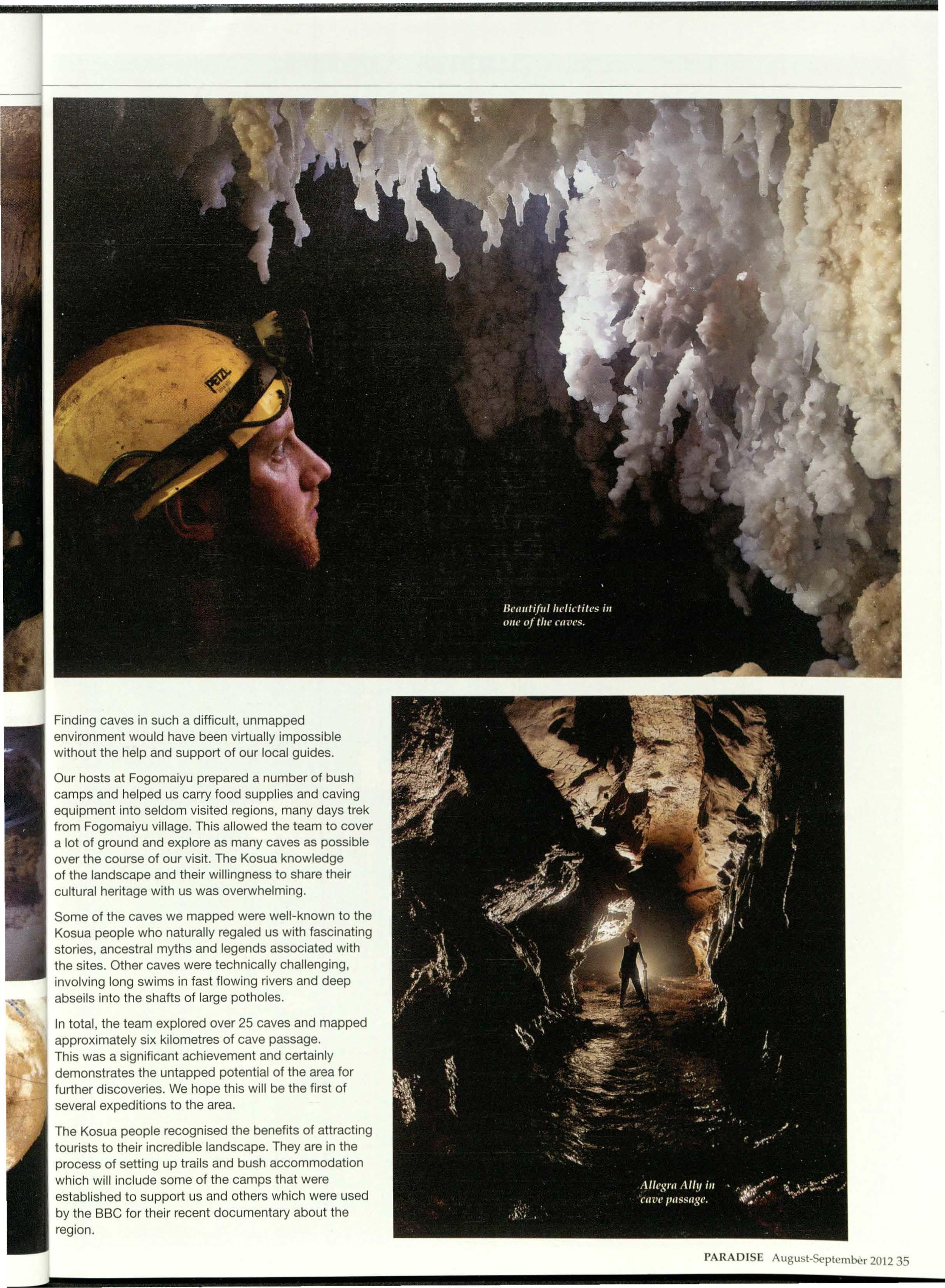
Finding caves in such a difficult, unmapped environment would have been virtually impossible without the help and support of our local guides.
Our hosts at Fogomaiyu prepared a number of bush camps and helped us carry food supplies and caving equipment into seldom visited regions, many days trek from Fogomaiyu village. This allowed the team to cover a lot of ground and explore as many caves as possible over the course of our visit. The Kosua knowledge of the landscape and their willingness to share their cultural heritage with us was overwhelming.
Some of the caves we mapped were well-known to the Kosua people who naturally regaled us with fascinating stories, ancestral myths and legends associated with the sites. Other caves were technically challenging, involving long swims in fast flowing rivers and deep abseils into the shafts of large potholes.
In total, the team explored over 25 caves and mapped approximately six kilometres of cave passage. This was a significant achievement and certainly demonstrates the untapped potential of the area for further discoveries. We hope this will be the first of several expeditions to the area.
The Kosua people recognised the benefits of attracting tourists to their incredible landscape. They are in the process of setting up trails and bush accommodation which will include some of the camps that were established to support us and others which were used by the BBC for their recent documentary about the region.
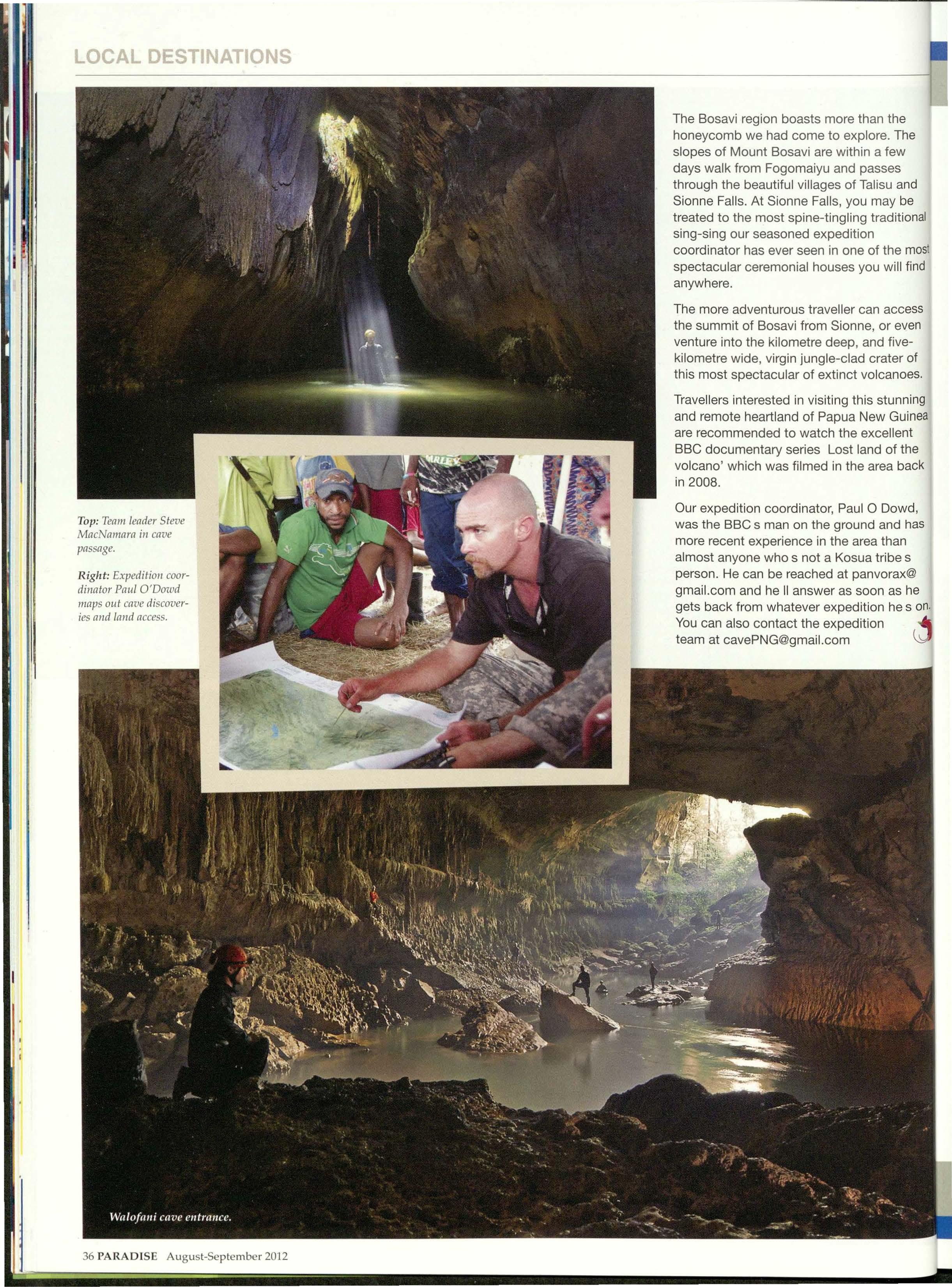
The Bosavi region boasts more than the honeycomb we had come to explore. The slopes of Mount Bosavi are within a few days walk from Fogomaiyu and passes through the beautiful villages of Talisu and Sionne Falls. At Sionne Falls, you may be treated to the most spine-tingling traditional sing-sing our seasoned expedition coordinator has ever seen in one of the most spectacular ceremonial houses you will find anywhere.
The more adventurous traveller can access the summit of Bosavi from Sionne, or even venture into the kilometre deep, and fivekilometre wide, virgin jungle-clad crater of this most spectacular of extinct volcanoes. Travellers interested in visiting this stunning and remote heartland of Papua New Guinea are recommended to watch the excellent BBC documentary series Lost land of the volcano' which was filmed in the area back in 2008.
Our expedition coordinator, Paul O Dowd, was the BBC s man on the ground and has more recent experience in the area than almost anyone who s not a Kosua tribes person. He can be reached at panvorax@ gmail.com and he II answer as soon as he gets back from whatever expedition he son. You can also contact the expedition team at cavePNG@gmail.com
he The 3W is and be litional
1e most ·ill find ccess even iveer of noes.
1nning 3uinea lent fthe back )Wd, d has an ,es ax@ 1s he 1es on.
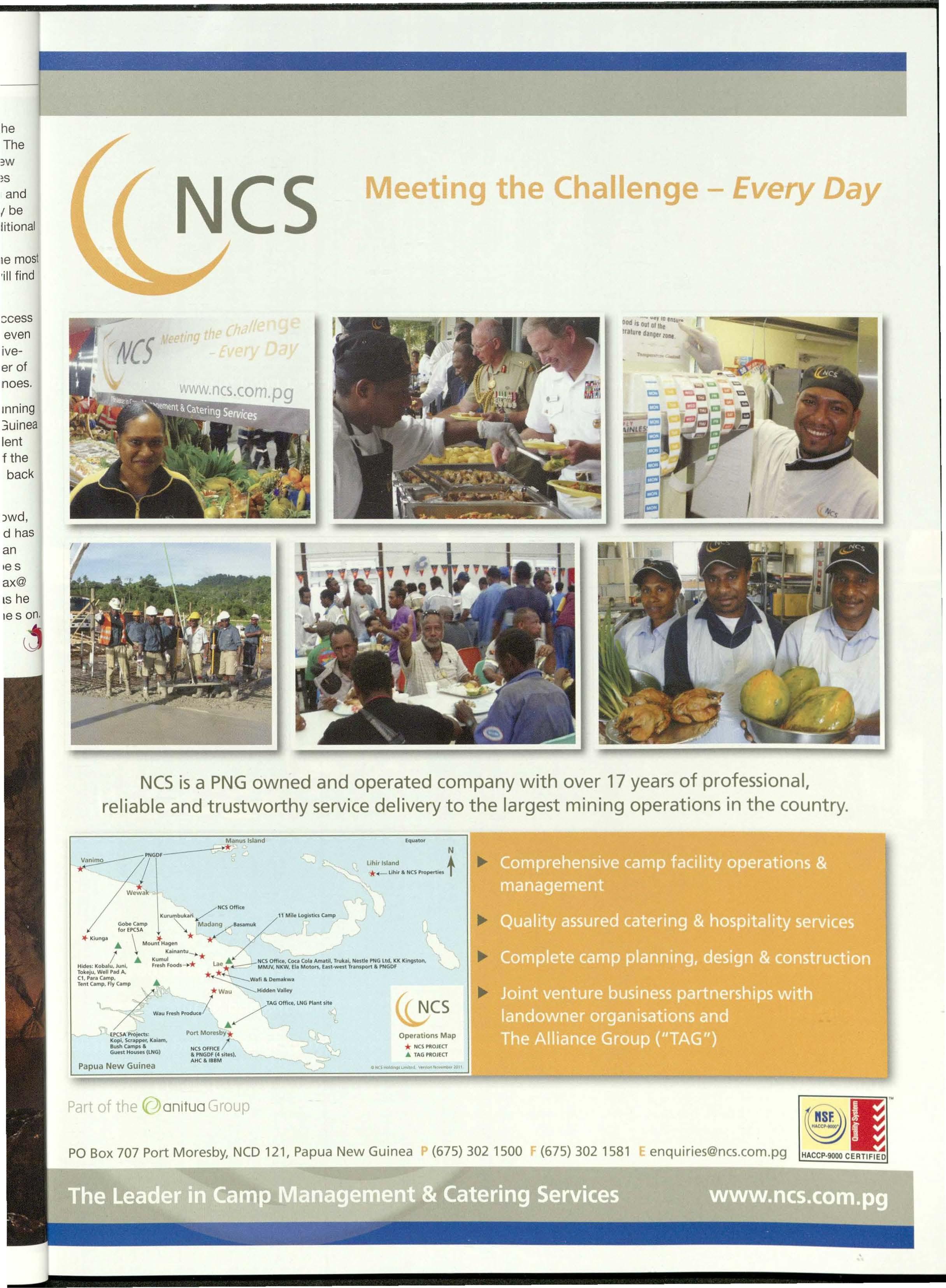
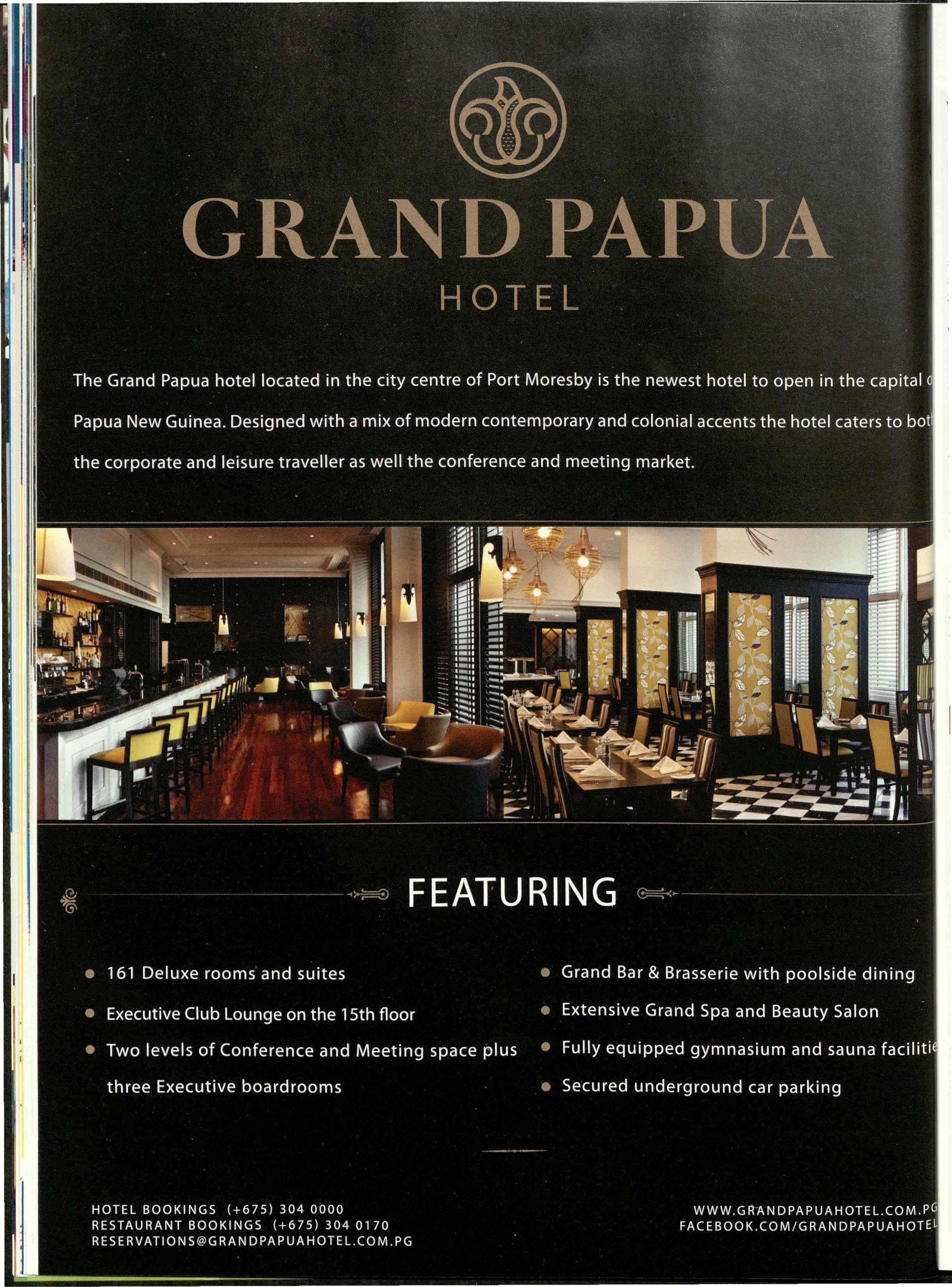
Kramer Ausenco has a long and successful history of delivering superior solutions in PNG and the South Pacific.
We are proud to be the largest independent professional project management and engineering organisation and are focused on remaining a leading provider of high quality engineering and program management services to the region.
Our extensive experience managing civil and structural engineering projects in PNG and the South Pacific region includes successfully delivering the prestigious Grand Papua Hotel. This was the first building in PNG to utilise post tensioned concrete floor slabs, enabling a more efficient design.
We offer our clients a complete range of building services, providing customised end to end solutions at each stage of the project lifecycle to overcome the particular challenges faced in the region.
Contact us for your next project. KramerAusenco.com
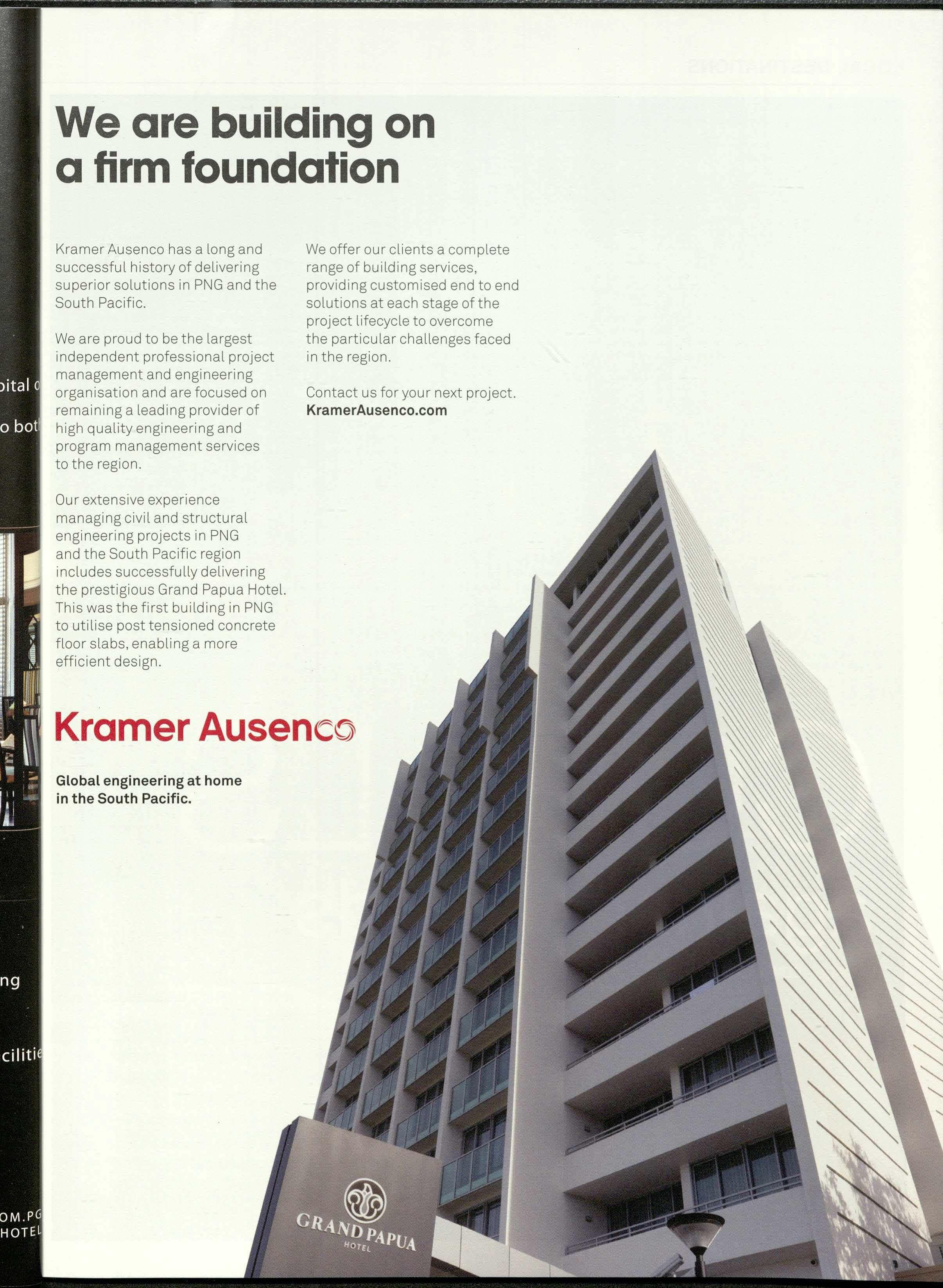
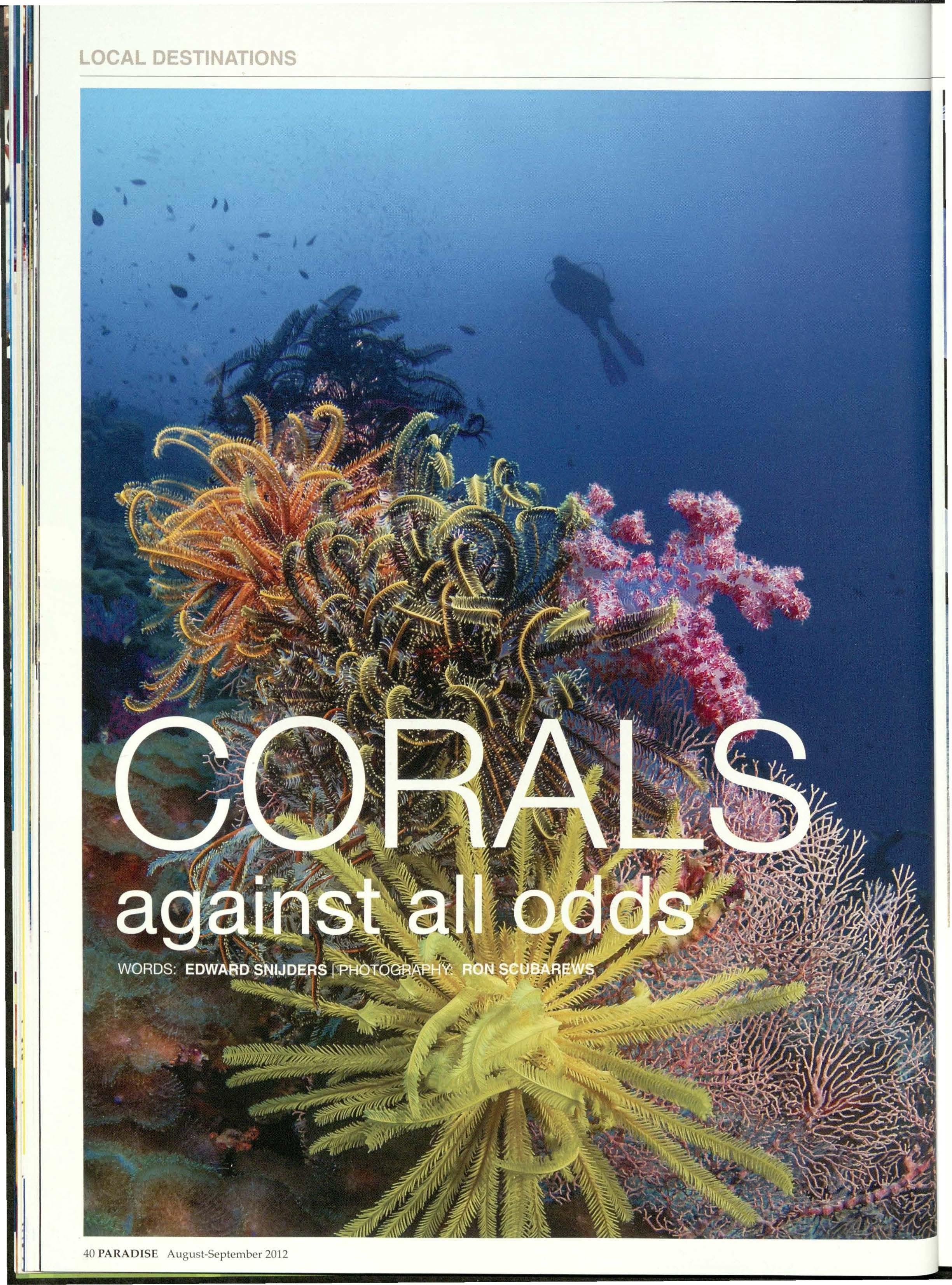
The primaryattraction for visitorsto Kimbe Bayand the Bismarck Sea, West New Britain, is undoubtedlythe spectaculardivingon pristinereefs.
In the area, you will find a marine ecosystemwith some of the highestbiodiversity and best diving in the lndo-Pacificregion.
That is not just small talk; the area got recognition from world renowned coral reef scientists like Dr John Charlie Veron, who says: I am hard pressed to think of anywhere on earth that has this combination of vibrant health, diversity and beauty.
Arriving visitors to the reefs will end up in Walindi Resort, just west of Kimbe. Walindi is also home to MV FeBrina, Captain Alan Raabe s live-aboard dive vessel. The FeBrina has been exploring the waters of New Britain, Kimbe Bay and the Bismarck Sea - for the last 20 years.
Although a remote location, it is easy to get to the reefs: twice daily you can board the short
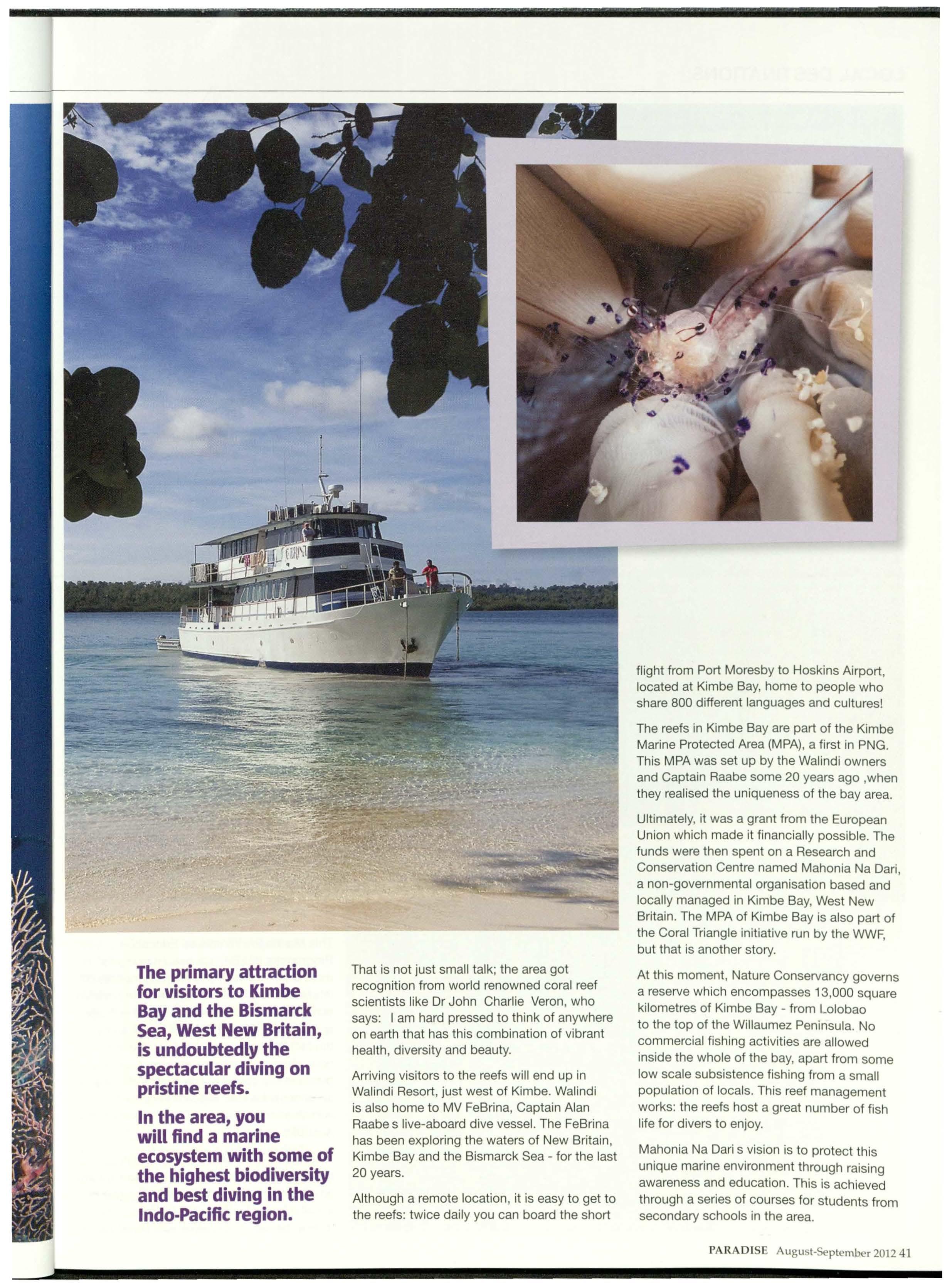
flight from Port Moresby to Hoskins Airport, located at Kimbe Bay, home to people who share 800 different languages and cultures!
The reefs in Kimbe Bay are part of the Kimbe Marine Protected Area (MPA), a first in PNG. This MPA was set up by the Walindi owners and Captain Raabe some 20 years ago ,when they realised the uniqueness of the bay area.
Ultimately, it was a grant from the European Union which made it financially possible. The funds were then spent on a Research and Conservation Centre named Mahonia Na Dari, a non-governmental organisation based and locally managed in Kimbe Bay, West New Britain. The MPA of Kimbe Bay is also part of the Coral Triangle initiative run by the WWF, but that is another story.
At this moment, Nature Conservancy governs a reserve which encompasses 13,000 square kilometres of Kimbe Bay - from Lolobao to the top of the Willaumez Peninsula. No commercial fishing activities are allowed inside the whole of the bay, apart from some low scale subsistence fishing from a small population of locals. This reef management works: the reefs host a great number of fish life for divers to enjoy.
Mahonia Na Daris vision is to protect this unique marine environment through raising awareness and education. This is achieved through a series of courses for students from secondary schools in the area.
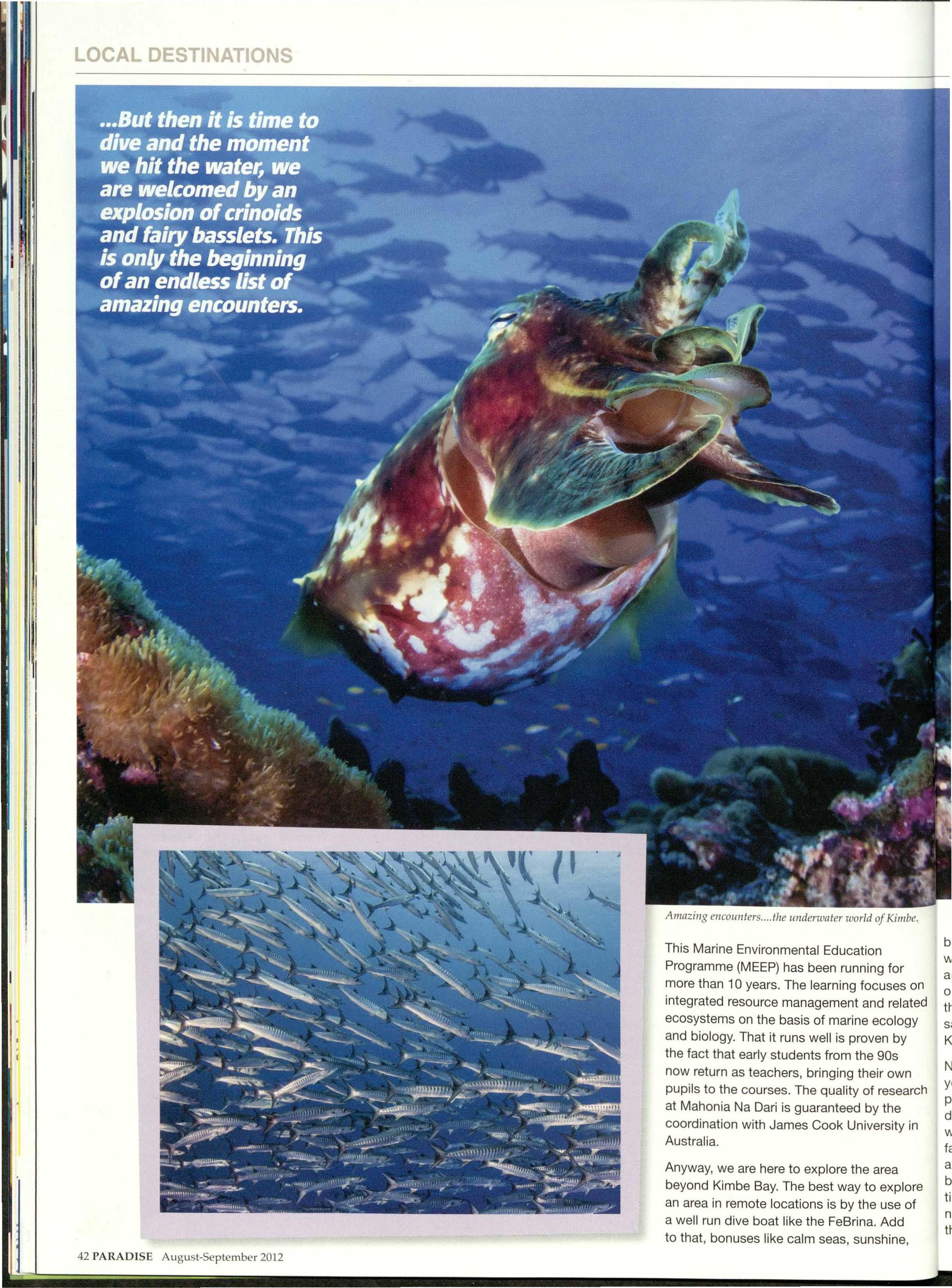
the
This Marine Environmental Education Programme (MEEP) has been running for more than 1O years. The learning focuses on integrated resource management and related ecosystems on the basis of marine ecology and biology. That it runs well is proven by the fact that early students from the 90s now return as teachers, bringing their own pupils to the courses. The quality of research at Mahonia Na Dari is guaranteed by the coordination with James Cook University in Australia.
Anyway, we are here to explore the area beyond Kimbe Bay. The best way to explore an area in remote locations is by the use of a well run dive boat like the FeBrina. Add to that, bonuses like calm seas, sunshine,
imbe.
)r ~son ~lated logy
JY wn earch e ty in l ::ilore e of Id le,
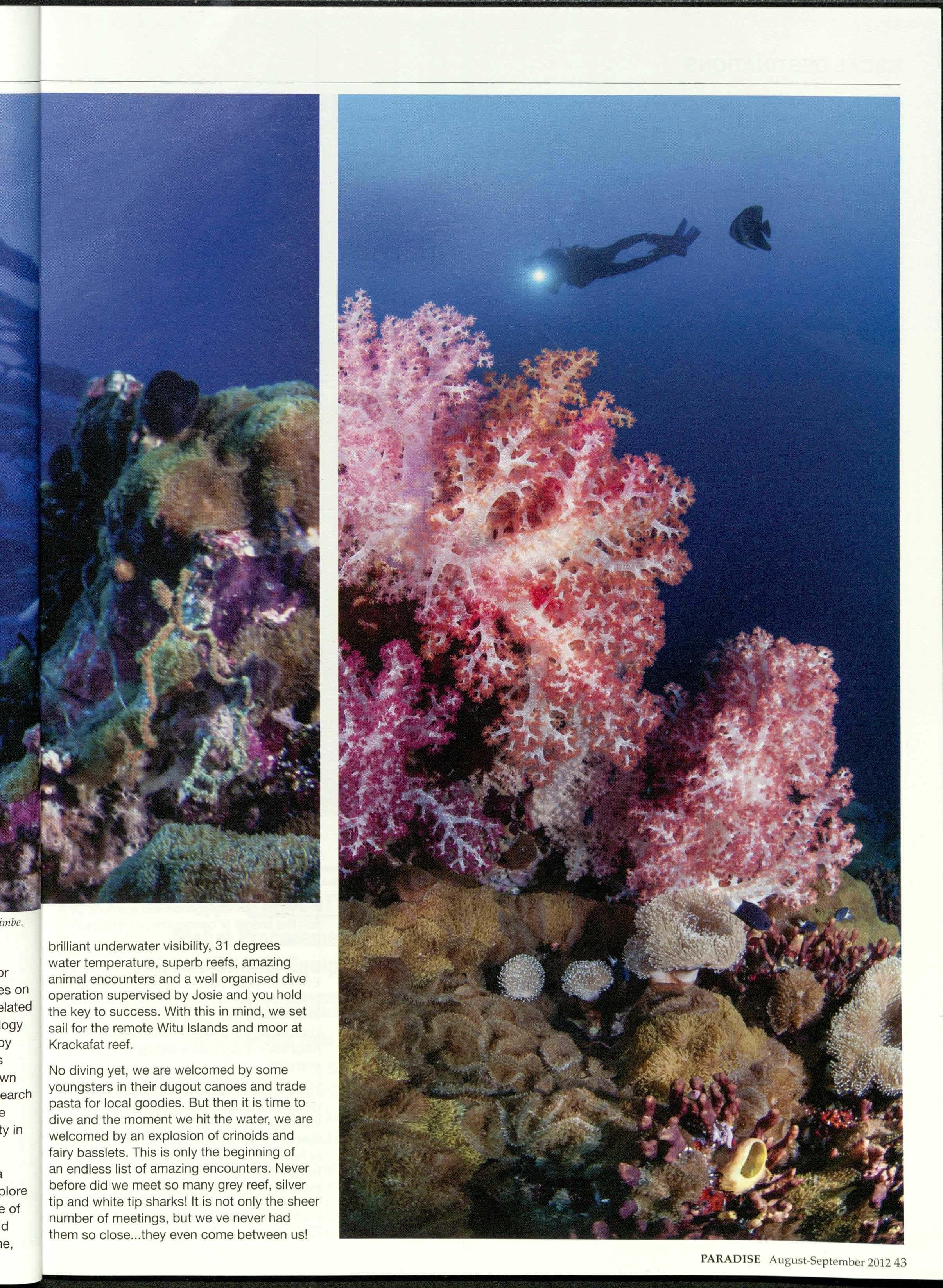
brilliant underwater visibility, 31 degrees water temperature, superb reefs, amazing animal encounters and a well organised dive operation supervised by Josie and you hold the key to success. With this in mind, we set sail for the remote Witu Islands and moor at Krackafat reef.
No diving yet, we are welcomed by some youngsters in their dugout canoes and trade pasta for local goodies. But then it is time to dive and the moment we hit the water, we are welcomed by an explosion of crinoids and fairy basslets. This is only the beginning of an endless list of amazing encounters. Never before did we meet so many grey reef, silver tip and white tip sharks! It is not only the sheer number of meetings, but we ve never had them so close they even come between us!
Evenfive divesa day don't really wear you out under these conditions.Thestunning viewsof schoollingfish in the blue, endlesscorallandscapesare of an unrivalled beauty and magnitudeand makesa lastingimpressionon everyone.
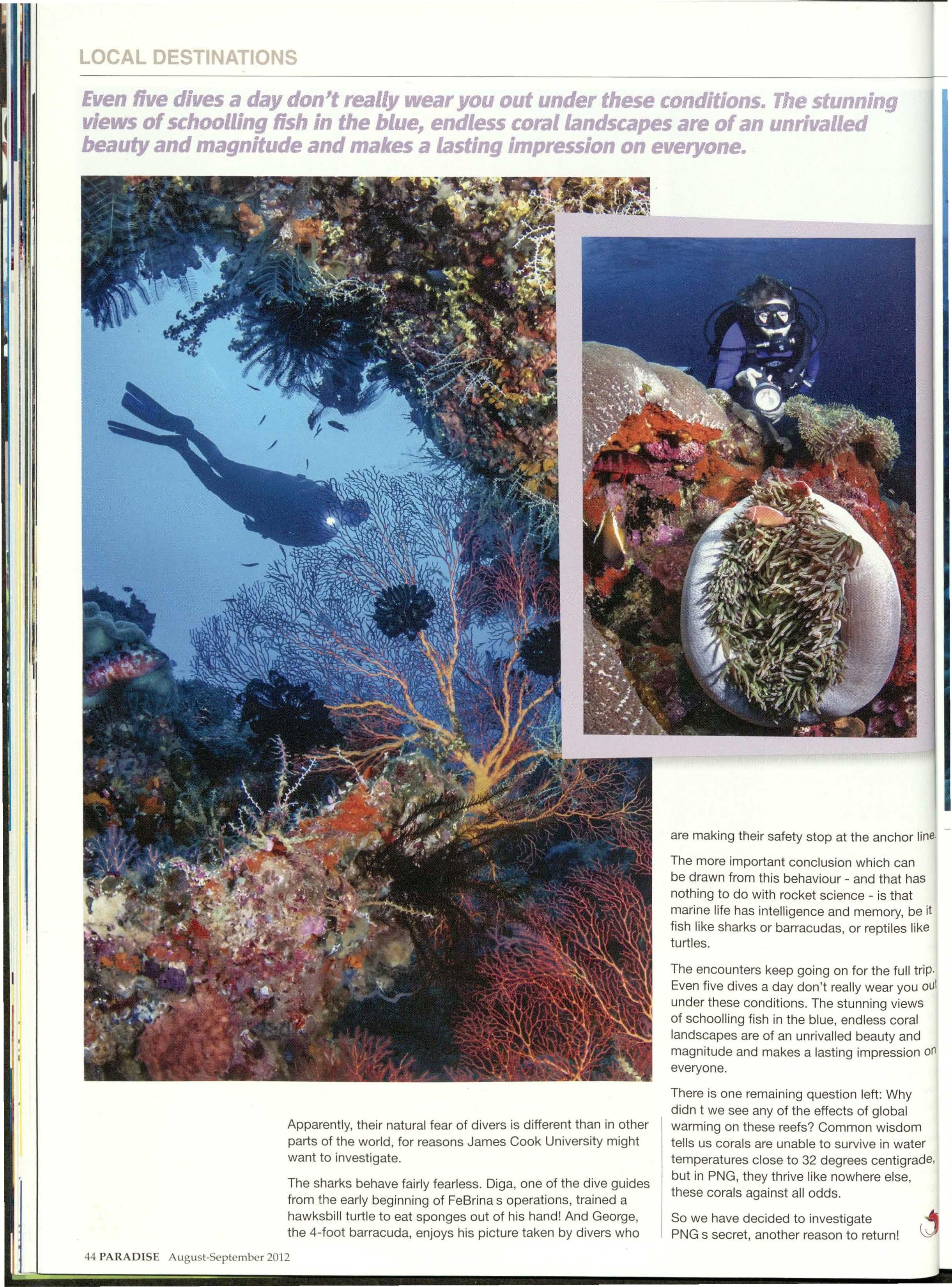
Apparently, their natural fear of divers is different than in other parts of the world, for reasons James Cook University might want to investigate.
The sharks behave fairly fearless. Diga, one of the dive guides from the early beginning of FeBrina s operations, trained a hawksbill turtle to eat sponges out of his hand! And George, the 4-foot barracuda, enjoys his picture taken by divers who
are making their safety stop at the anchor line,
The more important conclusion which can be drawn from this behaviour - and that has nothing to do with rocket science - is that marine life has intelligence and memory, be it fish like sharks or barracudas, or reptiles like turtles.
The encounters keep going on for the full trip. Even five dives a day don't really wear you out under these conditions. The stunning views of schoolling fish in the blue. endless coral landscapes are of an unrivalled beauty and magnitude and makes a lasting impression on everyone.
There is one remaining question left: Why didn t we see any of the effects of global warming on these reefs? Common wisdom tells us corals are unable to survive in water temperatures close to 32 degrees centigrade, but in PNG, they thrive like nowhere else, these corals against all odds.
So we have decided to investigate PNG s secret, another reason to return! 0J
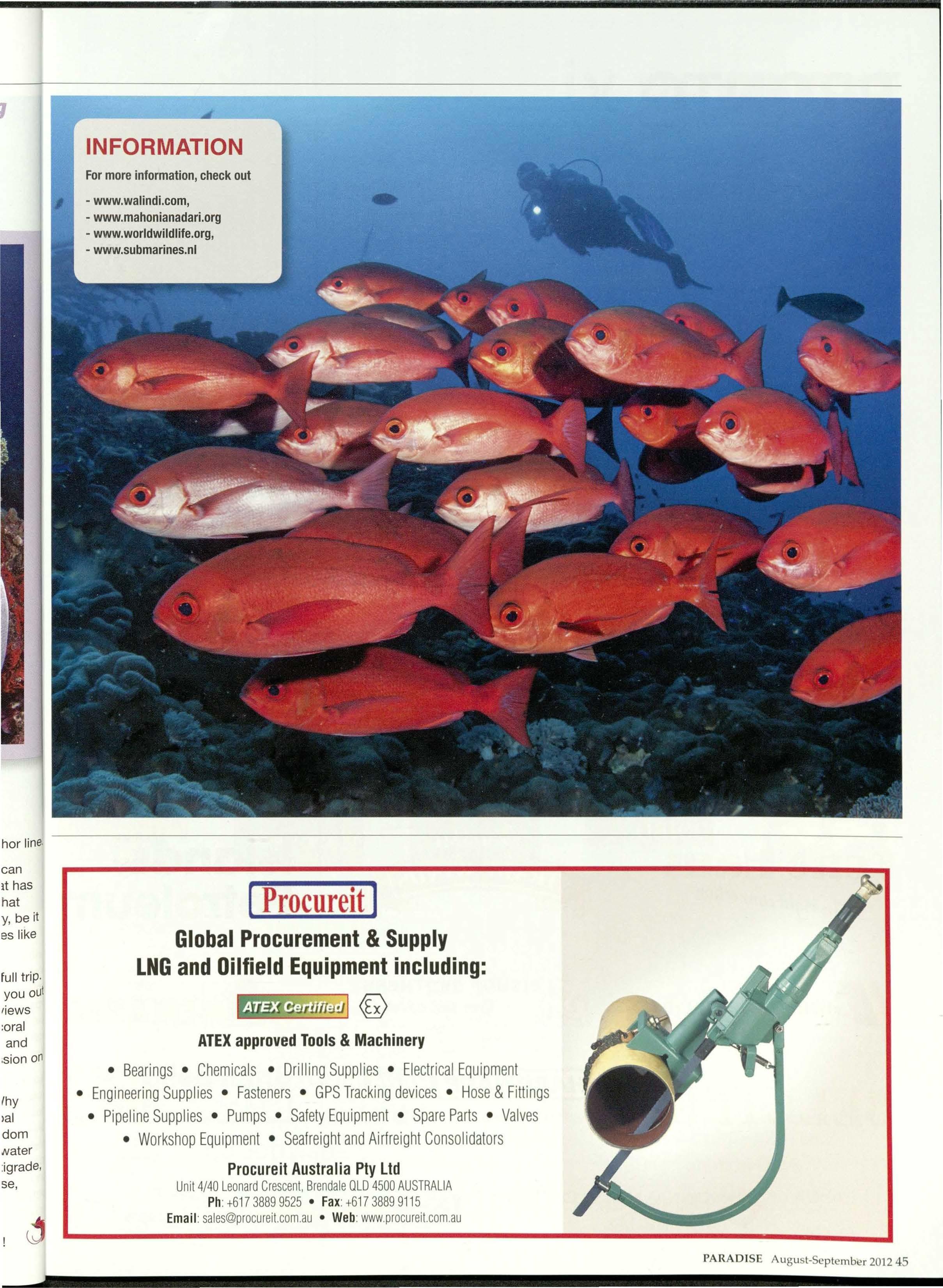
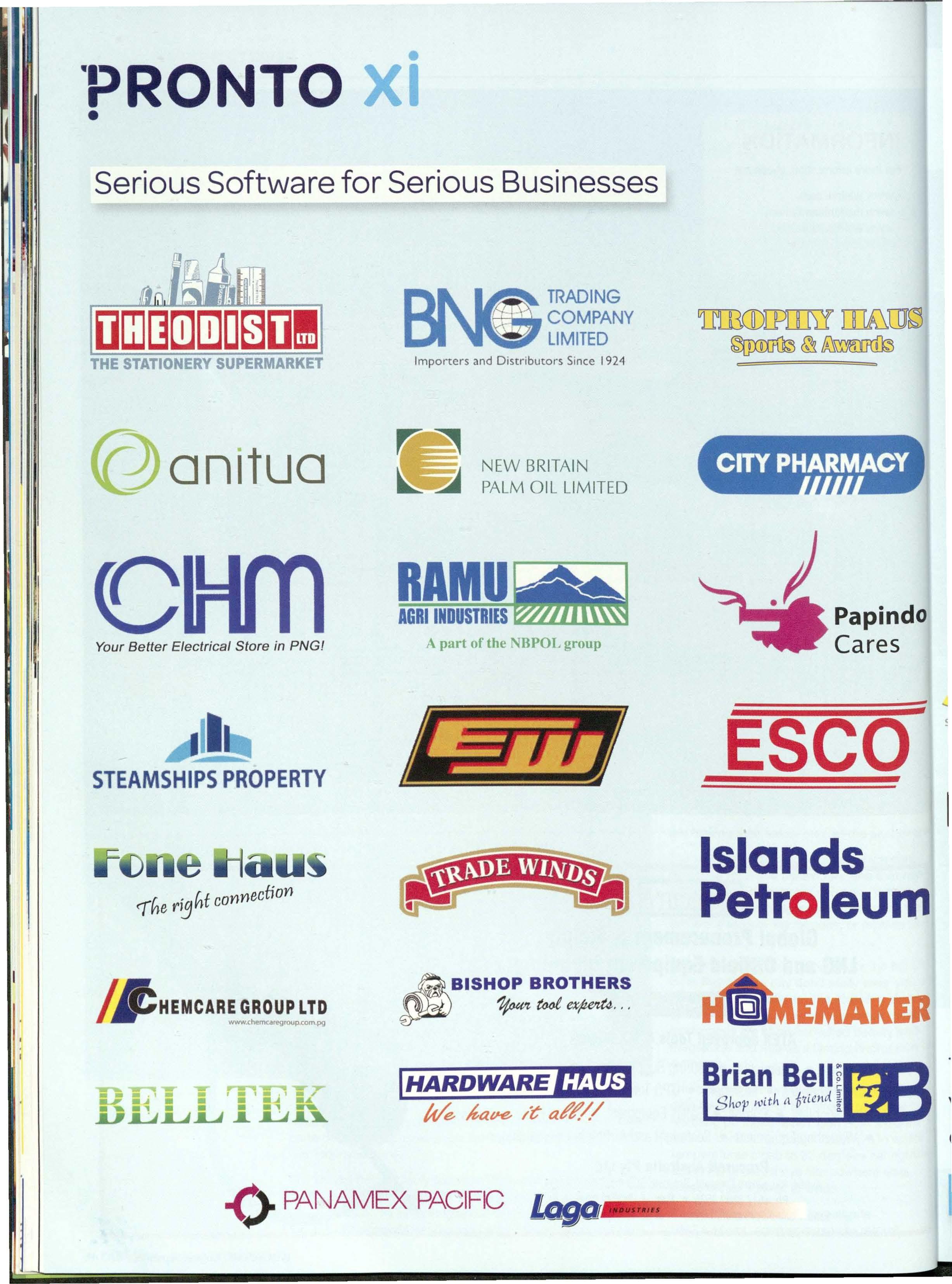
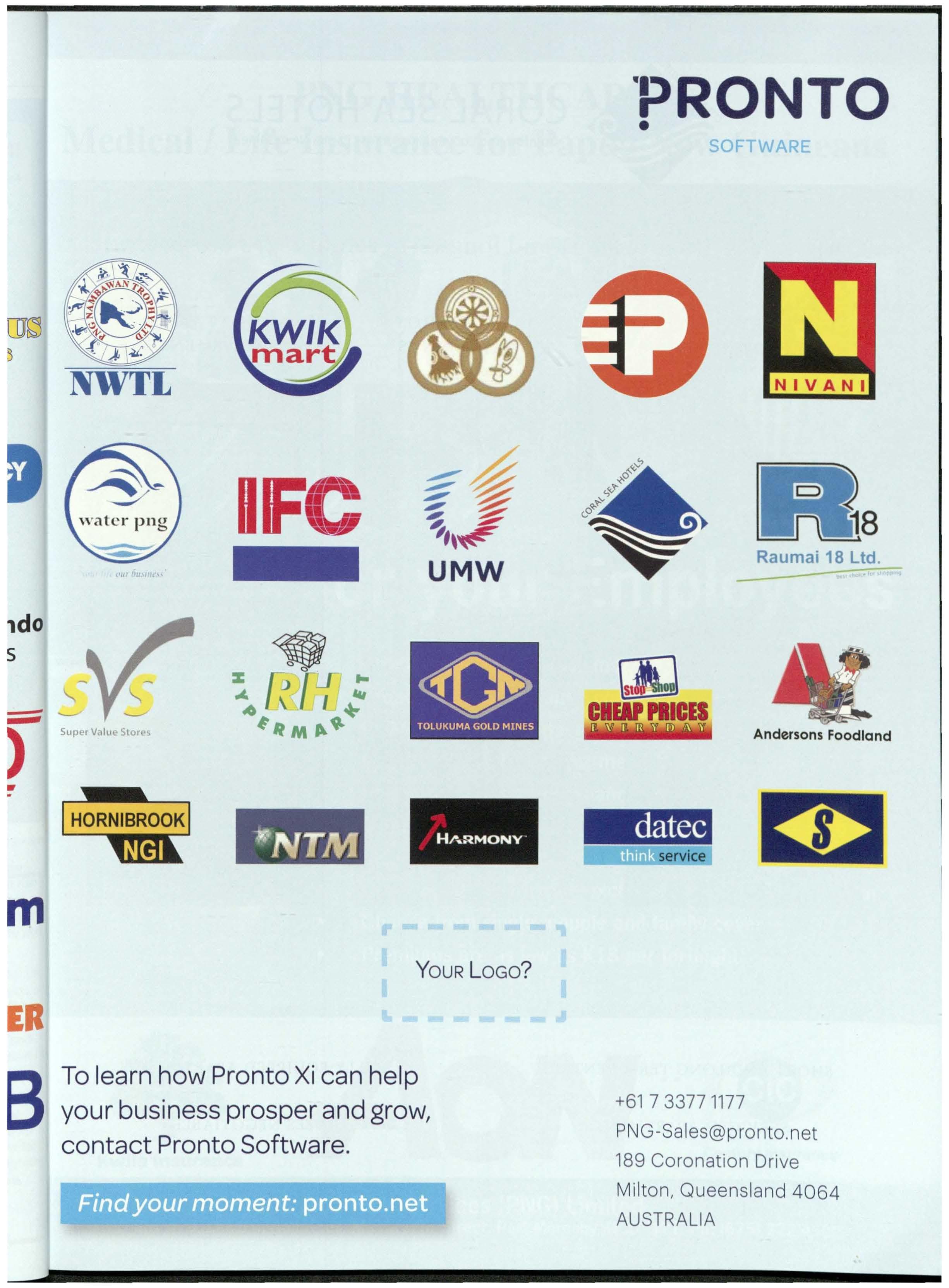
Comfort and convenience across Papua New Guinea
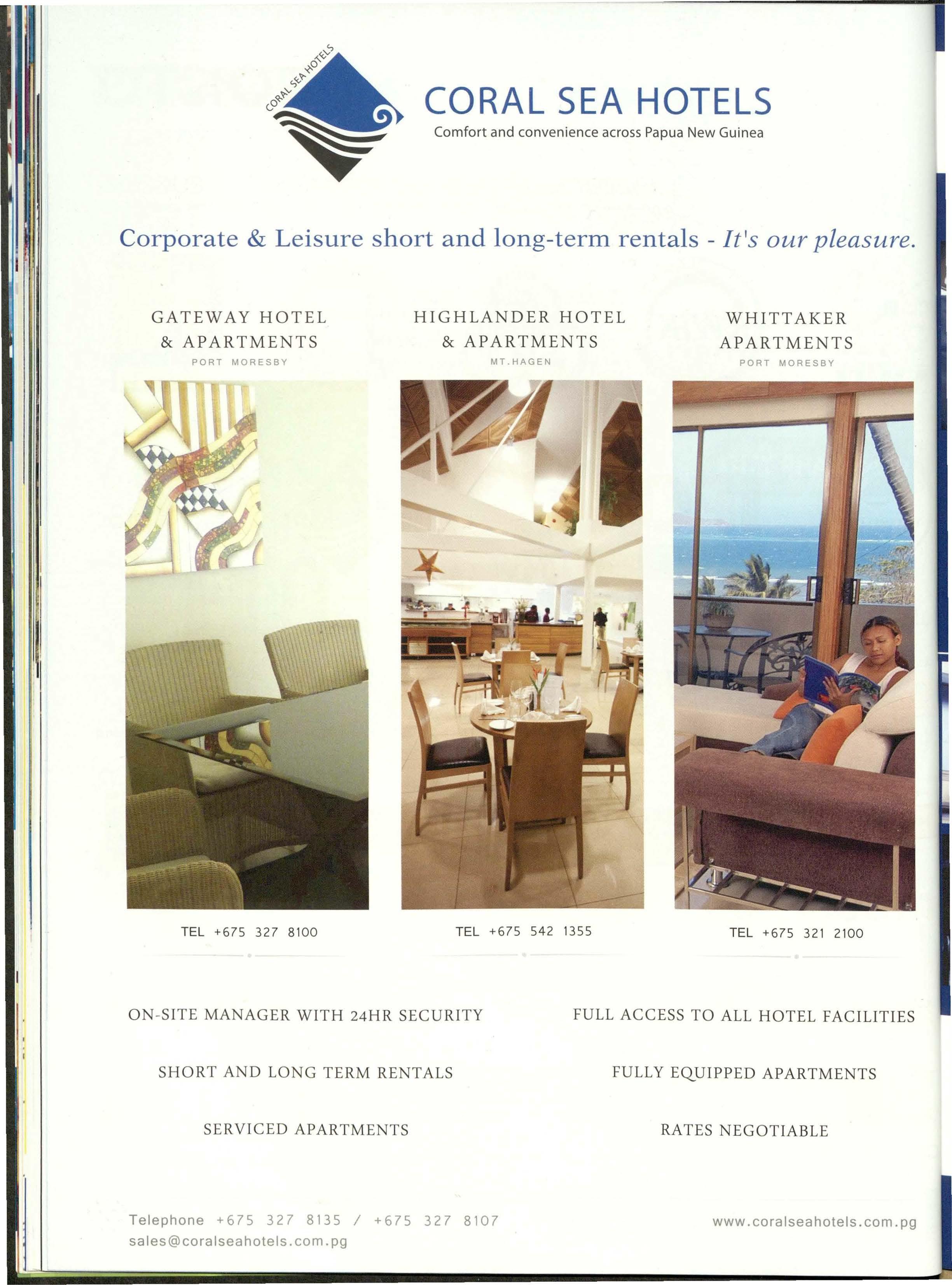
Corporate & Leisure short and long-term rentals - It's our pleasure.
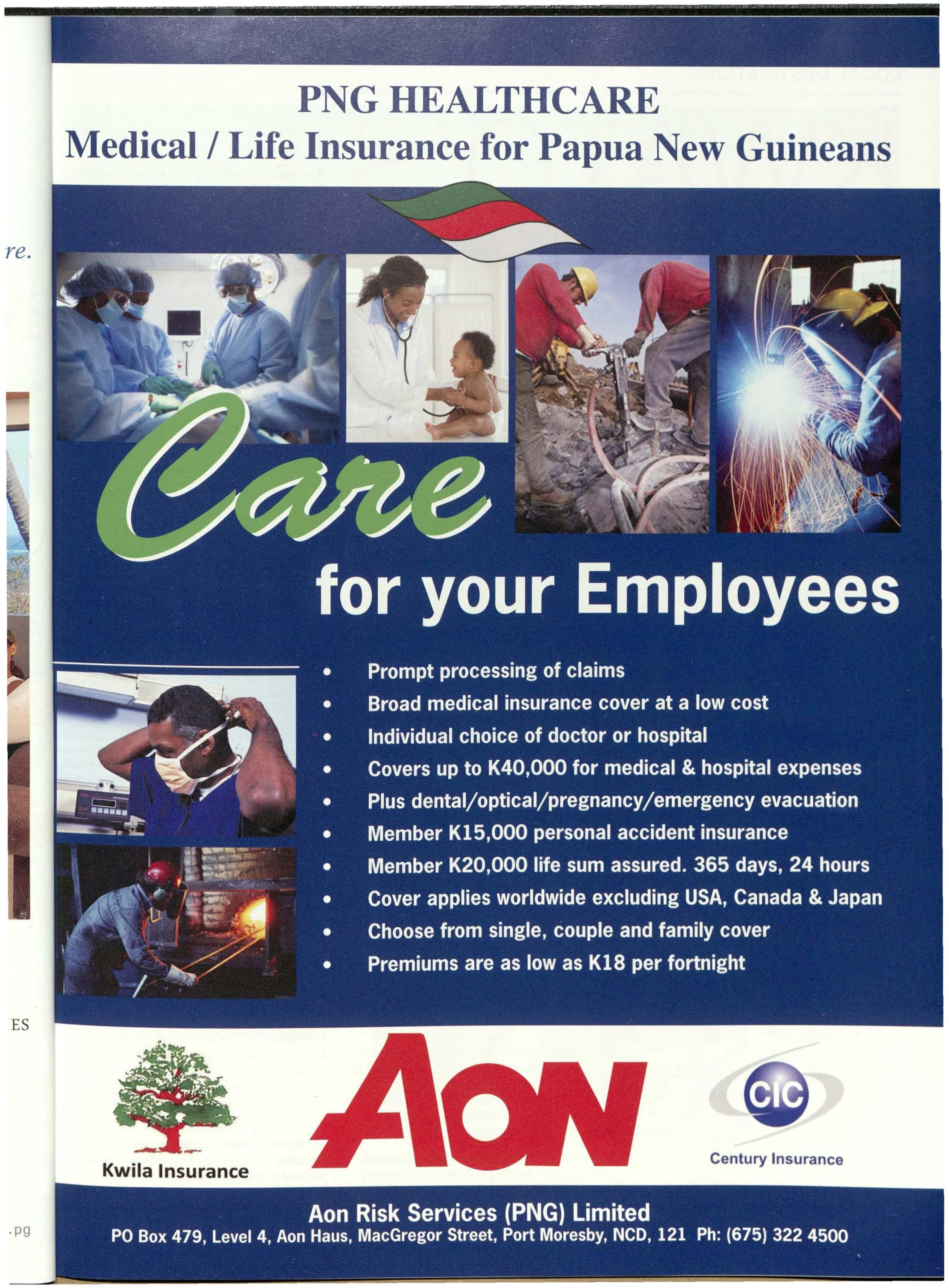
BY RANFORD ELSEY
I will return to that adventure after providing a little background.
Reverend Charles Abel and his wife Beatrice founded a non-hierarchical church in 1891 under the auspices of the London Missionary Society (LMS).
The Kwato Mission is noted for its emphasis on conversion to Christianity and equally on education and training in many practical skills. For the local men, skills taught and practised included saw milling, boat building and carpentry. The women were taught home economics and childcare. In 1918, the Kwato Mission split from the LMS and became a sett supporting association.
The nearby cannibal tribes were turned to Christianity in the 1930s. While on a fundraising visit to England in 1930, Charles Abel died in a car accident.
Survived by his wife, two sons and two daughters, they carried on the work with renewed vigour, alongside PNG colleagues.
The next few decades witnessed a period of rapid expansion in the mission. The Kwato Church building, designed by Arthur Beavis, was completed in 1937.
In 1941, Europeans were evacuated as the threat of a Japanese advance gathered momentum. The US Army took over the islan to provide R&R for their troops. Cecil Abel, Charles Abels eldest son, remained in the theatre and with his intimate local knowledge provided valuable assistance to the Allied command.
estled in the protected waters of the China Strait, Kwato Island (Lat 10.62 S, Long 150.63 E) in Milne Bay Province, PNG, is a beautiful tropical paradise. This small boomerang shaped island has a remarkable story.
Less than three kilometres west of Samarai Island, Kwato exhibits a calm and unhurried atmosphere for fewer than 20 residents belying its vibrant past.
My connection with Kwato began in 1951 and
A Following WWII, Cecil translated the New Testament of the Bible into the local language Suau. He later moved to Port Moresby as a K lecturer and was involved in early political e movements leading to PNG s independence. c Iii
His younger brother, Russell, took on the h leadership at Kwato with his wife Sheila. Thell three children, Chris, Elizabeth and Murray "' grew up on Kwato and in the outstations in T Milne Bay such as Koeabule (a suburb of n Alotau) or KB , as it is affectionately known. tt The KB Mission survives today. v.
s.
My story begins at age one in 1951 when my parents, David and Joan Elsey, moved to 'L Kwato from Sydney, Australia, to undertake n missionary work.
In addition to Sunday School and other is Vi church duties, my father took on the role tv of accountant for the thriving boat building tr industry while my mother, a registered V\ obstetrics nurse, went to work for the islands ni hospital at lsuhina. S K
For my older brother Brenton and I, it was paradise - surrounded by rainforest on a c: tropical island with white sandy beaches and Ti cool sea breezes.
As dim dims (Suau word for foreigners ),
we were fondly accepted by the locals on
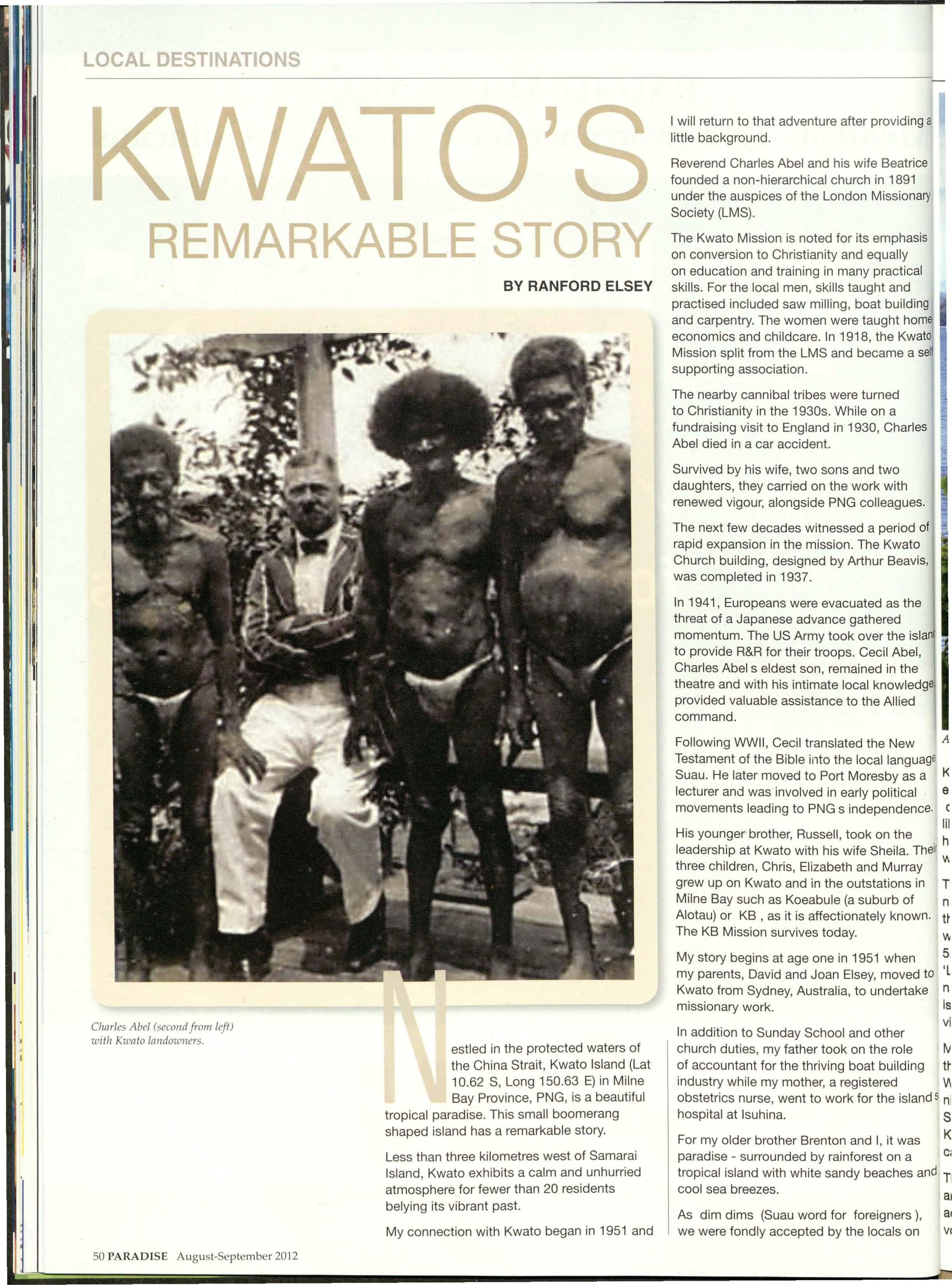
viding a eatrice 1891 ;sionary
iphasis ally 1ctical and >Uilding 1t home ,d a :harles ·o iith 1gues. ,riod of wato 3eavis,
.s the ,d he islan Abel, 1 the
~ew A viewfrom Aituha lookingeastover China Strait and SamaraiIsland. mguage
y as a Kwato and it was a very happy and carefree tical existence. I still haven't figured out whether 1dence. dim dim was a term of endearment or more h likely a description of our lack of local knowi~aeTheir how and culture but I'm happy to believe it was the former. urray )ns in J of ,nown. hen Jved to 3rtake er
The Papuans were quick to bestow on me a nickname - 'Lau galbu' (Suau for 'run all over the place and follow your own mind'). My wife, Julia, says I haven't changed much in 55 yearsl She was recently given the name 'Laulau gaibu'. We lived in a two storey house named Aituha, on the northern side of the island, close to its plateau with spectacular views of the China Strait and Samarai Island.
·ole My early schoolllng was 'patchy' to say ilding the least - maybe I wasn't very interested?
J Weekends were fun times with Saturday island 5 night games in the Mission House for all and Sunday saw a huge local gathering of the was Kwato Church with many people travelling by n a canoe from nearby islands.
ies a nd Th M' • H k s· H e 1ss1on ouse, nown as 19 ouse, was an enormous building which grew with rooms 3rs ), added to accommodate more guests and s on volunteer workers.

Davidand JoanElseywithfamily at Aituha, Kwato.
During the five years spent on Kwato, we travelled several times to Australia for short holidays and for my younger brother Howard's birth in 1954.
We returned to Kwato for a final term. The Kwato community had grown to several hundred residents, short-term volunteers, tradesmen, hospital patients and guests. It was a hive of activity and a centre for learning and health care, in addition to a growing Kwato Mission Church. In 1956, our family left Kwato and returned to Sydney.
In 1968, the administrative capital of Milne Bay Province was moved from Samarai to Alotau, Milne Bay, to the mainland - the catalyst in the 1970s for the rapid decline of Samarai and Kwato as centres for trade and learning. Chris Abel and wife Barbara with two young children moved to Alotau several years before PNG's Independence on 16 September, 1975.
My father returned to Kwato for a long-awaited
visit in the early nineties and reported that he was disappointed to see it was a shadow of its former self.
Although I had fond memories of Kwato, it was not until some 50 years after leaving that interest was sparked for a possible return sometime in the next few years when work permitted. When asked what my wife would like for her 60th birthday, she said a holiday that included a visit to Kwato. I took little convincing and set about planning.
The web provided links to Niugini Holidays and I spoke initially with Karen in the Cairns office. She offered to put me in touch with several contacts regarding Kwato. She was so helpful and enjoyed being part of the exchanges that followed. Emails came thick and fast.
Soon I was completely overwhelmed with the wonderful kindness and assistance provided by Vilia from Papua New Guinea Dive; Nori
from Air Niugini; and Rita from Milne Bay fi Magic Tours. Others chimed in as memories t-unfolded. r-.
Links to the early 1950s were plentiful, with c friends and relatives recalling times on Kwato, tc Heidi from Niugini Holidays' Sydney office put together an exciting itinerary and we flew out of Sydney on Air Niugini on 25 June 2011. c "'
We were delighted to meet up with our s new-found friends in Port Moresby during an tl overnight stopover, chatting for several hours tl about time spent on Kwato. tl
Nori and Villa have holidayed on Kwato with 1' Lenah and Villa's grandparents, Merarl and s Vera Dickson. A p
Lenah remembers attending Brenton's 8th birthday party on Kwato. Josla Lebasi, Vilia's great grandfather and Lenah's grandfather, was Rev Charles Abel's right hand man when V, Kwato was established. o
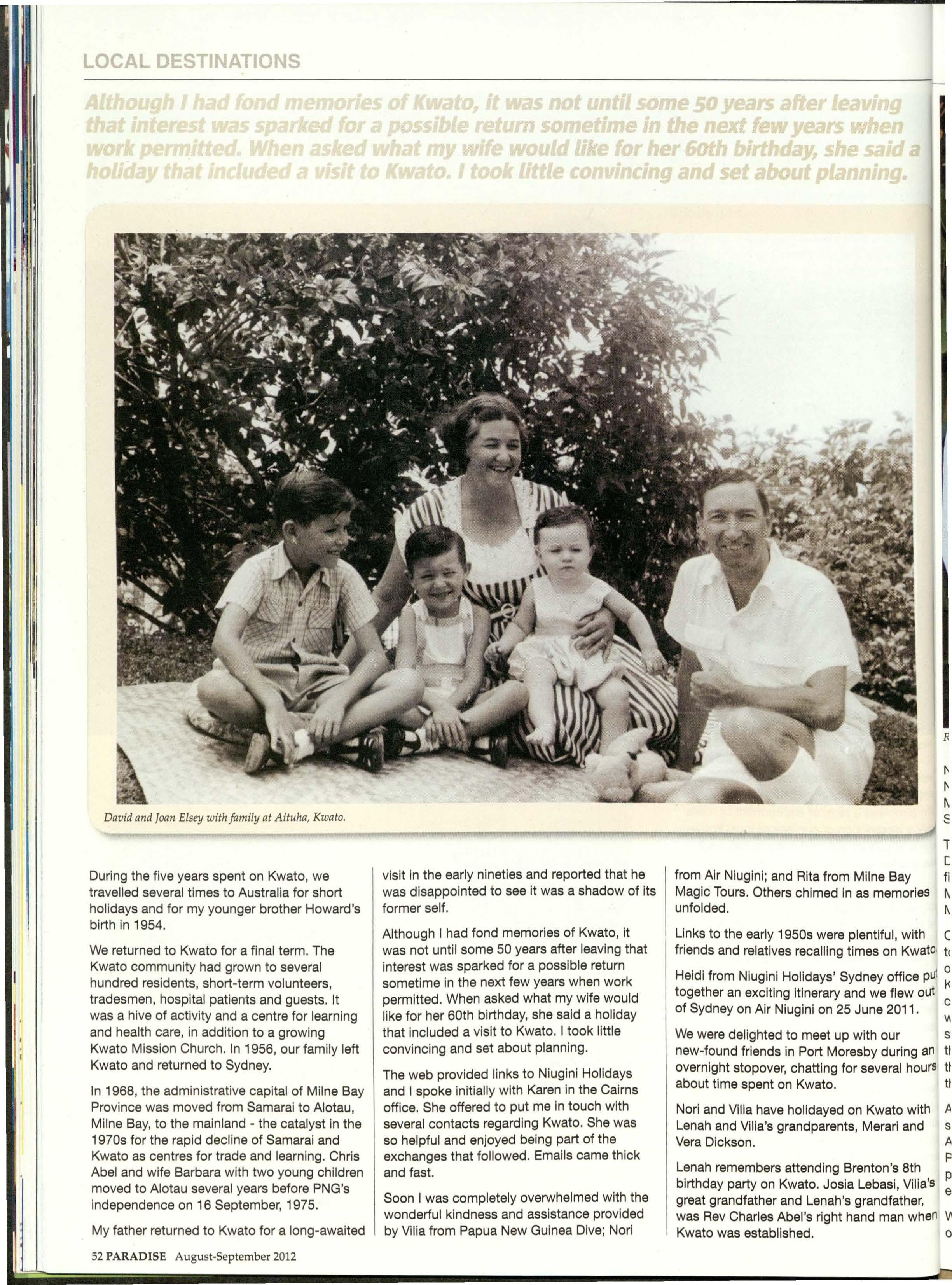
3ay 11ories
RanfordElseyand wifeJuliawith friends in Port Moresby.
Nori s grandparents, Maniana Bwagagaia and Nori Maniana were church workers on Kwato Mission during the 1950s and her uncle, Salesi, still lives in the family home, Tupi.
Two of Nori s aunts trained as nurses~alai, (Melbourne trained, becoming the first certified Papuan nurse) and Weli (Port Moresby trained) - had worked in Port Moresby and other Milne Bay towns.
, with On retirement, Weli provided nursing advice 1 Kwato, to th e local community from the family home ffice put on Kwato. They spoke fondly of visits to lew out Kwato and remarked that it was sad to see the 01 1. community numbers dwindle. But for those who_remained,the Kwato hospitality and spirit still lives on. They will never forget the influence iring an that Kwato has had on them and proudly state 31hours that 'The Kwato Way' is very much present in their lives today.
:o with ·1and , 8th , Villa's 1ther, ,n when
Air Niugini flew us to Gurney, the airport servicing Alotau. What a pleasant surprise! Alotau is probably PNG's best kept secret. People are friendly and outgoing and we felt perfectly at ease walking around town and enjoying a visit to the markets.
We made our base camp at Napatana Lodge, owned by Murray Abel and Gretta Kwasnicka.
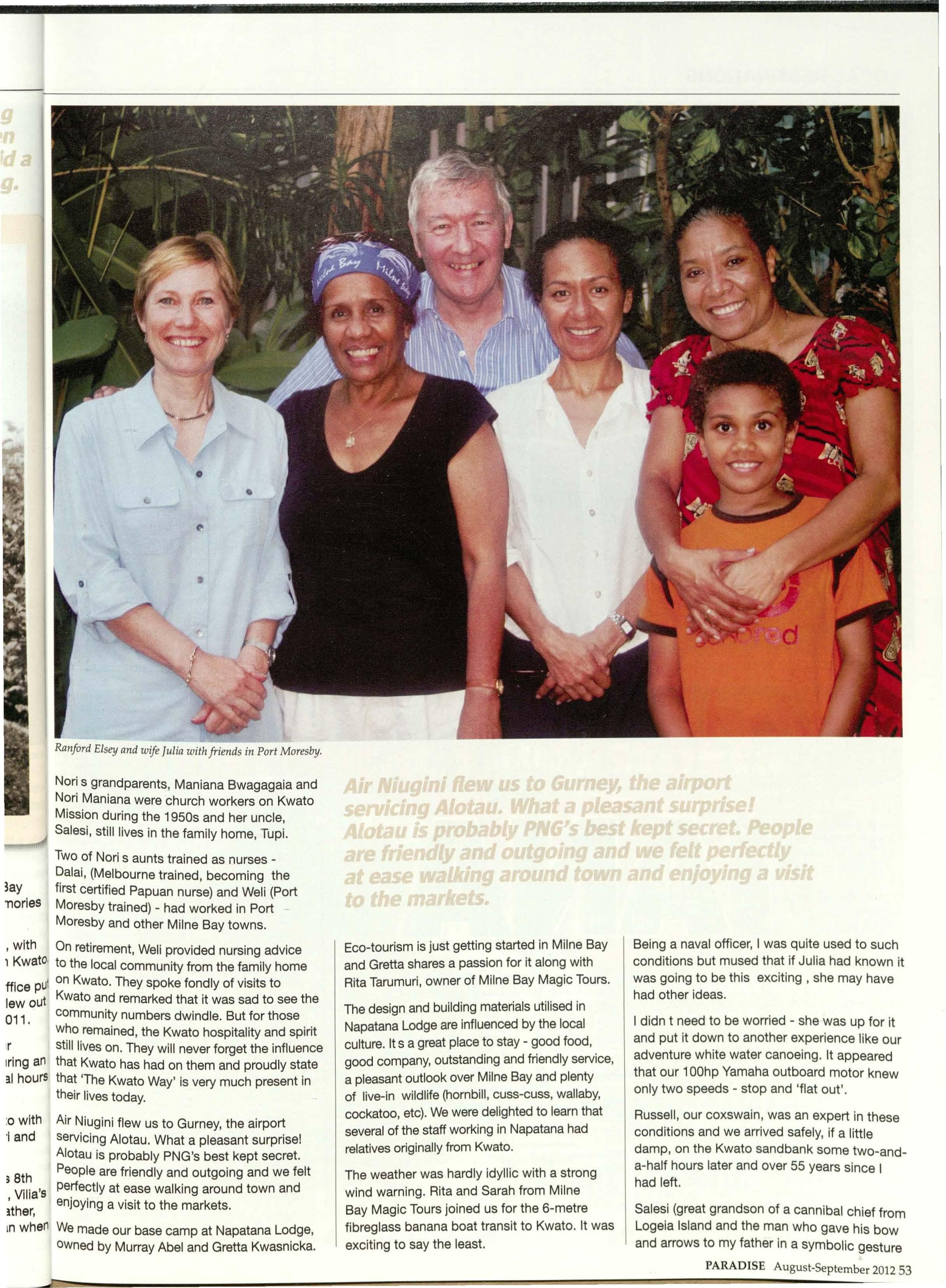
Eco-tourism is just getting started in Milne Bay and Gretta shares a passion for it along with Rita Tarumuri, owner of Milne Bay Magic Tours.
The design and building materials utilised in Napatana Lodge are influenced by the local culture. Its a great place to stay - good food, good company, outstanding and friendly service, a pleasant outlook over Milne Bay and plenty of live-in wildlife (hornbill, cuss-cuss, wallaby, cockatoo, etc). We were delighted to learn that several of the staff working in Napatana had relatives originally from Kwato.
The weather was hardly idyllic with a strong wind warning. Rita and Sarah from Milne Bay Magic Tours joined us for the 6-metre fibreglass banana boat transit to Kwato. It was exciting to say the least.
Being a naval officer, I was quite used to such conditions but mused that if Julia had known it was going to be this exciting , she may have had other ideas.
I didn t need to be worried - she was up for it and put it down to another experience like our adventure white water canoeing. It appeared that our 100hp Yamaha outboard motor knew only two speeds - stop and 'flat out'.
Russell, our coxswain, was an expert in these conditions and we arrived safely, if a little damp, on the Kwato sandbank some two-anda-half hours later and over 55 years since 1 had left.
Salesi (great grandson of a cannibal chief from Logeia Island and the man who gave his bow and arrows to my father in a symbolic gesture
PARADISE August-September 2012 53
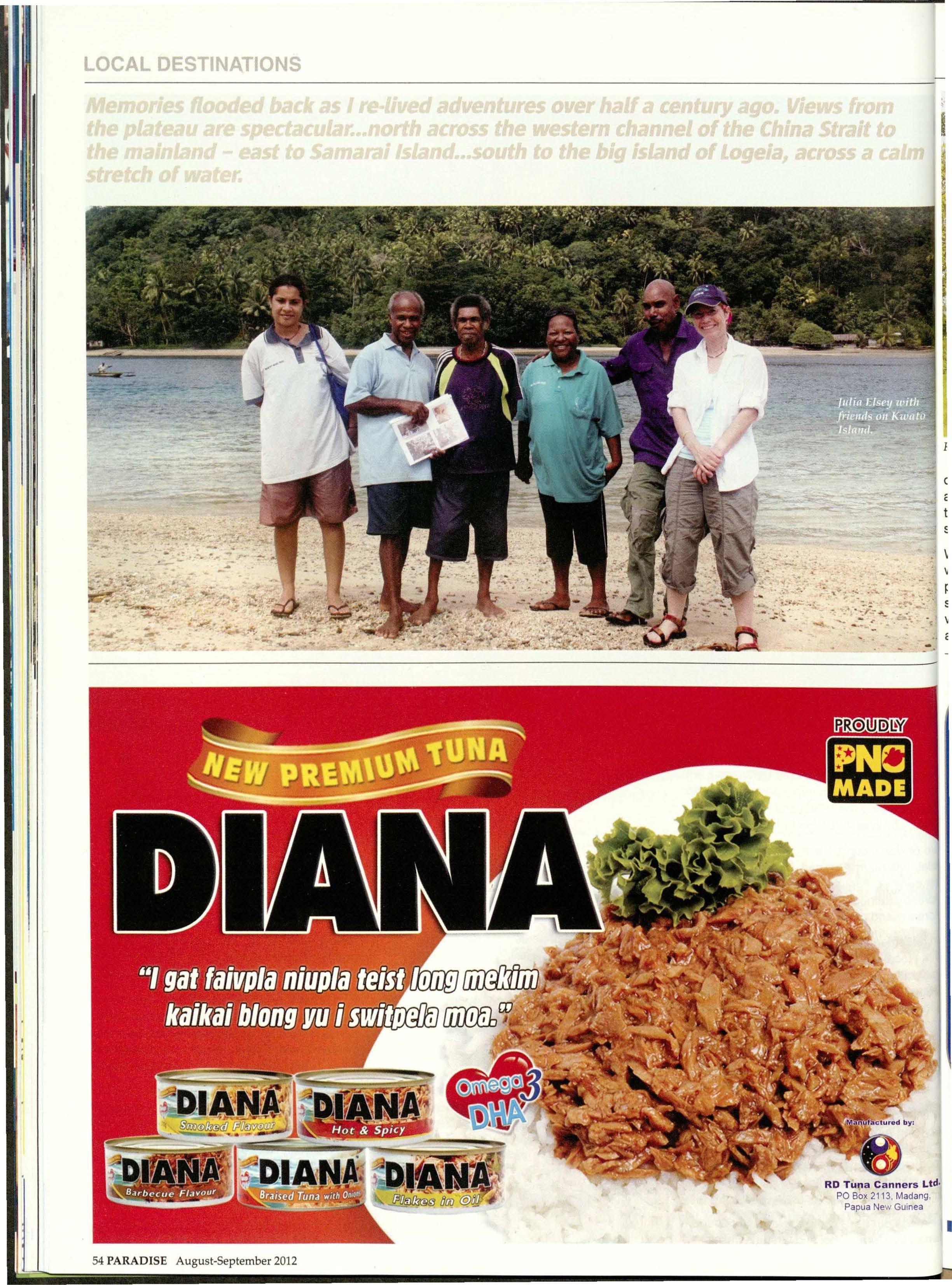
Fully restoredKwato Church.
on his conversion to Christianity) and several other residents were there to meet us and the hospitality shown was humbling.
We enjoyed the next two hours wandering up the winding road past Aituha and the remains of the schoolhouse, to the island s plateau where Big House once stood, and across to the fully restored Kwato
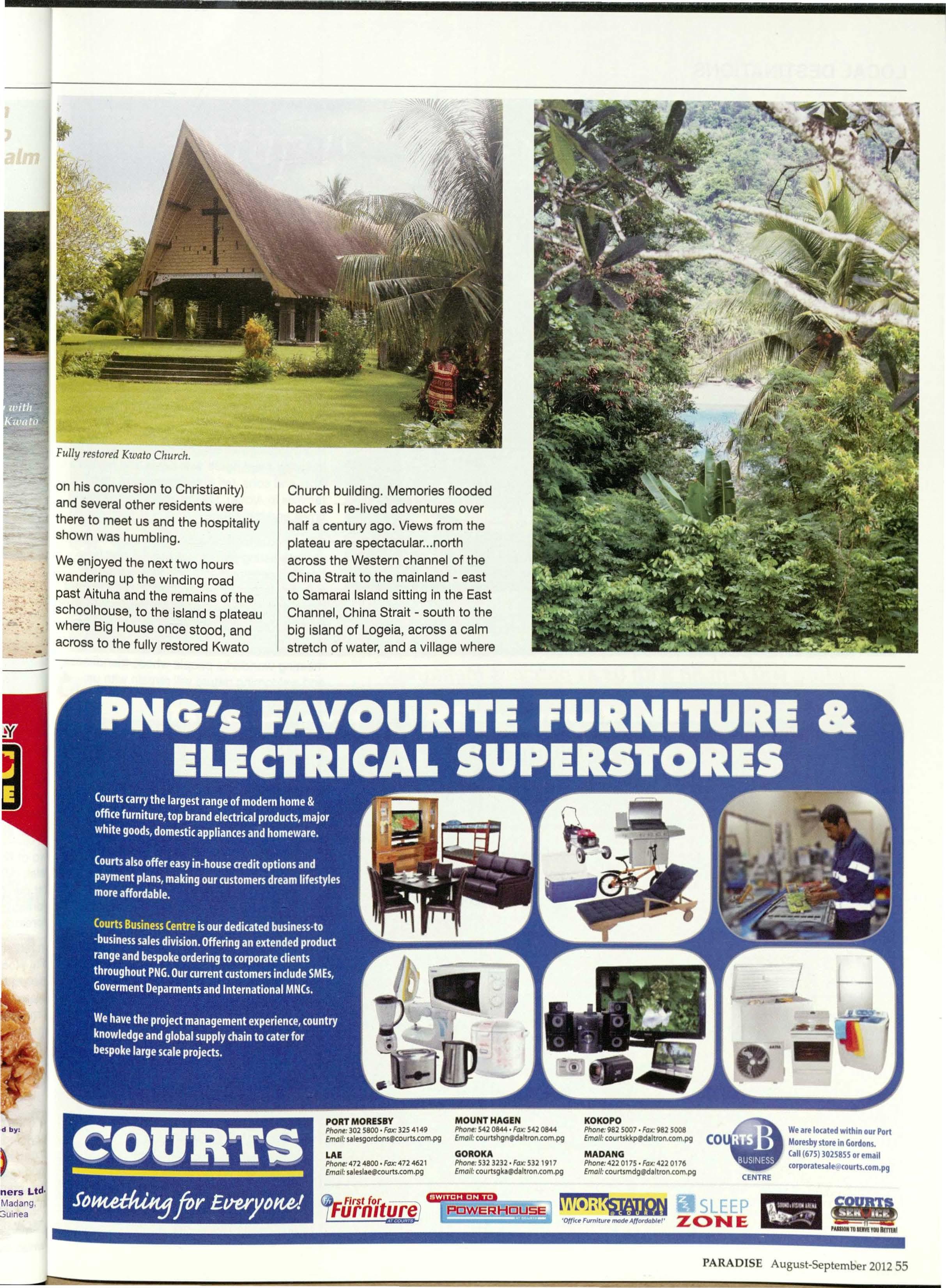
Church building. Memories flooded back as I re-lived adventures over half a century ago. Views from the plateau are spectacular north across the Western channel of the China Strait to the mainland - east to Samarai Island sitting in the East Channel, China Strait - south to the big island of Logeia, across a calm stretch of water, and a village where
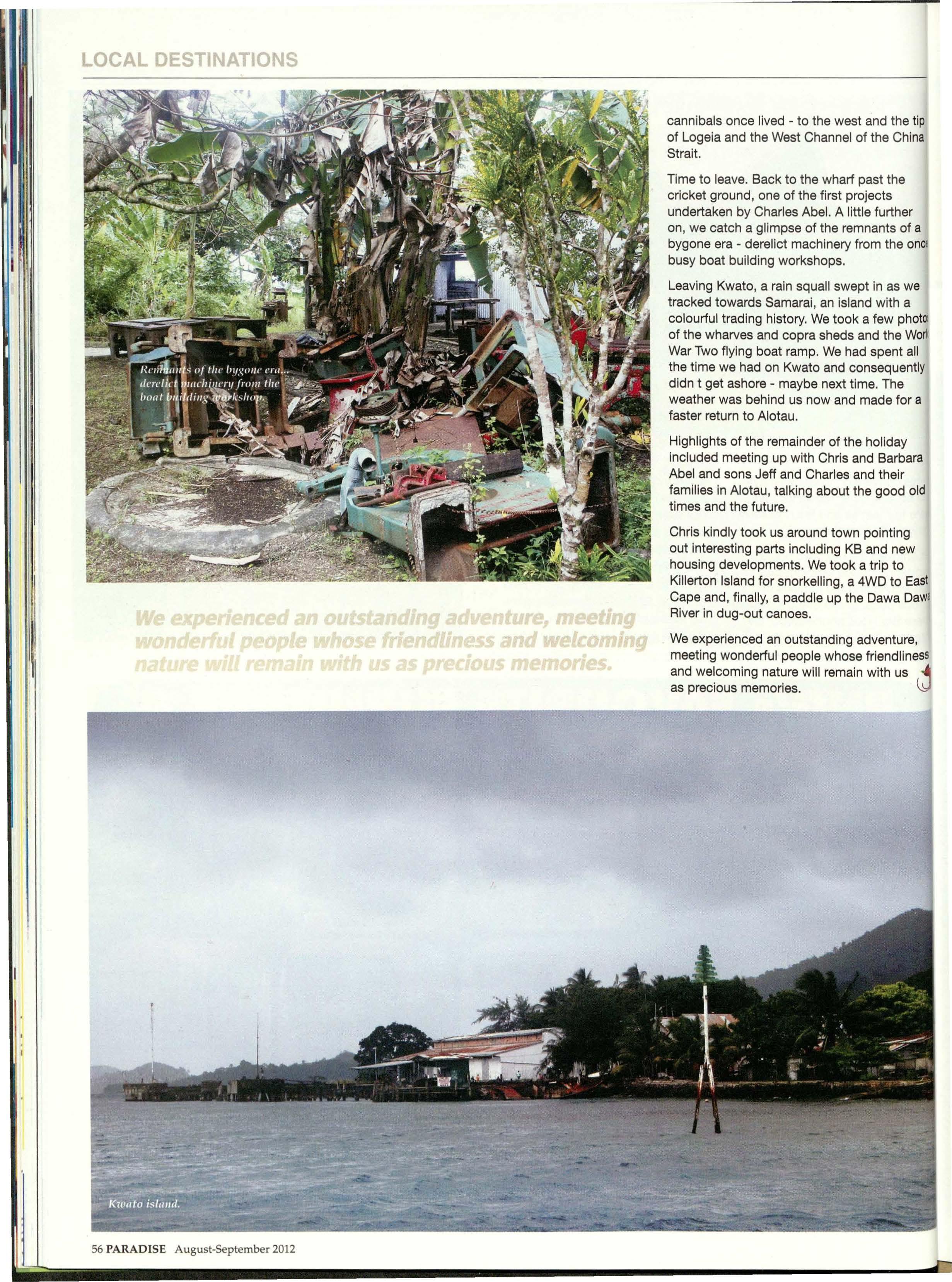
cannibals once lived - to the west and the tip of Logeia and the West Channel of the China Strait.
Time to leave. Back to the wharf past the cricket ground, one of the first projects undertaken by Charles Abel. A little further on, we catch a glimpse of the remnants of a bygone era - derelict machinery from the one! busy boat building workshops.
Leaving Kwato, a rain squall swept in as we tracked towards Samarai, an island with a colourful trading history. We took a few photOI of the wharves and copra sheds and the Worll War Two flying boat ramp. We had spent all the time we had on Kwato and consequently didn t get ashore - maybe next time. The weather was behind us now and made for a faster return to Alotau.
Highlights of the remainder of the holiday included meeting up with Chris and Barbara Abel and sons Jeff and Charles and their families in Alotau, talking about the good old times and the future.
Chris kindly took us around town pointing out interesting parts including KB and new housing developments. We took a trip to Killerton Island for snorkelling, a 4WD to East Cape and, finally, a paddle up the Dawa Dawe River in dug-out canoes.
We experienced an outstanding adventure, meeting wonderful people whose friendliness and welcoming nature will remain with us as precious memories.
I the tip 3 China the s rther ts of a the onci as we ith a N phot01 heWorl. 3nt all ~uently "he 3 for a jay arbara 1eir ,od old ting new to to East ,a Dawe
1ture, ,dliness us
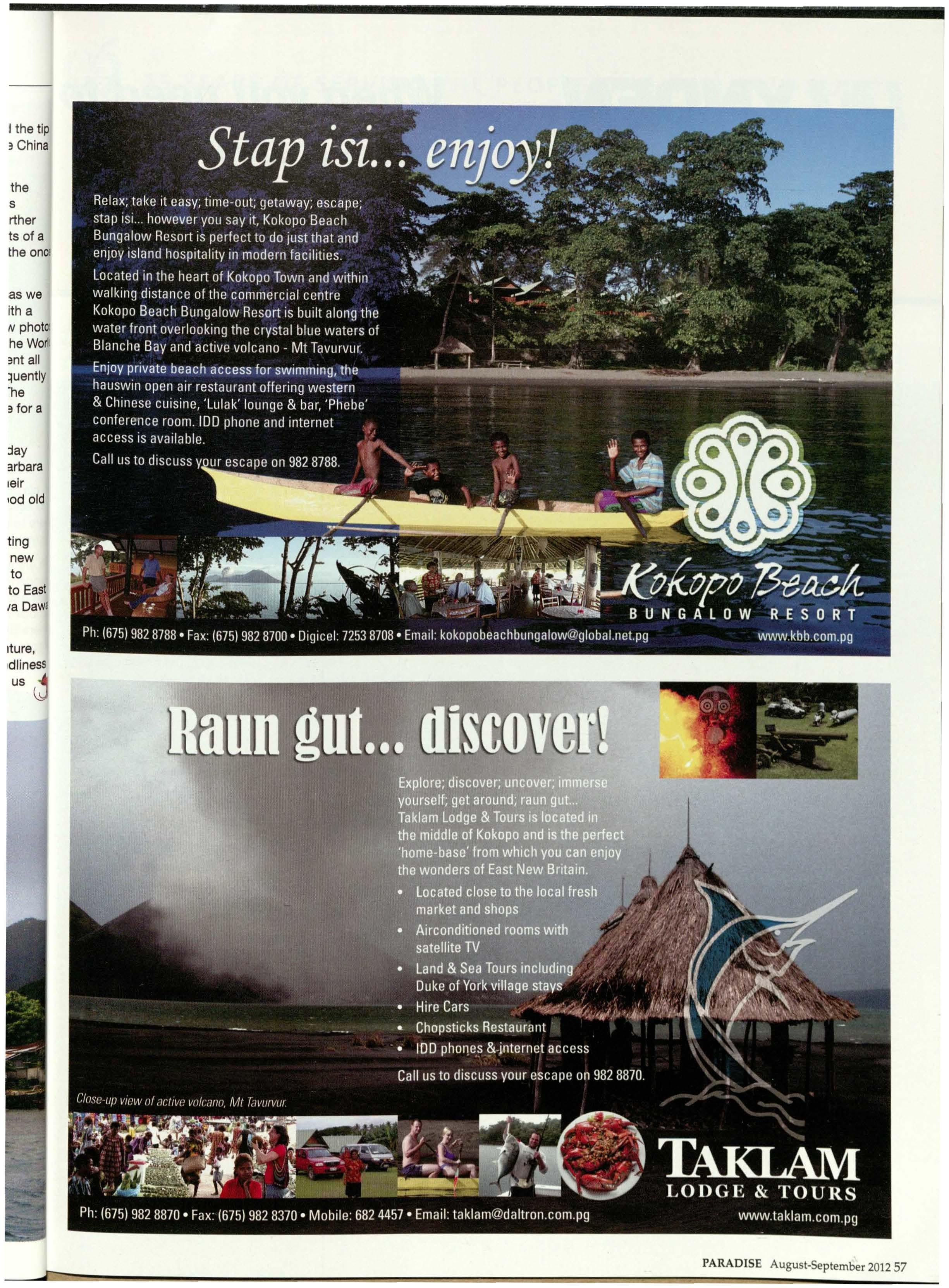
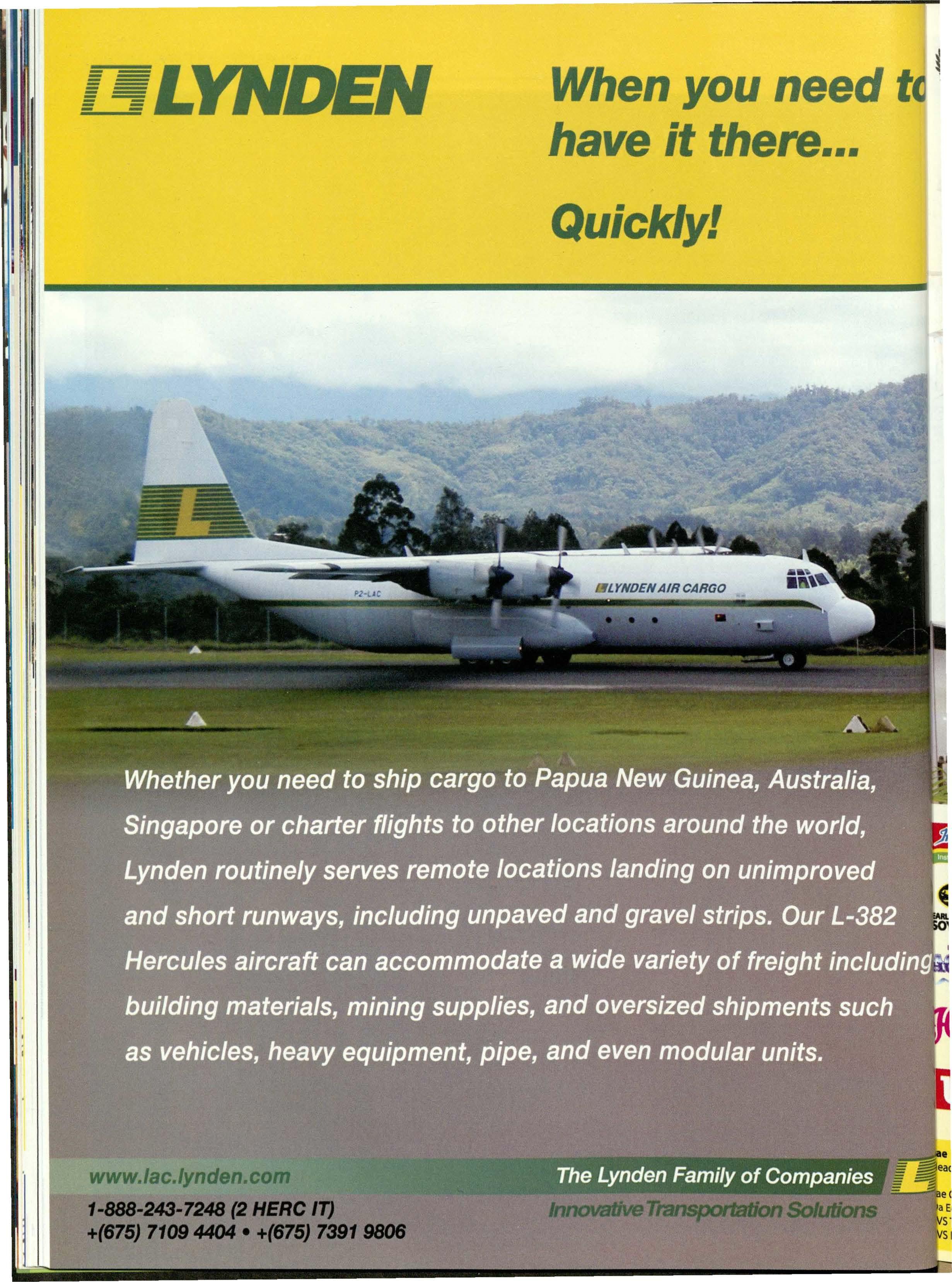
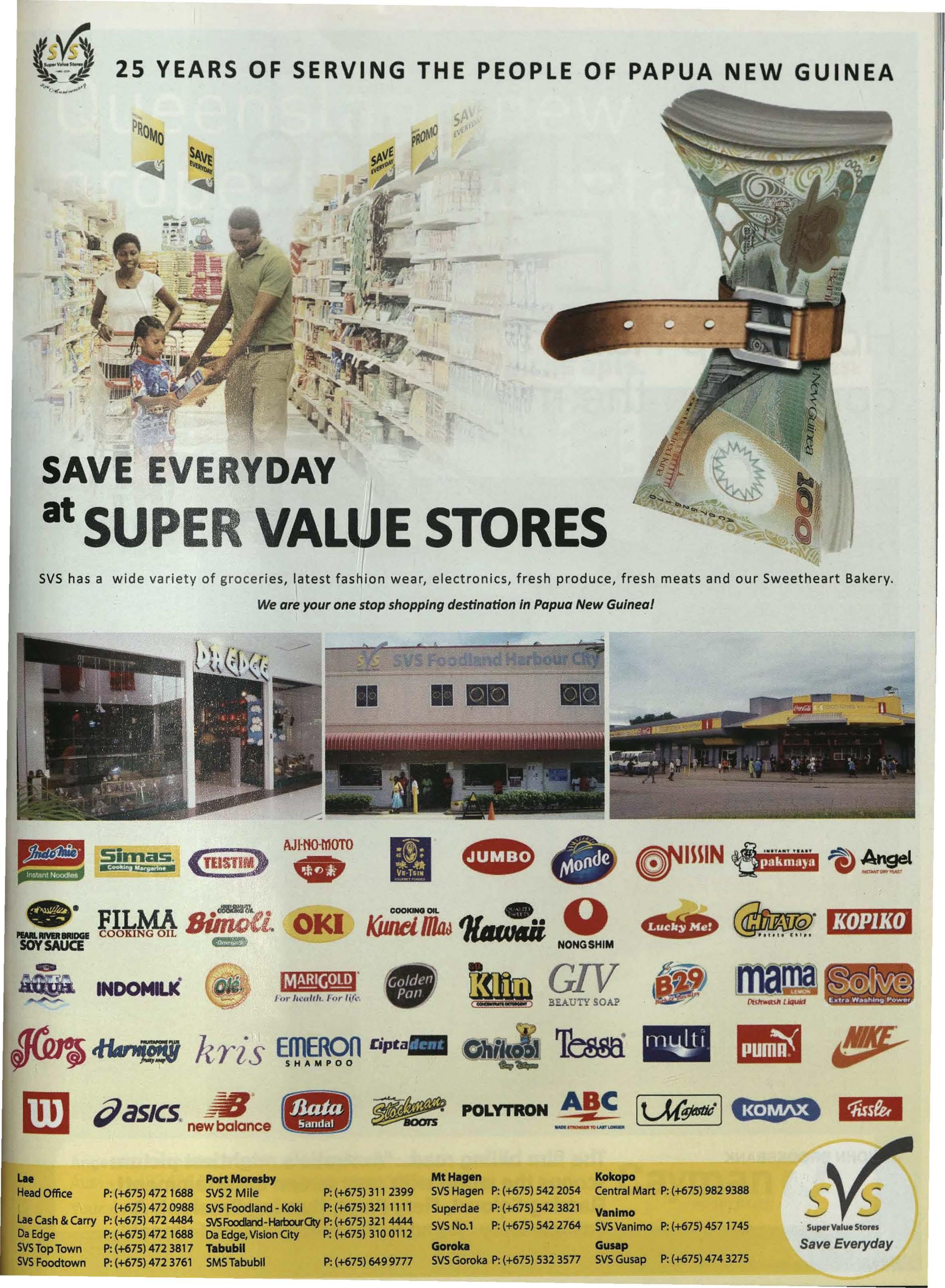
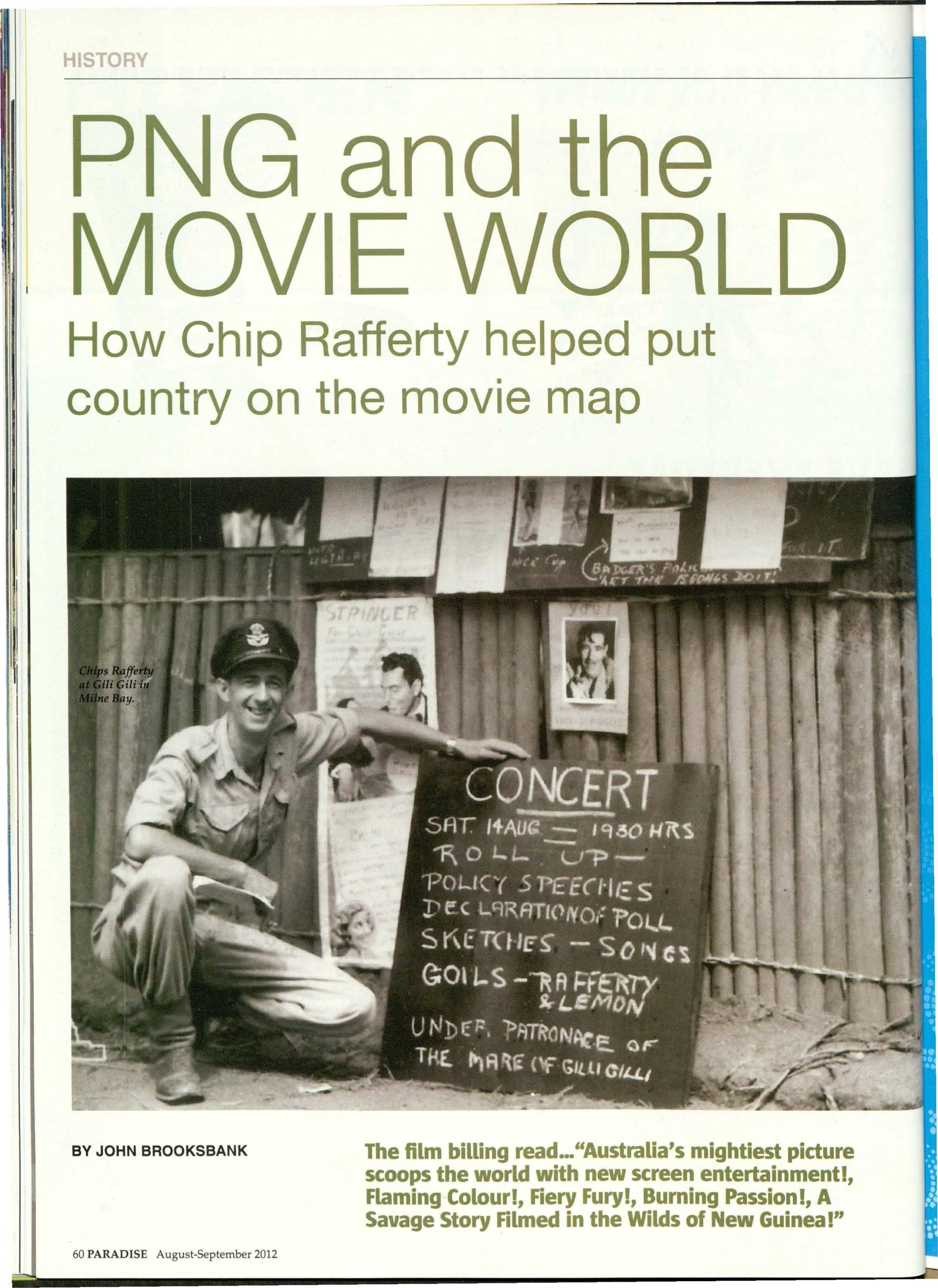
BYJOHNBROOKSBANK

Investor support with finance, legals, leasing & management
Monthly appointments available in Port Morseby, please contact us for details
The movie referred to was Walk into Paradise , which was produced by and based on a story line devised by Chips Rafferty. He also starred in the movie.
It was the first bilingual colour film made in Australia - most of the dialogue being in English or Melanesian pidgin.
Rafferty epitomised the national Aussie larrikin image of his time - a tall, tanned and rugged resident of the outback, able to manage any situation with irreverent wit and no-nonsense resourcefulness.
The Hugh Jackman of the 1950s, he was sometimes referred to as Australia s Cary Grant, mainly because of his local popularity.
Rafferty had a number of links to Papua New Guinea, starting with his time as an RAAF flying officer stationed at airstrips in Milne Bay during World War Two. However, this would not be the last time he would experience the country.
Born John William Pilbean Goffage in Broken Hill, New South Wales, in 1909 and acquiring the nickname Chips as a schoolboy, he studied at.Parramatta Commercial High School and had a 1variety of jobs - miner, sheep shearer and drover - before getting a part as an extra in the 1938 film Ants in His Pants.
Rafferty gained roles in the 1940 film Dad Rudd, M.P and Charles Chauvel's Australian light horse classic, Forty Thousand Horsemen, before he enlisted in the air force the next year. He was transferred in 1943 to the RAAF Special Duties Branch where he was involved in troop entertainment and propaganda
62 PARADISE August-September 2012

activities. A year later, he took time off to play a leading role in The Rats of Tobruk, alongside Peter Finch.
He featured in a number of films including The Overlanders, Bush Christmas, Kangaroo, Bitter Springs and Eureka Stockade (released as Massacre Hill in the United States!) before he was lured by the glamour of Hollywood. Here, during the next decade, he appeared in The Desert Rats with Richard Burton, The Sundowners with Robert Mitchum & Deborah Kerr, Mutiny on the Bounty with Marlon Brando and somewhat bizarrely in 1967 with Elvis Presley in Double Trouble.
Rafferty formed his own production company to make Australian films which were not as well known nor successful as others he had appeared in across the Pacific. But they were a real boost to the Australian film industry of the time.
~walkInto
Paradise,was a film that glamourised the role of the Australian administrationin Papua New Guinea,bringing changeto the country, overcomingchallenges of a difficultenvironment and managingcultures with non-Europeanvalue systems..
'Walk into Paradise' was a film that glamourised the role of the Australian administration in Papua New Guinea, bringing change to the country, overcoming challenges of a difficult envi onment and managing cultures with non-European value systems.
The movie was a French/Australian coproduction and, since Australia had no colour film processing facilities at the time, the film was processed and edited in Paris, where it ended up with both English and French soundtracks.
Shot on location in Port Moresby, Madang, along the Sepik River, and in Goroka, the film's plot involved incidents drawn from some of the activities of the early pioneer patrol officers and gold prospectors who had opened up ome of these areas only a few decades afore.
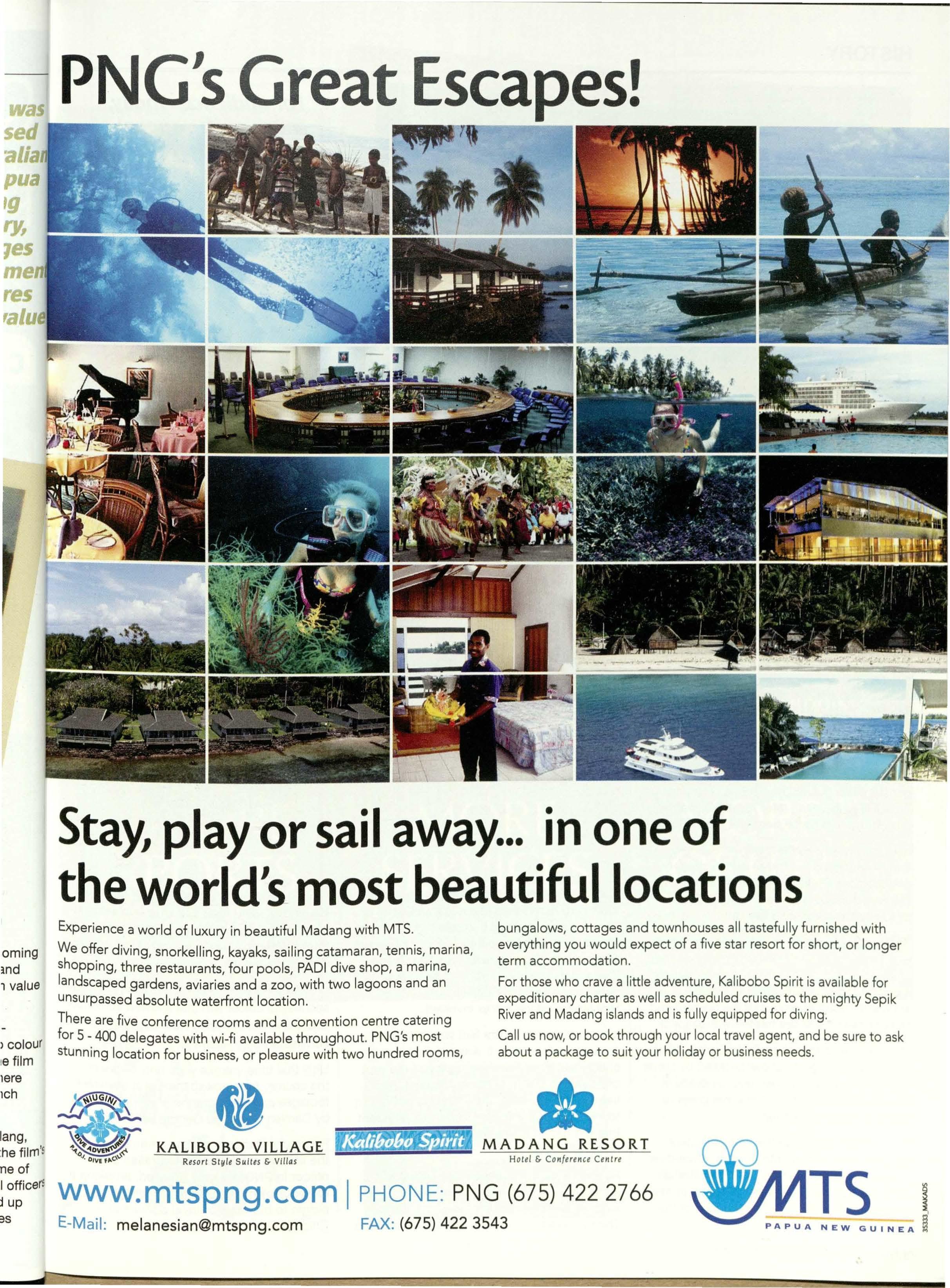
Experience a world of luxury in beautiful Madang with MTS.
We offer diving, snorkelling, kayaks, sailing catamaran, tennis, marina, shopping, three restaurants, four pools, PADI dive shop, a marina, landscaped gardens, aviaries and a zoo, with two lagoons and an unsurpassed absolute waterfront location.
There are five conference rooms and a convention centre catering for 5 - 400 delegates with wi-fi available throughout. PNG's most stunning location for business, or pleasure with two hundred rooms,
bungalows, cottages and town houses all tastefully furnished with everything you would expect of a five star resort for short, or longer term accommodation.
For those who crave a little adventure, Kalibobo Spirit is available for expeditionary charter as well as scheduled cruises to the mighty Sepik River and Madang islands and is fully equipped for diving. Call us now, or book through your local travel agent, and be sure to ask about a package to suit your holiday or business needs.
The challenging aspects of the film were played up in its release in the United States where it was titled 'Walk in to Hell' - a quite unfair and more than over-the-top marketing gimmick - necessary to make it sufficiently appealing for American audiences.
The film featured the attractive Francoise Christophe as a visiting UN malaria specialist and romantic interest Louise Demarcet, but many of the characters such as Captain Richard Davis and District Officer Fred Kaad, villagers and members of the PNG constabulary played themselves. The principal Papua New Guinean role, Towalaka, was played by Regimental Sergeant Major Somu.
Needless to say, Rafferty played the heroic and experienced Australian administration patrol officer, Steve McAllister, which led to the French release of the film being titled L'Odyssee du Capitaine Steve.
Whilst not wishing to spoil the plot for those who have not seen the film, there is a certain artistic licence taken with geography, action moving from the Sepik River to Goroka in an apparent matter of days, but the country and its supposed perils are treated with respect.
For example, there are some amazing scenes of long Sepik dugout canoes paddled by crews of strapping village women and hundreds of Highlanders trampling on the kunai grass to create a temporary airstrip.
The colonial attitude of the time is evident from the start with an introductory voice-over " today a gallant band of young Australian administrators are bringing civilisation to the most primitive people left on the face of the earth "
For audiences today, much of the appeal of Walk in to Paradise is that it is a snapshot of Papua New Guinea as it was in 1955, almost 20 years prior to Independence - with footage of downtown Port Moresby, Ela Beach and Koki Point, Madang Harbour, Sepik River communities and the literally hundreds of Highlander village extras involved.
Interestingly, when the film was played recently in Australia, it was the first time the children of Fred Kaad, who played the part of Assistant District Officer Madang, had seen him walk. After the shooting of Walk in to Paradise, he was involved in an accident that left him in a wheelchair for the rest of his life.
Rafferty went on to make more films and appear in many episodes of television series such as Skippy the Bush Kangaroo, Tarzan, The Monkees, Gunsmoke, Riptide, Dead Men
Foraudiencestoday, muchof the appeal of Walkinto Paradiseis that it is a snapshotof Papua New Guineaas it was in 1.955,almost20 years prior to independence - with footageof downtownPortMoresby, ElaBeachand KokiPoint, Madang Harbour,Sepik Rivercommunities...
Running and the Wackiest Ship in the Army. He died in 1971, aged 62, after appearing jn an episode of Spyforce and the Australian thriller Wake in Fright with Jack Thomson and Donald Pleasance.
Walk into Paradise was the first commercially successful colour film that showed audiences aspects of life in Papua New Guinea, then administered by Australia.
Until that time, people were only aware of the country from newspapers and newsreel footages and photographs of World War Two by Damien Parer and George Silk.
For many, Rafferty will be remembered as the archetypal, laconic Australian patrol officer in PNG, roughly dressed, smoking a roll-your-own cigarette and chatting in _. pidgin to his team of loyal policemenChips in Paradise!
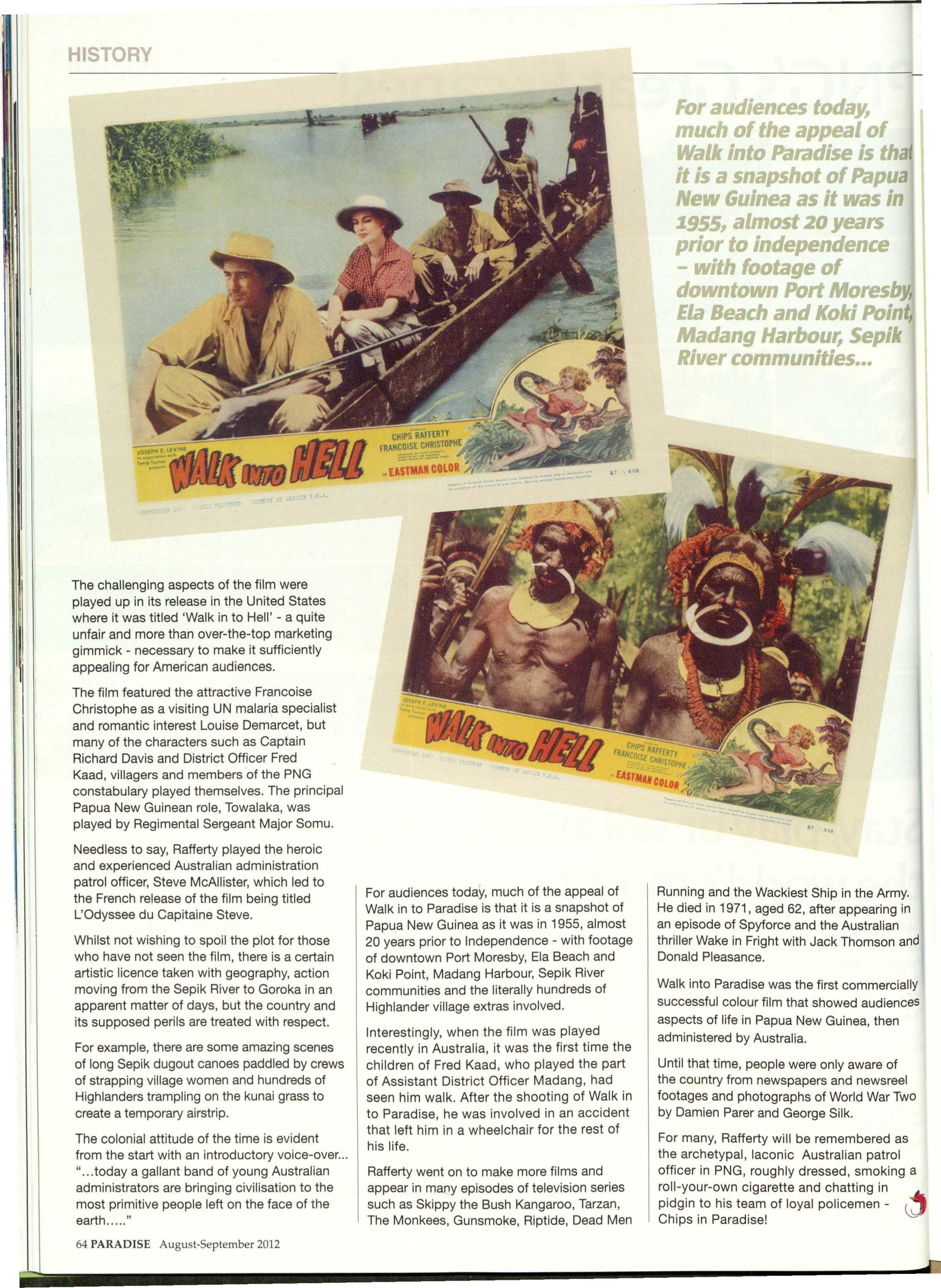
' of s that 1pua ,sin r5 ce esb, >oint, ~pik 6-rmy. ing in lian on and 3rcially liences ,en of sreel irTwo d as trol <ing a

• For those Interested, a CD of the film Is available from the Papua New Guinea Association of Australia (www.pngaa.net); P.O.Box 1386 Mona Vale NSW 1660), which also contains a recent Interview with Fred Kaad 50 years on, archival background and 1950s advertising footage.
Port Moresby
T: +675 322 0370
E: pom_marketing@steamships.com.pg
Lae
T: +675 472 5444
E: agent_lae_mktl@steamships.com.pg
www.swireshipping.com
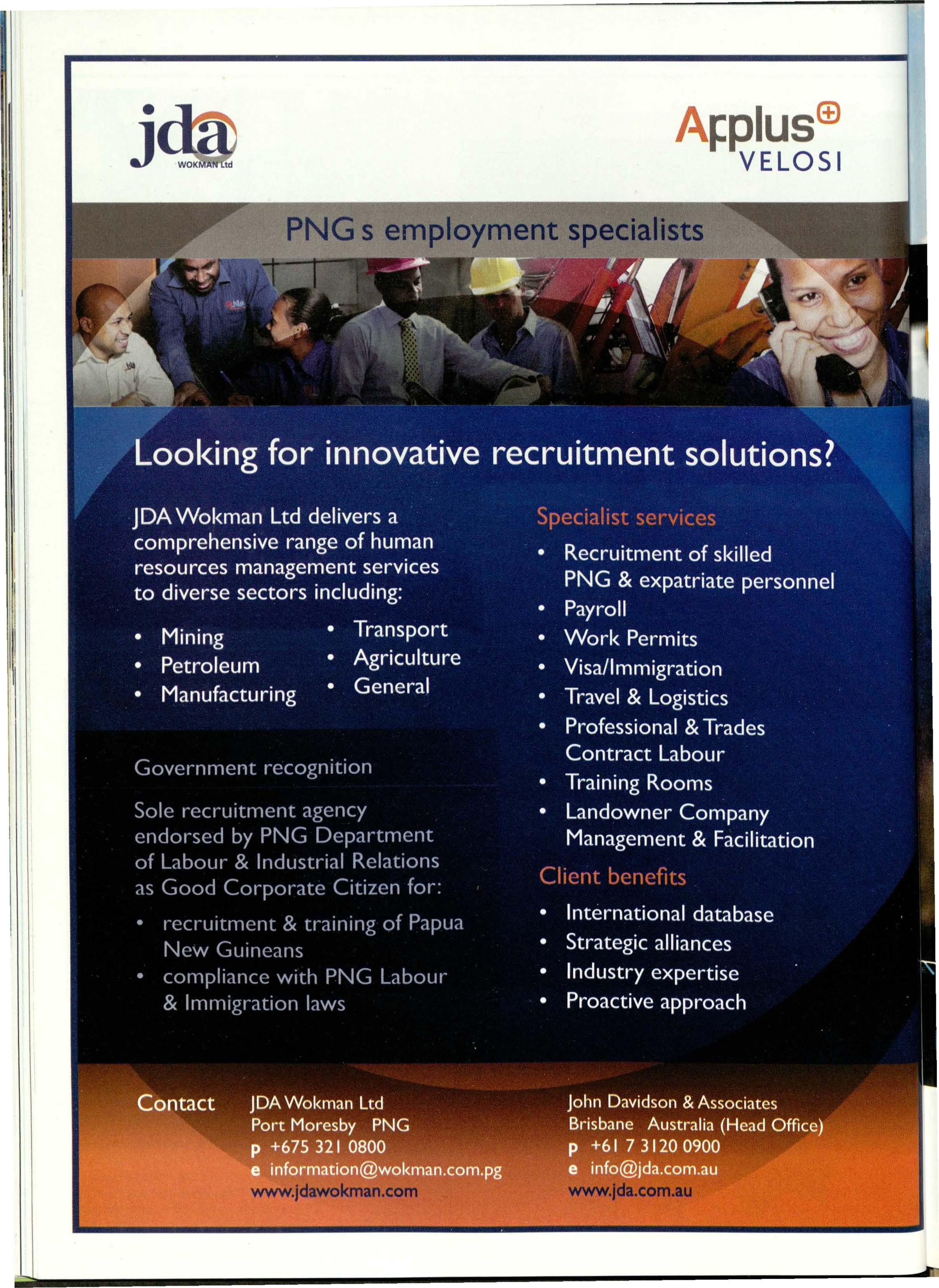


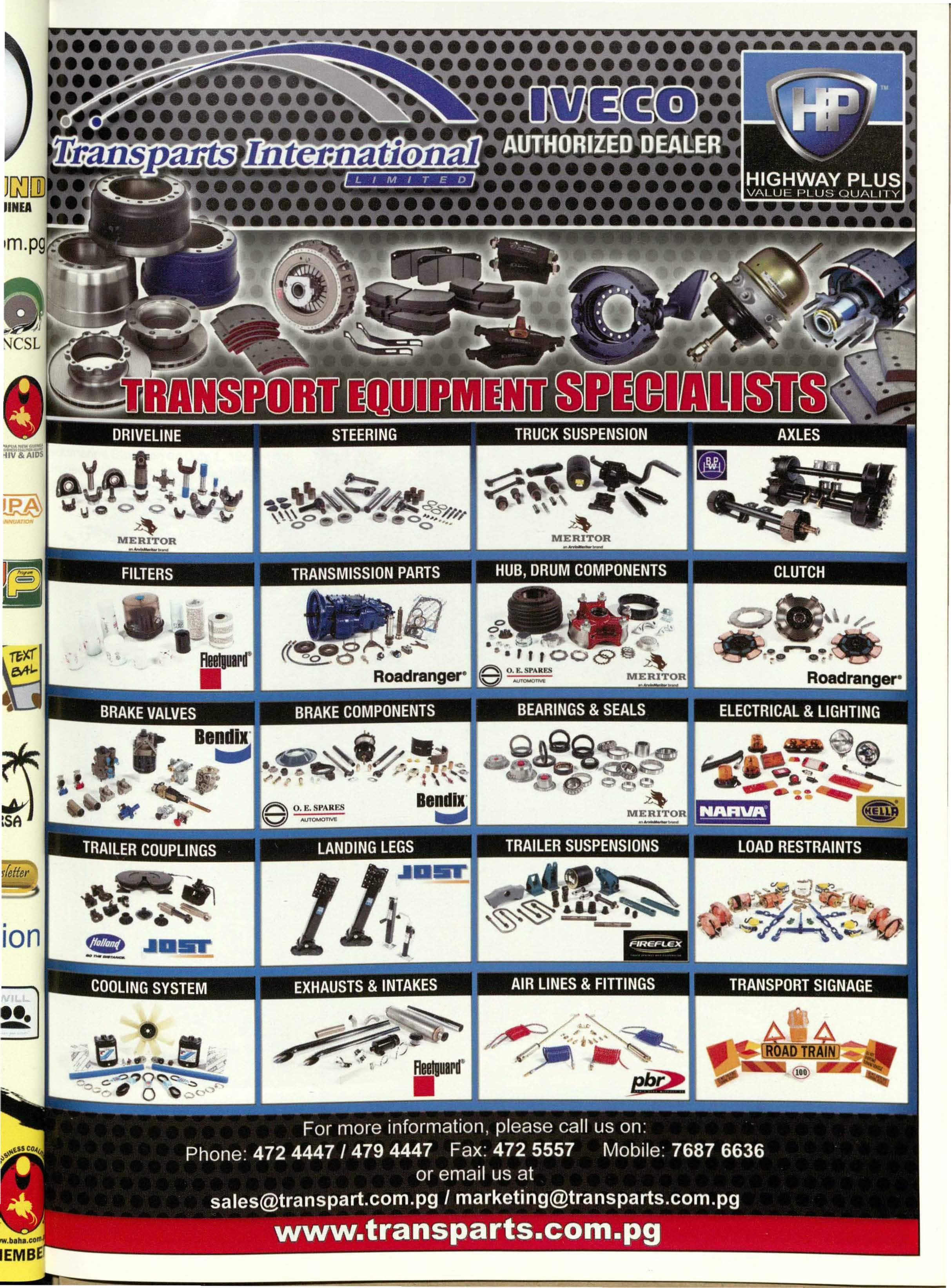
BY JOHN HOLLAND
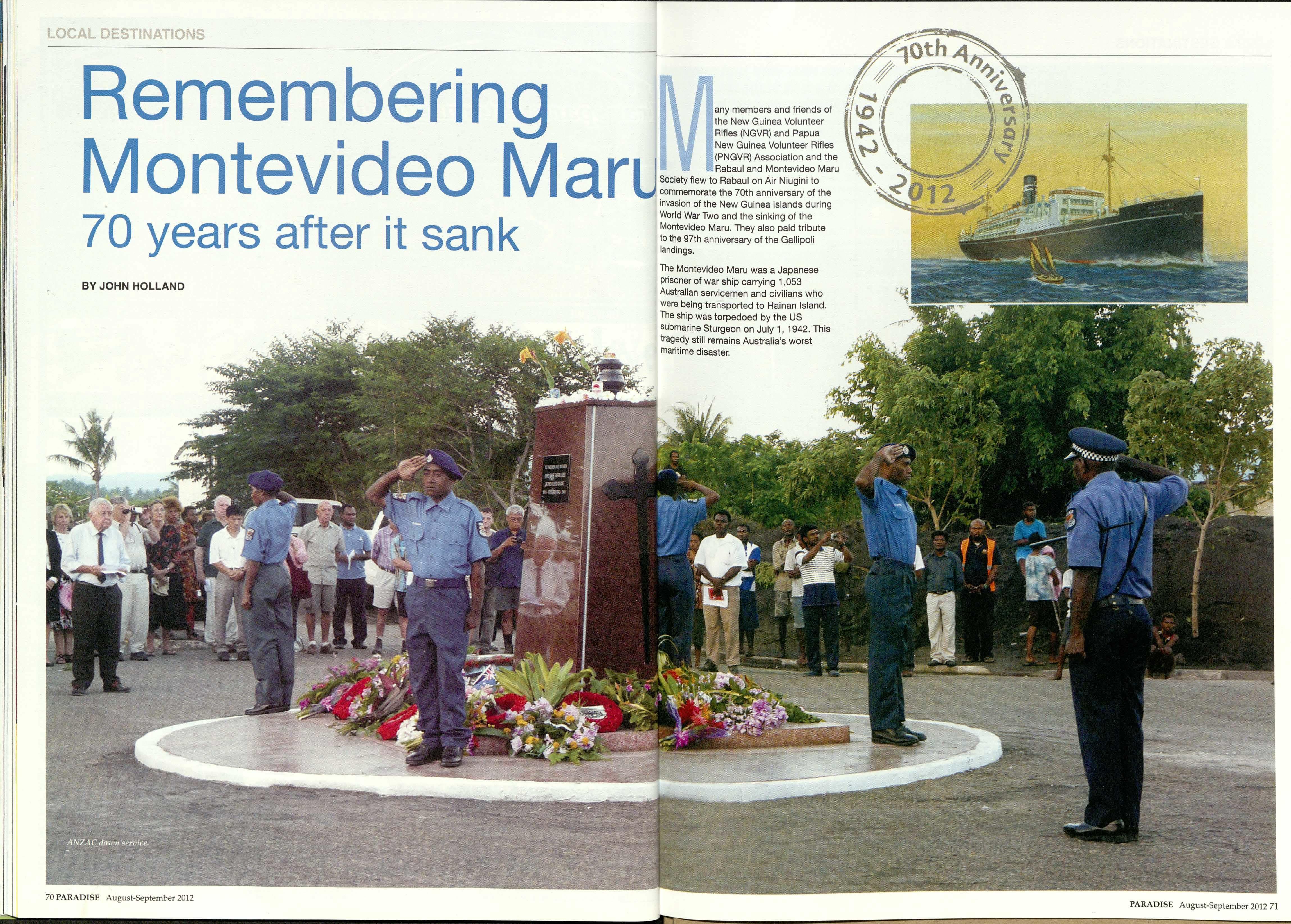
any members and friends of the New Guinea Volunteer Rifles (NGVR) and Papua New Guinea Volunteer Rifles (PNGVR) Association and the
LIraRabaul and Montevideo Maru Society flew to Rabaul on Air Niugini to commemorate the 70th anniversary of the invasion of the New Guinea islands during World War Two and the sinking of the Montevideo Maru. They also paid tribute to the 97th anniversary of the Gallipoli landings.
The Montevideo Maru was a Japanese prisoner of war ship carrying 1,053 Australian servicemen and civilians who were being transported to Hainan Island. The ship was torpedoed by the US submarine Sturgeon on July 1, 1942. This tragedy still remains Australia's worst maritime disaster.
TheMontevideoMaru servicecommemorating the 70th anniversaryof the sinking of the ship with the lossof over 1,000Australianservicemen and civiliansat Rabaul,the departurepoint of the fateful ship. This lossremainsAustralia'sgreatest maritimetragedy.
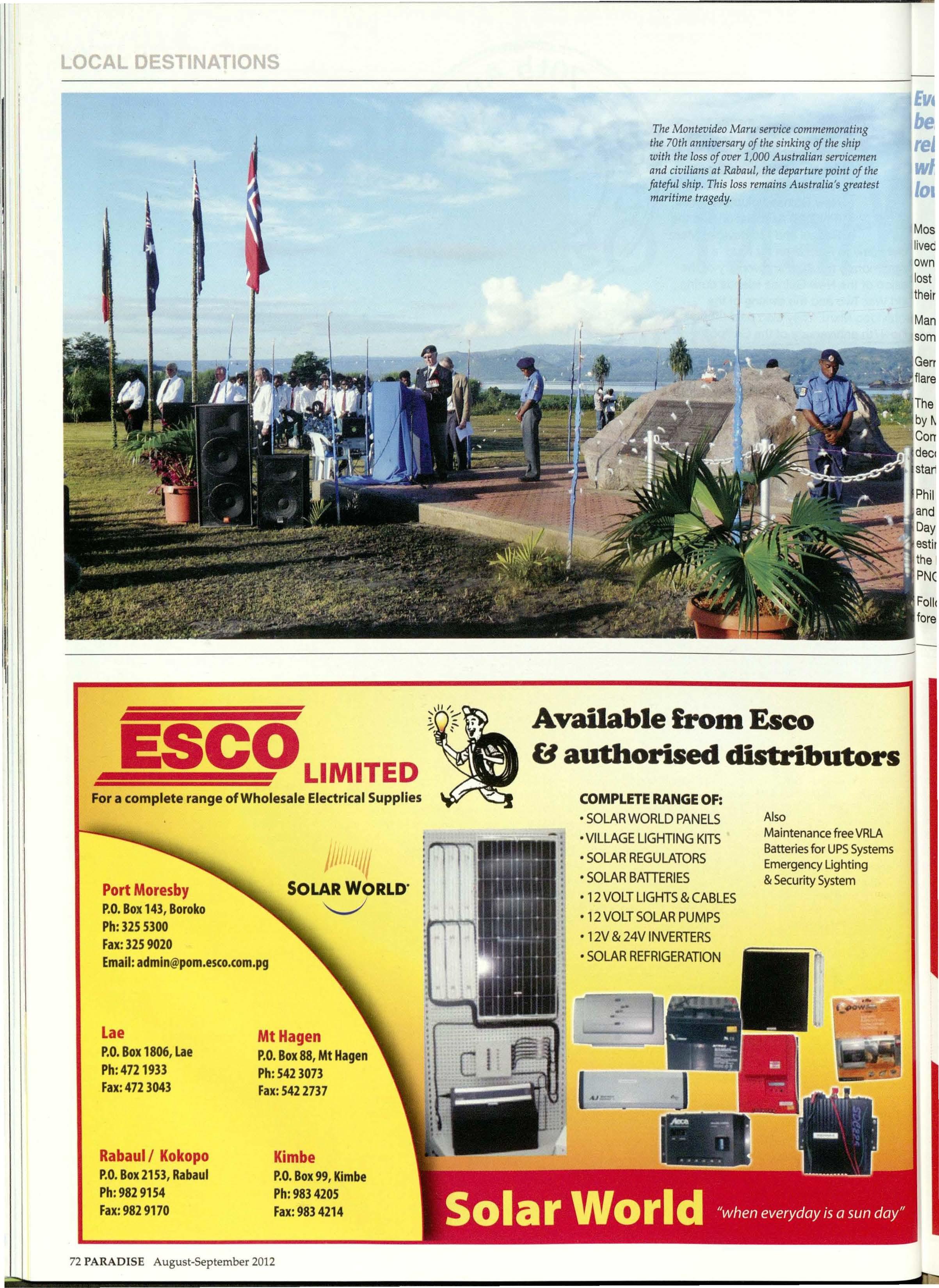
PortMoresby
P.O.Box143,Boroko
Ph:32SS300 Fax:32S9020
Email:admin@pom.esco.com.pg
Lae
P.O.Box1806,Lae
Ph:4721933 Fax:4723043
Rabaul / Kokopo
P.O.Box21S3,Rabaul Ph:98291S4 Fax:9829170
Mt Hagen
P.O.Box88,Mt Hagen
Ph:S423073 Fax:5422737
Kimbe P.O.Box99,Kimbe Ph:9834205 Fax:9834214
COMPLETERANGEOF:
• SOLARWORLDPANELS Also
• VILLAGELIGHTINGKITS
• SOLARREGULATORS
• SOLARBATTERIES
• 12VOLTLIGHTS& CABLES
• 12VOLTSOLARPUMPS
• 12V& 24V INVERTERS
• SOLARREFRIGERATION
Batteriesfor UPSSystems EmergencyLighting & SecuritySystem
e ;t
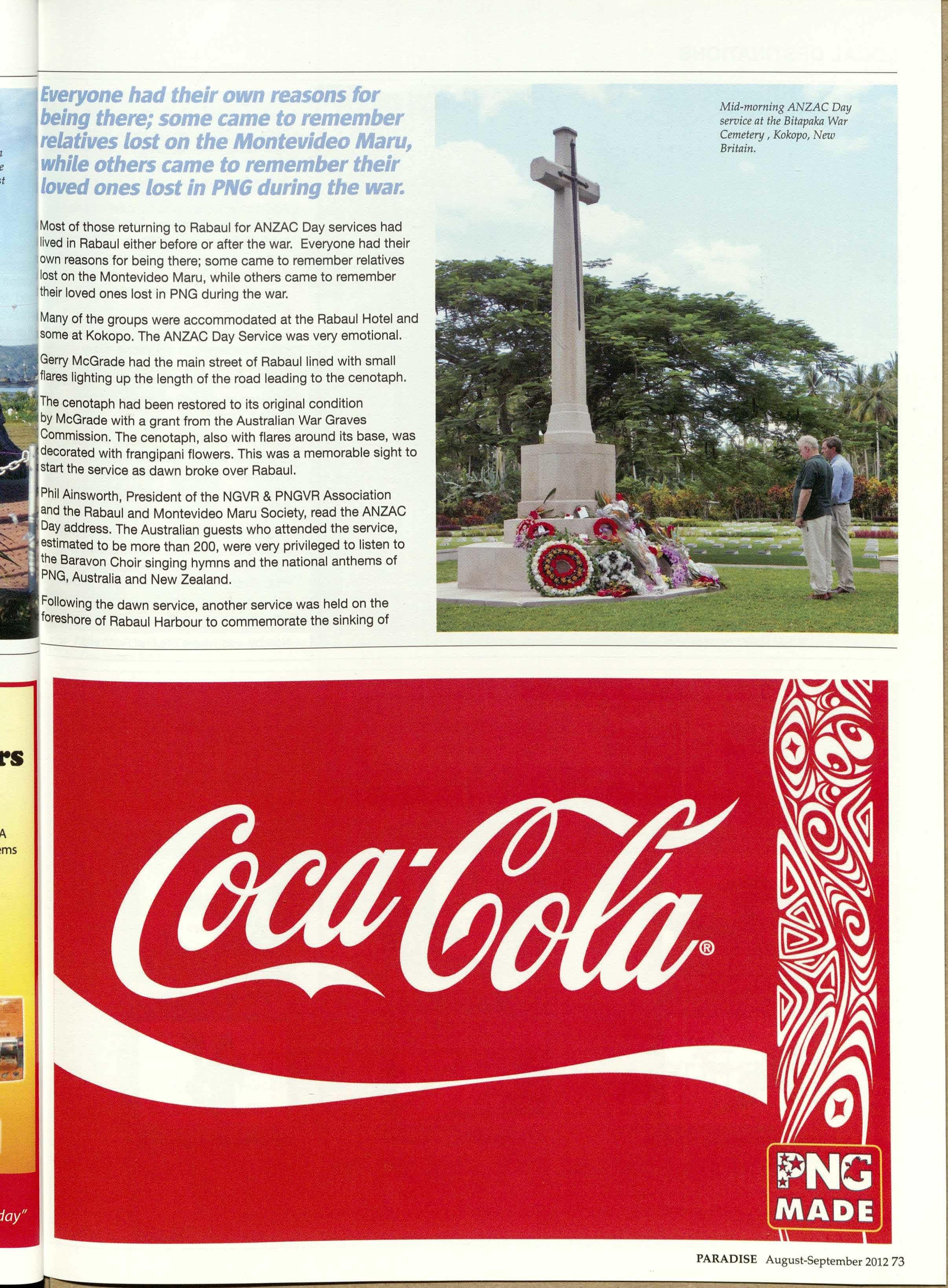
Everyonehad their own reasonsfor beingthere;some came to remember relativeslost on the MontevideoMaru, whileotherscame to remembertheir lovedoneslost in PNGduringthe war.
Most of those returning to Rabaul for ANZAC Day services had lived in Rabaul either before or after the war. Everyone had their own reasons for being there; some came to remember relatives lost on the Montevideo Maru, while others came to remember their loved ones lost in PNG during the war.
Manyof the groups were accommodated at the Rabaul Hotel and some at Kokopo. The ANZAC Day Service was very emotional.
Gerry McGrade had the main street of Rabaul lined with small flares lighting up the length of the road leading to the cenotaph.
The cenotaph had been restored to its original condition by McGrade with a grant from the Australian War Graves Commission. The cenotaph, also with flares around its base, was decorated with frangipani flowers. This was a memorable sight to start the service as dawn broke over Rabaul.
Phil Ainsworth, President of the NGVR & PNGVR Association and the Rabaul and Montevideo Maru Society, read the ANZAC Day address. The Australian guests who attended the service, estimated to be more than 200, were very privileged to listen to the Baravon Choir singing hymns and the national anthems of PNG,Australia and New Zealand.
Following the dawn service, another service was held on the foreshore of Rabaul Harbour to commemorate the sinking of
Mid-morningANZAC Day serviceat the BitapakaWar Cemetery, Kokopo,New Britain.
the Montevideo Maru. The flags of eight nations - Papua New Guinea, Australia, New Zealand, Great Britain, USA, Norwa India and China - were lowered and rais in memory of those lost in this tragic eve
Addresses were made by local dignitaries including Guy Cameron and Chango! Manuai, followed by Ainsworth, President of the Rabaul Montevideo Maru Society, and Andrea Williams, President of the Papua New Guinea Association of Austr (PNGAA).
Ex-coastwatcher Jim Burrowes complet the addresses with a personal story including his PNG wartime experience in and around Rabaul. This service was followed by a gunfire breakfast at the Rabaul Yacht Club.
Later in the morning, guests were taken to another ANZAC service in the beautifu and serene Bitapaka War Cemetery, situated about 30 km south of Rabaul, p Kokopo.
This simple yet very moving service was conducted by Major Lindsay Brown and Father David Gough. The children's choir from Bitapaka Primary School sang the national anthems and the hymn Abide wi Me.
Nearby was where the first Australian For
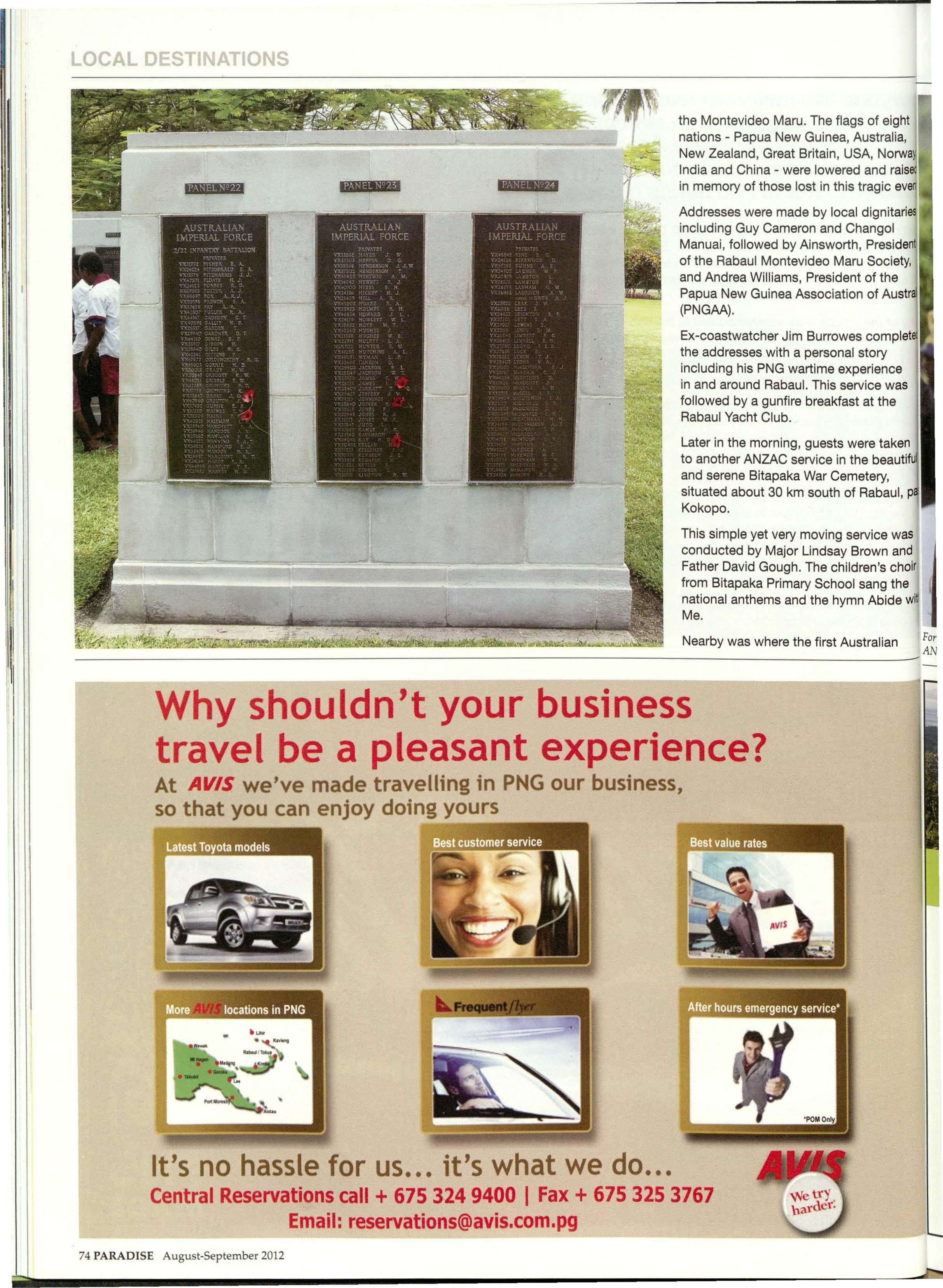
;ociety, fthe ence ,ewas the , taken ::>eautif
ce was 'Vnand i's choir 19 the .bidewi
1lian :%~erACPapuaNew_GuineaVolunteerRifles
Day Service2012.

Anitua hasgrown its reputationfor its breadthof servicesand ability to provide completeend-to-endsolutions,spanningindustriesas diverseas hospitality, security,propertydevelopment,construction,drilling and mining.
Thisenablesour customersto outsourcemanyof their businessand operational requirements,allowing them to minimisetheir capitalinvestmentand streamline their organisations.
And our personalisedway of doing businessbuildsstrong relationshipsbasedon respect,sharedknowledgeand ongoing support- bringingtogetherthe best aspectsof partnership,smartthinking and diversityof experience.
Thecombinedstrengthsof localexperience,culturalknowledge,highlytrainedstaff and strong management,makesAnitua a perfectpartnerfor your organisation.
Tolearnmoreabouthowwe canassistyouin achievingyourgoalsin PapuaNewGuinea,contact:info@an,tua.com.pg www.anitua.com.pg Drilling Property Automotive Contractminingandsitesupport Earthmoving Roadworks.1nclcivilconstruct,on
Quarryingservices Retailstores franspoI1andshipping
Smallbu,rnessservrm Carnpdesrgn,operiltton. constructio11Jndm(.ln1ge1nent
C.llerinq,hosp,tahtyandhotels farmirrrJandl,e,,hproduce Con)trl1ct1onservices
Secuntyse,vKes If servKes Tram,nq(RTO)
soldier was killed in the First World War. The Australian War Graves Commission deserves the gratitude of all Australians and other Commonwealth nations whose war heroes are buried here for the immaculate conditions of the grounds.
The 70th anniversary of the sinking of the Montevideo Maru was
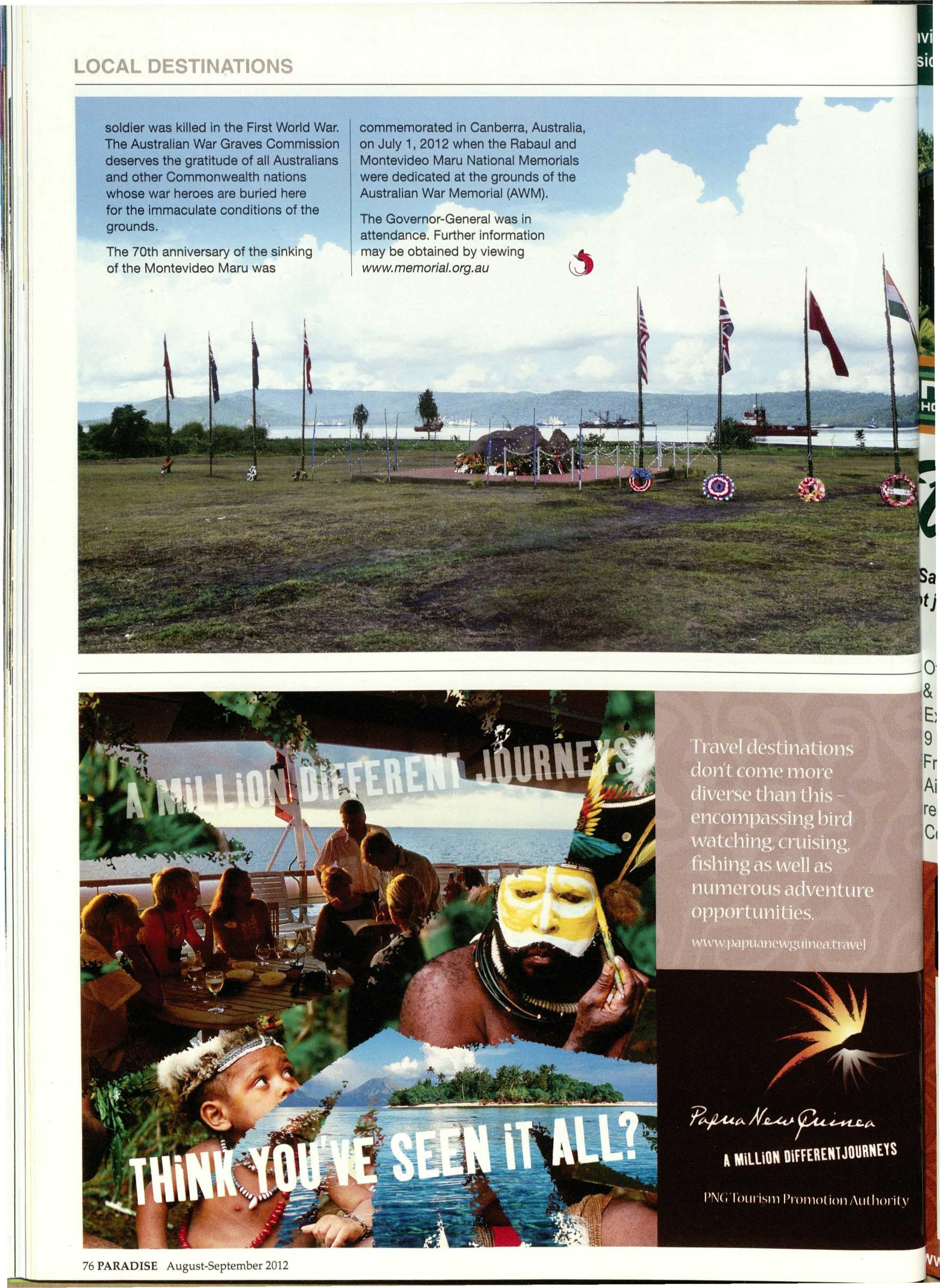
commemorated in Canberra, Australia, on July 1, 2012 when the Rabaul and Montevideo Maru National Memorials were dedicated at the grounds of the Australian War Memorial (AWM).
The Governor-General was in attendance. Further information may be obtained by viewing www.memorial.org.au
afetyand Convenience are tjust catch phrases, its how we operate daily"
__.Offers
Cessna Caravans & King Air aircraft
Executive Corporate Charter
9 Passengers or 1000 kgs Freight
Air conditioned comfort & reliable service
Competitive quotes
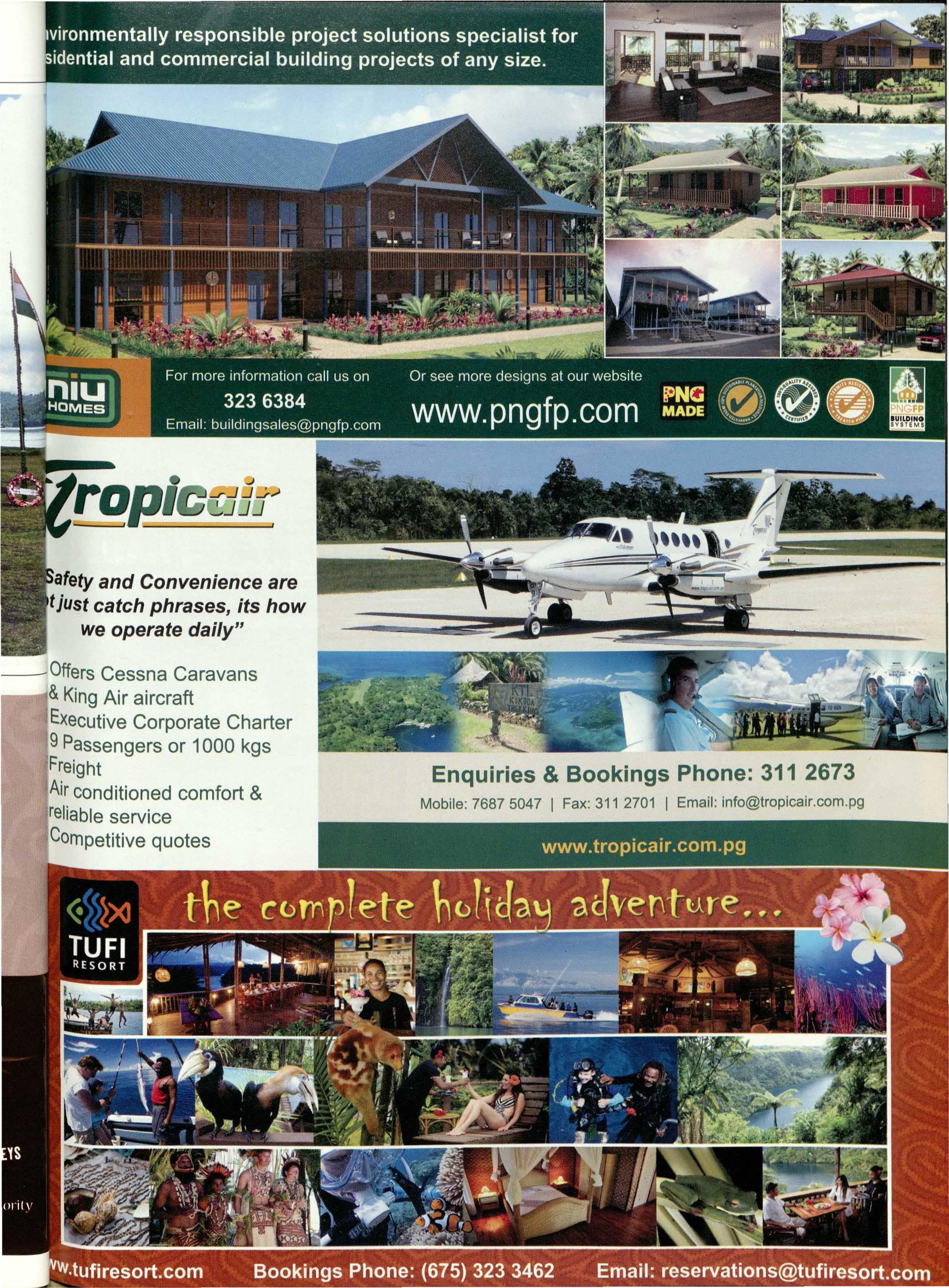
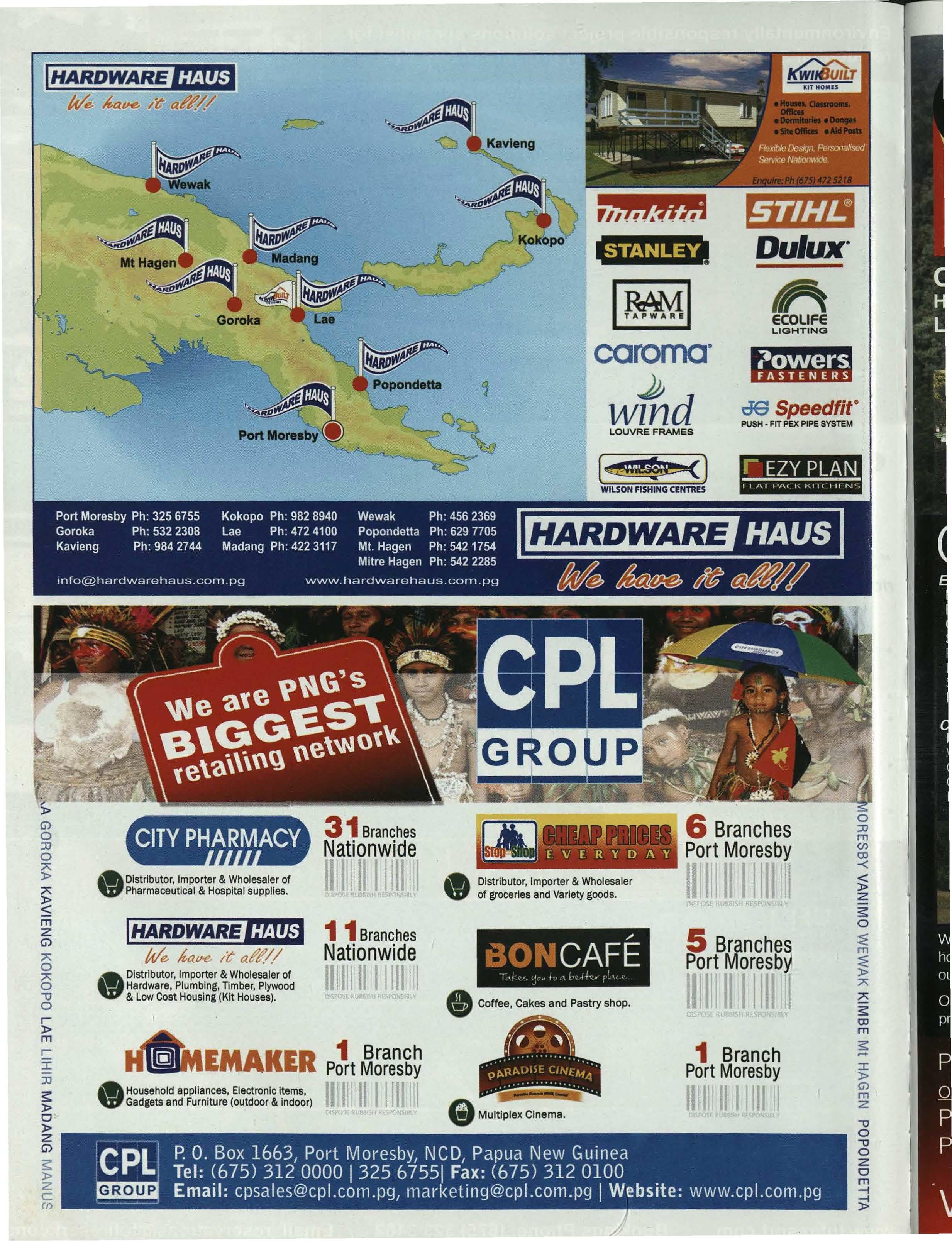

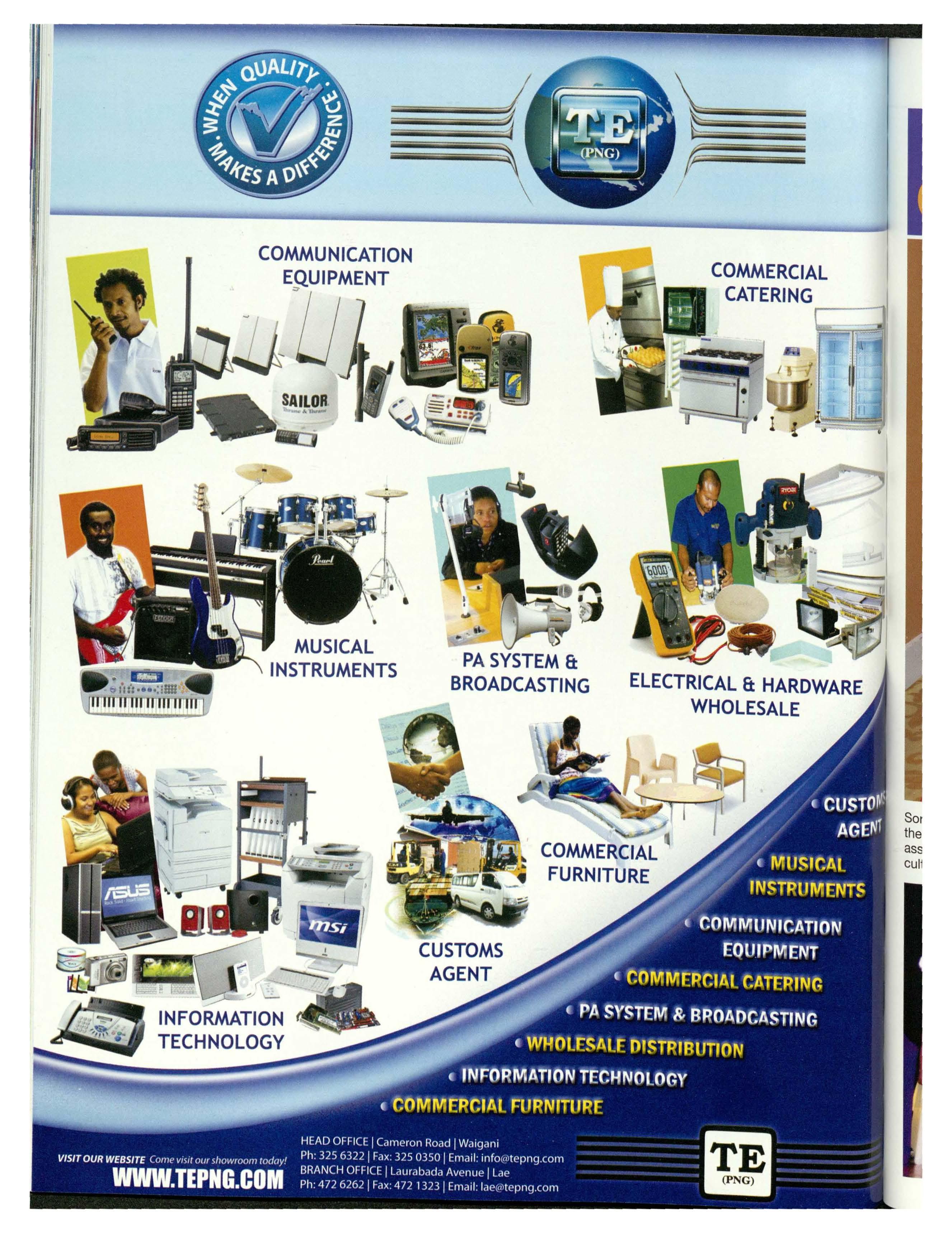
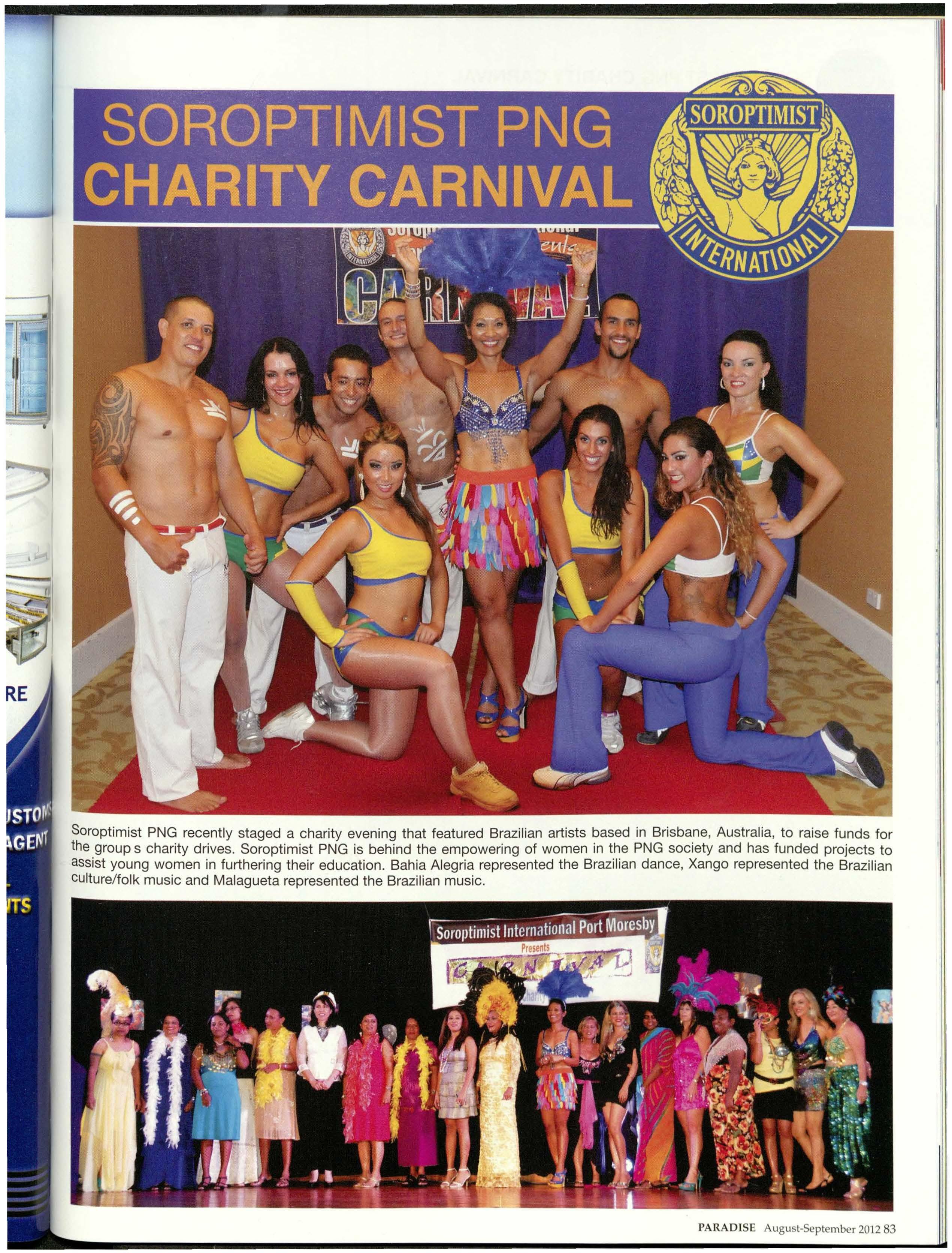
Soroptimist PNG recently staged a charity evening that featured Brazilian artists based in Brisbane, Australia, to raise funds for the groups charity drives. Soroptimist PNG is behind the empowering of women in the PNG society and has funded projects to assist young women in furthering their education. Bahia Alegria represented the Brazilian dance, Xango represented the Brazilian culture/folk music and Malagueta represented the Brazilian music.
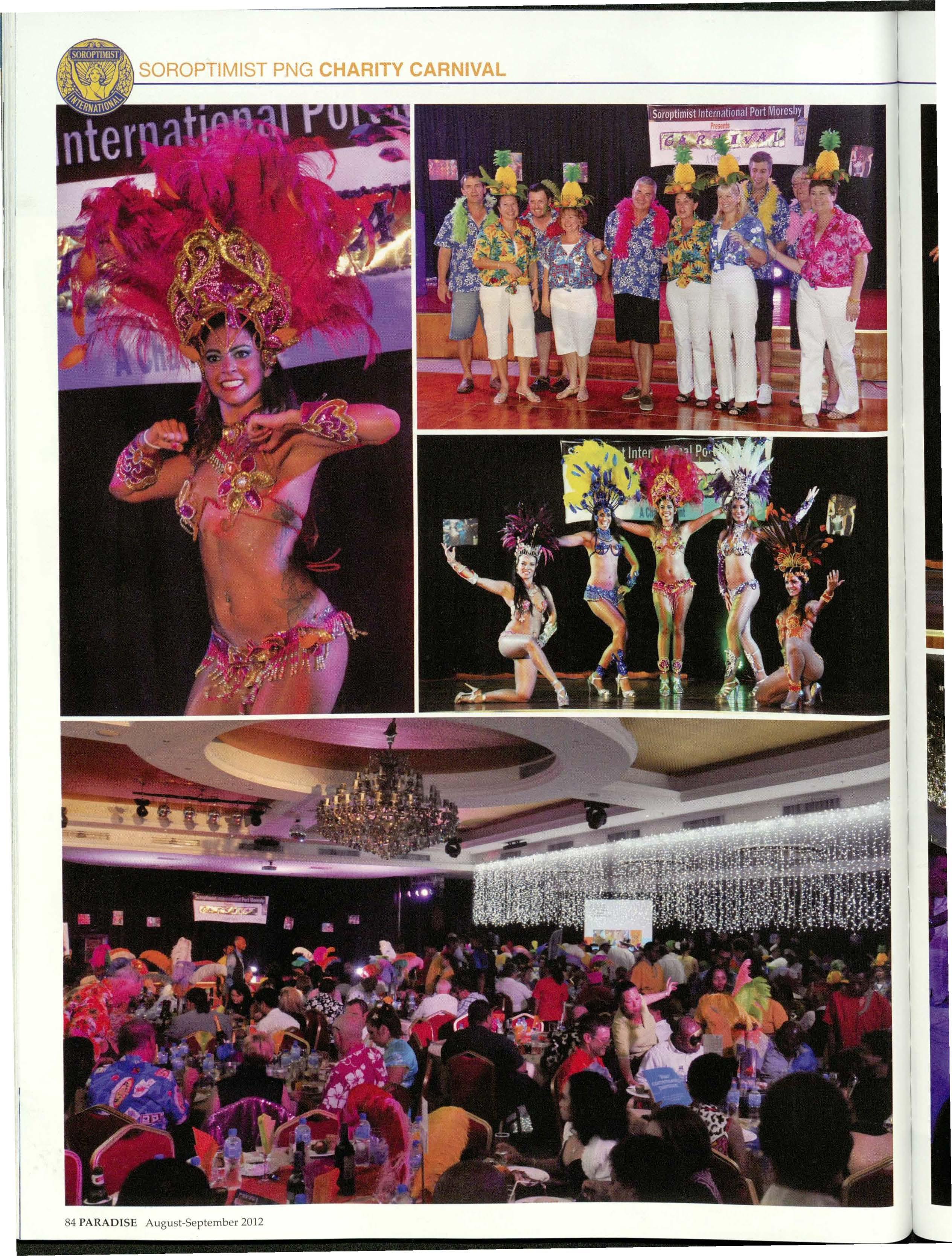


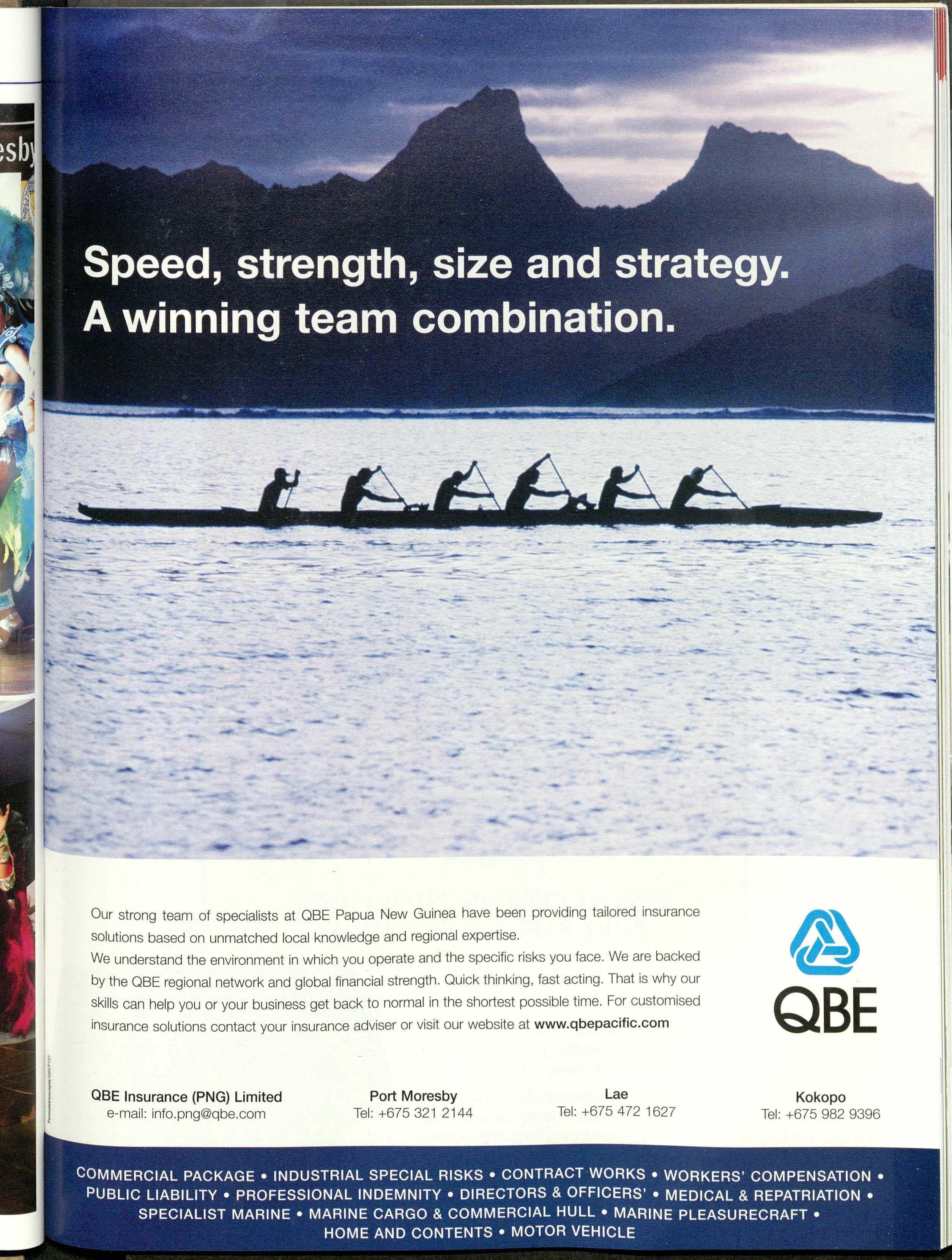
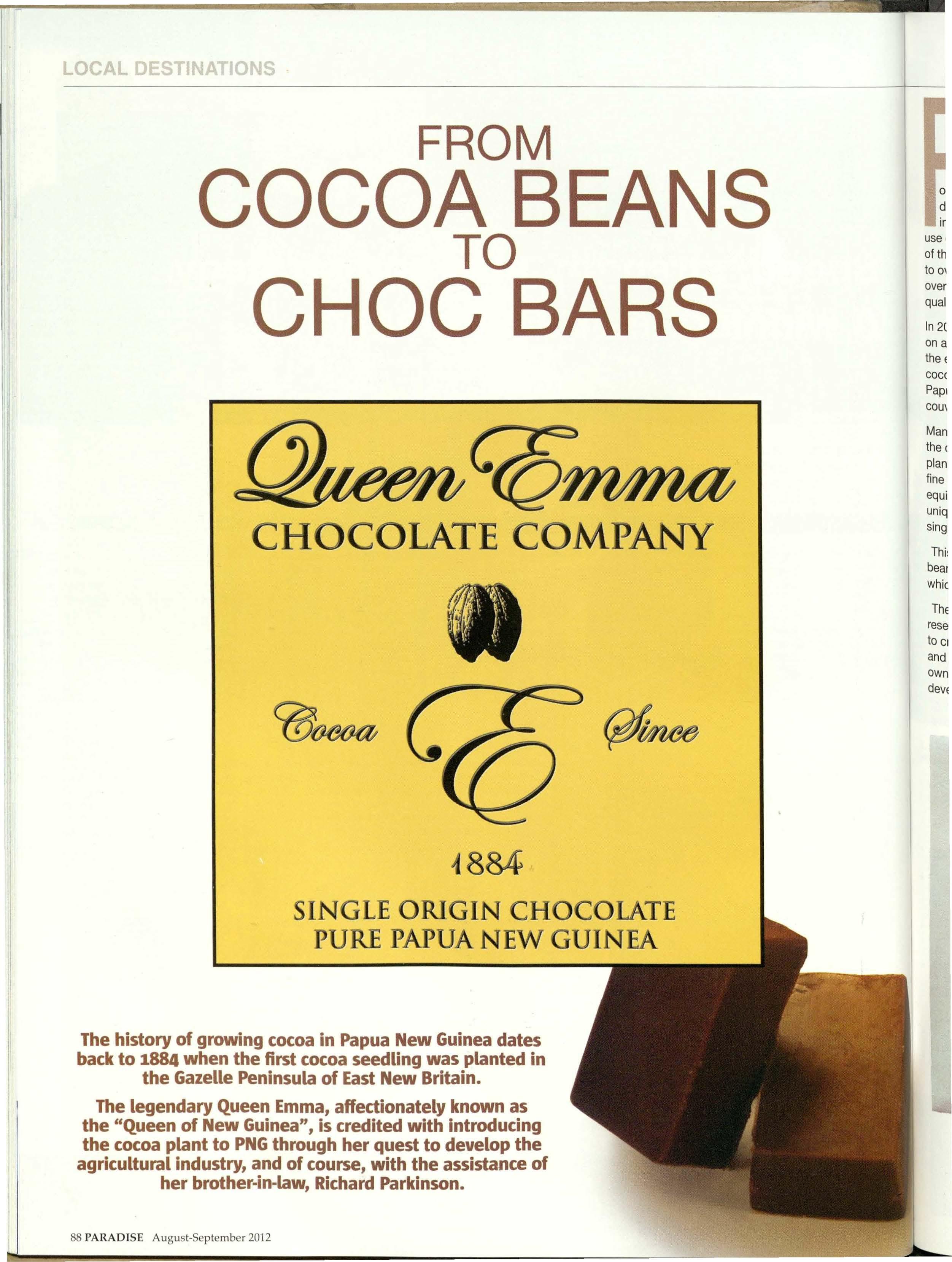
PU NEW UIN
The historyof growingcocoain PapuaNew Guineadates backto 1884 when the first cocoaseedlingwas planted in the GazellePeninsulaof EastNew Britain.
The legendaryQueen Emma,affectionatelyknown as the "Queen of New Guinea",is creditedwith introducing the cocoaplant to PNGthrough her quest to developthe agriculturalindustry,and of course,with the assistanceof her brother-in-law,RichardParkinson.
or over 100 years, cocoa has been the driving force behind commercial agriculture in PNG. Until now, there has been little local use of PNG cocoa, instead large quantities of this home-grown hero have been exported to overseas markets, contributing to the overwhelming international demand for high quality cocoa beans.
In 2011, Paradise Foods Limited embarked on a new and exciting project, investing in the establishment of a pilot plant to process cocoa beans grown from the rich soils of Papua New Guinea into single origin chocolate couverture.
Managing Director David Peale is proud of the development of the Port Moresby pilot plant. Our chocolatiers have been developing fine covertures using recently developed equipment that is able to process PNG s unique rich cocoa beans to chocolate from a single source.
This means we are able to use the whole bean without any additional cocoa butter Whichhas resulted in a very pure, rich taste.
The venture began as part of the company s researchand development project, an initiative to create niche markets for PNG s chocolate and working closely with cocoa plantation owners and other stakeholders to further develop the cocoa industry in the country.
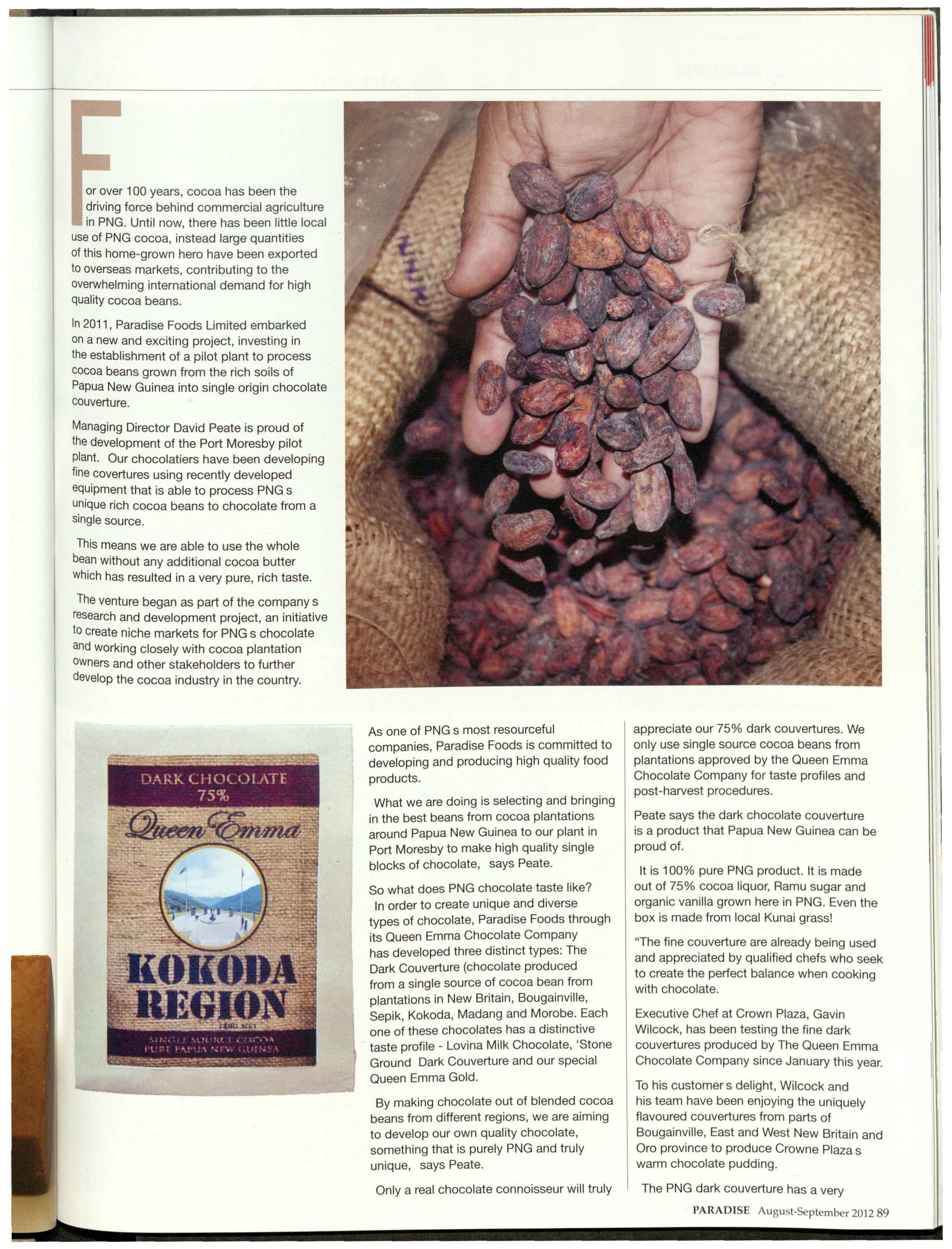
As one of PNG s most resourceful companies, Paradise Foods is committed to developing and producing high quality food products.
What we are doing is selecting and bringing in the best beans from cocoa plantations around Papua New Guinea to our plant in Port Moresby to make high quality single blocks of chocolate, says Peate.
So what does PNG chocolate taste like?
In order to create unique and diverse types of chocolate, Paradise Foods through its Queen Emma Chocolate Company has developed three distinct types: The Dark Couverture (chocolate produced from a single source of cocoa bean from plantations in New Britain, Bougainville, Sepik, Kokoda, Madang and Morobe. Each one of these chocolates has a distinctive taste profile - Lovina Milk Chocolate, 'Stone Ground Dark Couverture and our special Queen Emma Gold.
By making chocolate out of blended cocoa beans from different regions, we are aiming to develop our own quality chocolate, something that is purely PNG and truly unique, says Peate.
Only a real chocolate connoisseur will truly
appreciate our 75% dark couvertures. We only use single source cocoa beans from plantations approved by the Queen Emma Chocolate Company for taste profiles and post-harvest procedures.
Peate says the dark chocolate couverture is a product that Papua New Guinea can be proud of.
It is 100% pure PNG product. It is made out of 75% cocoa liquor, Ramu sugar and organic vanilla grown here in PNG. Even the box is made from local Kunai grass!
"The fine couverture are already being used and appreciated by qualified chefs who seek to create the perfect balance when cooking with chocolate.
Executive Chef at Crown Plaza, Gavin Wilcock, has been testing the fine dark couvertures produced by The Queen Emma Chocolate Company since January this year.
To his customers delight, Wilcock and his team have been enjoying the uniquely flavoured couvertures from parts of Bougainville, East and West New Britain and Oro province to produce Crowne Plazas warm chocolate pudding.
The PNG dark couverture has a very
distinct taste. It is very rich, almost pure and comes highly recommended to any qualified chef who likes to balance chocolate with other ingredients to make chocolate desserts with a unique taste, Wilcock declares.
"It has a biting, beautiful flavour that makes the palate beg for red wine.
In contrast to the dark chocolate couverture, Lovina Milk chocolate and Queen Emma Gold display light and delicate chocolate flavours. The smooth Lovina Milk chocolate is made
from PNG cocoa butter, Ramu sugar and organic PNG grown vanilla with no added fats.
Queen Emma Gold delivers a lighter taste to chocolate lovers while maintaining the distinctive flavours of the high quality PNG cocoa developed by Queen Emma chocolatiers.
Queen Emma Gold is a light chocolate that has the pure flavour of the exquisite high quality cocoa beans from PNG, developed by
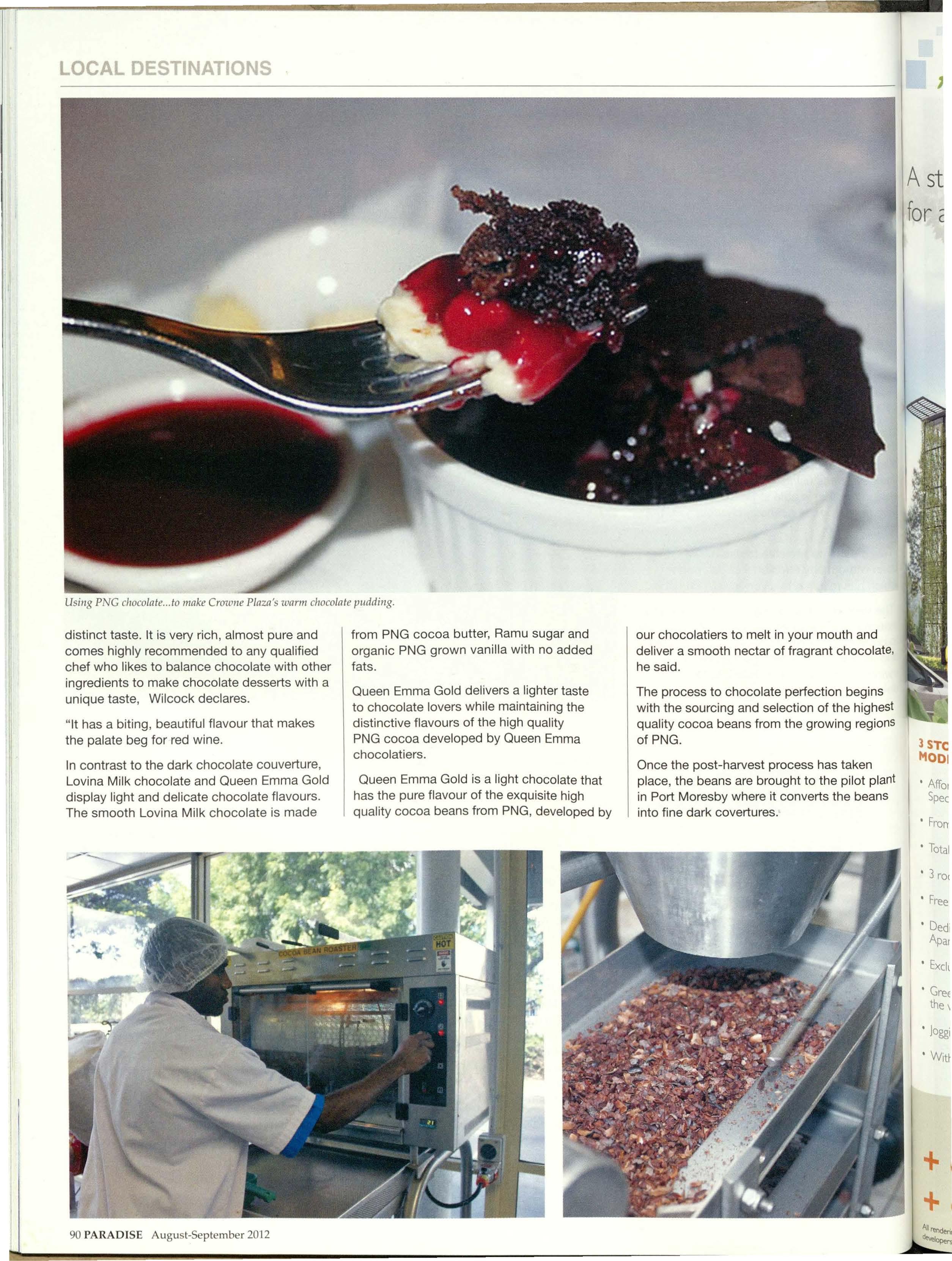
our chocolatiers to melt in your mouth and deliver a smooth nectar of fragrant chocolate, he said.
The process to chocolate perfection begins with the sourcing and selection of the highest quality cocoa beans from the growing regions of PNG.
Once the post-harvest process has taken place, the beans are brought to the pilot plant in Port Moresby where it converts the beans into fine dark covertures.
nd :olate,
~ins ghest igions ,n plant ~ans
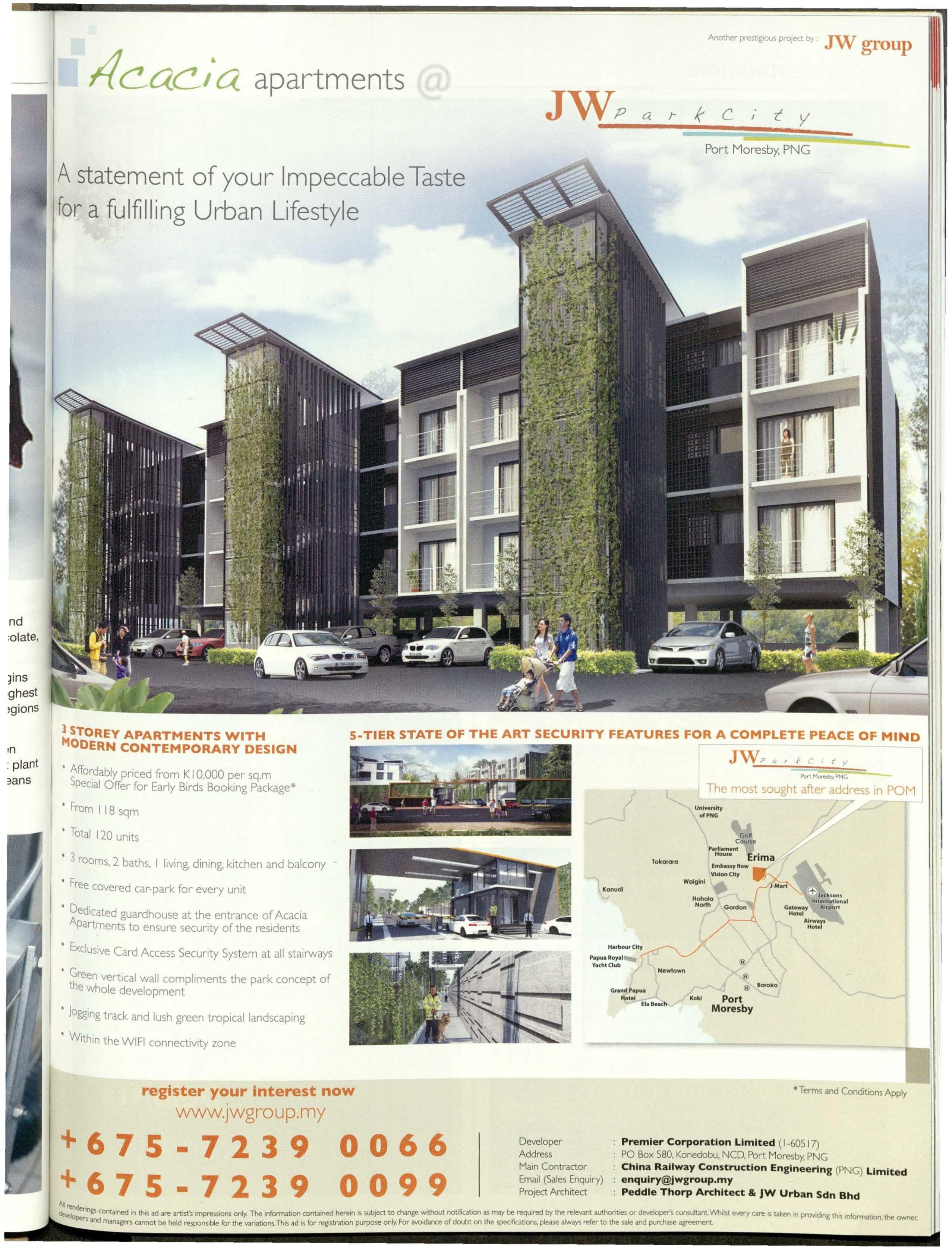
statement of your Impeccable Taste for a fulfilling Urban Lifestyle
l STOREY APARTMENTS WITH MODERN CONTEMPORARY DESIGN
• Affordably priced from K I 0,000 per sq.m SpecialOffer for Early Birds Booking Package*
• From 118 sqm
' Total 120 units
• 3 rooms, 2 baths, I living, dining, kitchen and balcony
• F ree covered car-park for every unit
'D d A e icated guardhouse at the entrance of Acacia Partments to ensure security of the residents
• ExclusiveCard Access Security System at all stairways 'Gthreen vertical wall compliments the park concept of e whole development
• Joggingtrack and lush green tropical landscaping
•
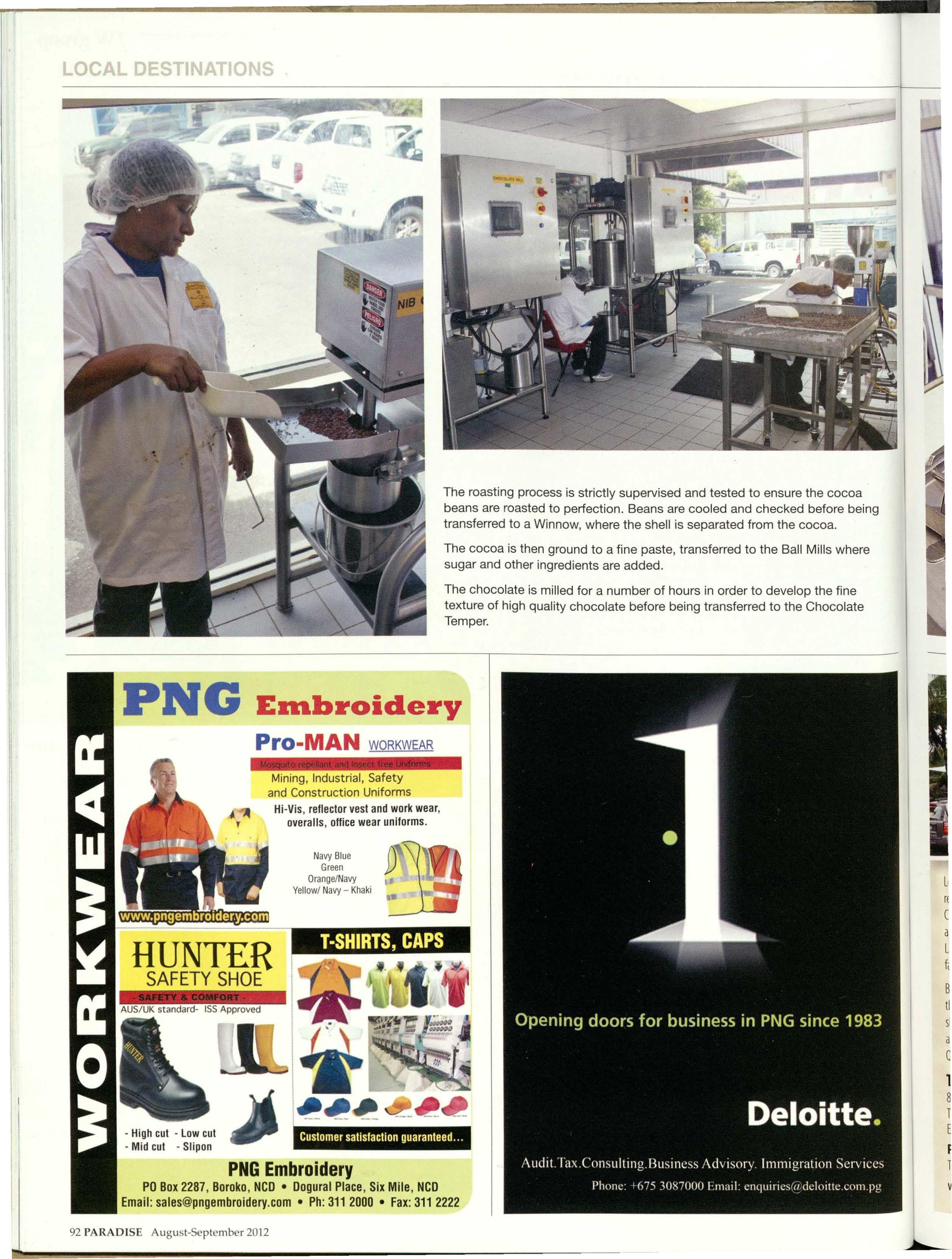
The roasting process is strictly supervised and tested to ensure the cocoa beans are roasted to perfection. Beans are cooled and checked before being transferred to a Winnow, where the shell is separated from the cocoa.
The cocoa is then ground to a fine paste, transferred to the Ball Mills where sugar and other ingredients are added.
The chocolate is milled for a number of hours in order to develop the fine texture of high quality chocolate before being transferred to the Chocolate Temper.
LocatedwithineasywalkingdistanceofCairnsCity, restaurants,marina,theEsplanadeandjust10minsfrom CairnsInternationalAirport.TheHeritageoffers45studio apartments,spadeluxeandstandardanddisabledrooms. LargeLCDTVwithfreemoviechannels,coffee/teamaking facilities,somewithkitchenette.
Bestofallit offersadistinctivePNGstyleandhospitality thatisuniqueinCairns.Ourtourdeskstaffcanarrange sightseeing,rentalcarsandavarietyofotheractivitiesthat areavailablethroughouttropicalnorth """'" QueenslandandPapuaNewGuinea. 01f::itLf:1~e
TropicalHeritageCairns
8MinnieStreet,Cairns,4870 l 0740511211 F 0740511380
E:info@heritagecairns.com.au
PNGBookings l +6754222655F:+6754223543
www.cairnsheritage.com.au
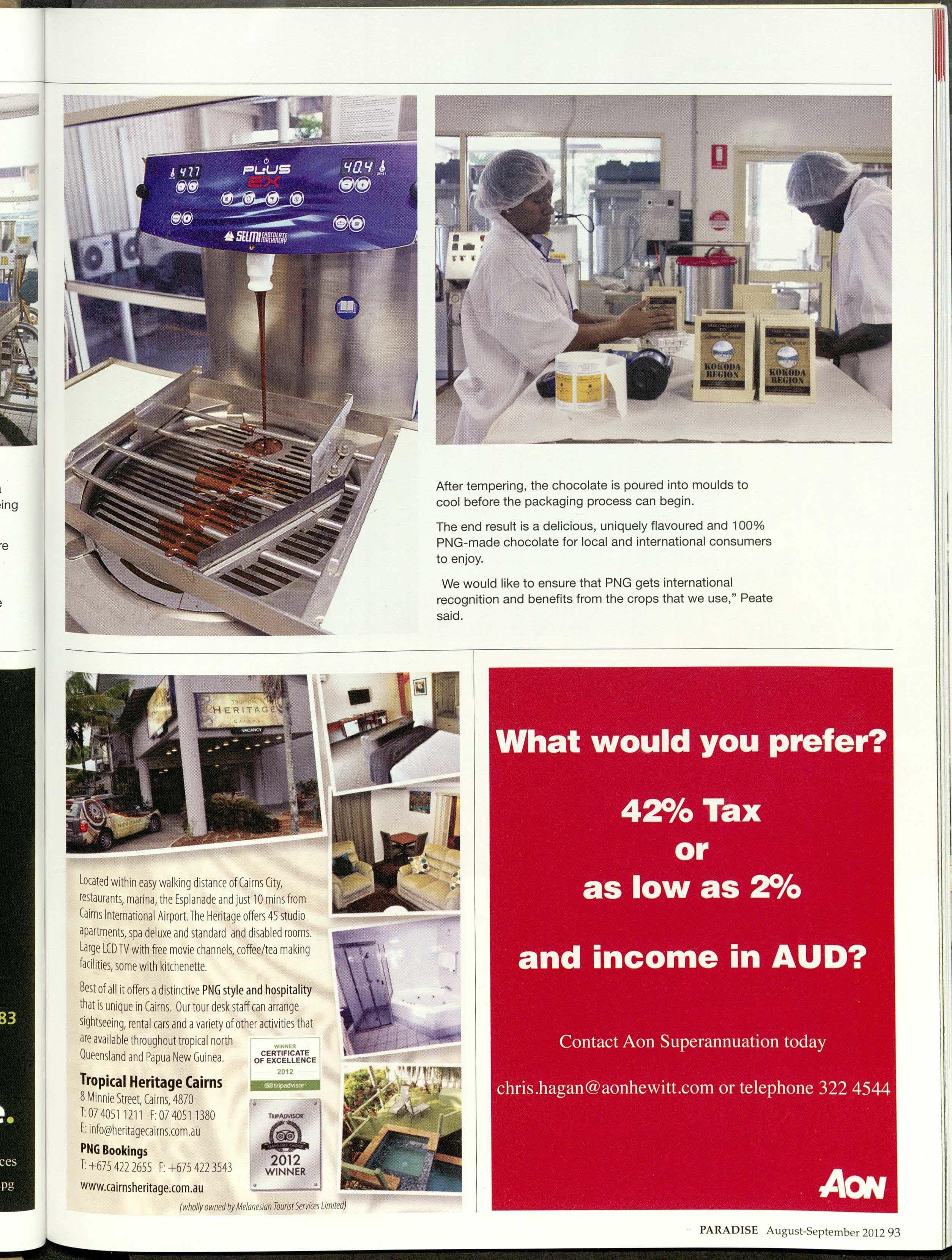
After tempering, the chocolate is poured into moulds to cool before the packaging process can begin.
The end result is a delicious, uniquely flavoured and 100% PNG-made chocolate for local and international consumers to enjoy.
We would like to ensure that PNG gets international recognition and benefits from the crops that we use," Peate said.
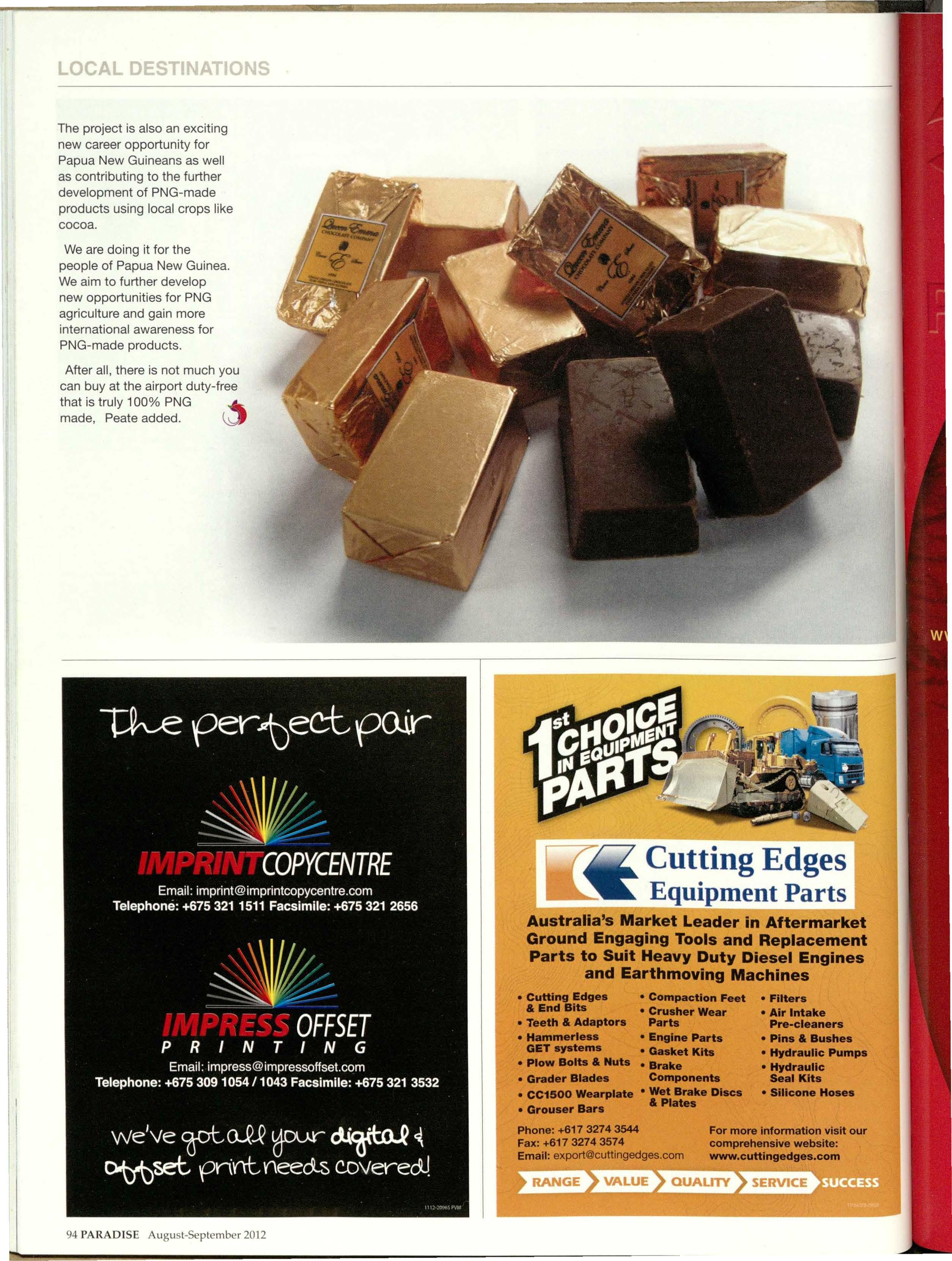
The project is also an exciting new career opportunity for Papua New Guineans as well as contributing to the further development of PNG-made products using local crops like cocoa.
We are doing it for the people of Papua New Guinea. We aim to further develop new opportunities for PNG agriculture and gain more international awareness for PNG-made products.
After all, there is not much you can buy at the airport duty-free that is truly 100% PNG made, Peate added.
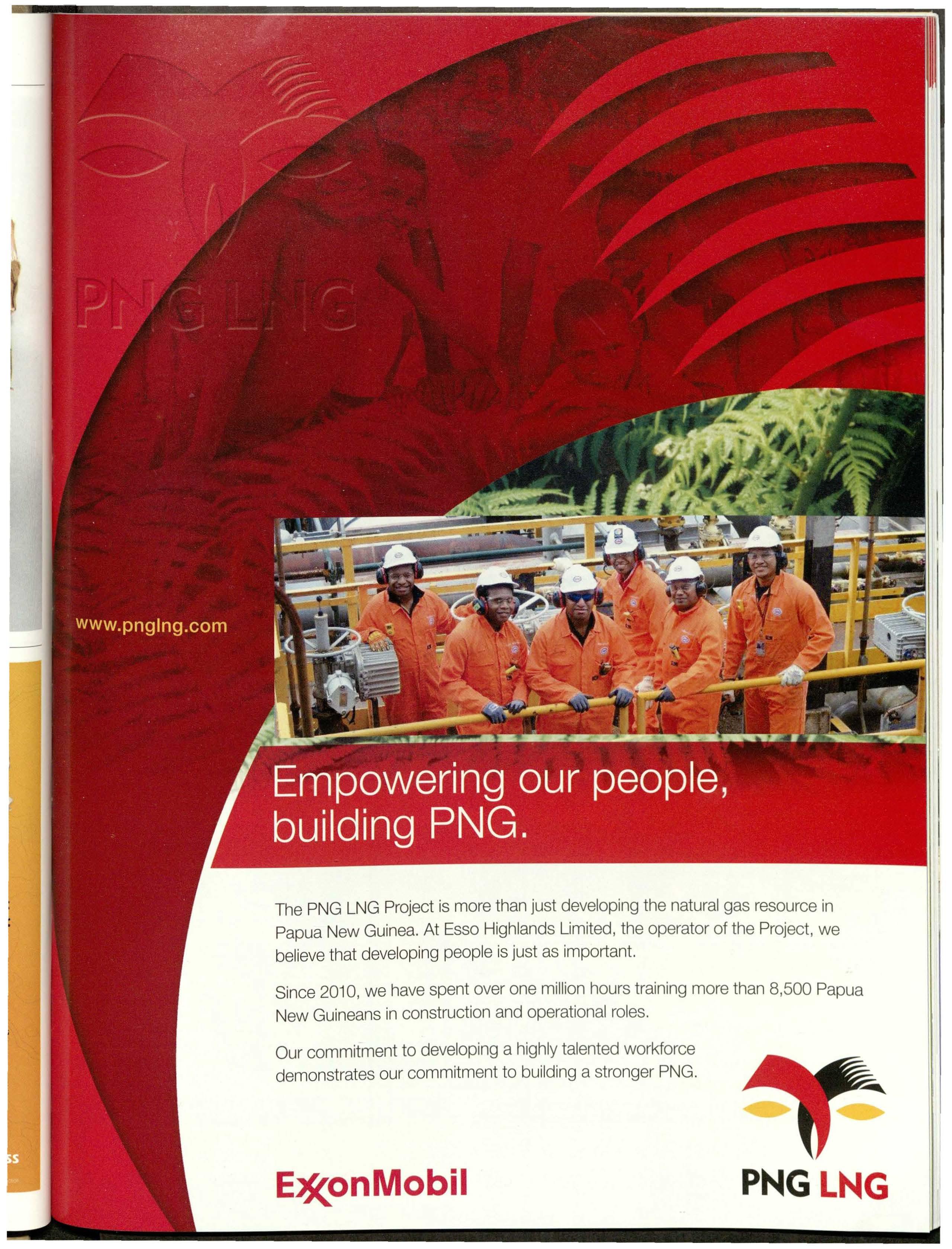
The PNG LNG Project is more than just developingthe natural gas resource in Papua New Guinea.At Esso HighlandsLimited, the operator of the Project, we believethat developingpeople is just as important.
Since 2010, we have spent over one million hours training more than 8,500 Papua New Guineansin construction and operationalroles.
Our commitment to developinga highlytalented workforce demonstrates our commitment to building a stronger PNG.

• THEWORLD'SNO. 1 SELLING BACKHOE/LOADERFROM~
• TOUGH,RELIABLE.MECHANICAL EXCAVATORFROM
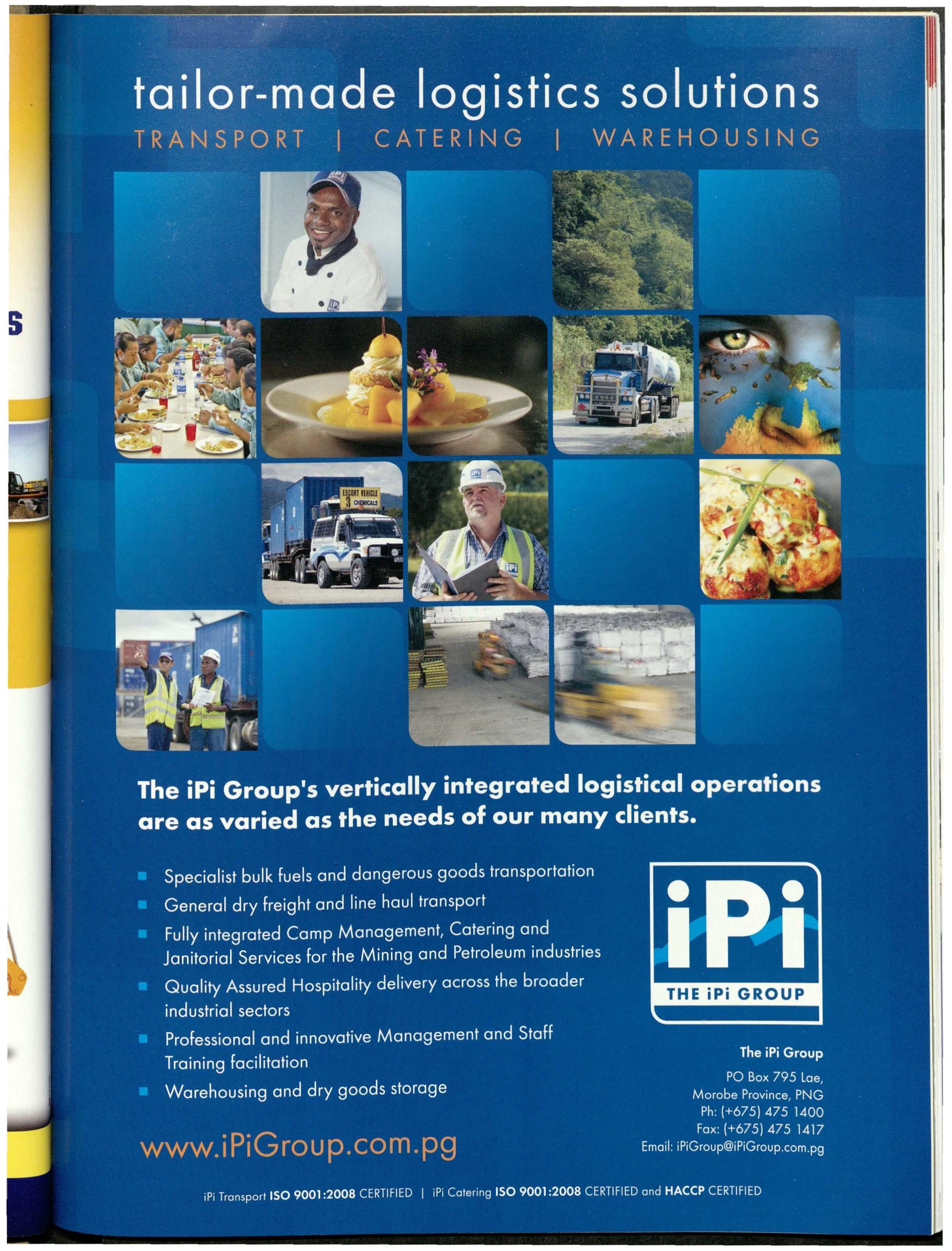
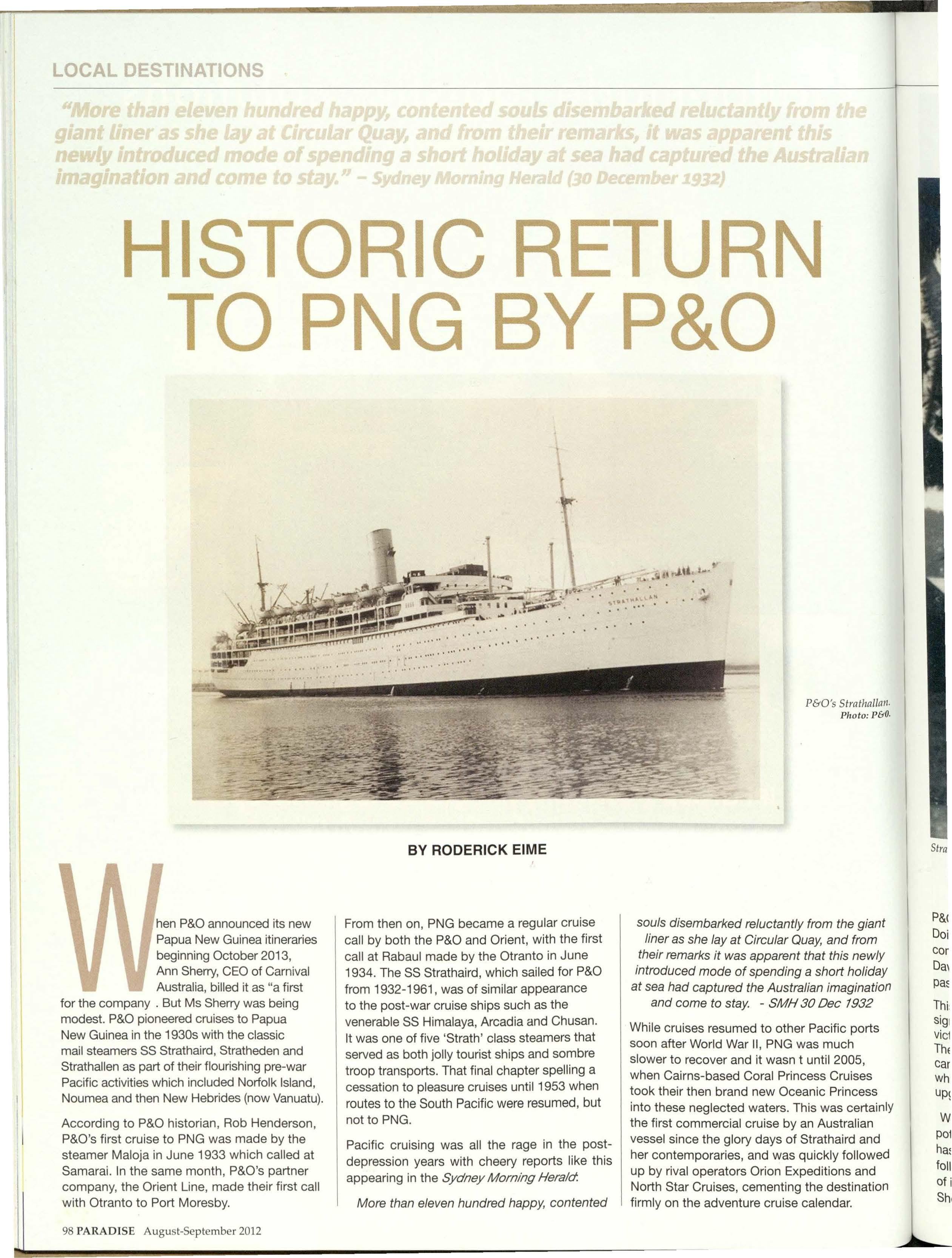
hen P&O announced its new Papua New Guinea itineraries beginning October 2013, Ann Sherry, CEO of Carnival Australia, billed it as "a first for the company But Ms Sherry was being modest. P&O pioneered cruises to Papua New Guinea in the 1930s with the classic mail steamers SS Strathaird, Stratheden and Strathallen as part of their flourishing pre-war Pacific activities which included Norfolk Island, Noumea and then New Hebrides (now Vanuatu).
According to P&O historian, Rob Henderson, P&O's first cruise to PNG was made by the steamer Maloja in June 1933 which called at Samarai. In the same month, P&O's partner company, the Orient Line, made their first call with Otranto to Port Moresby.
BY RODERICK EIME
From then on, PNG became a regular cruise call by both the P&O and Orient, with the first call at Rabaul made by the Otranto in June 1934. The SS Strathaird, which sailed for P&O from 1932-1961, was of similar appearance to the post-war cruise ships such as the venerable SS Himalaya, Arcadia and Chusan. It was one of five 'Strath' class steamers that served as both jolly tourist ships and sombre troop transports. That final chapter spelling a cessation to pleasure cruises until 1953 when routes to the South Pacific were resumed, but not to PNG.
Pacific cruising was all the rage in the postdepression years with cheery reports like this appearing in the Sydney Morning Herald.
More than eleven hundred happy, contented
souls disembarked reluctantly from the giant liner as she lay at Circular Quay, and from their remarks it was apparent that this newly introduced mode of spending a short holiday at sea had captured the Australian imagination and come to stay. - SMH 30 Dec 1932
While cruises resumed to other Pacific ports soon after World War II, PNG was much slower to recover and it wasn t until 2005, when Cairns-based Coral Princess Cruises took their then brand new Oceanic Princess into these neglected waters. This was certainly the first commercial cruise by an Australian vessel since the glory days of Strathaird and her contemporaries, and was quickly followed up by rival operators Orion Expeditions and North Star Cruises, cementing the destination firmly on the adventure cruise calendar.
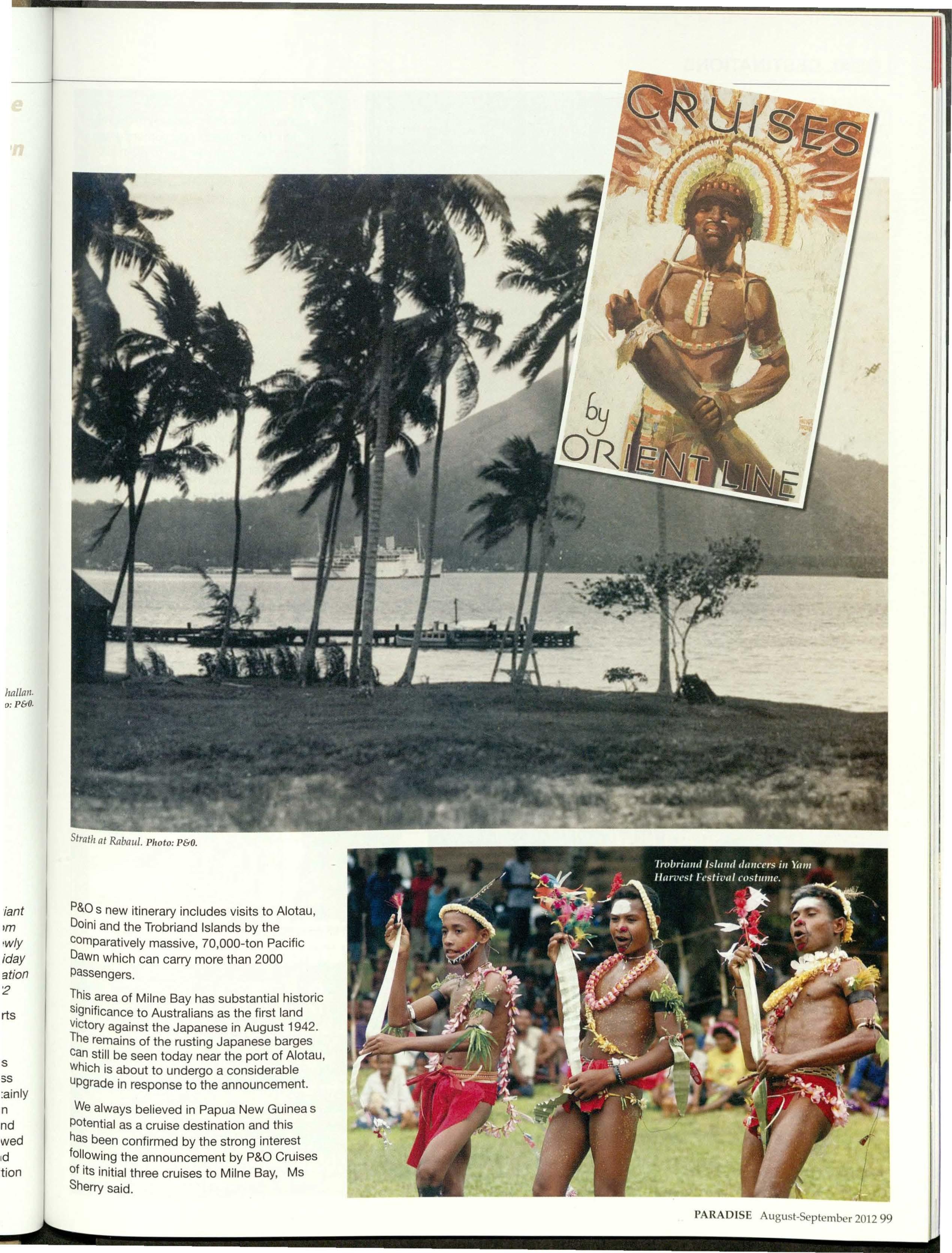
P&o s new itinerary includes visits to Alotau, Doini and the Trobriand Islands by the comparatively massive, 70,000-ton Pacific Dawn which can carry more than 2000 Passengers.
This area of Milne Bay has substantial historic significance to Australians as the first land Victory against the Japanese in August 1942. The remains of the rusting Japanese barges can still be seen today near the port of Alotau, Which is about to undergo a considerable upgrade in response to the announcement.
We always believed in Papua New Guineas Potential as a cruise destination and this has been confirmed by the strong interest following the announcement by P&O Cruises of its initial three cruises to Milne Bay, Ms Sherry said.
Papua New Guinea is one of the most remote and untouched corners of the world, which is so close to Australia geographically but a million miles away in terms of its amazing scenery and fascinating culture.
The PNG Governments decision to accelerate funding for port upgrade at Alotau and for the necessary hydrographic surveys in the Trobriand Islands is a positive investment to achieve economic benefits brought about by regular cruise ship visits. Our aim is for the initial October to April 2013-2014 cruise itineraries to PNG to be the first of many as this relationship continues to grow.
The resort island of Doini is where the mandatory aquatic frolics are planned, but the jewel in the crown would have to be the sacred canoe and Kundu Festival in the Milne Bay capital, Alotau.
Called The Islands of Love for the particularly striking men and women of Kiriwina and the surrounding islands, the Milne Bay folks know how to throw a festival. Guests can expect to see extravagant and elaborate costumes and dancing which will reinforce the legends and fables of these mysterious little islands.
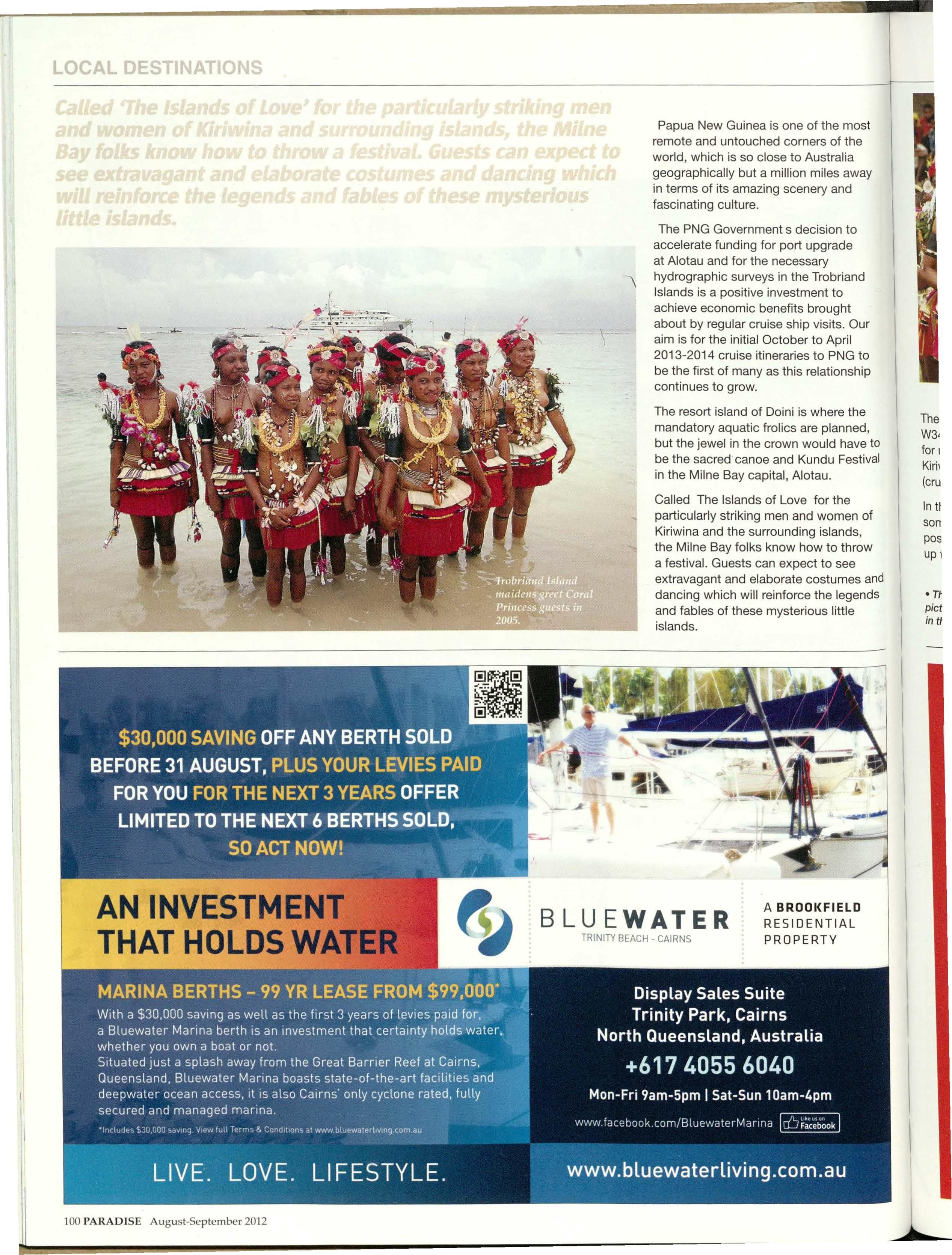
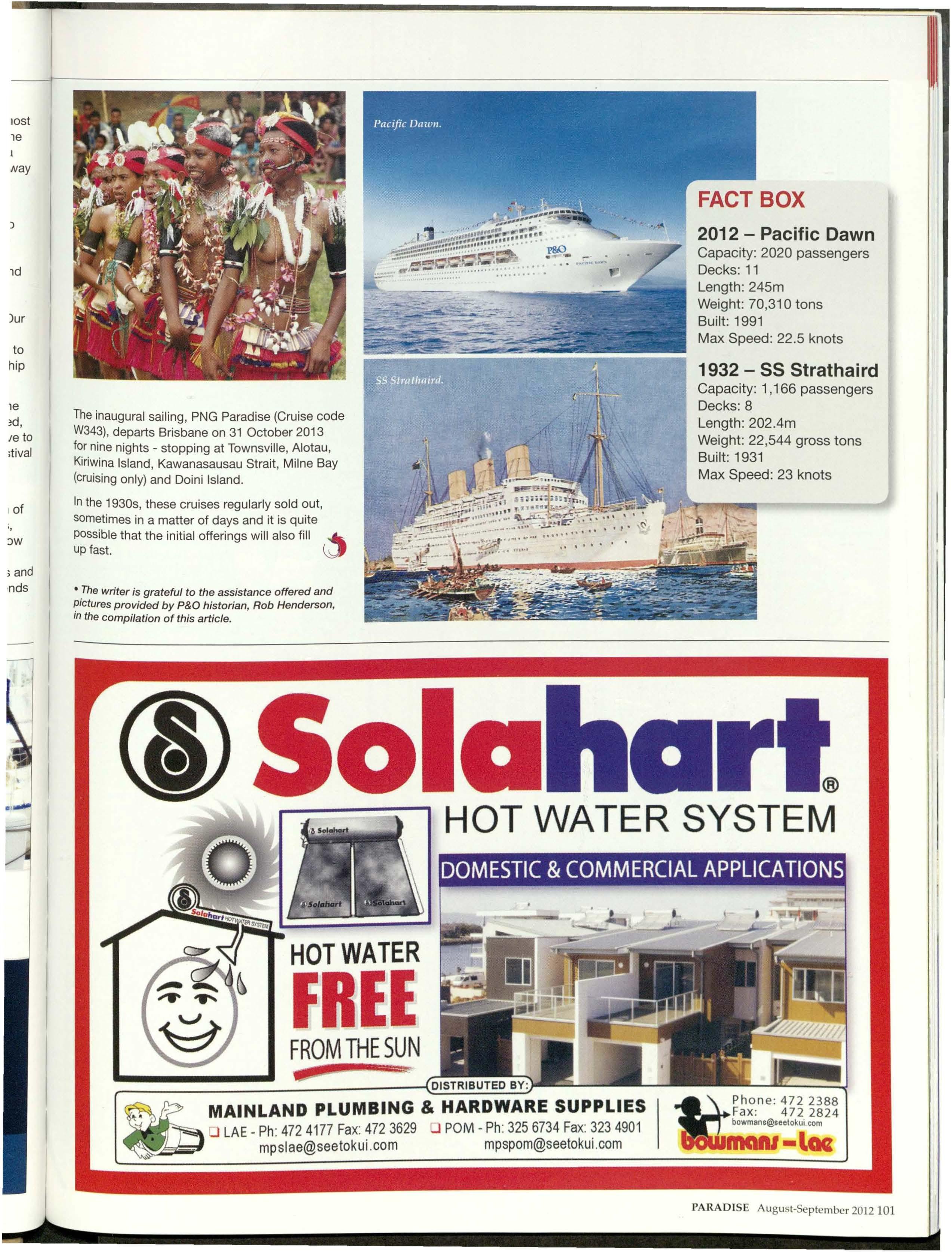
The inaugural sailing, PNG Paradise (Cruise code W343), departs Brisbane on 31 October 2013 for nine nights - stopping at Townsville, Alotau, Kiriwina Island, Kawanasausau Strait, Milne Bay (cruising only) and Doini Island.
In the 1930s, these cruises regularly sold out, sometimes in a matter of days and it is quite possible that the initial offerings will also fill .,_ up fast.
• The writer is grateful to the assistance offered and pictures provided by P&O historian, Rob Henderson, m the compilation of this article.
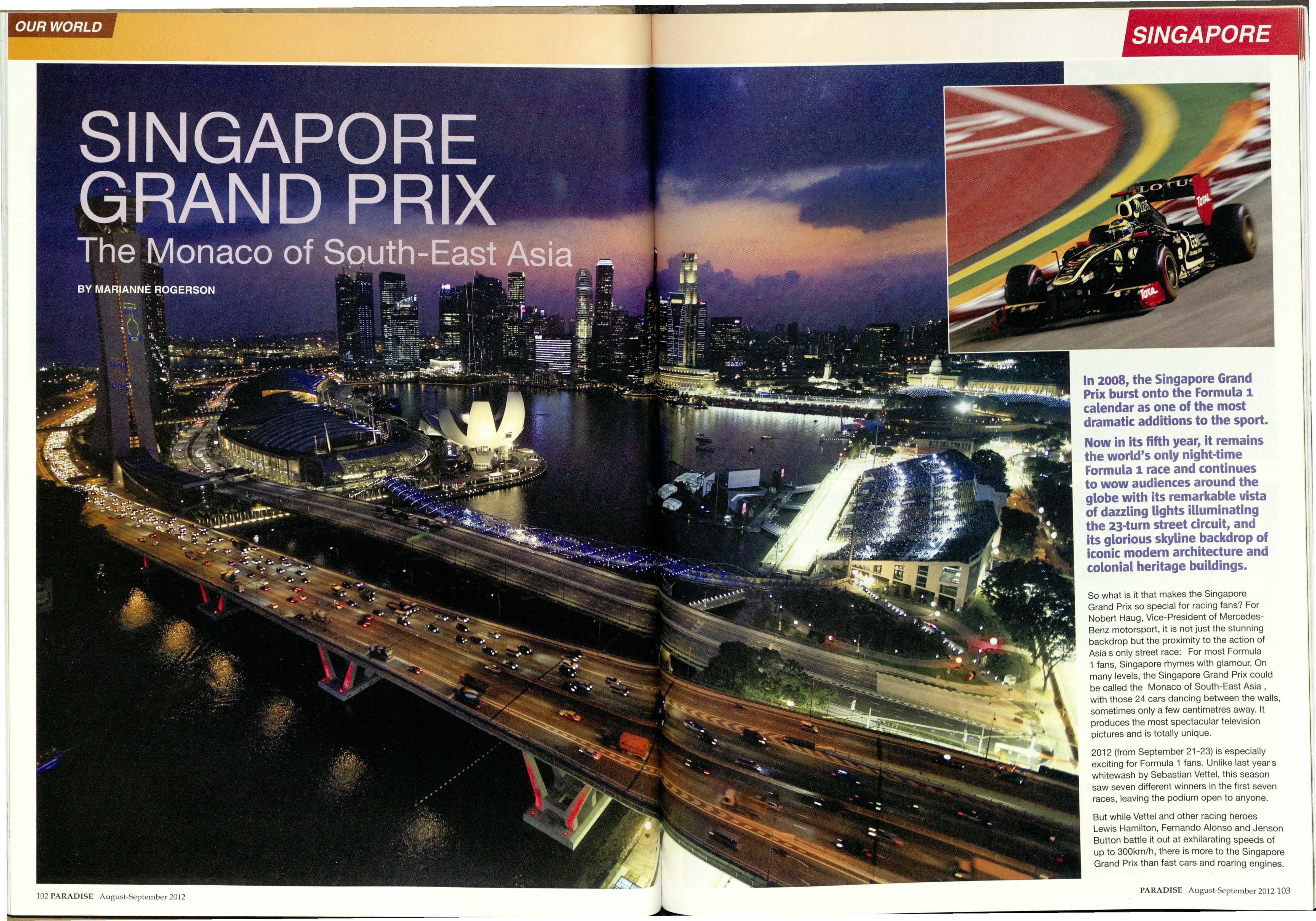
In 2008, the SingaporeGrand Prixburstonto the Formula1 calendaras one of the most dramaticadditionsto the sport.
Now in its fifth year, it remains the world's only night-time Formula1 raceand continues to wow audiencesaroundthe globe with its remarkablevista of dazzlinglights illuminating the 23-turnstreet circuit,and its gloriousskylinebackdropof iconicmodernarchitectureand colonialheritagebuildings.
So what is it that makes the Singapore Grand Prix so special for racing fans? For Nobert Haug, Vice-President of MercedesBenz motorsport, it is not just the stunning backdrop but the proximity to the action of Asia s only street race: For most Formula 1 fans, Singapore rhymes with glamour. On many levels, the Singapore Grand Prix could be called the Monaco of South-East Asia , with those 24 cars dancing between the walls, sometimes only a few centimetres away. It produces the most spectacular television pictures and is totally unique.
2012 (from September 21-23) is especially exciting for Formula 1 fans. Unlike last years whitewash by Sebastian Vettel, this season saw seven different winners in the first seven races, leaving the podium open to anyone.
But while Vettel and other racing heroes Lewis Hamilton, Fernando Alonso and Jenson Button battle it out at exhilarating speeds of up to 300km/h, there is more to the Singapore Grand Prix than fast cars and roaring engines.
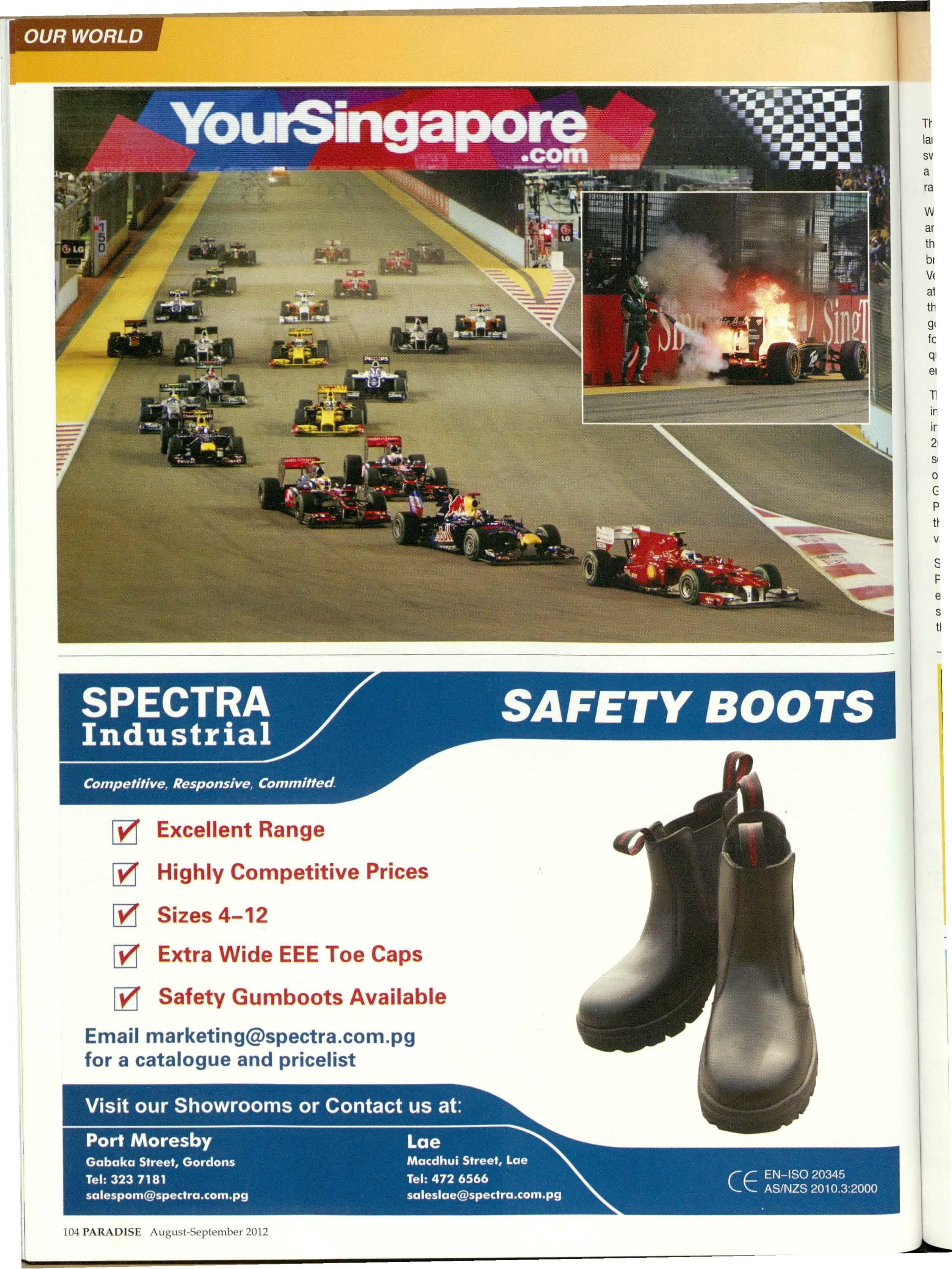
The nineteen other Formula 1 races held around the globe largely attract die-hard petrol heads (plus a few champagneswilling celebrities), but the Singapore Grand Prix appeals to a much wider audience by offering a unique combination of race action and world-class post-race entertainment.
While it is undoubtedly the adrenaline-inducing sight and sound of the Formula 1 racing cars that draws in the enthusiasts, off-the-track entertainment promises to bring the heat up a few more notches. World Champion Vettel agrees: Its spectacular seeing the cars so close at night, seeing them right in front of you in the middle of the city. Also around the race, there are a lot of concerts going on, things like that make it all in all very spectacular for people to come. The attraction is huge. I think we are quite privileged to be part of that it makes our job very enjoyable.
The concerts Vettel refers to have seen 11 Grammy winners including Mariah Carey, Missy Elliott and Linkin Park fly in to Singapore to entertain the post-race crowds since 2009, while this year promises more of the same. Once the sound of the F1 engines fades into the darkness, a roll-call of A-listers will all be gracing the stage, including multiple Grammy-award winner Maroon 5, global musical icon Katy Perry and former Oasis frontman, Noel Gallagher. And these heavy hitters will also be joined by 400 other artists of varying genres.
Sarah Martin, Operations Director of the Singapore Grand Prix and the brainchild behind this total event experience , explains: Asia doesn t have such a passionate following in sports, in particular motorsports, and so we had to broaden the appeal to make the event attractive to a wider audience.
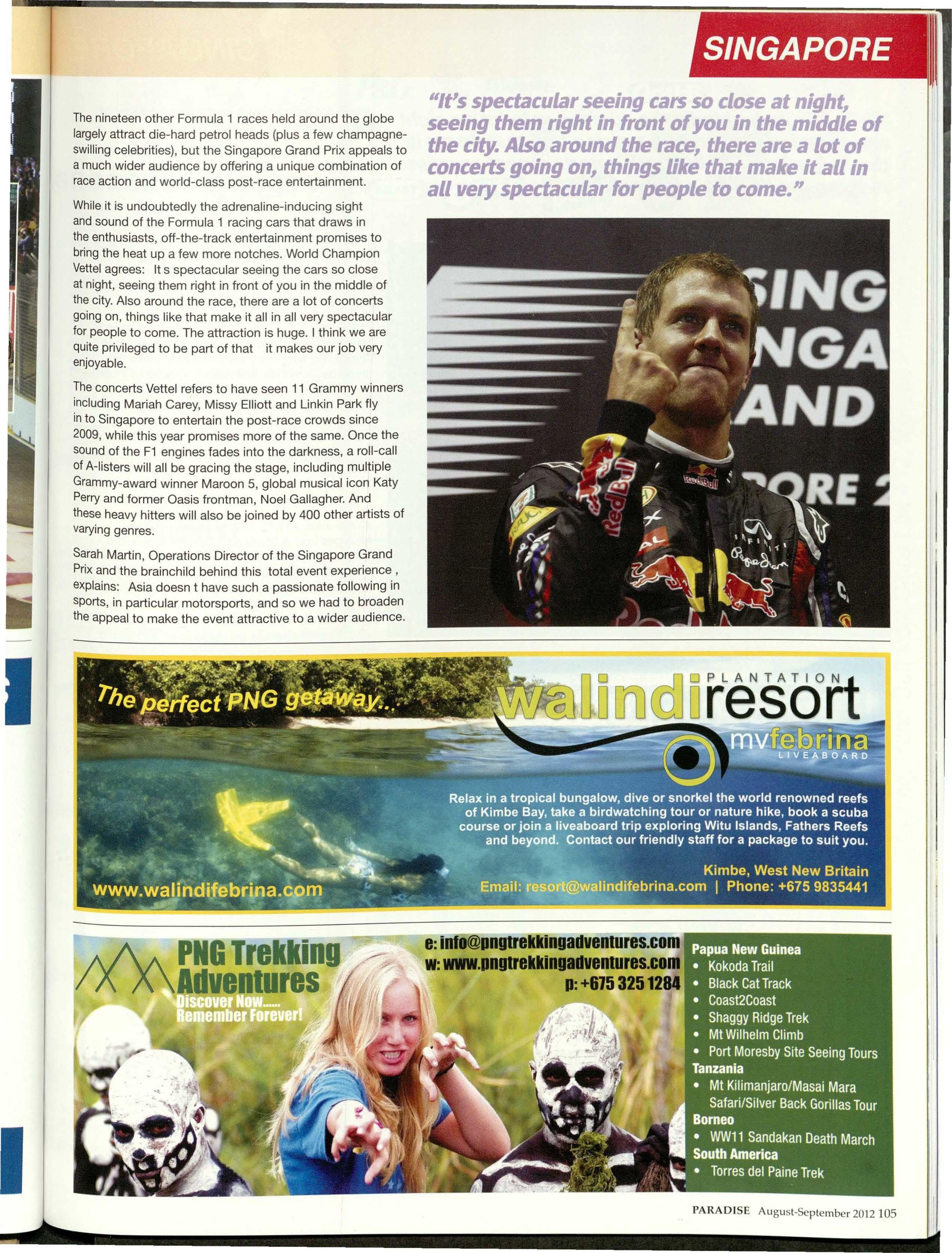
II"It's spectacularseeingcarsso closeat night, seeingthem right in front of you in the middle of the city. Alsoaroundthe race, there are a lot of concertsgoing on, thingslike that make it all in all veryspectacularfor people to come."
Whileit is undoubtedlythe adrenaline-inducingsight and soundof the Formula1 racingcarsthat drawsin the enthusiasts,off.the-trackentertainmentpromises to bring the heat up a few notches.
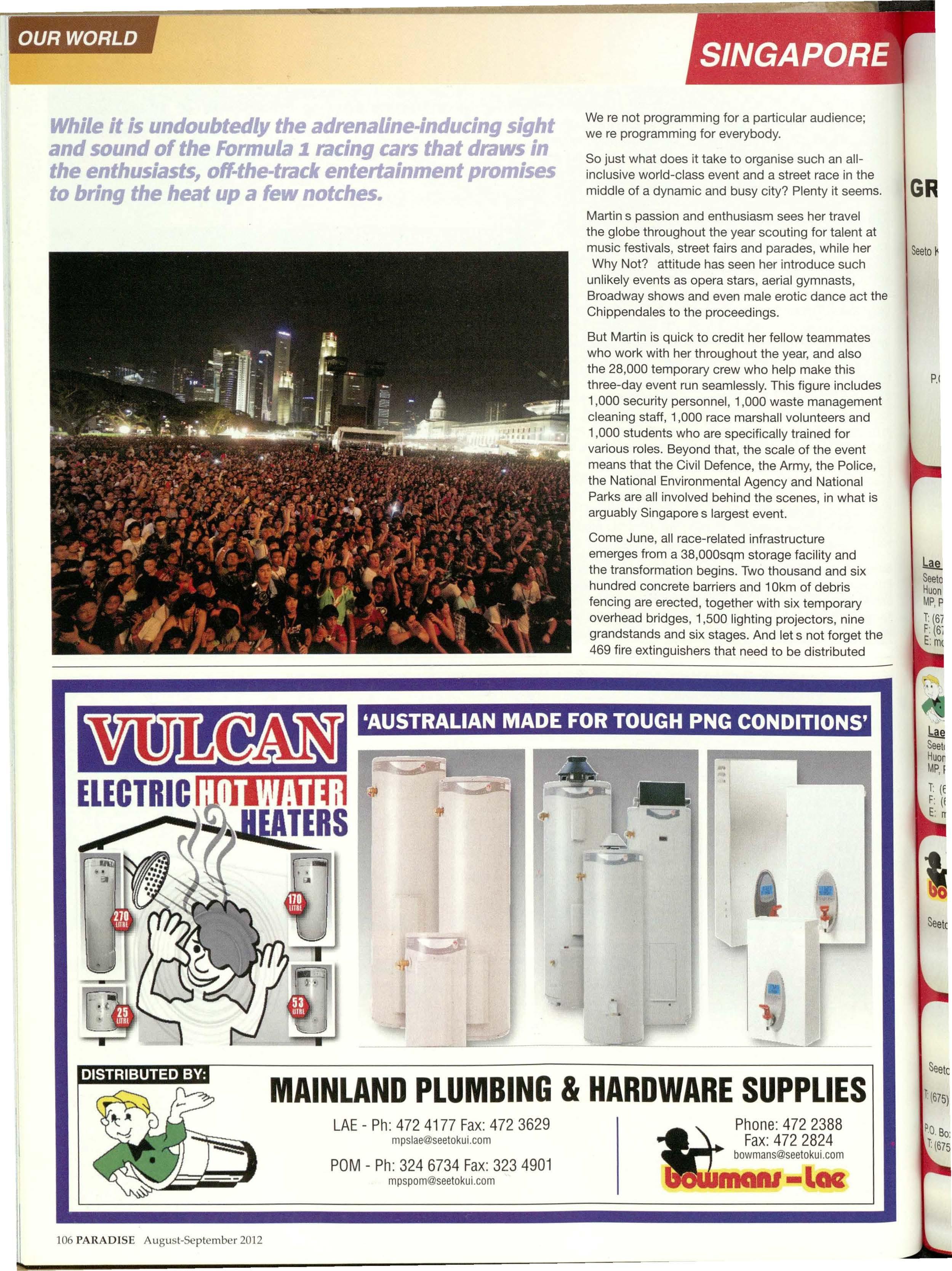
We re not programming for a particular audience; we re programming for everybody.
So just what does it take to organise such an allinclusive world-class event and a street race in the middle of a dynamic and busy city? Plenty it seems.
Martin s passion and enthusiasm sees her travel the globe throughout the year scouting for talent at music festivals, street fairs and parades, while her Why Not? attitude has seen her introduce such unlikely events as opera stars, aerial gymnasts, Broadway shows and even male erotic dance act the Chippendales to the proceedings.
But Martin is quick to credit her fellow teammates who work with her throughout the year, and also the 28,000 temporary crew who help make this three-day event run seamlessly. This figure includes 1,000 security personnel, 1,000 waste management cleaning staff, 1,000 race marshal! volunteers and 1 ,000 students who are specifically trained for various roles. Beyond that, the scale of the event means that the Civil Defence, the Army, the Police, the National Environmental Agency and National Parks are all involved behind the scenes, in what is arguably Singapore s largest event.
Come June, all race-related infrastructure emerges from a 38,000sqm storage facility and the transformation begins. Two thousand and six hundred concrete barriers and 10km of debris fencing are erected, together with six temporary overhead bridges, 1,500 lighting projectors, nine grandstands and six stages. And lets not forget the 469 fire extinguishers that need to be distributed
:the
Lae Branch:
SeetoKuiLockedMailbag,HuonGulf PostOffice,Lae412, MorobeProvince,PapuaNewGuinea.
T: (675)472 1111I F: (675)472 1335 E: sklae@seetokui.com
POM Branch:
P.O.Box1405,Soroka.,NationalCapitalDistrict, PapuaNewGuinea.
T: (675)3254700 I F: (675)3254474 E: skpom@seetokui.com
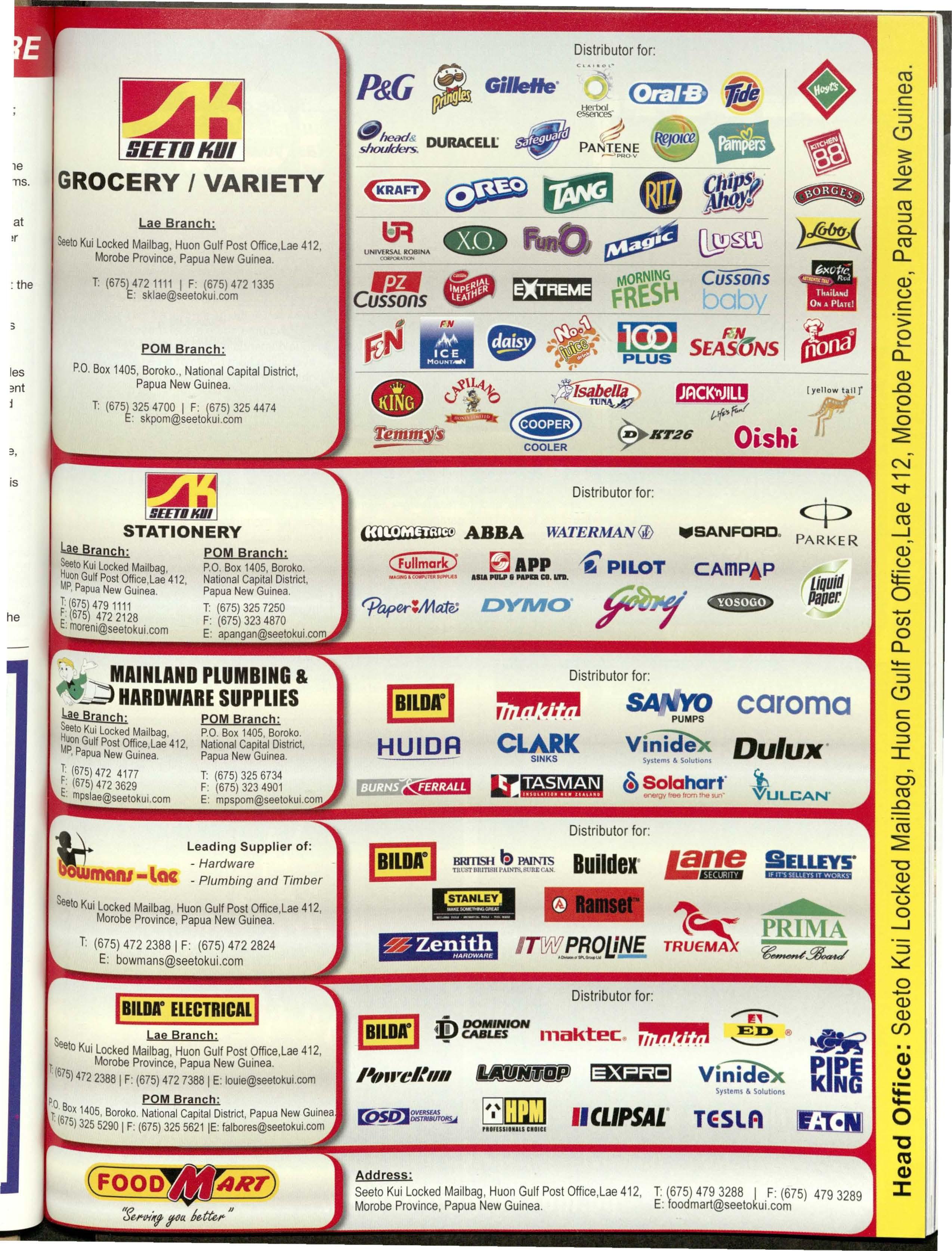
SEETIINU/ STATIONERY
ill Branch:
SeetoKuiLockedMailbag, HuonGulfPostOfficeLae412 MP,PapuaNewGuinea. '
T:(675)4791111 F:(675)4722128 E:moreni@seetokui.com
POM Branch: P.O.Box1405,Boroko. NationalCapitalDistrict, PapuaNewGuinea. T: (675)3257250 F: (675)3234870 E: apangan@seetokui.com
~Branch: POM Branch:
SeetoKuiLockedMailbag P.O.Box1405,Boroko. ~uonGulfPostOffice,Lae 0 412, NationalCapitalDistrict, P,PapuaNewGuinea. PapuaNewGuinea.
T:(675)472 4177
F: (675)4723629 E: mpslae@seetokui.com
T: (675)3256734 F: (675)3234901 E: mpspom@seetokui.com
Leading Supplier of: - Hardware - Plumbing and Timber
SeetoKuiLockedMailbag,HuonGulfPostOffice,Lae412, MorobeProvince,PapuaNewGuinea.
T: (675) 472 2388 I F: (675) 472 2824 E: bowmans@seetokui.com
Se Lae Branch:
etoKu1LockedMailbag,HuonGulf PostOffice,Lae412, l MorobeProvince,PapuaNewGuinea. (675 ) 47223881F: (675)47273881E: louie@seetokui.com
Po POM Branch: I (·680x 1405,Boroko.NationalCapitalDistrict,PapuaNewGuinea • 75 ) 3255290IF: (675)3255621IE:falbores@seetokui.com
around the circuit. A week before the race, 650 tonnes of Formula 1 equipment belonging to the teams arrive by air-freight and truckloads, and the teams work around the clock to build their garages and ensure their cars are race-ready. Meanwhile, electricity cables and plumbing are installed within the site to accommodate the food & beverage tents, portable toilets and entertainment stages and huge quantities of supplies are shipped in. Last year, 70,000 bottles of champagne, 154,260 glasses of
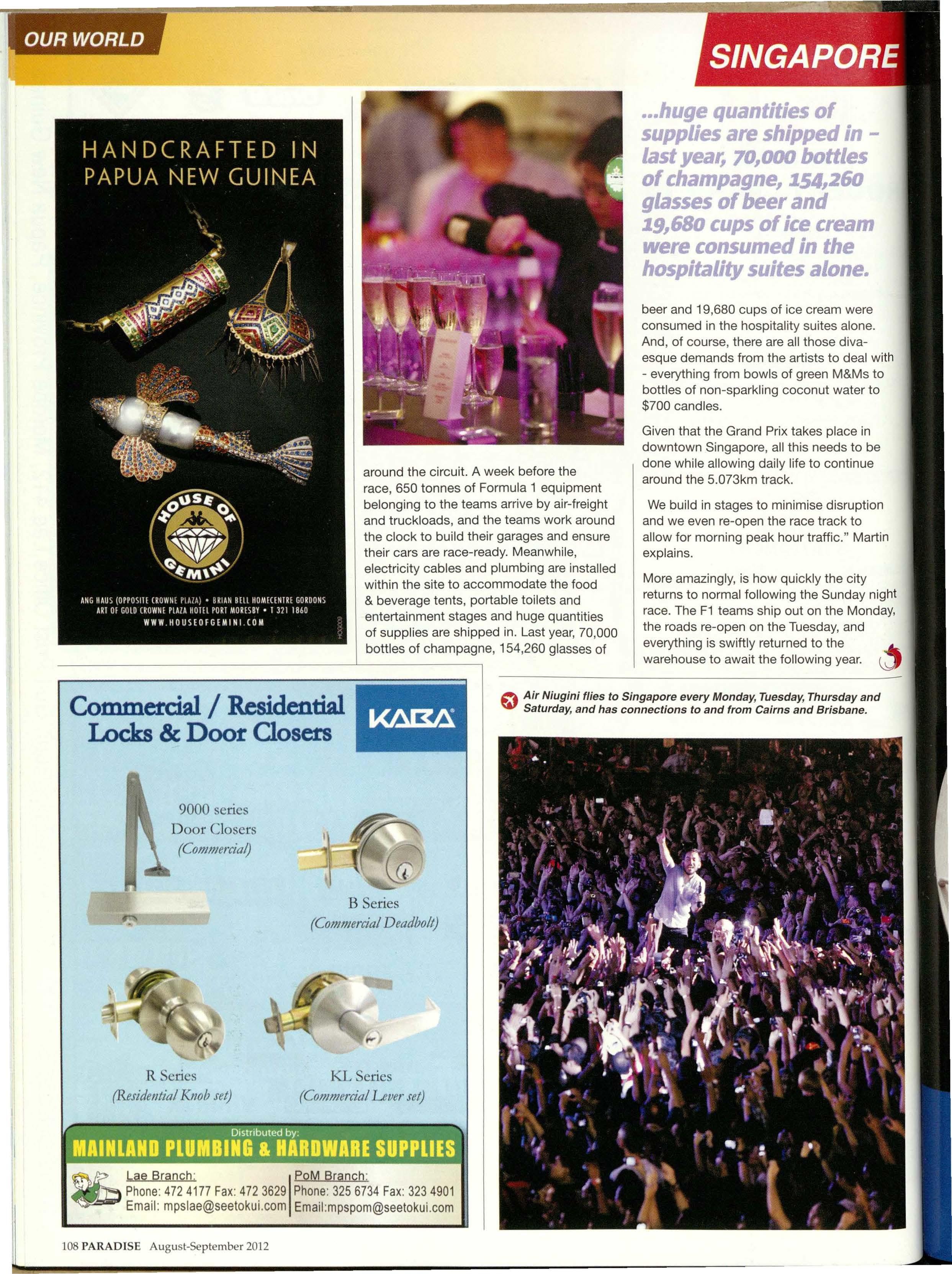
...huge quantitiesof suppliesare shippedinlastyear, 10,000 bottles of champagne,154,26a glassesof beer and 19,680 cupsof ice cream were consumedin the hospitalitysuitesalone.
beer and 19,680 cups of ice cream were consumed in the hospitality suites alone. And, of course, there are all those divaesque demands from the artists to deal with - everything from bowls of green M&Ms to bottles of non-sparkling coconut water to $700 candles.
Given that the Grand Prix takes place in downtown Singapore, all this needs to be done while allowir:ig daily life to continue around the 5.073km track.
We build in stages to minimise disruption and we even re-open the race track to allow for morning peak hour traffic." Martin explains.
More amazingly, is how quickly the city returns to normal following the Sunday night race. The F1 teams ship out on the Monday, the roads re-open on the Tuesday, and everything is swiftly returned to the warehouse to await the following year.

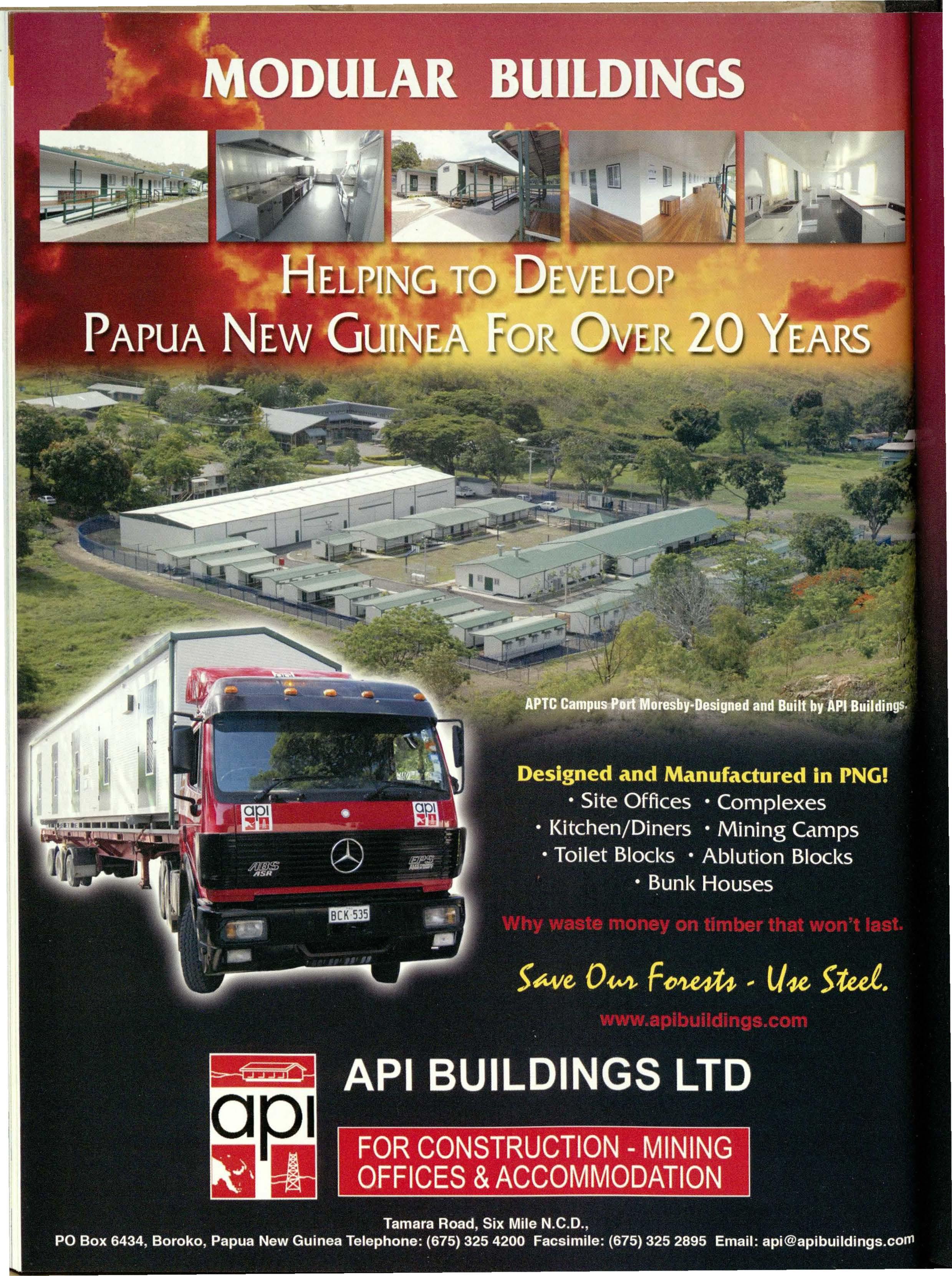


While in Fiji, it's so easyto stay at your luxury resort, sippingcocktailsby the pool and indulgingin beachsidemassages.But if you don't venture past the hotel lobby, chancesare you're likely to missthe inner beauty of this amazing island, as JoHN IANNANTUoNo found out.
Its taken just over an hour for my wife and 1 to reach Sigatoka, which is by no means a negative when so much natural beauty and intrigue is on offer.
A Sigatoka River Safari employee kindly opens my door as our taxi pulls up to the kerb. There s more taxi hopping for you, he informs me, having just spent the last 80 minutes travelling from Nadi after the company s shuttle bus forgot to collect us from our hotel.
Don t worry, he adds, the bus just left so they re not too far ahead. This taxi will take Youto them.
The gravel road on the second leg of the Journeyto the Sigatoka River are littered with Potholes, and livestock tied up to trees are a common sight as are the roadside fruit stalls.
A hard bump disrupts my daydreaming; surely a tyre is going to pop any minute, I think to rnyself
1 can see the shuttle bus now but its not rnoving. Its stationary. And there aren t any People in it. Nor are there any people hovering outside the tour company's office, applying sunscreen or purchasing bottles of water. Only an office attendant and a mechanic are Present.
As I exit the taxi, they appear a little stupefied and confused. The office attendant then
makes a mad dash across the road and down the riverbank, yelling something in Fijian. I have a five-day-old beard, but I don't think I looked that threatening.
He finally returns, sporting a wide-eyed grin that is all too common on this side of the world. Come, they are all in the boat ready to leave, he says. Lucky, we just caught them in time.
My wife and I race down to the dock, desperately trying to tighten our lifejackets and apply sunscreen at the same time. We throw ourselves into the back of the jet-boat, which
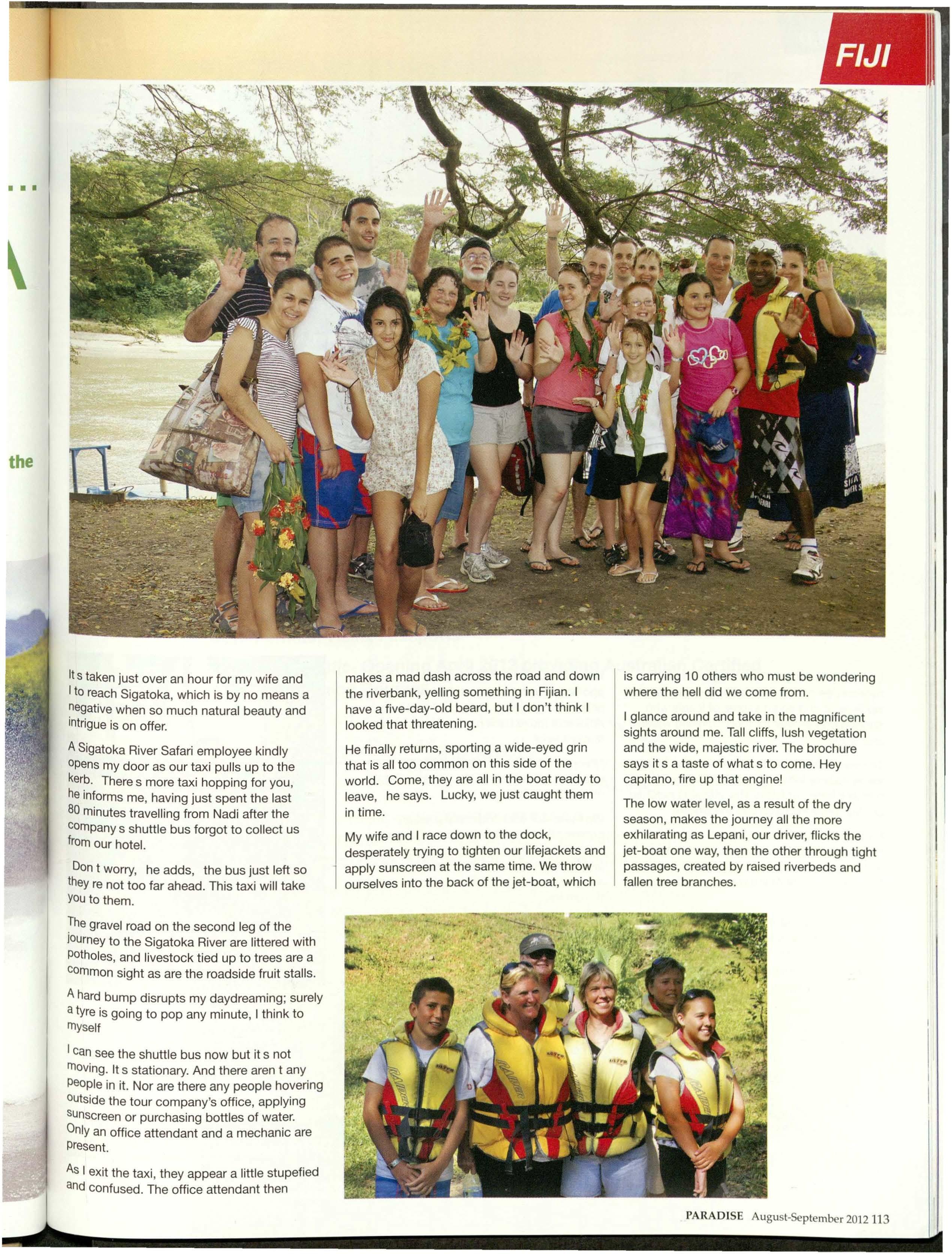
is carrying 10 others who must be wondering where the hell did we come from.
I glance around and take in the magnificent sights around me. Tall cliffs, lush vegetation and the wide, majestic river. The brochure says its a taste of what s to come. Hey capitano, fire up that engine!
The low water level, as a result of the dry season, makes the journey all the more exhilarating as Lepani, our driver, flicks the jet-boat one way, then the other through tight passages, created by raised riverbeds and fallen tree branches.
Livestock tucking in to some greens on the rivers edge gets the occasional spray as we fly past and so do scores of locals who depend on the river for food, drinking water and laundry.
The travel time to Koronisagama - the village we re visiting today - is approximately 25 minutes from our base. The village is perched on high grounds deep into the woods.
From the jetty, it's taken a good 1O to 15 minutes to reach the village by foot, which was relocated from its original position on the opposite side of the river due to frequent flooding.
The image that lies in front of me is one of stark contrast to the five-star resort I'm sleeping at tonight. The village is very basic, yet as our tour guide mentions, it's all they require.
The houses are quite small - barring that of the chief, which stands tall in the middle of the village - with many built side-by-side to encourage sharing among the neighbours. There's also a church, school and communal kitchen.
"Everyone answers to the chief," says our tour guide, who happens to live in this village. "The chief makes up the rules and he decides the penalty. Even if you want to build something in your front lawn, the chief must
know. I returned to the village about 1O years ago when my father passed away. I was living and working in Nadi then, but I decided to retire and move back here to look after my family's land.
"People don't earn a lot of money in the village. A farmer here will earn about F$20 a month," he adds.
We make our way down to the village community centre where a kava ceremony awaits. The village elders are already inside, as are many young boys. We enter the building, shoes removed, and take our place opposite the elders.
"Men in the front row, women behind," we're told.
The acting chief welcomes us in his native tongue and for several minutes, I just sit here scanning the room nervously as acts of cannibalism plague my mind (Fijian tribes practised cannibalism until the 1860s).
The acting chief turns to our 'matanivanua' (spokesman) for a response, which he duly gives. A few more words are uttered, then a loud "Bula" (welcome) and clap. Time to relax: we've officially been welcomed.
The kava is prepared and offered first to the acting chief, then to our spokesperson. Protocol has it that you give an acknowledging nod, say "Bula" and clap once.
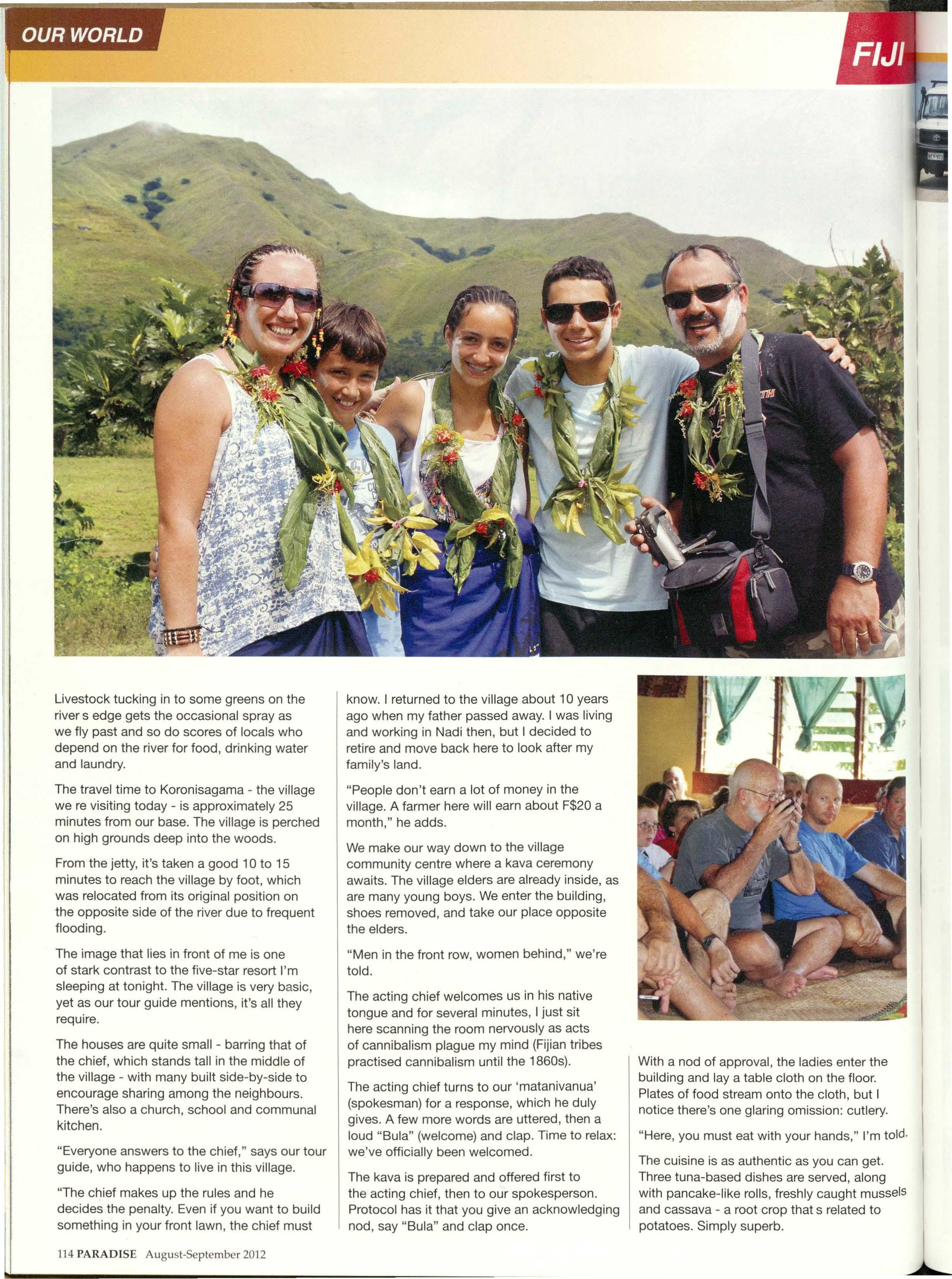
With a nod of approval, the ladies enter the building and lay a table cloth on the floor. Plates of food stream onto the cloth, but I notice there's one glaring omission: cutlery.
"Here, you must eat with your hands," I'm told-
The cuisine is as authentic as you can get. Three tuna-based dishes are served, along with pancake-like rolls, freshly caught mussels and cassava - a root crop that s related to potatoes. Simply superb.
Pacific Manpower is proudly 100% PAPUA NEW GUINEAN owned and with Four offices nationwide.
Our diverse range of Clients include Mining, Oil/Gas, Resources, Transport, Manufacturing, Mine Catering, Hotels, Engineering and Construction Industries.
We Provide services for:
- Recruitment of Nationals, Expatriates and Other Country Nationals
- Labour Hire/Manpower Hire of Nationals, Expatriates and Other Country Nationals
- Work Permits, Visas, Passports
- Moreskills Pacific- Opening April 2012 providing Australian Certified High Risk Training Courses
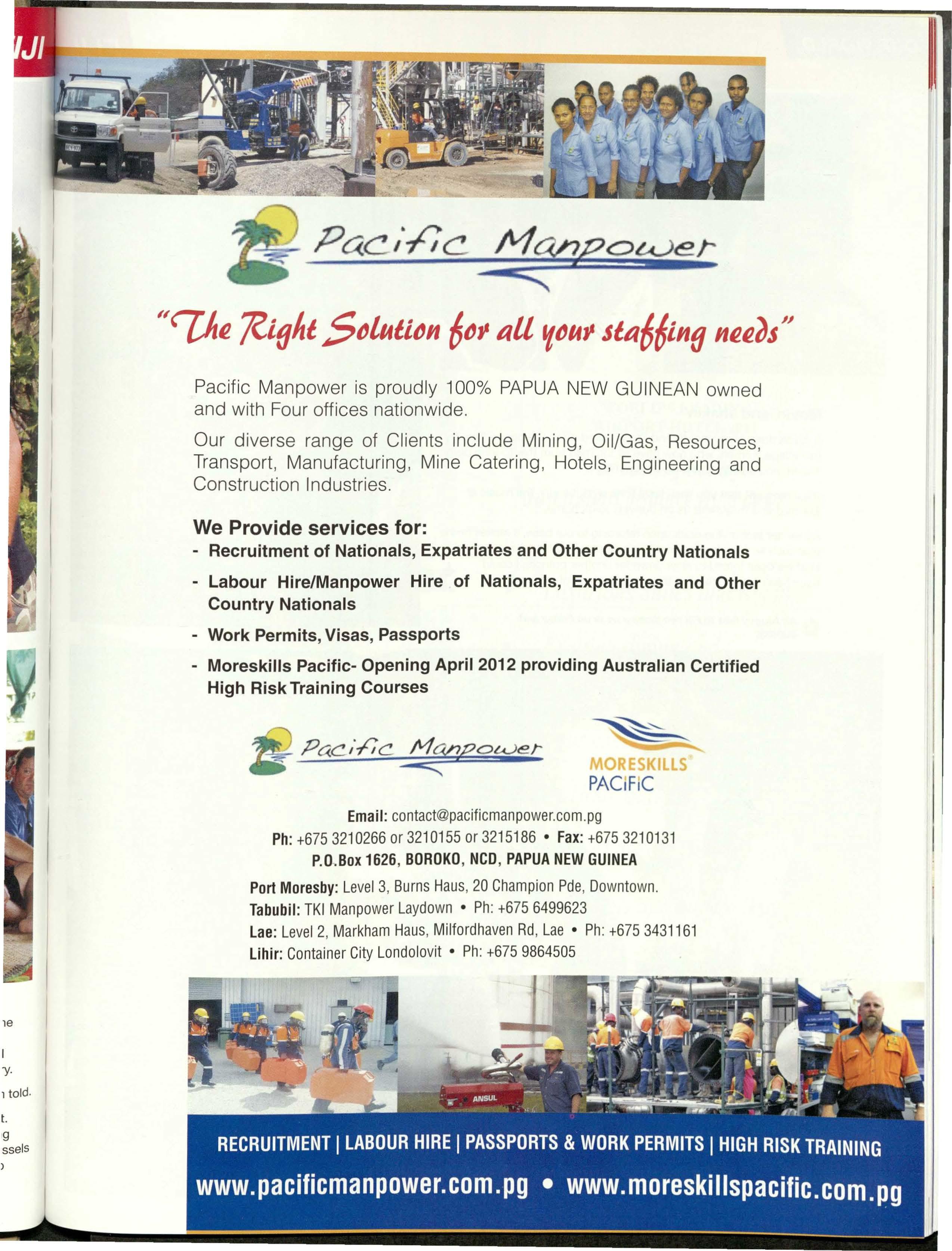
Email:contact@pacificmanpower.com.pg
Ph:+6753210266or 3210155or 3215186• Fax:+6753210131
P.O.Box1626, BOROKO,NCO,PAPUANEWGUINEA
PortMoresby:Level3, BurnsHaus,20 ChampionPde,Downtown.
Tabubil:TKIManpowerLaydown• Ph:+6756499623
Lae:Level2, MarkhamHaus,MilfordhavenRd,Lae • Ph:+6753431161
Lihir:ContainerCityLondolovit• Ph:+6759864505
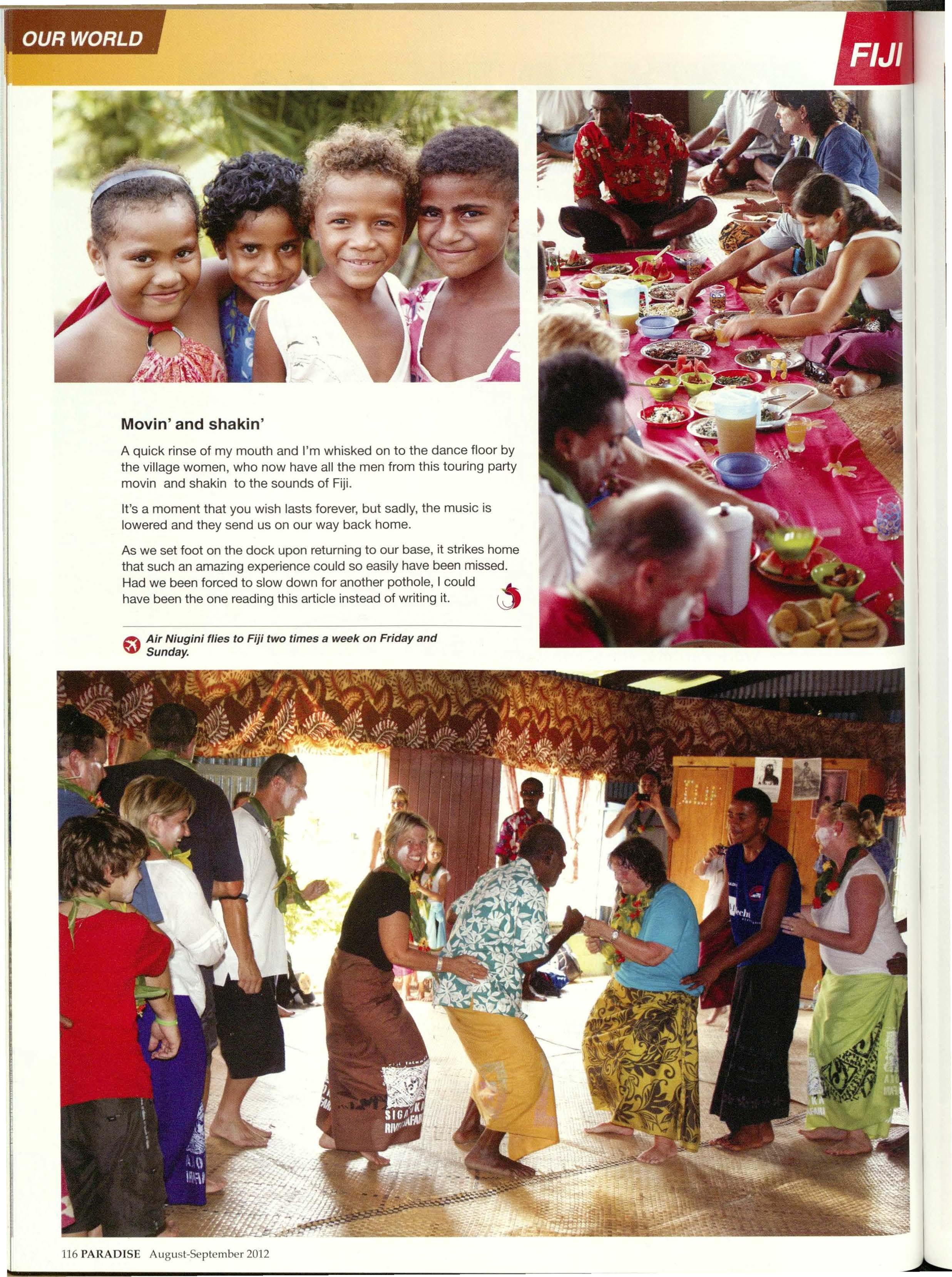
A quick rinse of my mouth and I'm whisked on to the dance floor by the village women, who now have all the men from this touring party movin and shakin to the sounds of Fiji.
It's a moment that you wish lasts forever, but sadly, the music is lowered and they send us on our way back home.
As we set foot on the dock upon returning to our base, it strikes home that such an amazing experience could so easily have been missed. Had we been forced to slow down for another pothole, I could have been the one reading this article instead of writing it.
1f!PJi.Air Niugini flies to Fiji two times a week on Friday and W Sunday.
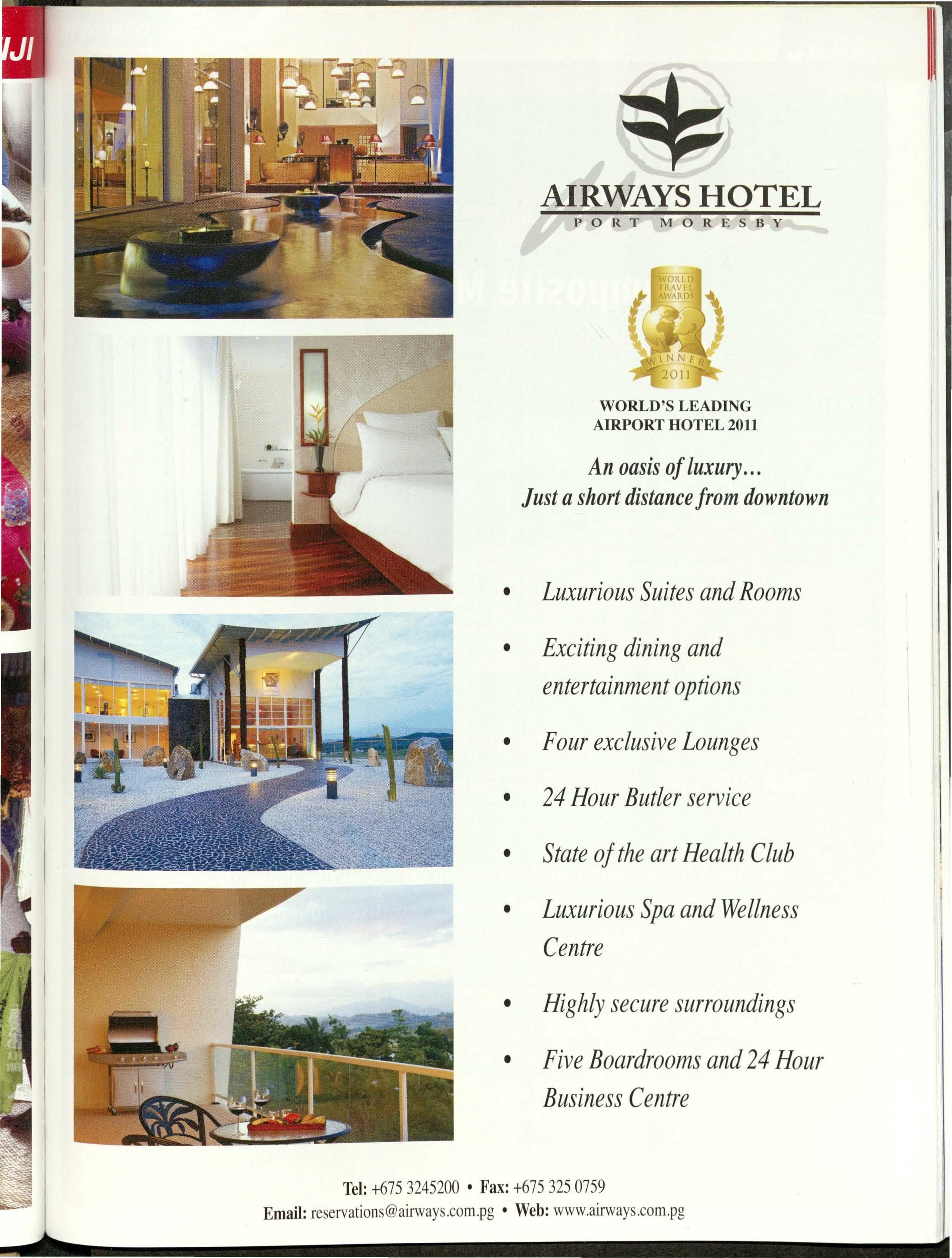

truggling up the steep slope towards Kyoto s landmark, Kiyomizu-dera, old ladies in traditional kimonos and wooden sandals seemed to be finding the snowy conditions much less of a problem than I was.
Seemingly slight young men carrying tourists in rickshaws also effortlessly glided past and I was beginning to wonder if the effort was worth it. The majestic view and masterful architecture that greeted me meant of course it was; the tranquility and beauty of Kyoto, a UNESCO World Heritage Site, containing some 2,000 religious structures, is always worth the effort.
Kyoto literally means capital city, which it was from around the 8th century to 1868 when power was transferred to the emerging Tokyo. The city's 'golden age' is often thought to be the Heian Period, a time of great artistry and culture as depicted in Murasaki Shikibu's 'The Tale of Genji', considered by many to be the world's first novel.

BY MATTHEWKNOTT
Theapproachto Kiyomizu-dera.
While the power headed east, the cultural heritage stayed in Kyoto, so much so that the city was removed from the list of potential atomic bomb targets by personal intervention of Henry L. Stimson, the US Secretary of War, who had honeymooned in the city.
Its assets, including 1,600 Buddhist temples, 400 Shinto shrines, the geisha district, gardens and palaces, remain thankfully intact.
Kiyomizu-dera is one of the most awe-inspiring spots from which to survey the city. The temple itself is a wooden structure built on large stilts,
almost creating the impression of floating at the top of the hill, where Buddhist monks peacefully set about their work as tourists stream past in hushed reverence.
Watching the sun set behind the temple and over the city from the adjacent viewing platform is one of Japan's iconic scenes.
Kyoto has a wealth of treasures, but perhaps none are more opulent that Kinkaku-Ji, the Temple of the Golden Pavilion. This stunning structure is covered in gold-leaf and glistens over the surrounding ponds and strolling gardens, designed to illustrate the harmony between heaven and earth. Its near namesake Ginkaku-Ji, the Temple of the Silver Pavilion, is not actually silver - planned decoration was never completed - but its humble, unfinished feel and spectacular sand gardens make it a no less essential visit.
The Japanese cherish the distinctiveness of their four seasons, and each of them brings something special to Kyoto. In spring, the city is covered with delicate pink cherry blossoms, and the hanami (flower viewing) parties that accompany the brief but beautiful blossoms are a product of the Heian Court, where the nobility drank, painted, played music and recited poetry. "Gazing far afield, willow green and cherry pink, weave a delicate, brocade of spring so fine, the capital may wear it," wrote the Heian era poet Sosei. The digital camera has replaced the paintbrush, but the appreciation remains the same.

Summer brings an intense humidity to Kyoto, but it is also the season of two of the city s most celebrated festivals. Originally a purification ritual to appease the gods, the month-long Gion Matsuri draws hundreds of thousands of visitors dressed in summer yukata robes to see its parades and ornate floats (yamaboko). Hawkers sell irresistible street food snacks such as yakitori (grilled, skewered chicken) and takoyaki (grilled dumplings filled with octopus). Daimonji, meanwhile, is a unique event where giant kanji (Chinese characters) are lit up in the hills that surround the city. Kyoto is then bathed in a red and golden glow with the onset of autumn. While winter can be bitingly cold, the city will
often be dusted with snow, which lends the perfectly manicured Japanese gardens an austere beauty, making them strangely edible.
With Kyoto s shrines, it is also the perfect place to experience the Japanese New Year custom of praying for goodwill for the forthcoming twelve months (Hatsumode). This must be done within the first three days of the year, but many will do it in the first hours, making for a buoyant midnight atmosphere.
Of the numerous Shinto shrines, Heian Jingu is perhaps the most endearing. Actually not nearly as old as many of its neighbours, it was built in 1895 to commemorate the 1, 100th anniversary of the naming of the city.
The main building pays tribute to Kyoto's Imperial Palace, but the bright red pillars, white panels and green tiled roofs make it arguably more photogenic and the torii entrance gate is one of the country s largest.
The principles of tranquility and aestheticism that characterise so many of Kyoto s landmarks are taken to a further degree at Ryoan-ji, a Buddhist Zen-influenced karesansui (rock) garden. Designed in the 15th century, 15 moss-covered boulders are arranged so that only 14 can ever be seen from any angle (traditional belief was that only with enlightenment would the 15th become visible). The gravel around the boulders is raked into perfect and mesmerising circles.
-The aesthetics of the traditional Gion district are also much appreciated as are those of

Visitors can also experience Kyoto s aristocratic principles through its dining. Kaiseki ryori is a refined style that places great emphasis in subtle flavours and seasonal ingredients.
Dishes are served in order depending on their "' cooking styles. These are served throughout the city and often at ryokan hotels. In contrast, shokin ryori developed from the austere lifestyle of Buddhist monks and is strictly vegetarian, although nonetheless filling.
The atmospheric Pontocho district alongside the river is a good place to find some of Japan s more down-to-earth and fusion dining. A sweet delight to take home is yatsuhashi, a delicious baked sweet of rice flour, sugar, cinnamon and red bean paste.
There is actually a fine selection of dining options in Kyoto Station. The contemporary style of this magnificent structure by Hiroshi Hara has divided opinion, sometimes being criticised for not being in keeping with the classicism of the city and blighting the skyline. But judged on its own it is a masterpiece; it rises in a bewildering series of twists and turns its famous inhabitants: traditional geisha. Dwindling in number, it is nonetheless still possible to see maiko (geisha in training) in full costume floating elegantly between ochaya teahouses and machiya townhouses, where they entertain guests in a still secretive world.
and the escalator is like a stairway to heaven, I providing one last breathtaking view of _._ this city of temples. V
f) Air Niugini flies to Narita, Japan, once a week on Saturday.
PREFAB SHEDS/ WAREHOUSES/ WORKSHOPS/ FACTORIES/ OFFICES
STANDARD SIZE: 20m x 60m (10 x 6m bays). IN STOCK NOW
WE CAN ALSO SUPPLY BIGGER SHEDS
THE BUILDINGS COME IN CONTAINERS AND CAN BE DELIVEREDANYWHERE IN PNG/PACIFIC. AS THEY ARE PREFABRICATED (KIT SETS) ONCE ON SITE THEY CAN BE ERECTED WITHOUT ANY DELAYS.
For further information and quote please contact: DAVID BURNS
BOWMANSPREFABSHEDS
Phone: +(675) 3253088 Email: managerbowmans@online.net.pg
;ireat :heir )Ut trast, ;ide ining. li, 1r, 1ry ,hi 19 ;line. it turns .en, week
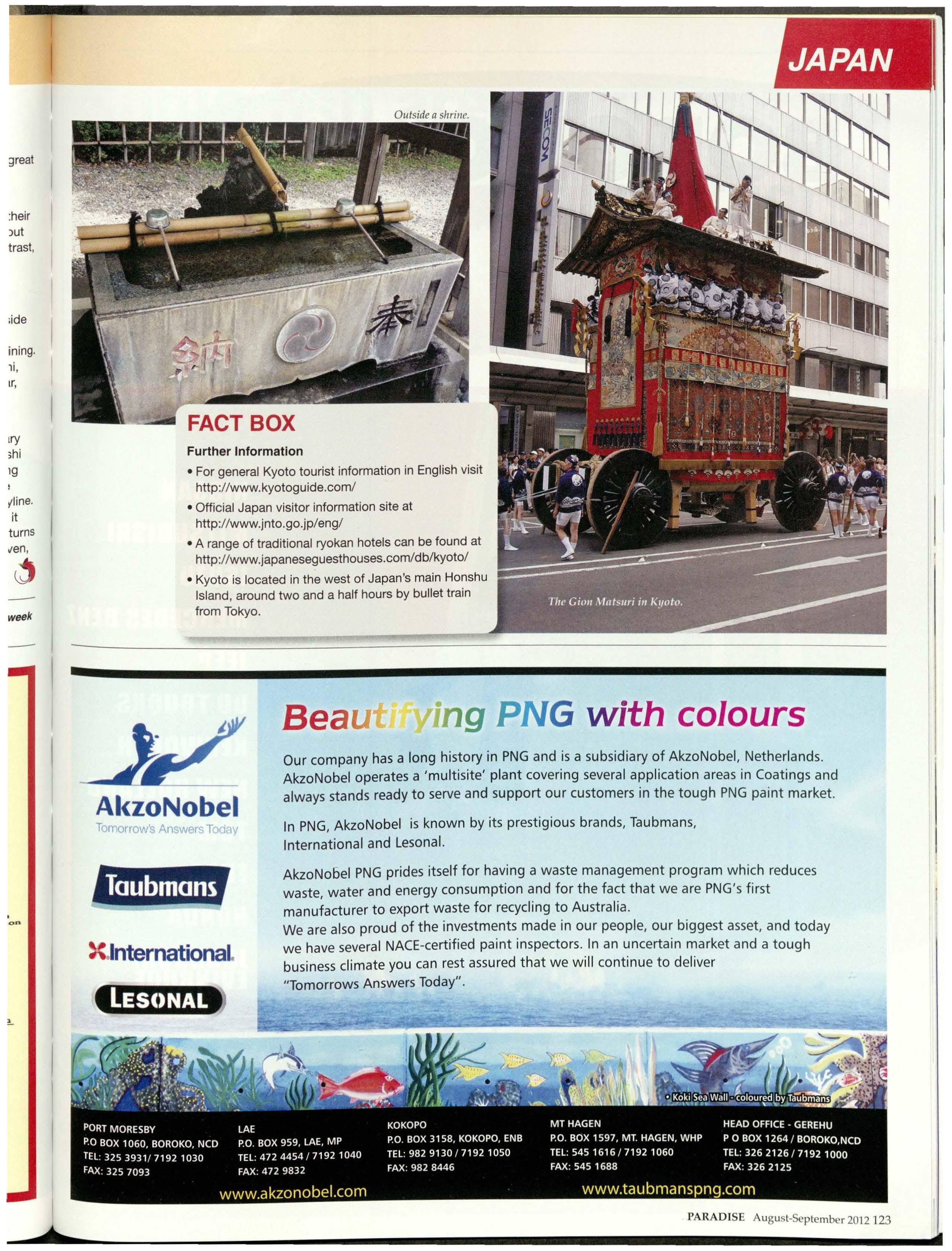
Further Information
• For general Kyoto tourist information in English visit http://www.kyotoguide.com/
• Official Japan visitor information site at http://www.jnto.go.jp/eng/
• A range of traditional ryokan hotels can be found at http://www.japaneseguesthouses.com/db/kyoto/
• Kyoto is located in the west of Japan's main Honshu Island, around two and a half hours by bullet train from Tokyo.
Our company has a long history in PNG and is a subsidiary of AkzoNobel, Netherlands. AkzoNobel operates a 'multisite' plant covering several application areas in Coatings and always stands ready to serve and support our customers in the tough PNG paint market.
In PNG, AkzoNobel is known by its prestigious brands, Taubmans, International and Lesonal.
AkzoNo6el PNG prides itself for having a waste management program which reduces waste, water and energy consumption and for the fact that we are PNG's first manufacturer to export waste for recycling to Australia. We are also proud of the investments made in our people, our biggest asset, and today we have several NACE-certified paint inspectors. In an uncertain market and a tough business climate you can rest assured that we will continue to deliver "Tomorrows Answers Today".

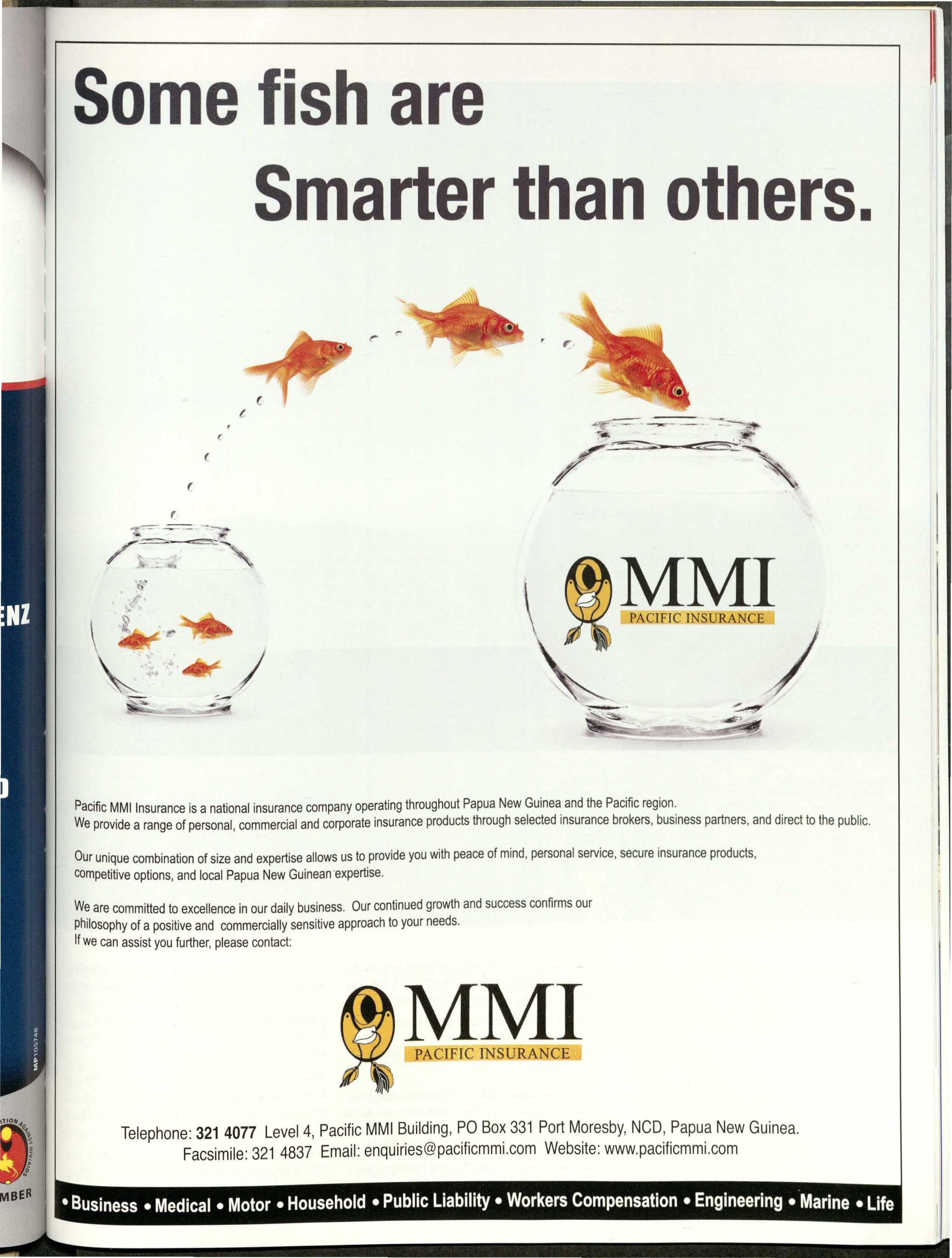
PacificMMIInsuranceis a nationalinsurancecompanyoperatingthroughoutPapuaNewGuineaandthe Pacificregion. Weprovidea rangeof personal,commercialandcorporateinsuranceproductsthroughselectedinsurancebrokers,businesspartners,anddirectto the public.
Ouruniquecombinationof sizeandexpertiseallowsusto provideyouwithpeaceof mind,personalservice,secureinsuranceproducts, competitiveoptions,andlocalPapuaNewGuinean-expertise.
Wearecommittedto excellencein ourdailybusiness.Ourcontinuedgrowthandsuccessconfirmsour Philosophy of a positiveand commerciallysensitiveapproachto yourneeds. If wecanassistyoufurther,pleasecontact:
Telephone:3214077 Level4, PacificMMIBuilding,POBox331PortMoresby,NCO,PapuaNewGuinea. Facsimile:3214837 Email:enquiries@pacificmmi.comWebsite:www.pacificmmi.com
BY DR CRAIG TURNER
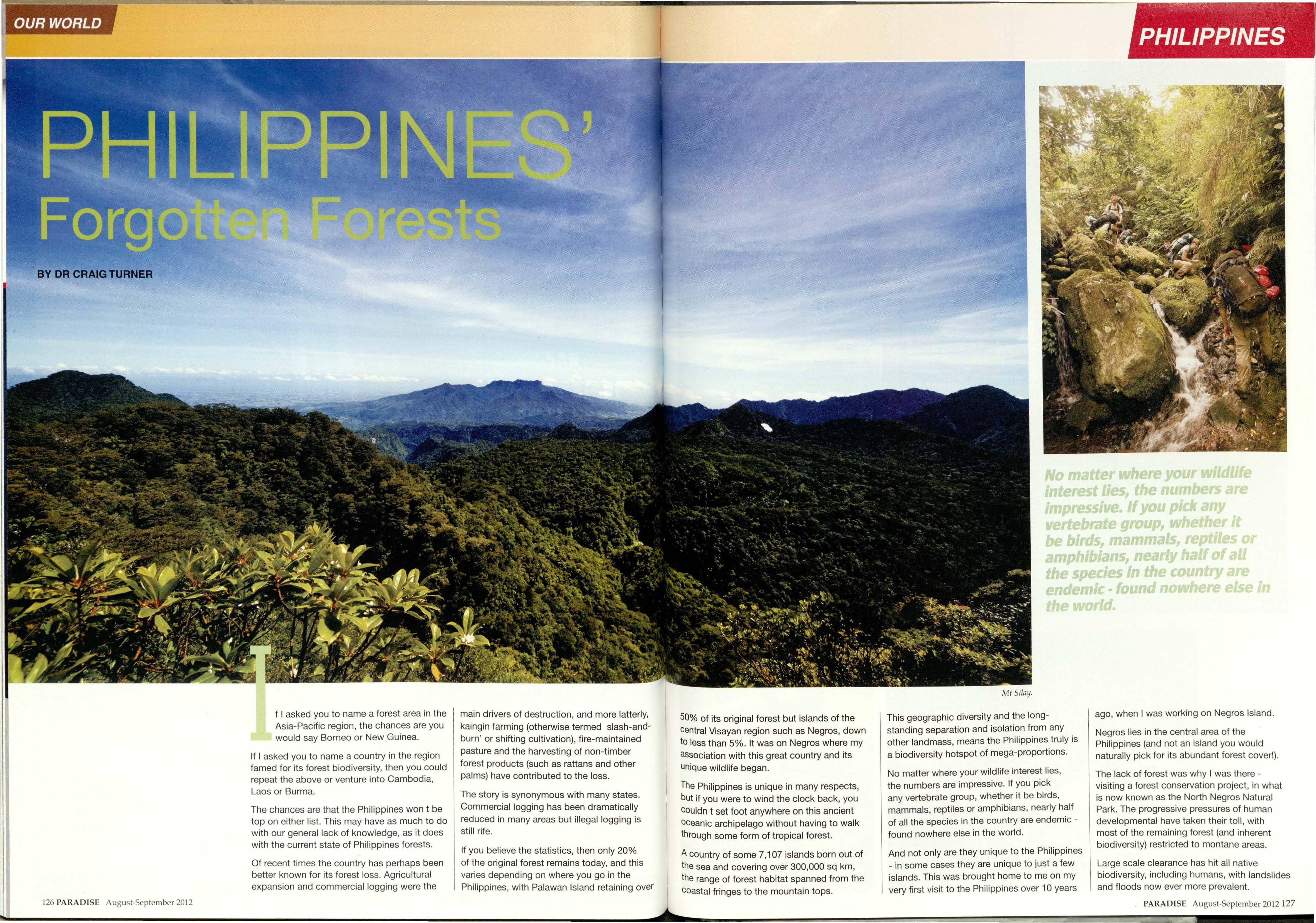
f I asked you to name a forest area in the Asia-Pacific region, the chances are you would say Borneo or New Guinea.
If I asked you to name a country in the region famed for its forest biodiversity, then you could repeat the above or venture into Cambodia, Laos or Burma.
The chances are that the Philippines wont be top on either list. This may have as much to do with our general lack of knowledge, as it does with the current state of Philippines forests.
Of recent times the country has perhaps been better known for its forest loss. Agricultural expansion and commercial logging were the
main drivers of destruction, and more latterly, kaingin farming (otherwise termed slash-andburn' or shifting cultivation), fire-maintained pasture and the harvesting of non-timber forest products (such as rattans and other palms) have contributed to the loss.
The story is synonymous with many states. Commercial logging has been dramatically reduced in many areas but illegal logging is still rife.
If you believe the statistics, then only 20% of the original forest remains today, and this varies depending on where you go in the Philippines, with Palawan Island retaining over
50% of its original forest but islands of the central Visayan region such as Negros, down to less than 5%. It was on Negros where my association with this great country and its Uniquewildlife began.
The Philippines is unique in many respects, but if you were to wind the clock back, you couldn t set foot anywhere on this ancient oceanic archipelago without having to walk through some form of tropical forest.
A country of some 7,107 islands born out of the sea and covering over 300,000 sq km, the range of forest habitat spanned from the coastal fringes to the mountain tops.
No matter whereyour wildlifi interestlies, the numbersare impressive.If you pickany vertebrategroup,whether t be birds,mammals,reptileso amphibians,nearlyhalf of all he speciesin the countryare ndemic- foundnowheree he world.
This geographic diversity and the longstanding separation and isolation from any other landmass, means the Philippines truly is a biodiversity hotspot of mega-proportions.
No matter where your wildlife interest lies, the numbers are impressive. If you pick any vertebrate group, whether it be birds, mammals, reptiles or amphibians, nearly half of all the species in the country are endemicfound nowhere else in the world.
And not only are they unique to the Philippines - in some cases they are unique to just a few islands. This was brought home to me on my very first visit to the Philippines over 10 years
ago, when I was working on Negros Island. Negros lies in the central area of the Philippines (and not an island you would naturally pick for its abundant forest cover!).
The lack of forest was why was therevisiting a forest conservation project, in what is now known as the North Negros Natural Park. The progressive pressures of human developmental have taken their toll, with most of the remaining forest (and inherent biodiversity) restricted to montane areas.
Large scale clearance has hit all native biodiversity, including humans, with landslides and floods now ever more prevalent.
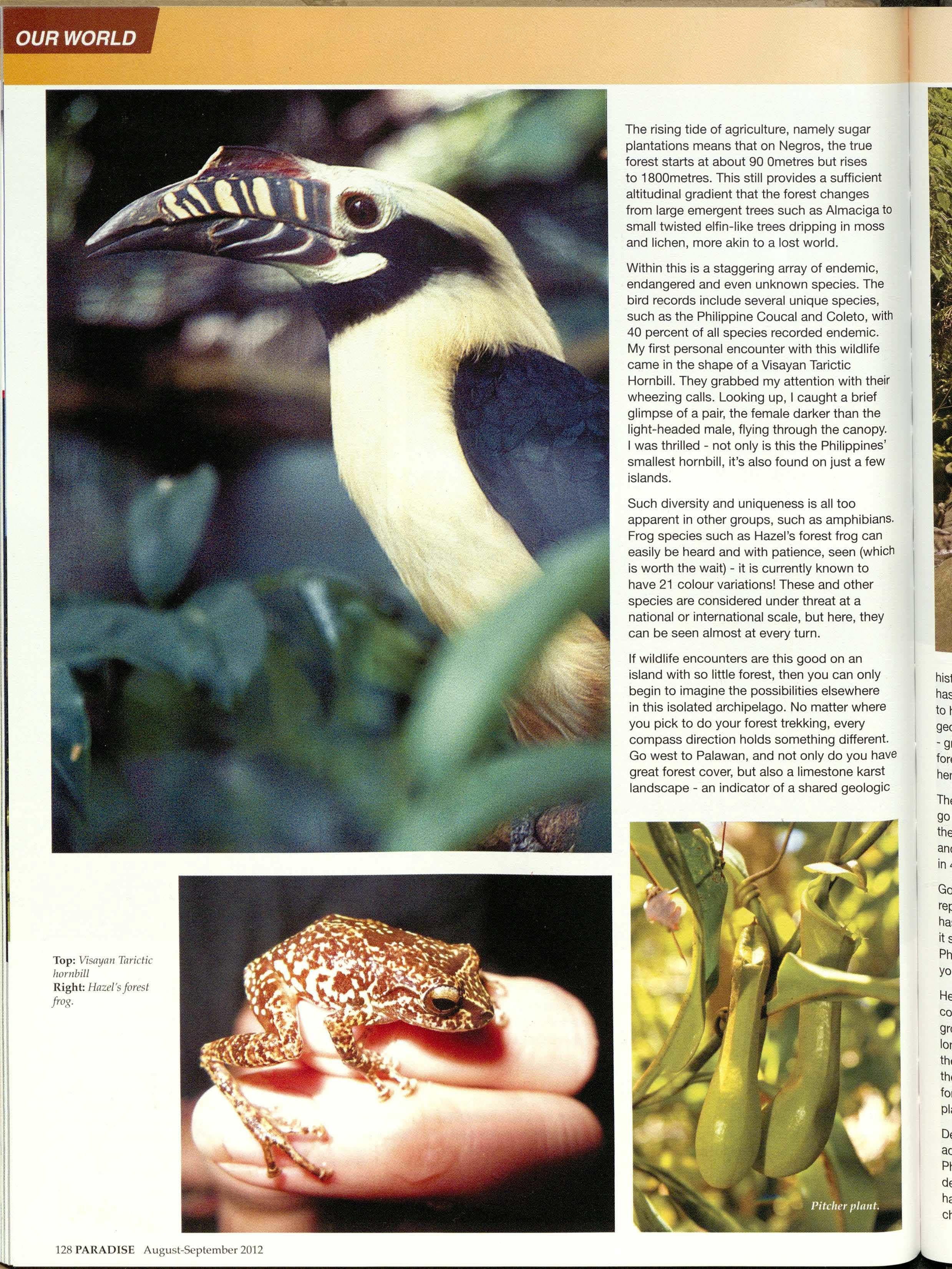
The rising tide of agriculture, namely sugar plantations means that on Negros, the true forest starts at about 90 0metres but rises to 1800metres. This still provides a sufficient altitudinal gradient that the forest changes from large emergent trees such as Almaciga to small twisted elfin-like trees dripping in moss and lichen, more akin to a lost world.
Within this is a staggering array of endemic, endangered and even unknown species. The bird records include several unique species, such as the Philippine Coucal and Coleto, with 40 percent of all species recorded endemic. My first personal encounter with this wildlife came in the shape of a Visayan Tarictic Hornbill. They grabbed my attention with their wheezing calls. Looking up, I caught a brief glimpse of a pair, the female darker than the light-headed male, flying through the canopy. I was thrilled - not only is this the Philippines' smallest hornbill, it's also found on just a few islands.
Such diversity and uniqueness is all too apparent in other groups, such as amphibians. Frog species such as Hazel's forest frog can easily be heard and with patience, seen (which is worth the wait) - it is currently known to have 21 colour variations! These and other species are considered under threat at a national or international scale, but here, they can be seen almost at every turn.
If wildlife encounters are this good on an island with so little forest, then you can only begin to imagine the possibilities elsewhere in this isolated archipelago. No matter where you pick to do your forest trekking, every compass direction holds something different. Go west to Palawan, and not only do you have great forest cover, but also a limestone karst landscape - an indicator of a shared geologic
mt ~ato )SS :S, with c. fe :heir
3f ,e >PY· 1es' ew ians. an vhich 1ey 1ly re ere ent. have 1rst Jgic
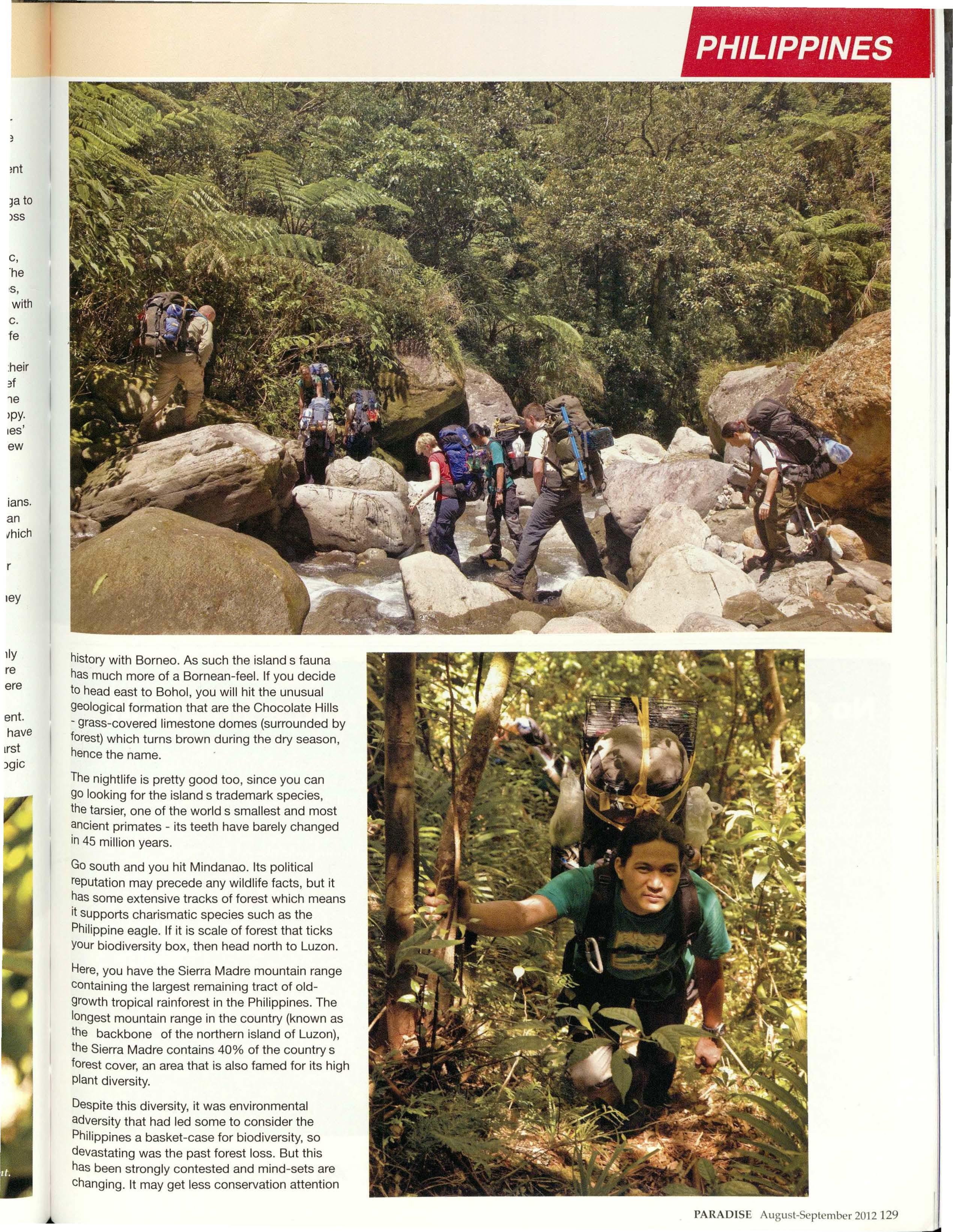
history with Borneo. As such the island s fauna has much more of a Bornean-feel. If you decide to head east to Bohol, you will hit the unusual geological formation that are the Chocolate Hills - grass-covered limestone domes (surrounded by forest) which turns brown during the dry season, hence the name.
The nightlife is pretty good too, since you can go looking for the island s trademark species, the tarsier, one of the worlds smallest and most ancient primates - its teeth have barely changed in 45 million years.
Go south and you hit Mindanao. Its political reputation may precede any wildlife facts, but it has some extensive tracks of forest which means it supports charismatic species such as the Philippine eagle. If it is scale of forest that ticks Your biodiversity box, then head north to Luzon.
Here, you have the Sierra Madre mountain range containing the largest remaining tract of oldgrowth tropical rainforest in the Philippines. The longest mountain range in the country (known as the backbone of the northern island of Luzon), the Sierra Madre contains 40% of the country s forest cover, an area that is also famed for its high Plant diversity.
Despite this diversity, it was environmental adversity that had led some to consider the Philippines a basket-case for biodiversity, so devastating was the past forest loss. But this has been strongly contested and mind-sets are changing. It may get less conservation attention

than its neighbours, but it is a mega-diverse country, one of select group holding the bulk of the world s biodiversity and thus a global priority.
This is supported by the renaissance of research, recovery and discovery, with several new species discovered every year for the past ten years or more.
The recent news is awashed with new species findings. From new frog species on Leyte
al
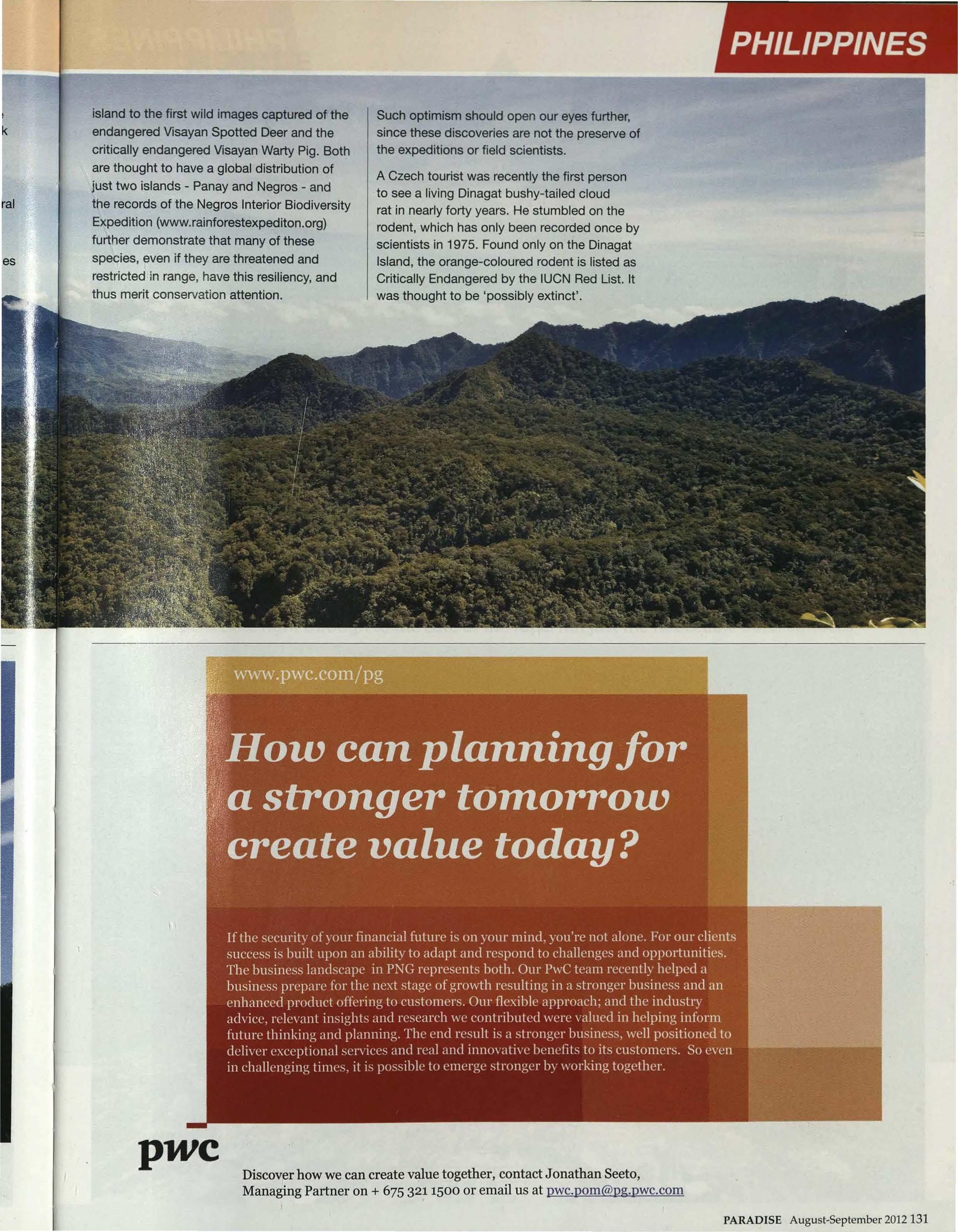
island to the first wild images captured of the endangered Visayan Spotted Deer and the critically endangered Visayan Warty Pig. Both are thought to have a global distribution of just two islands - Panay and Negros - and the records of the Negros Interior Biodiversity Expedition (www.rainforestexpediton.org) further demonstrate that many of these species, even if they are threatened and restricted in range, have this resiliency, and thus merit conservation attention.
Such optimism should open our eyes further, since these discoveries are not the preserve of the expeditions or field scientists.
A Czech tourist was recently the first person to see a living Dinagat bushy-tailed cloud rat in nearly forty years. He stumbled on the rodent, which has only been recorded once by scientists in 1975. Found only on the Dinagat Island, the orange-coloured rodent is listed as Critically Endangered by the IUCN Red List. It was thought to be 'possibly extinct'.
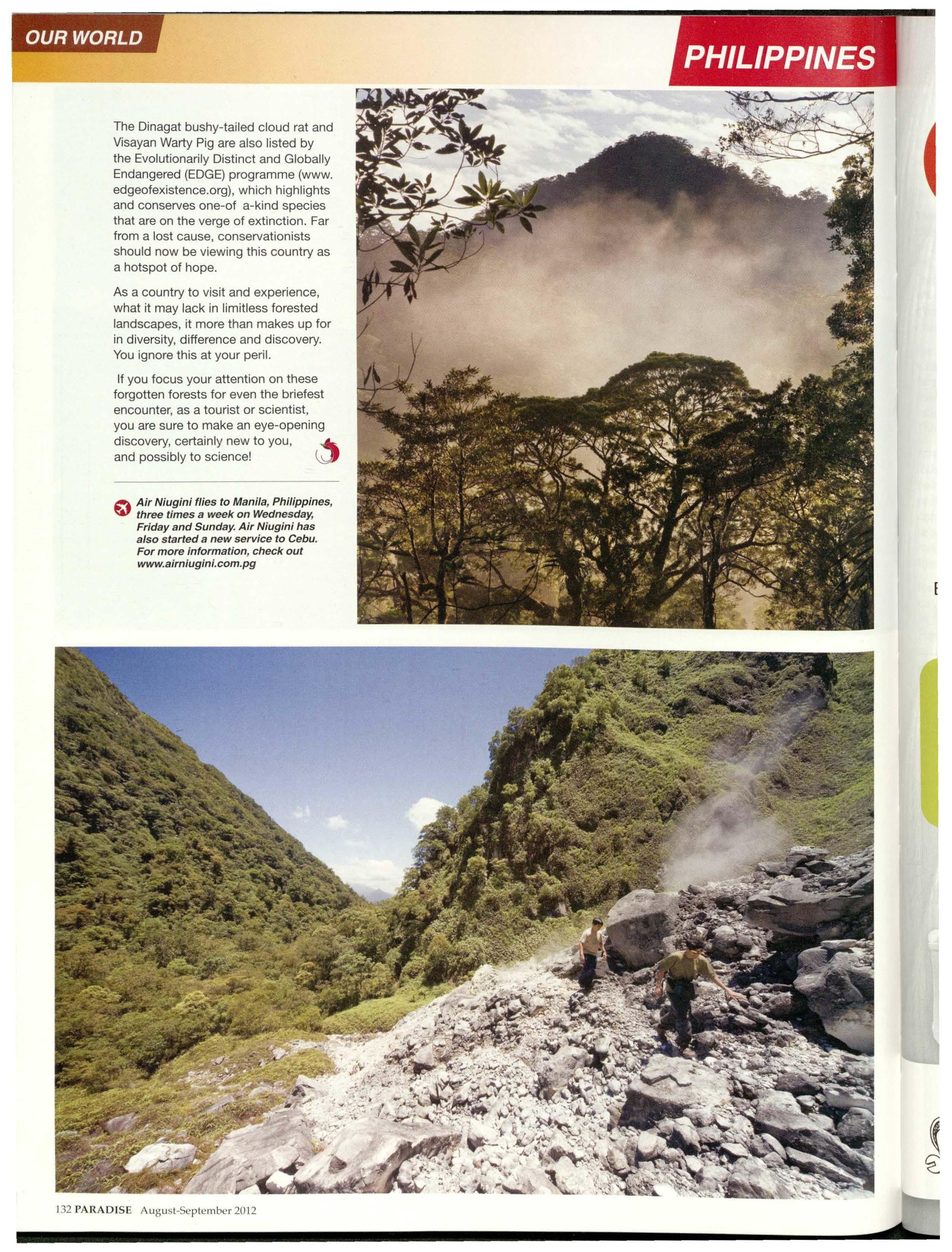
The Dinagat bushy-tailed cloud rat and Visayan Warty Pig are also listed by the Evolutionarily Distinct and Globally Endangered (EDGE) programme (www. edgeofexistence.org), which highlights and conserves one-of a-kind species that are on the verge of extinction. Far from a lost cause, conservationists should now be viewing this country as a hotspot of hope.
As a country to visit and experience, what it may lack in limitless forested landscapes, it more than makes up for in diversity, difference and discovery. You ignore this at your peril.
If you focus your attention on these forgotten forests for even the briefest encounter, as a tourist or scientist, you are sure to make an eye-opening discovery, certainly new to you, and possibly to science!
l!!!'P,J,.Air Niugini flies to Manila, Philippines, three times a week on Wednesday, Friday and Sunday. Air Niugini has a/so started a new service to Cebu. For more information, check out www.airniugini.com.pg
• Fibre Core Wire Core Non spin ropes
Bishop Brothers now offers an on-site lubrication service to ensure your wire rope can last longer and work harder. The unit is fully mobile and easy to set up. The pressure lubricator ensures lubricants penetrate right through to the core of the rope, not just the noticeable outer surface.

• I
Failure to lubricate ropes will cause corrosion and friciton, this will shorten the life of wire ropes.
Bishop Brothers uses environmentally friendly lubricants such as Lanotech (lanolin based), ensuring superior lubrication as well as being non-toxic to the environment.
BY JOHN BORTHWICK
"Theypronouncethis place 'Cans'· as In 'beer cans'.It's an Aussyblowke'sjoke." TheAmerican "bi ke" at the next table in CalmsIs speaking Ith someauthority.Hiswife asks "Thename of that furry animal of theirs has go to be a joke, too. What do they call It - a wham-butt?,:
We provide cost effective and practical design solutions
• Suppliers of Capral Building Systems Residential Window & Shower - Wardrobe Doors Commercial
• Suppliers of Fletcher Aluminium Commercial & Door Systems
• Glass Specialist - cut to size service
• Manufacture and Installation service
• 30 Years proven performance

• Authorised Dorma Automatic Door Suppliers & Installers
I leave the phonetic fate of Cairns, wombats and our blokey-jokey ways to the visitors and head north. My first stop soon sees me floating up from the coast to Kuranda - no, I haven't ingested the local mushrooms.
This is the view from the Skyrail Rainforest Cableway as it levitates us 550 metres upand seven and a half kilometres across - into the McAlister Range. The rainforest of the Wet Tropics World Heritage area stretches as far as we can see, its ridges rising like ocean swells clad in giant kauris and strangler figs. This, I imagine, is how the eagle sees.
For much of the 20th century, Port Douglas was almost a myth on a map - somewhere so far north and so humid that eggs soft-boiled themselves on the shelf. Which made the place rather appealing to the dropouts of the 1970s. They drifted by, dropped in and bought up.
After a brief, opulent flowering in the late 80s, just as suddenly, Port settled back to being a fishing-and-tourist town located on a pretty inlet beside the Coral Sea. The sidewalk cafes and beer gardens around Port's main drag, Macrossan Street, today draw both millionaires and ferals , but palm trees are still the only high-rise allowed.
Next morning, I board the wave-piercer catamaran Quicksilver for its high-speed skate to the edge of the universe, the outer Barrier Reef.

Thesidewalkcafesand beer gardensaround Port's main drag, MacrossanStreet, todaydraw both millionairesand "ferals11 , but palm trees are still the only high-riseallowed.

I pull on a mask and scuba tank and soon find myself face-to-face with the denizens of the largest living thing on earth. Confronted with the reef's living filigree of 350 varieties of coral and 500 species of darting fish, I'm lost for words as someone with a breathing regulator stuck in his mouth should be.
In June 1770, James Cook didn't find the reef quite so enchanting. With his Endeavour "stuck and stuck fast" on the coral, he didn't have to think hard about how to name the cape off which he was stranded - Tribulation.
Today, "Cape Trib", along with the Daintree River and its World Heritage wilderness, is part of a holy trinity of tropical pilgrimage sites for many North Queensland visitors.
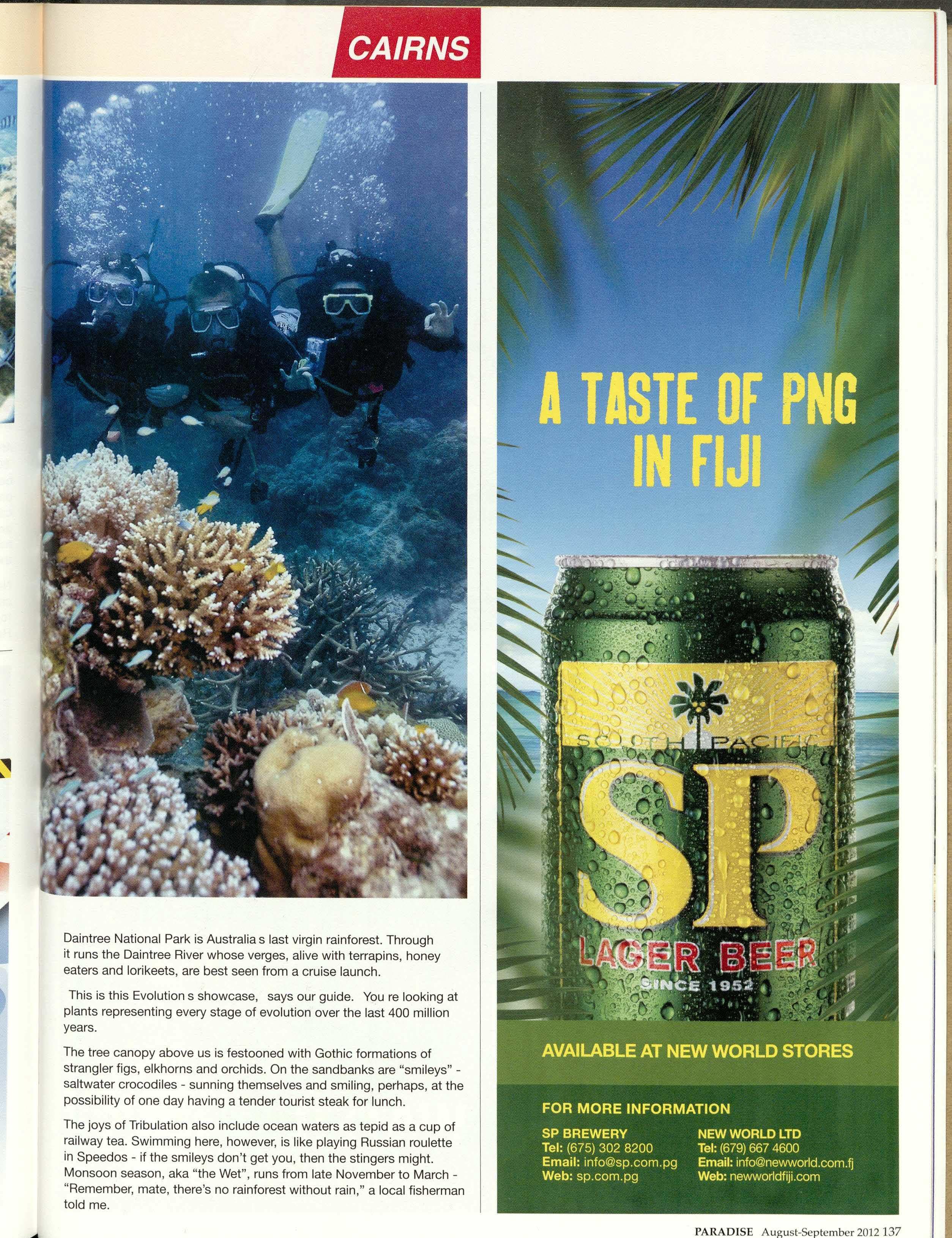
Daintree National Park is Australia s last virgin rainforest. Through it runs the Daintree River whose verges, alive with terrapins, honey eaters and lorikeets, are best seen from a cruise launch.
This is this Evolution s showcase, says our guide. You re looking at plants representing every stage of evolution over the last 400 million years.
The tree canopy above us is festooned with Gothic formations of strangler figs, elkhorns and orchids. On the sandbanks are "smileys"saltwater crocodiles - sunning themselves and smiling, perhaps, at the possibility of one day having a tender tourist steak for lunch.
The joys of Tribulation also include ocean waters as tepid as a cup of railway tea. Swimming here, however, is like playing Russian roulette in Speedos - if the smileys don't get you, then the stingers might. Monsoon season, aka "the Wet", runs from late November to March"Remember, mate, there's no rainforest without rain," a local fisherman told me.
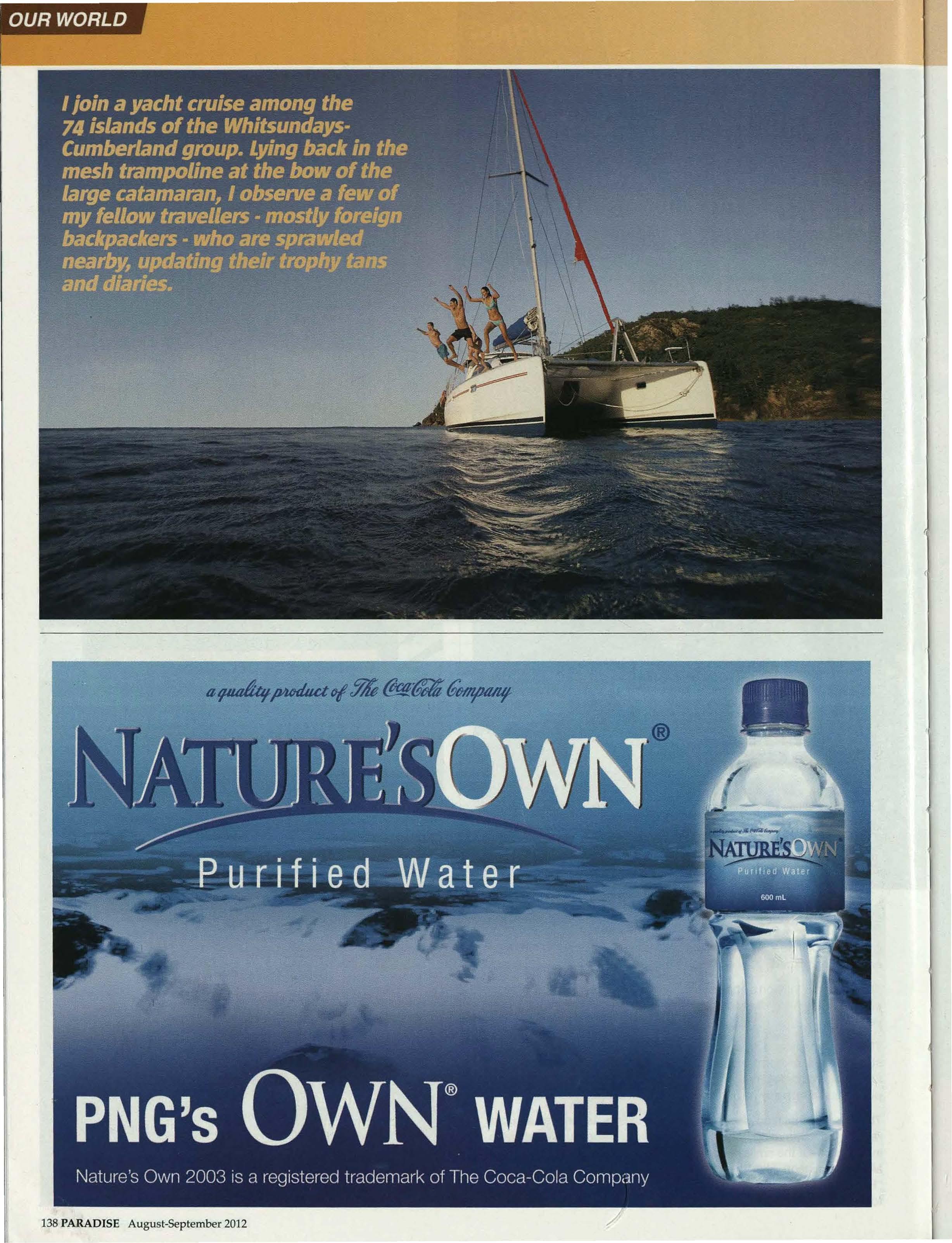
During this time there are marine stingers in the coastal waters. The cooler months - April to Octoberare the most comfortable and the sea is free of stingers.
I head south to the Whitsunday Islands. Here, the sands of the celebrated Whitehaven Beach are so talc-white and pure that they look like a horizontal version of the Pearly Gates. An hours sail to the south is another world, Hamilton Island.
Jet-skis carve their wakes in the blue of its Catseye Bay; meringuefrocked brides are deployed, literally pretty as a picture before a postcard chapel and photographer; chartered yachts disappear towards far horizons from which they II return in three days or weeks.
IThe great convenience of the
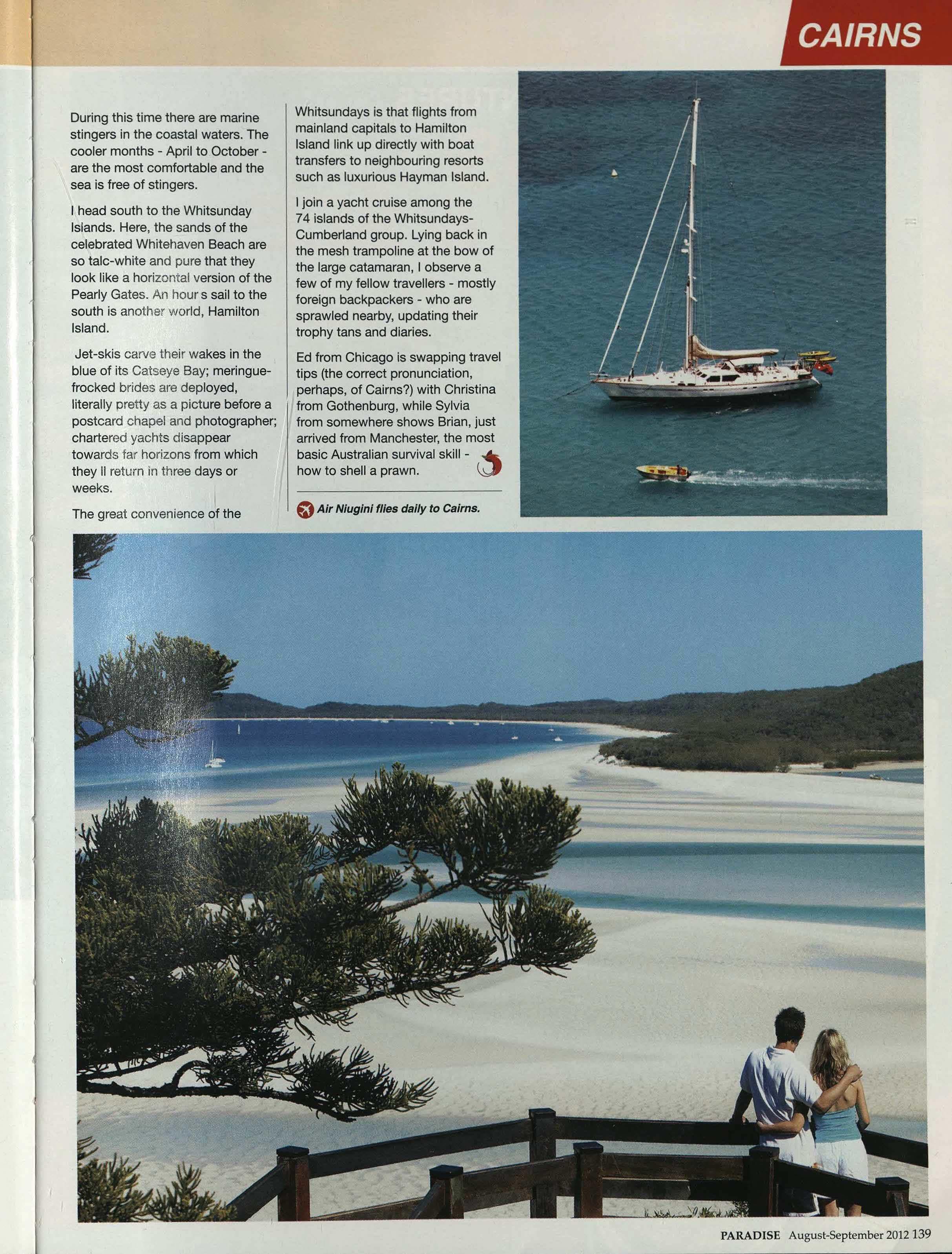
Whitsundays is that flights from mainland capitals to Hamilton Island link up directly with boat transfers to neighbouring resorts such as luxurious Hayman Island.
I join a yacht cruise among the 74 islands of the WhitsundaysCumberland group. Lying back in the mesh trampoline at the bow of the large catamaran, I observe a few of my fellow travellers - mostly foreign backpackers - who are sprawled nearby, updating their trophy tans and diaries.
Ed from Chicago is swapping travel tips (the correct pronunciation, perhaps, of Cairns?) with Christina from Gothenburg, while Sylvia from somewhere shows Brian, just arrived from Manchester, the most basic Australian survival skill - • how to shell a prawn. U
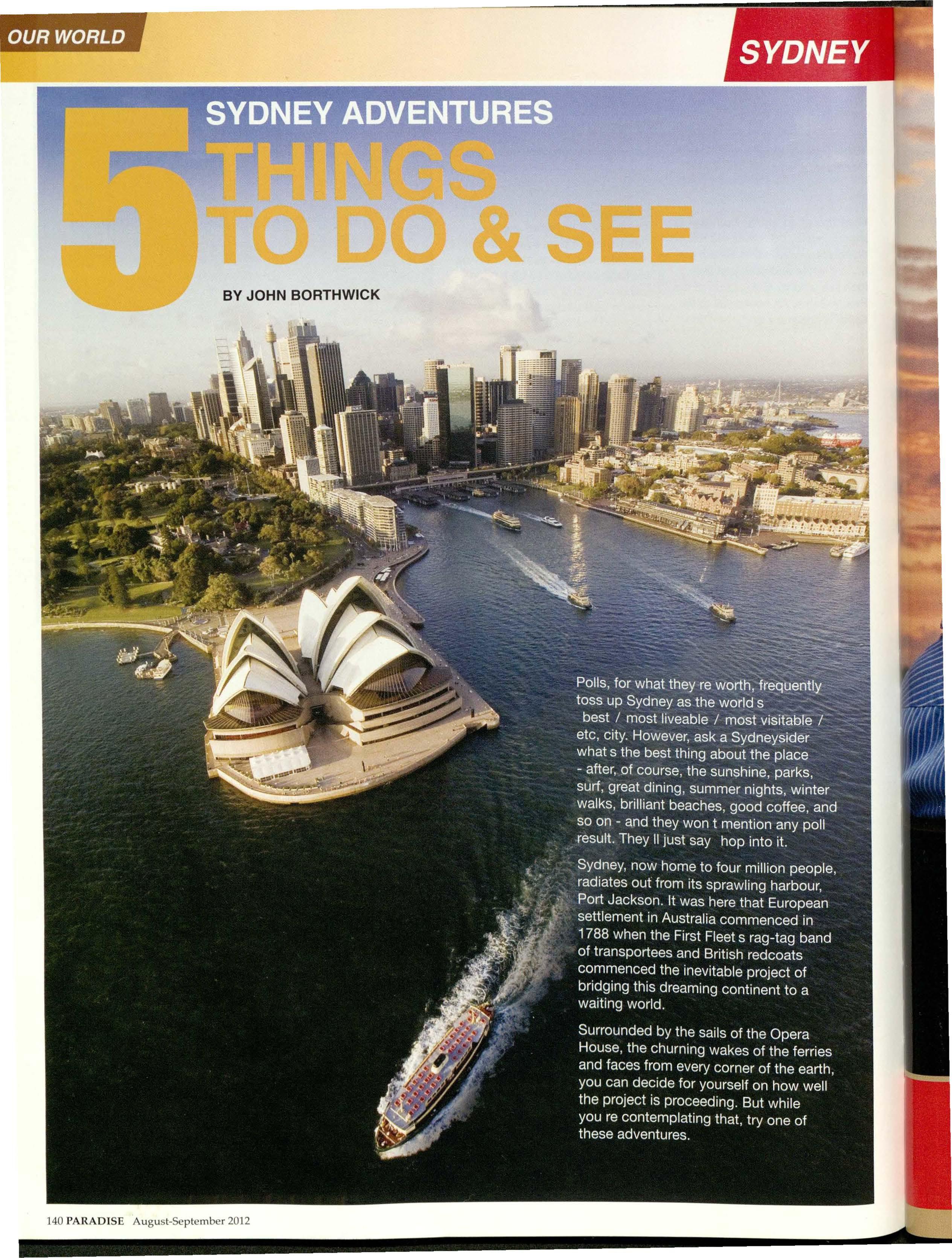
BY JOHN BORTHWICK

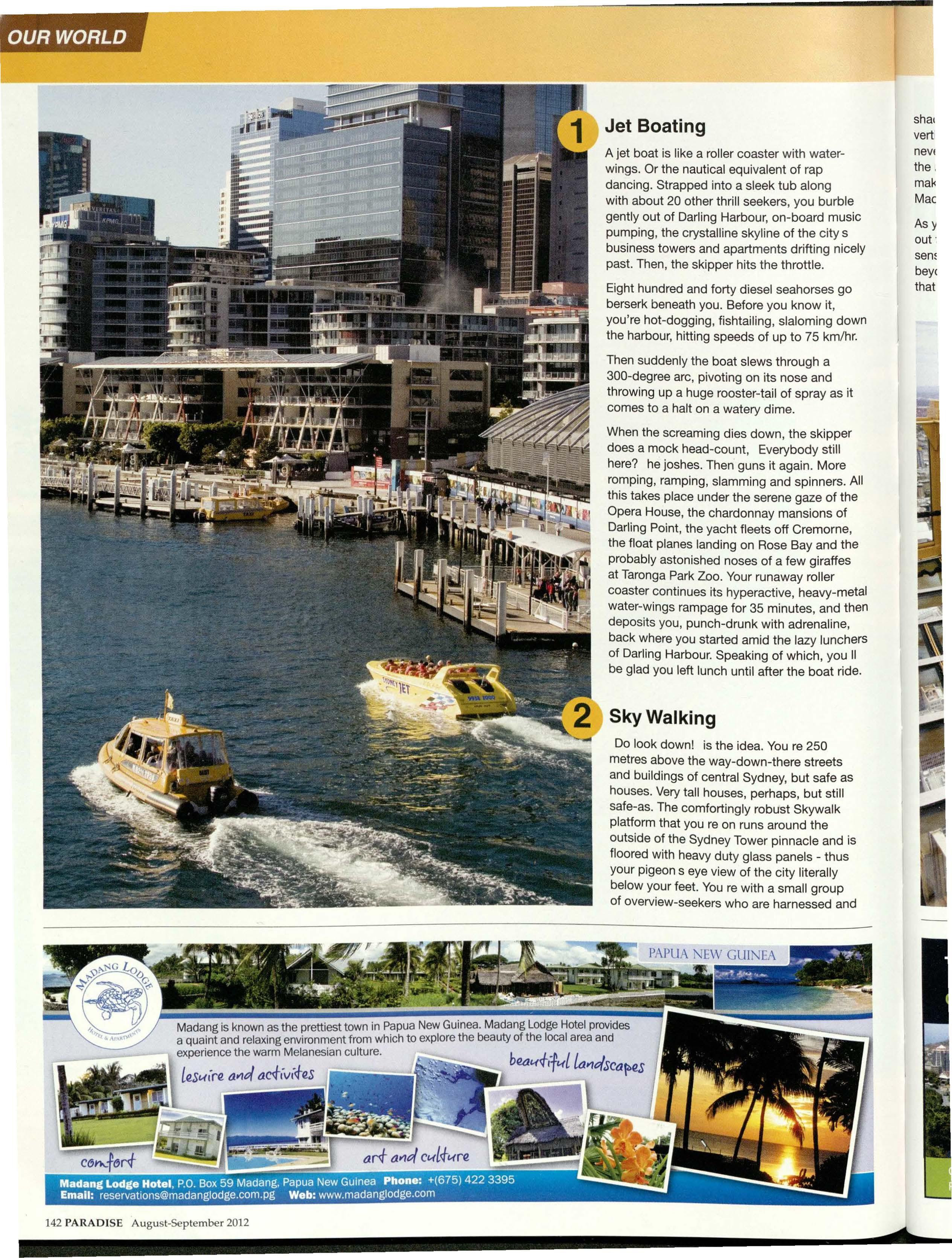
A jet boat is like a roller coaster with waterwings. Or the nautical equivalent of rap dancing. Strapped into a sleek tub along with about 20 other thrill seekers, you burble gently out of Darling Harbour, on-board music pumping, the crystalline skyline of the city s business towers and apartments drifting nicely past. Then, the skipper hits the throttle.
Eight hundred and forty diesel seahorses go berserk beneath you. Before you know it, you're hot-dogging, fishtailing, slaloming down the harbour, hitting speeds of up to 75 km/hr.
Then suddenly the boat slews through a 300-degree arc, pivoting on its nose and throwing up a huge rooster-tail of spray as it comes to a halt on a watery dime.
When the screaming dies down, the skipper does a mock head-count, Everybody still here? he joshes. Then·guns it again. More romping, ramping, slamming and spinners. All this takes place under the serene gaze of the Opera House, the chardonnay mansions of Darling Point, the yacht fleets off Cremorne, the float planes landing on Rose Bay and the probably astonished noses of a few giraffes at Taronga Park Zoo. Your runaway roller coaster continues its hyperactive, heavy-metal water-wings rampage for 35 minutes, and then deposits you, punch-drunk with adrenaline, back where you started amid the lazy lunchers of Darling Harbour. Speaking of which, you II be glad you left lunch until after the boat ride.
Do look down! is the idea. You re 250 metres above the way-down-there streets and buildings of central Sydney, but safe as houses. Very tall houses, perhaps, but still safe-as. The comfortingly robust Skywalk platform that you re on runs around the outside of the Sydney Tower pinnacle and is floored with heavy duty glass panels - thus your pigeon s eye view of the city literally below your feet. You re with a small group of overview-seekers who are harnessed and

shackled so securely to the safety rails that anyone hoping for virtual vertigo would have to ask for their money back. Luke Skywalker never had it so safe - although he might have something to say about the mandatory blue and yellow jumpsuits everyone s garbed in, making this look like a team of Swedish-flagged, sky-diving Ronald MacDonalds.
As your group slowly circumnavigates the platform, a guide points out the city s geographical, historical and cultural landmarks. With sensational 360-degree views over the city and so far - up to 55 km
beyond the harbour heads, some wiseacre is always sure to quip, Is that New Zealand out there?
One of the surprising pleasures of Sydney is the short distances between its mid-city intensity and its tranquil backwater bushlands. For example, drive just half-an-hour north of town, past Mosman, to the inelegantly but accurately named spit of sand simply called The Spit, slip into a two-person sea kayak there and with a small fleet of similarly-minded souls, paddle off for a morning s adventure around the shores of Middle Harbour. Weaving westwards amid the restless flotillas of sailboats and runabouts, you soon find yourself surveying leafy suburbs from the waterline, greeting pelicans perched on navigation markers and slipping back in time. Passing suburbs Castlecrag and Castle Cove, your little fleet pulls into an untrammelled bushland bay, part of Davidson State Recreation Area, for morning tea and biscuits, and even a swim. Back in the paddle, so to speak, you begin the homeward journey, surveying the green solitude of Bantry Bay. More pelicans. More wanna-be waterfront real estate. More yachts, skiffs, scows and nautical whatnots. Three hours after leaving - and too soon, it seems - you paddle back to The Spit. The only part of you that wants it to finish might be your arms.
On the easy bush trail from The Spit to Manly, the scenery is the real starrugged headlands, vast views, sailboats and, occasionally, a breaking bombora wave. Or very, very occasionally in winter, a migrating whale and calf. The well-marked path skirts the northern foreshores of Sydney Harbour National Park. For this nine-kilometre walk (which you can do in either direction), allow yourself up to four hours. Starting at the northeast end of the Spit Bridge, the track runs east past Clontarf, Castle Rock and Grotto Point. Almost every
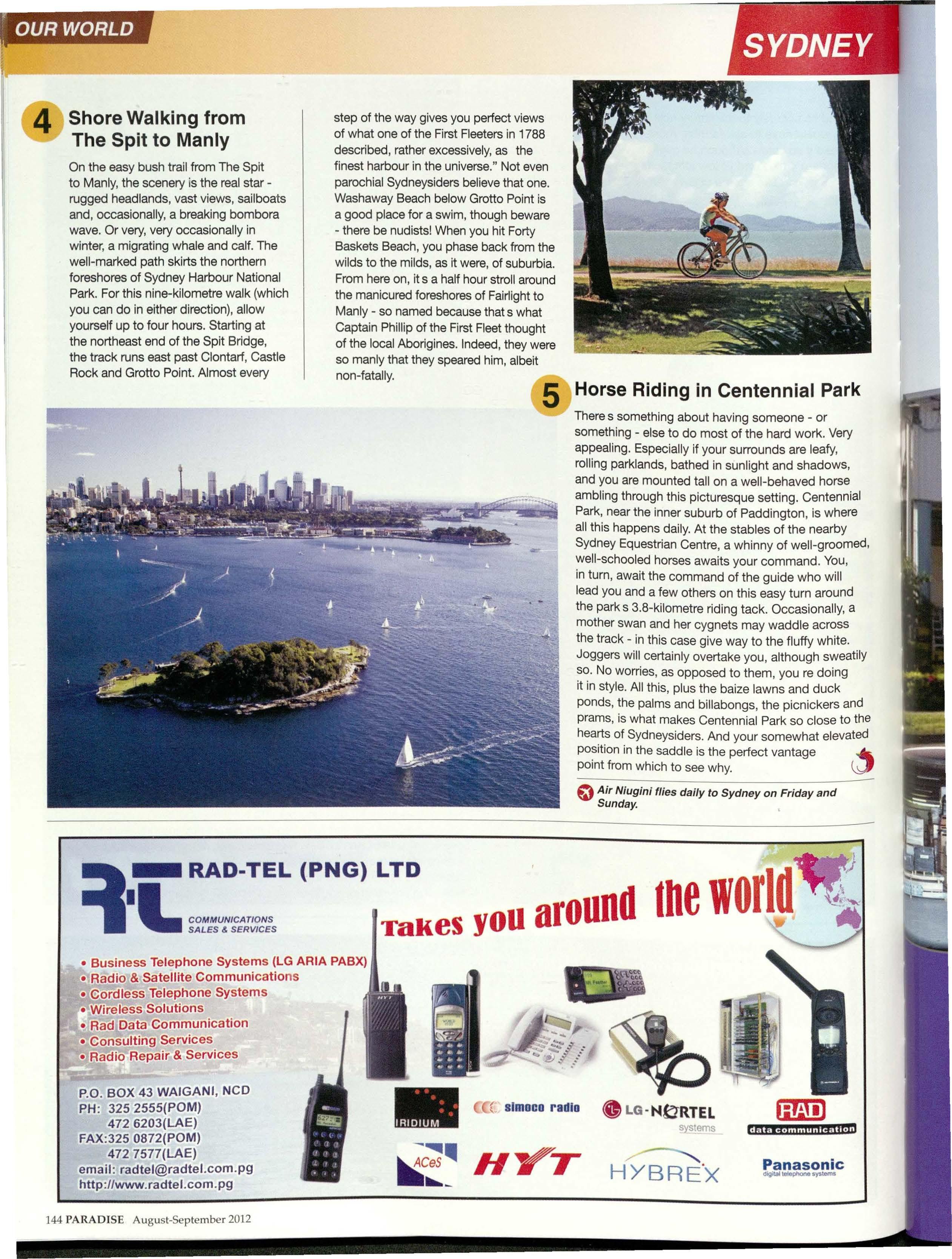
email:
step of the way gives you perfect views of what one of the First Fleeters in 1788 described, rather excessively, as the finest harbour in the universe." Not even parochial Sydneysiders believe that one. Washaway Beach below Grotto Point is a good place for a swim, though beware - there be nudists! When you hit Forty Baskets Beach, you phase back from the wilds to the milds, as it were, of suburbia. From here on, its a half hour stroll around the manicured foreshores of Fairlight to Manly - so named because that s what Captain Phillip of the First Fleet thought of the local Aborigines. Indeed, they were so manly that they speared him, albeit non-fatally.
There s something about having someone - or something - else to do most of the hard work. Very appealing. Especially if your surrounds are leafy, rolling parklands, bathed in sunlight and shadows, and you are mounted tall on a well-behaved horse ambling through this picturesque setting. Centennial Park, near the inner suburb of Paddington, is where all this happens daily. At the stables of the nearby Sydney Equestrian Centre, a whinny of well-groomed, well-schooled horses awaits your command. You, in turn, await the command of the guide who will lead you and a few others on this easy turn around the parks 3.8-kilometre riding tack. Occasionally, a mother swan and her cygnets may waddle across the track - in this case give way to the fluffy white. Joggers will certainly overtake you, although sweatily so. No worries, as opposed to them, you re doing it in style. All this, plus the baize lawns and duck ponds, the palms and billabongs, the picnickers and prams, is what makes Centennial Park so close to the hearts of Sydneysiders. And your somewhat elevated position in the saddle is the perfect vantage point from which to see why.
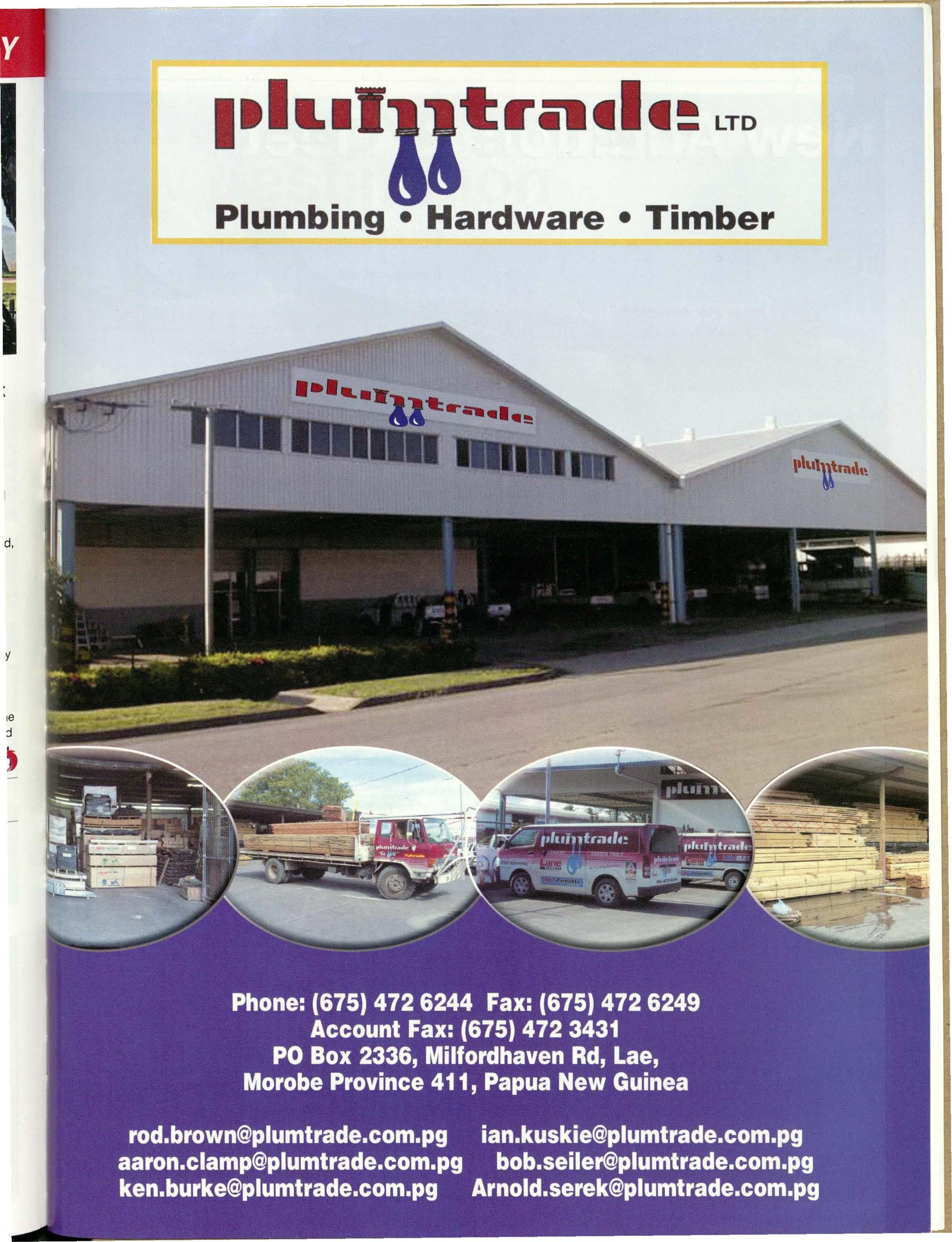
AIR NIUGINI S LATEST AIRCRAFT in the fleet, 8737-700, arrived in Port Moresby on Wednesday July 11, 2012.
This brings the fleet to 22 including Dash 8-100/200/300 series, 0400, Fokker 100 and Boeing 767 aircraft.
The 8737-700, under the PNG registration P2-PXD,has 120 seats - 16 business class and 104 economy class seats.
The aircraft will initially operate from Port Moresby to Sydney, Brisbane and Cebu (Philippines).
Special livery
The 8737-700 aircraft carries a special livery commemorating the 70th anniversary of the Kokoda campaign.

Each year, Air Niugini flies hundreds of trekkers from Sydney, Brisbane and Cairns to Port Moresby to experience the track.
For many trekkers, their first experience of Papua New Guinea is when they board an Air Niugini flight.
The livery showing the Owen Stanley Ranges where the Kokoda campaign began on the aircraft is Air Niugini's acknowledgement and recognition of this important event in the country's history.
Air Niugini believes this aircraft will create unprecedented awareness for Papua New Guinea in Australia and other parts of the world that it operates to.
CEBU IN THE PHILIPPINES became the 10th international destination on Air Niugini s network with an inaugural service on July 16.
The twice weekly service between Port Moresby and Cebu will be on Tuesday and Thursday.
The new route will allow for easy and direct travel for Filipinos involved in the PNG-LNG project as well as those employed in the fisheries .._ sector and other related activities in PNG.
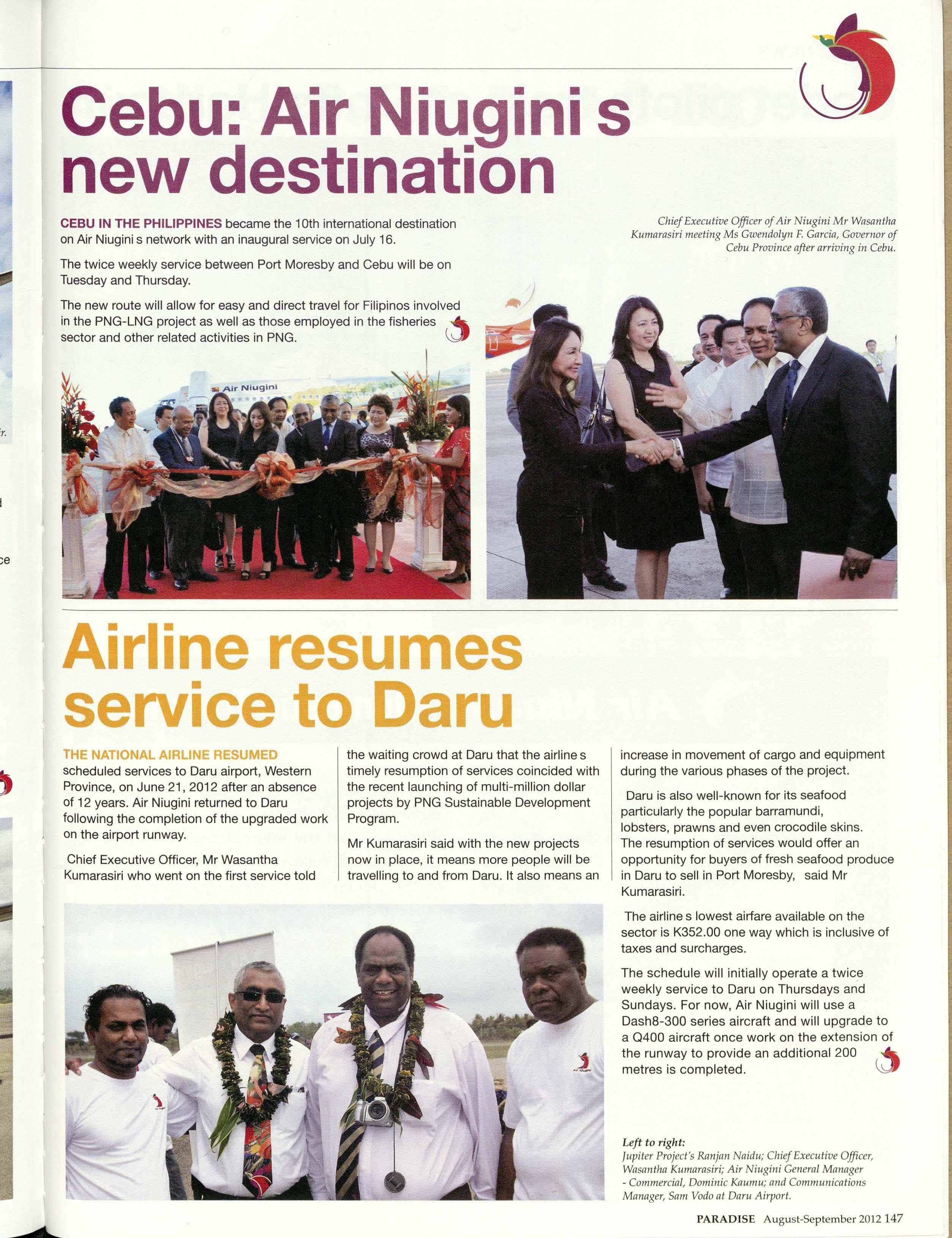
THE NATIONAL AIRLINE RESUMED scheduled services to Daru airport, Western Province, on June 21, 2012 after an absence of 12 years. Air Niugini returned to Daru following the completion of the upgraded work on the airport runway.
Chief Executive Officer, Mr Wasantha Kumarasiri who went on the first service told
the waiting crowd at Daru that the airlines timely resumption of services coincided with the recent launching of multi-million dollar projects by PNG Sustainable Development Program.
Mr Kumarasiri said with the new projects now in place, it means more people will be travelling to and from Daru. It also means an
increase in movement of cargo and equipment during the various phases of the project.
Daru is also well-known for its seafood particularly the popular barramundi, lobsters, prawns and even crocodile skins. The resumption of services would offer an opportunity for buyers of fresh seafood produce in Daru to sell in Port Moresby, said Mr Kumarasiri.
The airlines lowest airfare available on the sector is K352.00 one way which is inclusive of taxes and surcharges.
The schedule will initially operate a twice weekly service to Daru on Thursdays and Sundays. For now, Air Niugini will use a Dash8-300 series aircraft and will upgrade to a 0400 aircraft once work on the extension of the runway to provide an additional 200 .._, metres is completed.
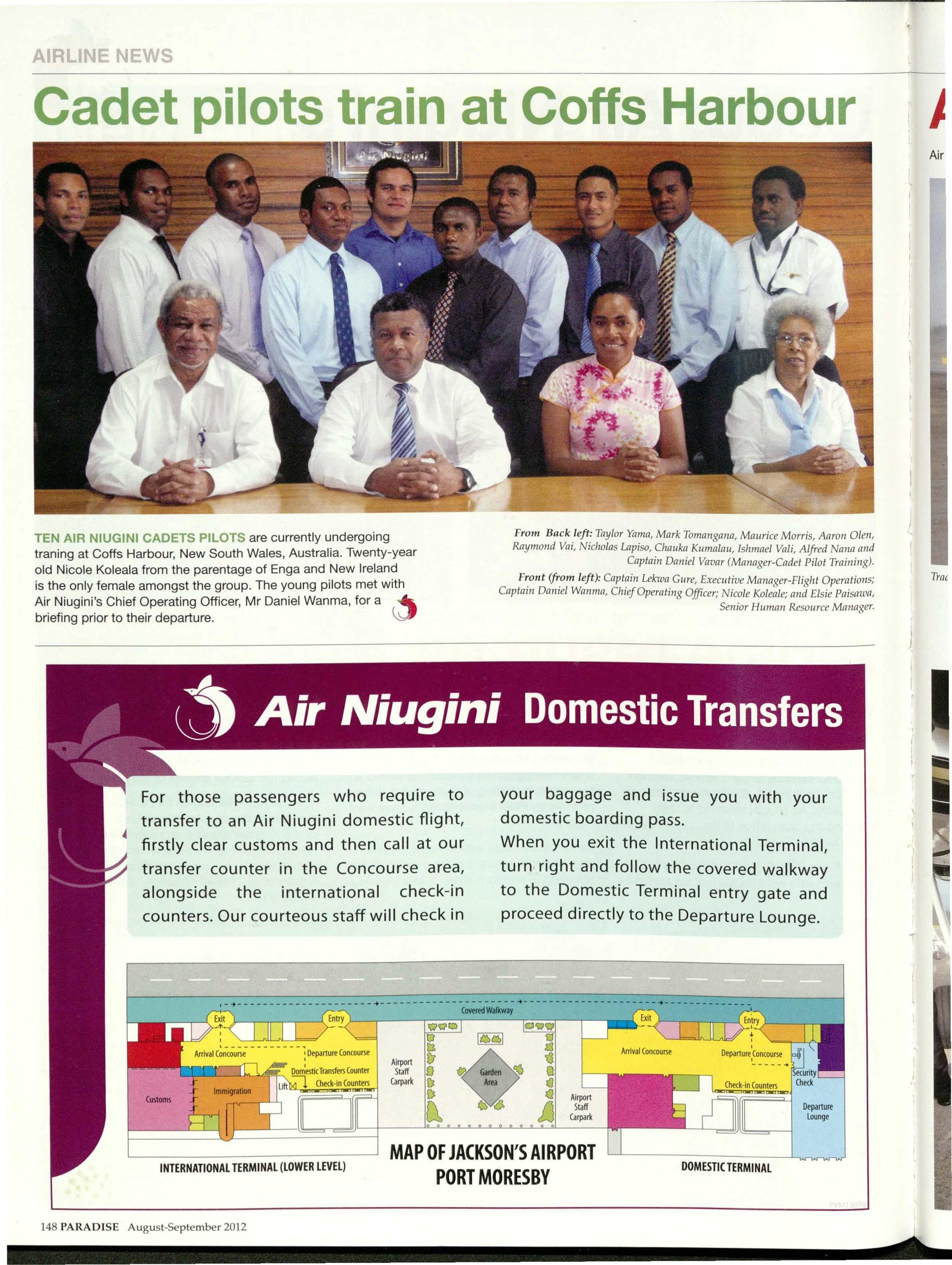
TEN AIR NIUGINI CADETS PILOTS are currently undergoing traning at Coffs Harbour, New South Wales, Australia. Twenty-year old Nicole Koleala from the parentage of Enga and New Ireland is the only female amongst the group. The young pilots met with Air Niugini's Chief Operating Officer, Mr Daniel Wanma, for a -4&. briefing prior to their departure.
For those passengers who require to transfer to an Air Niugini domestic flight, firstly clear customs and then call at our transfer counter in the Concourse area, alongside the international check-in counters. Our courteous staff will check in
your baggage and issue you with your domestic boarding pass.
When you exit the International Terminal , turn, right and follow the covered walkway to the Domestic Terminal entry gate and proceed directly to the Departure Lounge.
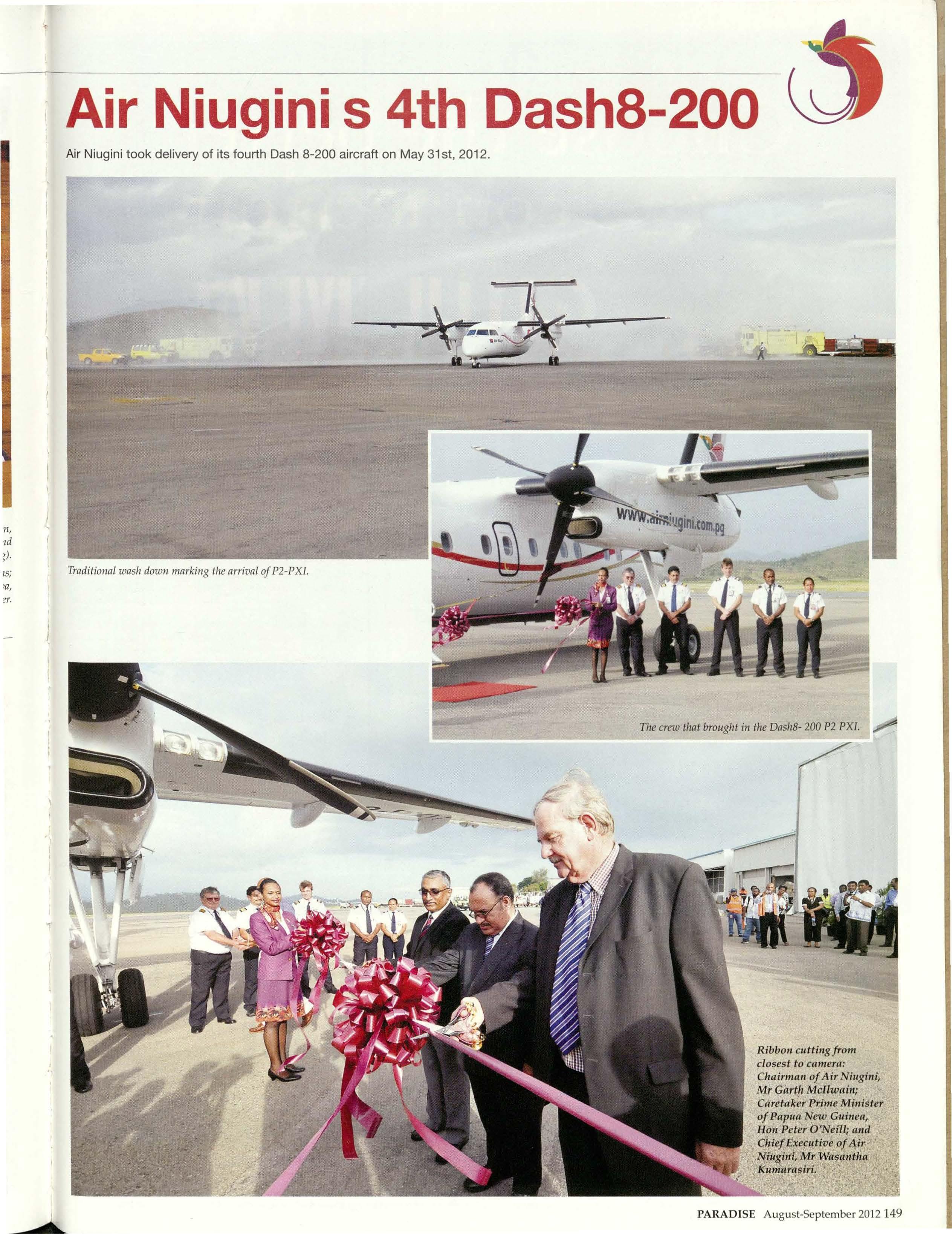
Air Niugini took delivery of its fourth Dash 8-200 aircraft on May 31st, 2012.
